HEIGHT SAFETY BOOK



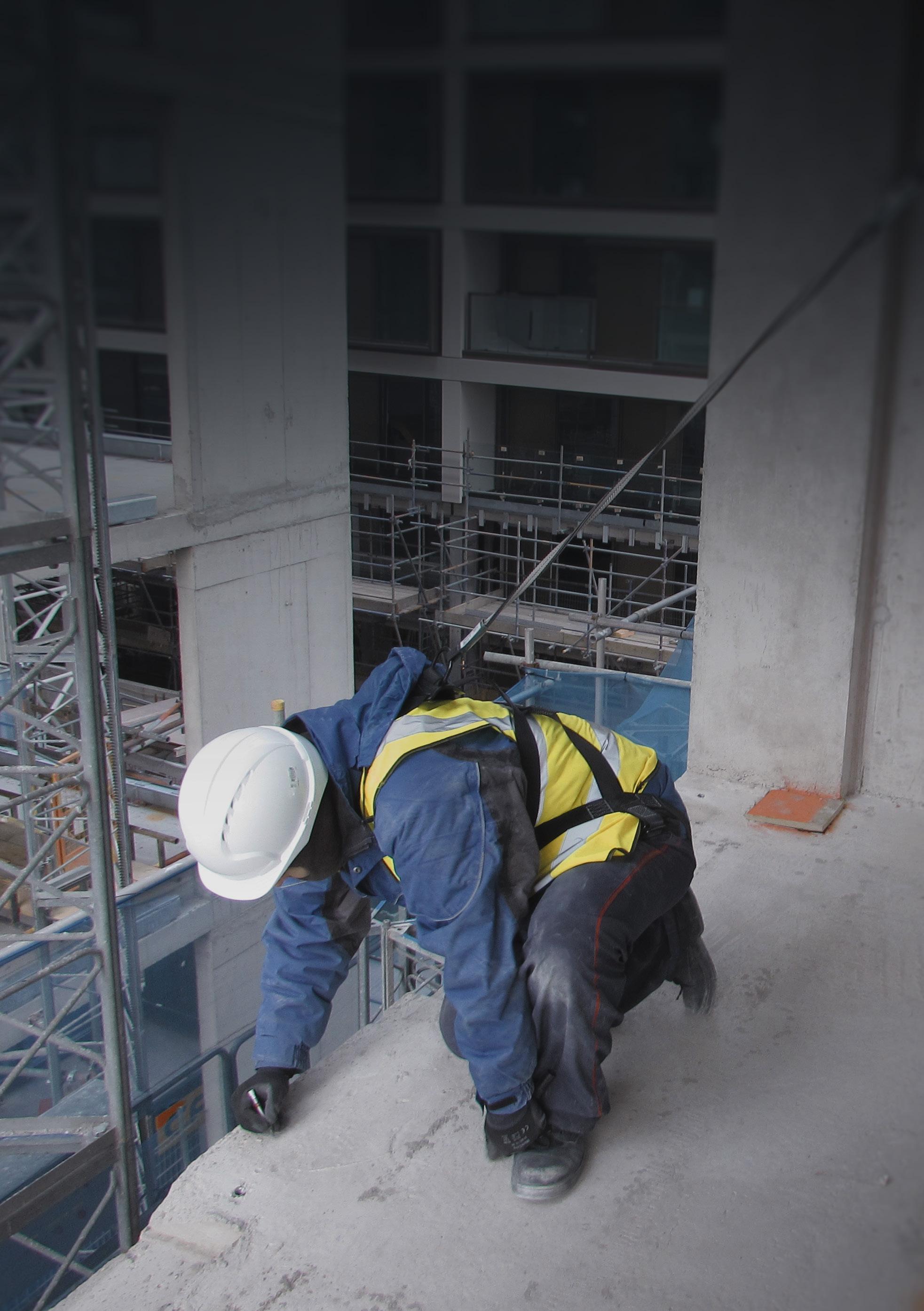

The history of work at height is a testament to the people who put their lives on the line every day. Unsafe methods, carelessness, poor equipment... It’s no surprise accidents involving height were (and still are) the biggest cause of death in the workplace. Determined to make a difference we set off on a mission to save lives and change the face of an industry.
Fast forward over a decade and we’re still working tirelessly in the fight against gravity. We’ve come a long way since the early days and gained an incredible team of experts in work at height, access solutions and product design who continue to innovate and deliver hand-crafted high-end height safety equipment and training courses to individuals and international giants alike, all from our headquarters in Hertfordshire. Now part of the Enfield Safety family, Leading Edge is more than a company. It’s an ethos. A symbol of integrity, ingenuity and excellence. That’s why thousands of people all over the world choose us for their height safety training and equipment every year. Come and be part of the journey.

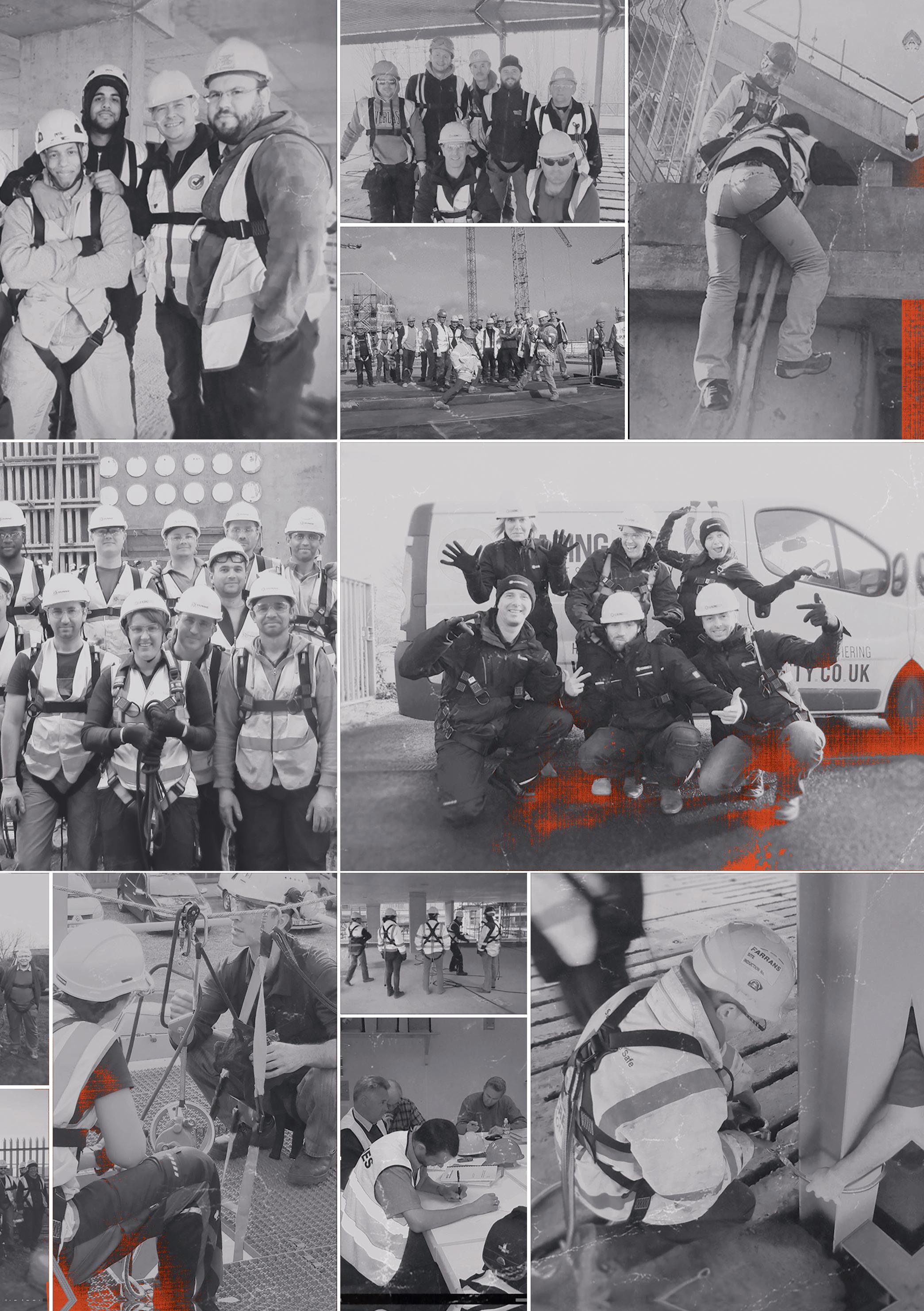


As a UK based height safety training provider and manufacturer, Leading Edge supplies only services and equipment that fully comply with the standards, regulations and claims made relating to those products and services. Monitored through our BSIF membership, maintained through our ISO accredited standards and backed up by supplier qualification schemes... all combining to underpin an industry leading product range.

Being a training provider and safety product manufacturer helps us to understand the relationship between workers, work methods, equipment suitability and performance in ways other companies can’t. Whatever height access challenge you face, we draw from a wide range of technical expertise to help you find the very best access solutions.
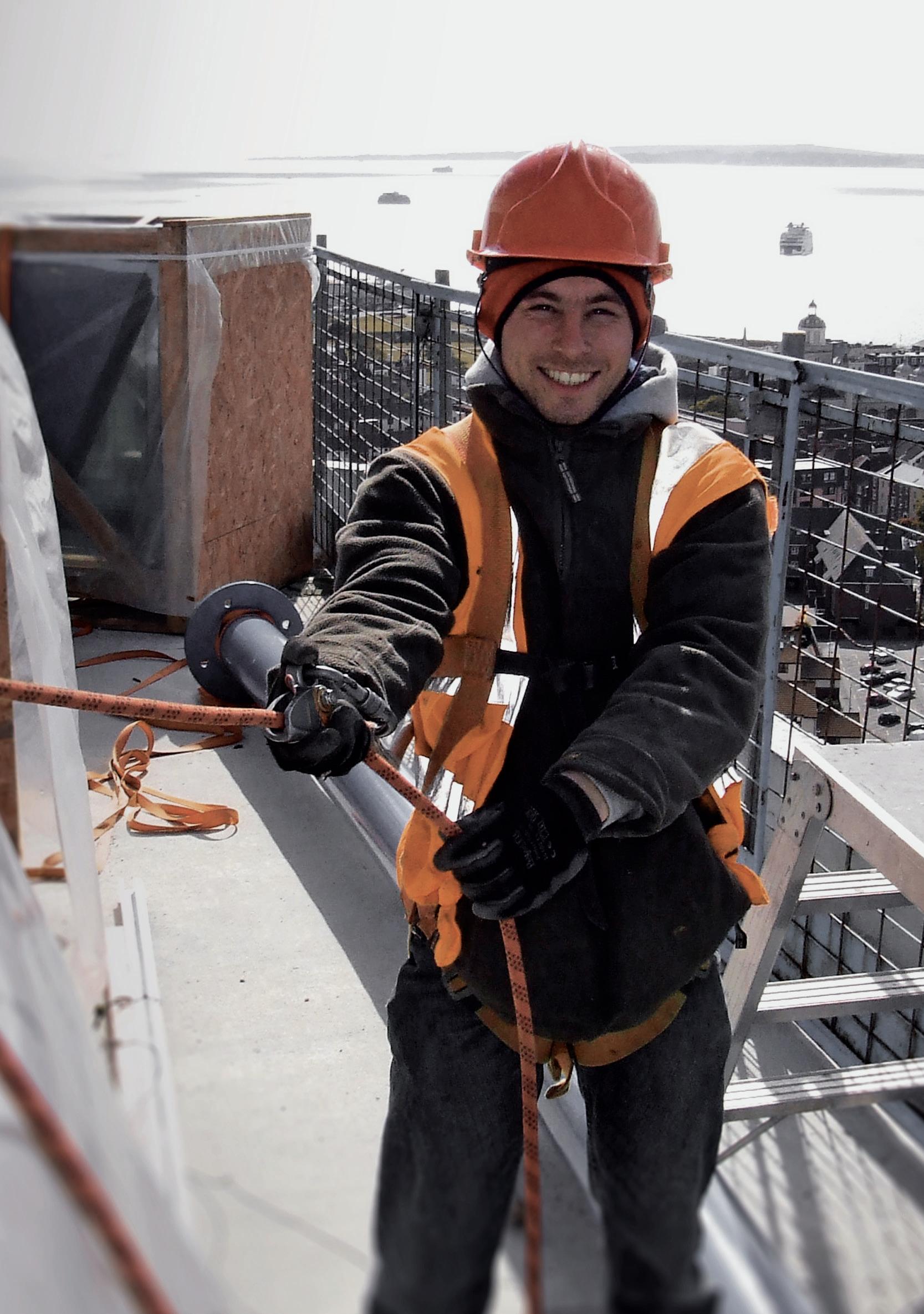
At Leading Edge we’re more than a product manufacturer. First and foremost we’re a specialist height safety company. That means we design word-class safety-critical height safety equipment solutions. If you or your employees work at height here’s a few reasons you’ll love Leading Edge products.
All Leading Edge products are in conformity with the provisions of REGULATION (EU) 2016/425
Engineered with Safe Working Loads that exceed minimum requirements.
Every item serialised and logged – for complete traceability of your equipment.
All items come certified with a ‘EU Declaration of Conformity’.


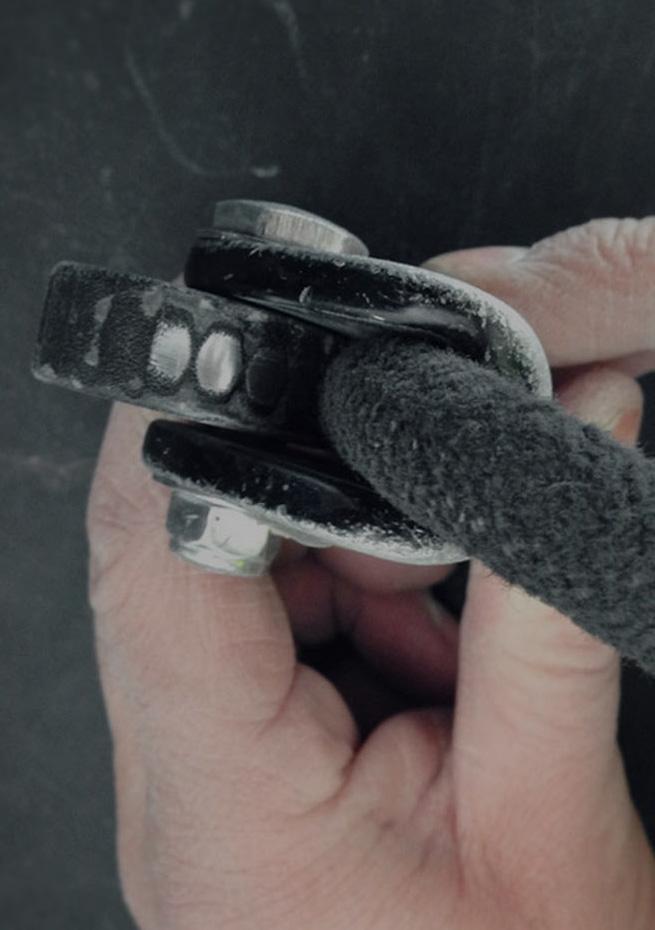
It would be simple to outsource production but to make things right we knew we had to make them ourselves. So we took the harder path. We built our own factory. Hired our own team. Took responsibility for every step from the moment raw materials land until your order leaves. Any products that are made outside of the factory are to a specific design brief and rigorously inspected. It wasn’t easy, but the net result is a level of workmanship and reliability we feel proud to put our name on.
Nothing is faster or more accurate than a CNC table for preparing intricate material pieces. That’s why we nest and laser cut the fabric component. It means our sewing team have perfect base materials to work from every time — and it raises the overall quality of our products!

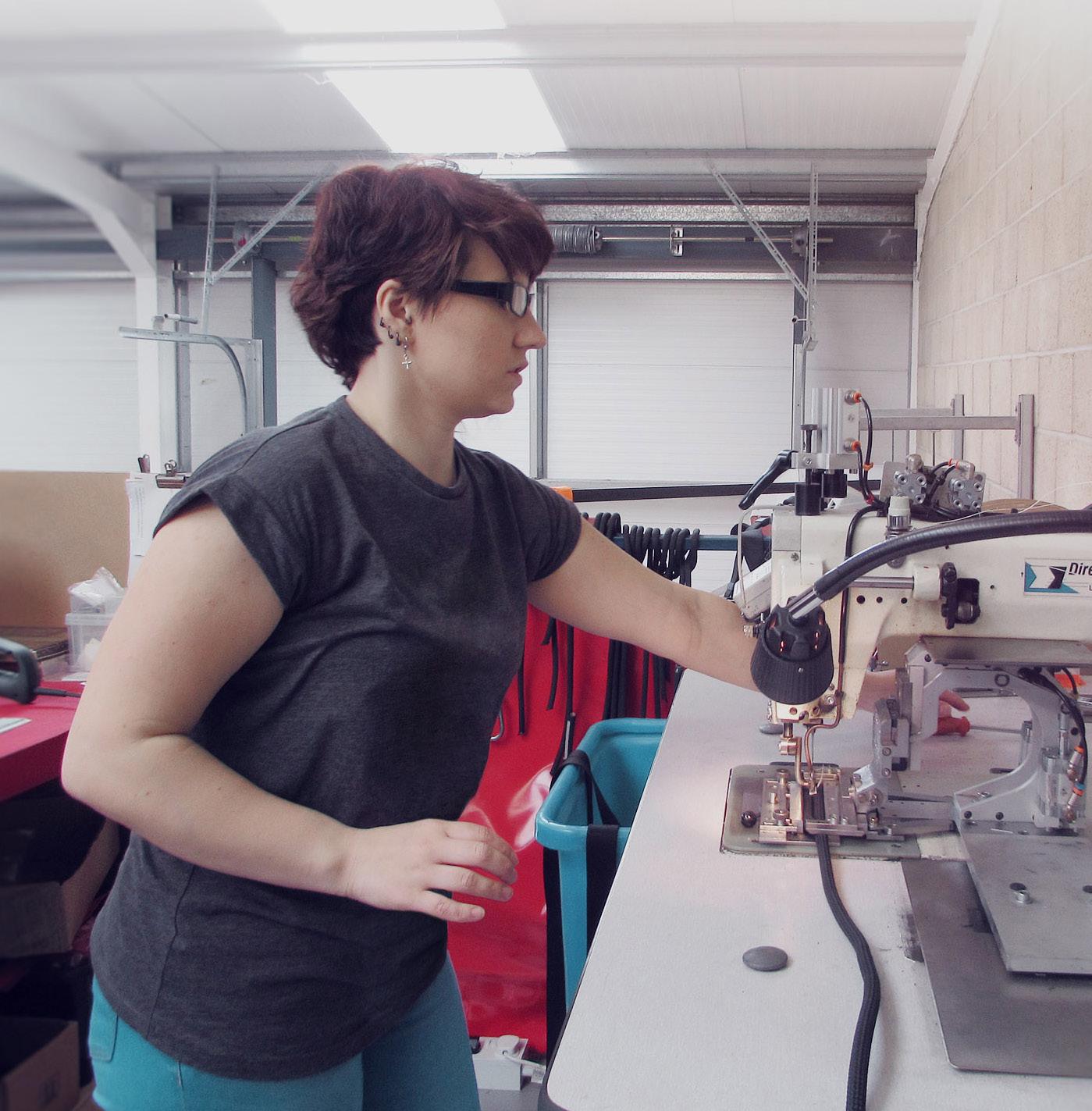
Prepped with laser sharp precision.
Our sewing team are the heart and soul of production at Leading Edge. From the UK we sourced the best talent we could find. Their hard work, attention to detail and teamwork make it possible for us to consistently deliver the highest standards in safety-critical manufacturing.

Many of our products feature high quality non-fabric materials and metal components. It’s all painstakingly constructed by hand. That might be more work for us, but in the end every item gets a level of care that eliminates fail-rates associated with automated production.




We don’t just deliver a course. We work together to find the right work methods and equipment to take your team to the edge — based entirely on your personal needs and access requirements.
Sit a course at our offices in Hertfordshire or book us on-site and we’ll come to you with all the necessary equipment to deliver training. From Lands End to John O’Groats we can get you trained, wherever you are!

We bring our own projector, screen, laptop, props and bags full of equipment to deliver lessons. We just need somewhere to teach. So if you’re booking a course on your site the only thing we need is a training room and practice location that can hold the appropriate number of people.

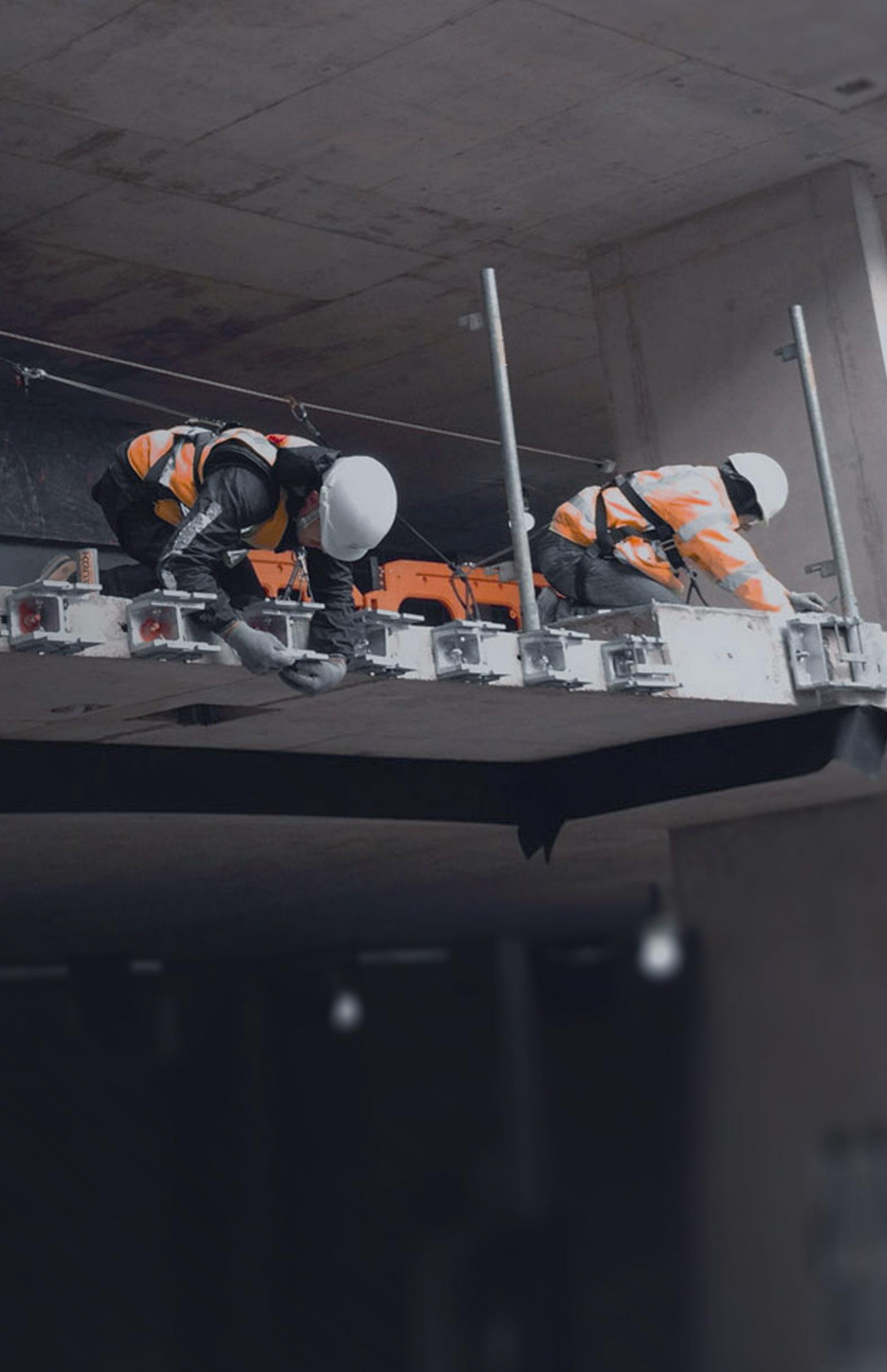
Thousands of people choose Leading Edge training every year. And it’s not just because relevant all relevant government bodies and industry recognise our courses. But it helps to know you’ll be awarded with license IDs and certificates you can rely on to prove your competence.

After your training you need to prove your competency. To do that you’ll sit a detailed multiple-choice exam that shows us you’ve absorbed everything you’ve been taught. The test papers are taken back to HQ and independently marked by a third party — and that’s how we guarantee your certification meets the necessary legal requirements.

The best time to make mistakes is when your instructor is there to identify and correct them. That’s why we have the safety net of a practical assessment after your theory exam. Your instructor will observe you setting up and using your equipment and show you where you’re going wrong. So, once we leave you’ll have no doubts about your ability to use height access systems safely.
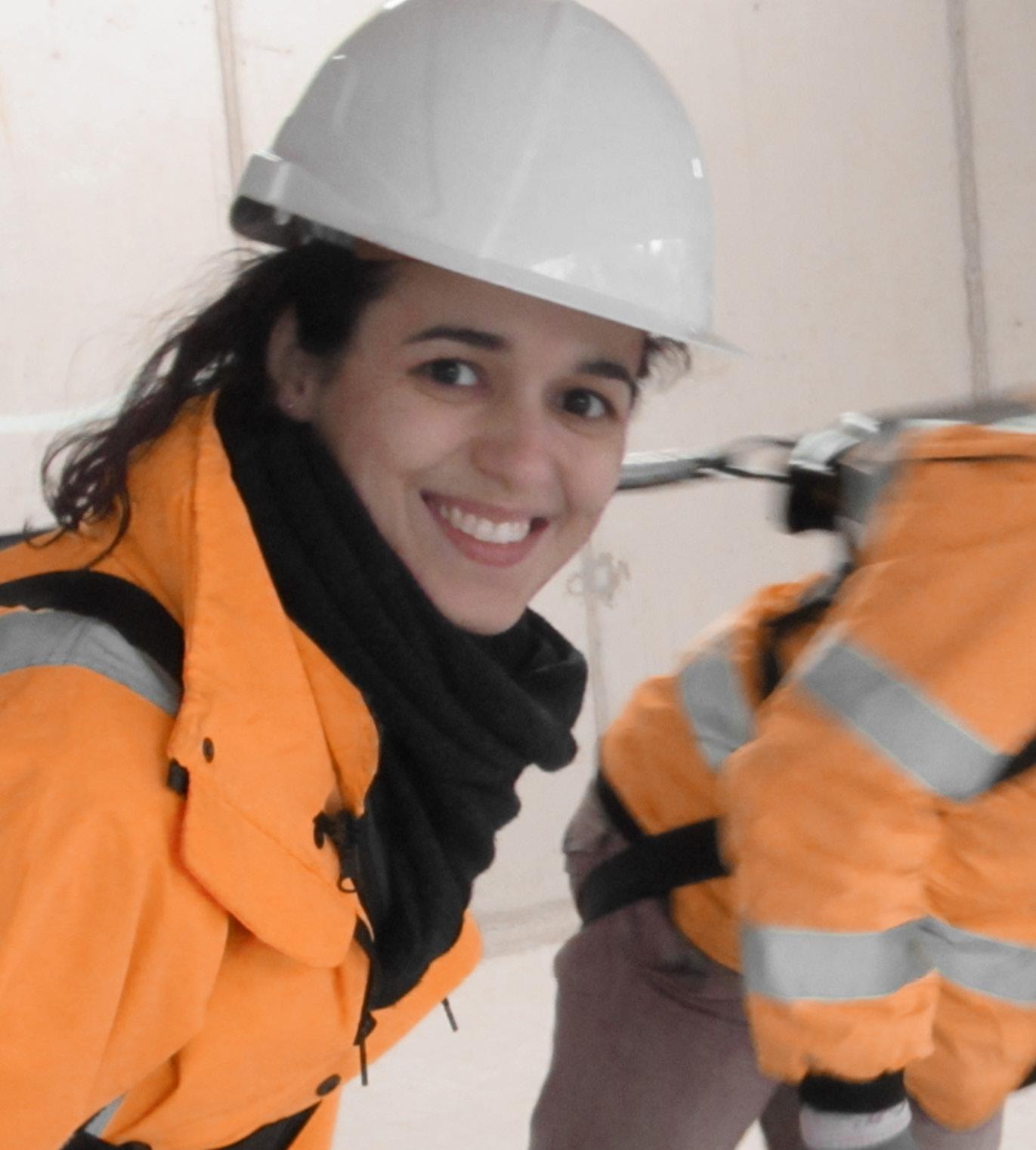
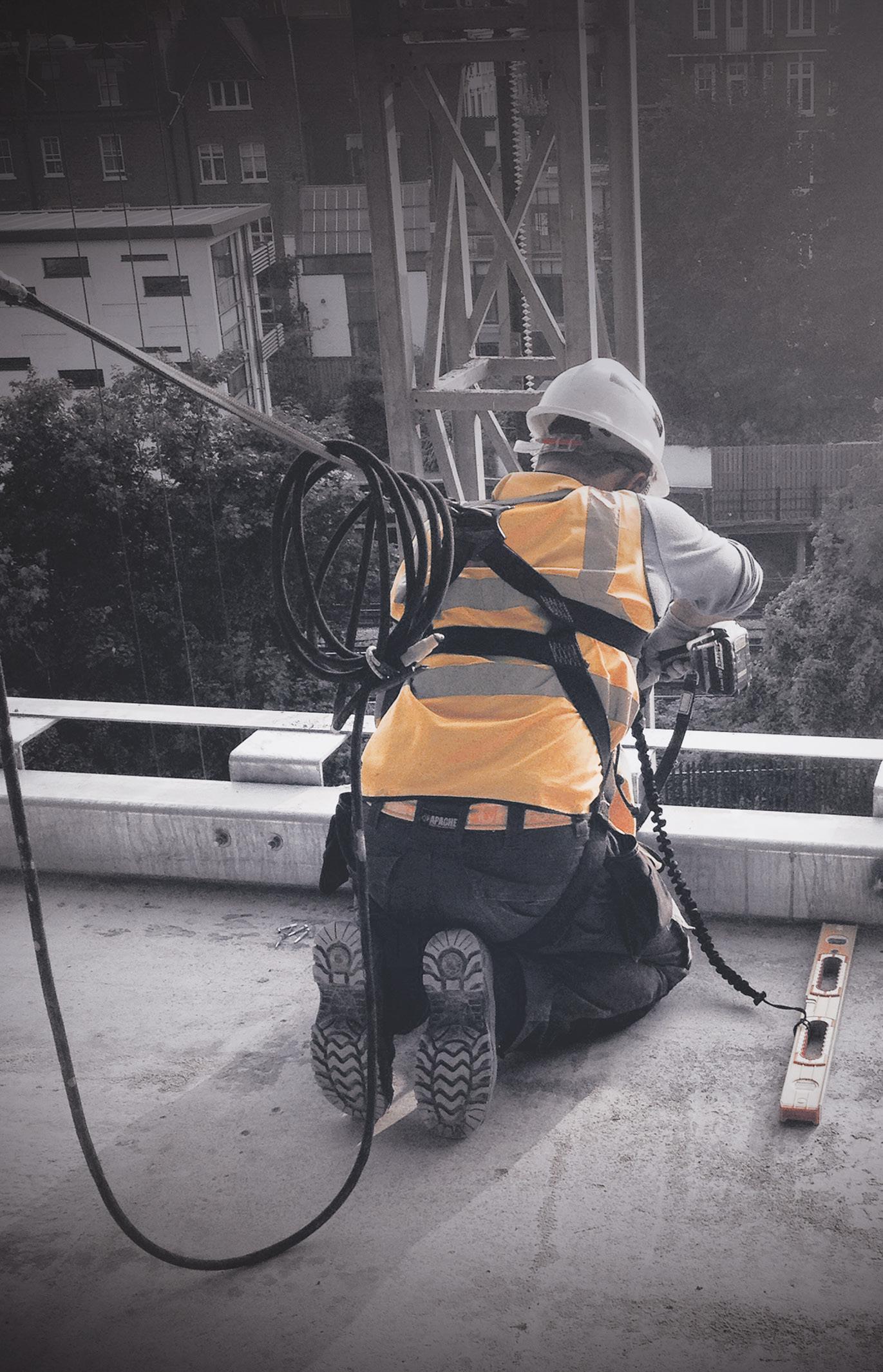

“I thought I knew all about working at height but I have learnt a lot more today.”
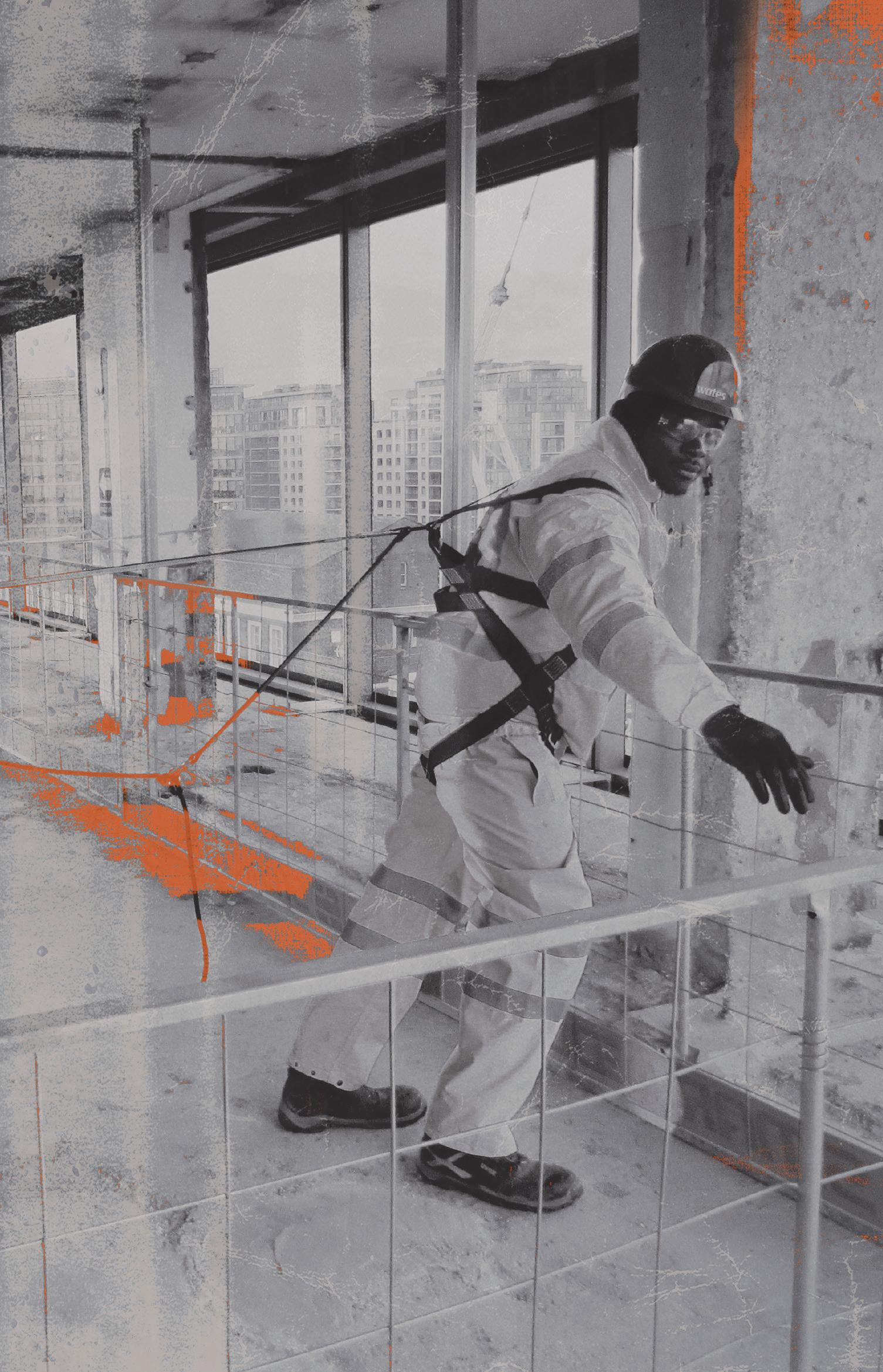
Work at height principles apply to everyone. But we all work in different ways. So, Leading Edge courses are flexible. Choose a Trade Sphere when you book your Working At Height course and we’ll customise it with information, imagery, equipment and exercises that relate directly to your specific trade or application.
Gain a height access solution for any general industry that requires protection from edge exposure in the workplace. This includes, but is not limited to, theatre, marine, public building access, industrial units, manufacturing and infrastructure services etc. The course typically provides a wide skill-set to work in many situations, however if you have a specific general industry trade not covered by our spheres, have a word with our instructors. We’ll help you find a bespoke solution and customise the course to suit your personal needs.

Leading Edge Work is a generalist sphere suited to construction workers exposed to a variety of edges, or those with multiple job roles requiring a broad knowledge of height safety principles and practices. While we aim to cover an assortment of working at height techniques to access multiple edges across horizontal and vertical planes, the course is also highly adaptable. So if you have a construction trade not covered by other spheres pick this one and our instructors will tailor the course around your specific height access requirements.

Whether you’re operating roof machinery and cranes, traversing gantries and walkways or climbing racking, working at height in factories and warehouses exposes you to a wide range of fall hazards. To cover your bases we’ll give you the broad skill set to solve the variety of height access challenges you face on a daily basis. By the end of the course you’ll be confident in your ability to set up and operate appropriate equipment for the prevention of slips, trips, falls and pendulum in the factory and warehouse environment while climbing.
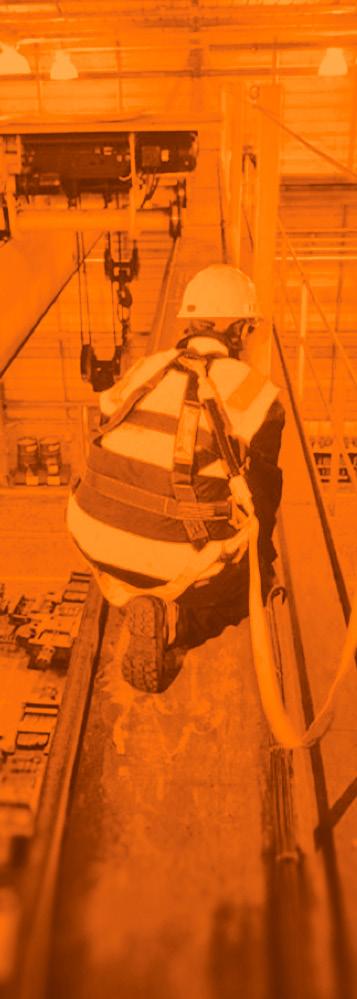

Learn how to access and traverse a spectrum of machines and plants including cranes, diggers, excavators and dozers. As a plant and machinery operator working close to the ground poses specific challenges, as many work at height protection systems require a minimum fall distance to engage. To solve this you’ll learn how to utilise two systems in unison; a primary fall restraint system backed up with a secondary pendulum prevention system. The combination maintains mobility while ensuring ultimate fall safety at any height with plants and machinery.
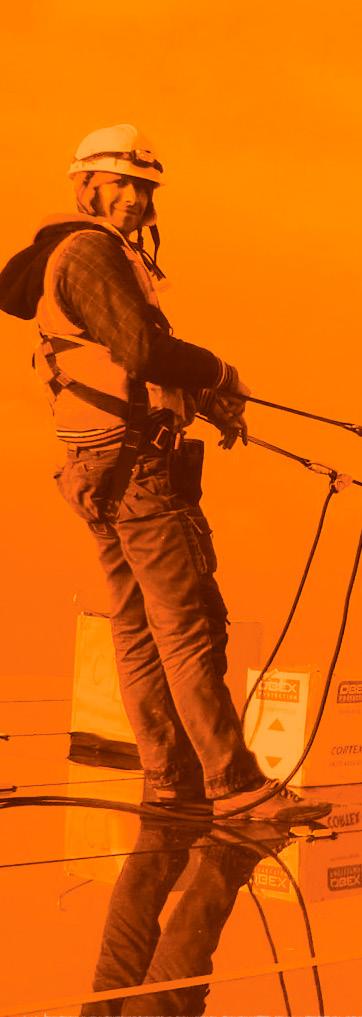
Get the skills to work on all types of flat and pitched roofs. Whether they be glass atrium’s, new builds, asphalt, membrane, concrete, profiled metal or tiled, you’ll learn how to use existing roof systems, select anchorage locations and adopt temporary measures when permanent ones are unavailable. You’ll also discover restraint and adjustable restraint systems to gain safe access to one or multiple edges and learn a variety of more advanced techniques such as the use of lifelines and Mansafe Systems for increased mobility and intermediate attachments for multi-user support on roof edges.
Petrochemical and refinery work means accessing complex structures such as chimney stacks, pipe racks, steel frames, vessels, tanks, walkways, gantry’s and fixed ladders. You’ll learn how to assess your level of edge exposure, identify and select appropriate anchorage points and employ fall protection systems to gain access to these structures, utilising both front and rear connections on twopoint harnesses for maximum mobility across horizontal and vertical planes. Everything you need to conduct work at height in the Petrochem/refinery industry.

Working with industrial ladders creates two distinct hazards: users falling from ladders and ladders slipping away from underneath users themselves. Thankfully the technology and work methods exist to stop this happening. You’ll learn how to gain safe short duration access using industrial ladders, adjustable restraint systems and stabilisers to prevent slips, moving or falling. Finally you’ll explore positioning aids for hands free work in fixed and variable locations along the side of a building for total ladder safety.
As a scaffolder it’s not enough to throw on a harness and hope for the best. It needs to be worn correctly in conjunction with the right fall protection systems. The problem is it’s easy to use the wrong lanyards — you feel safe but if you’re working below the minimum required fall distance, you’ll hit the floor before protection engages. To keep you safe you’ll discover how to use fall arrest and fall restraint systems relative to your working height, and learn how to use adjustable lanyards correctly in twin configuration for 100% tie-off whilst manoeuvring on a scaffold.


As a facade worker you need access to large leading edges for the installation of cladding, glazing. To do this you’ll learn how to select and use suitable anchorage locations and devices, and cleverly employ multiple adjustable restraint systems to give you localised or total perimeter edge access. We’ll also show you how to safely access hard-to-reach corners and support multiple operatives across a wide working area by adopting specialised practices like lifeline bending and intermediate attachments.


Concrete structures pose two particular height safety challenges: multiple open edges around progressively expanding decking, and infill exposure between table forms. The good news is there are several access solutions available to you. Whether working with Alsipercha, lifelines or inertia reels, we’ll show you how to safely utilise rebar for anchorage points and employ any of these three protection systems to access and complete your concrete frame work safely, efficiently and with personal confidence.
Work at height in demolition is highly unpredictable. Structural integrity is uncertain and strip-outs expose you to fall hazards from removed walls, floors and partial deconstruction. To gain safe access in challenging and constantly changing environments you’ll learn how to scan your work area for safe anchor points, make use of bracing, doorways and windows, and adopt temporary height access solutions such as Man Anchors when a fixed structure is unfit to use. Think on your feet, adapt and prevent the risk of accidents at height on a demolition site.
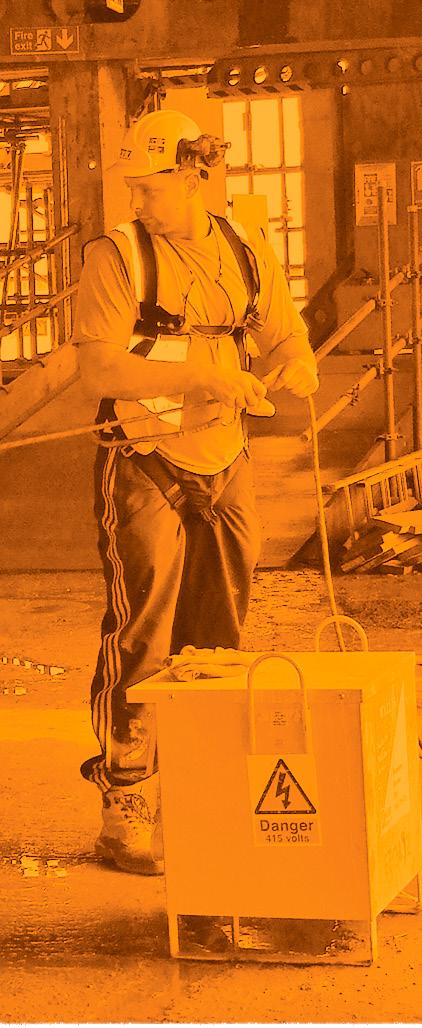
Precast puts you at permanent risk of a fall from straddling gaps and working with progressively extending leading edges while installing planks and floor panels. To stay safe we’ll show you how to identify and set-up suitable anchorage and give you the equipment and methods you need to work around intricate edges as the build takes place. We’ll also explore more advanced techniques required to access precast elements such as stairwells to give you a complete skill set required for the precast industry.




“We’re amazed how much we learnt. We’re already booking management courses.”

Theory is the first step on the road to competency in height safety. There’s a lot to learn: legislation, control measures, equipment performance and work methods — the list goes on. Sound daunting? We understand. That’s why we’ve broken down everything you need to know into digestible modules. They’re easier to absorb, so if certain topics concern you more than others we can adapt to keep information relevant and be as deep or as brief as you need.
Foundations lays the groundwork for your training. We’ll discuss course objectives and prime you with essential background knowledge on the subject of height safety, covering the basics of why we need it, the devastating effects falls have on individuals, families and businesses and your general legal responsibilities and duties. By exploring historical references, statistics and legislation we’ll paint — in real terms — a picture of where we are today, how far we’ve come and how far we still have to go to make the work place a safe place.
As a manager or employer you have strict legal responsibility to keep your workforce safe at height. But while the WAH Regulations and British Standard exist for everyone’s benefit, extensive jargon-filled documents are daunting and difficult for non-legal professionals to understand. Thankfully we do all the heavy lifting to pull out the clauses that are relevant to you and explain them one-by-one in layman’s terms, helping you understand how to comply with the law and prevent unknowingly exposing yourselves and your team to the possibility of future legal repercussions.
To have a meaningful discussion about height safety we need a clear picture of the terminology and work methods fundamental to all work at height. They fall into three distinct categories: Fall Arrest, Work Positioning and Fall Restraint. In DEP we break down and deliver detailed definitions of all three methods, demystifying what they mean, how they function, the equipment that comprise them and the various ways in which they can be utilised in a height access solution.
Before work at height can begin each task must be assessed for risk and appropriate safety measures should be placed where needed. To do this we’ll utilize the Hierarchy of Control Measures, which outlines a step-bystep procedure to guide your height access provisions. We’ll start at the top with the safest possible procedure (avoiding the need to work at height all-together) and move down the hierarchy with progressively hazardous scenarios, giving you the knowledge to conduct your own future assessments using HCM.

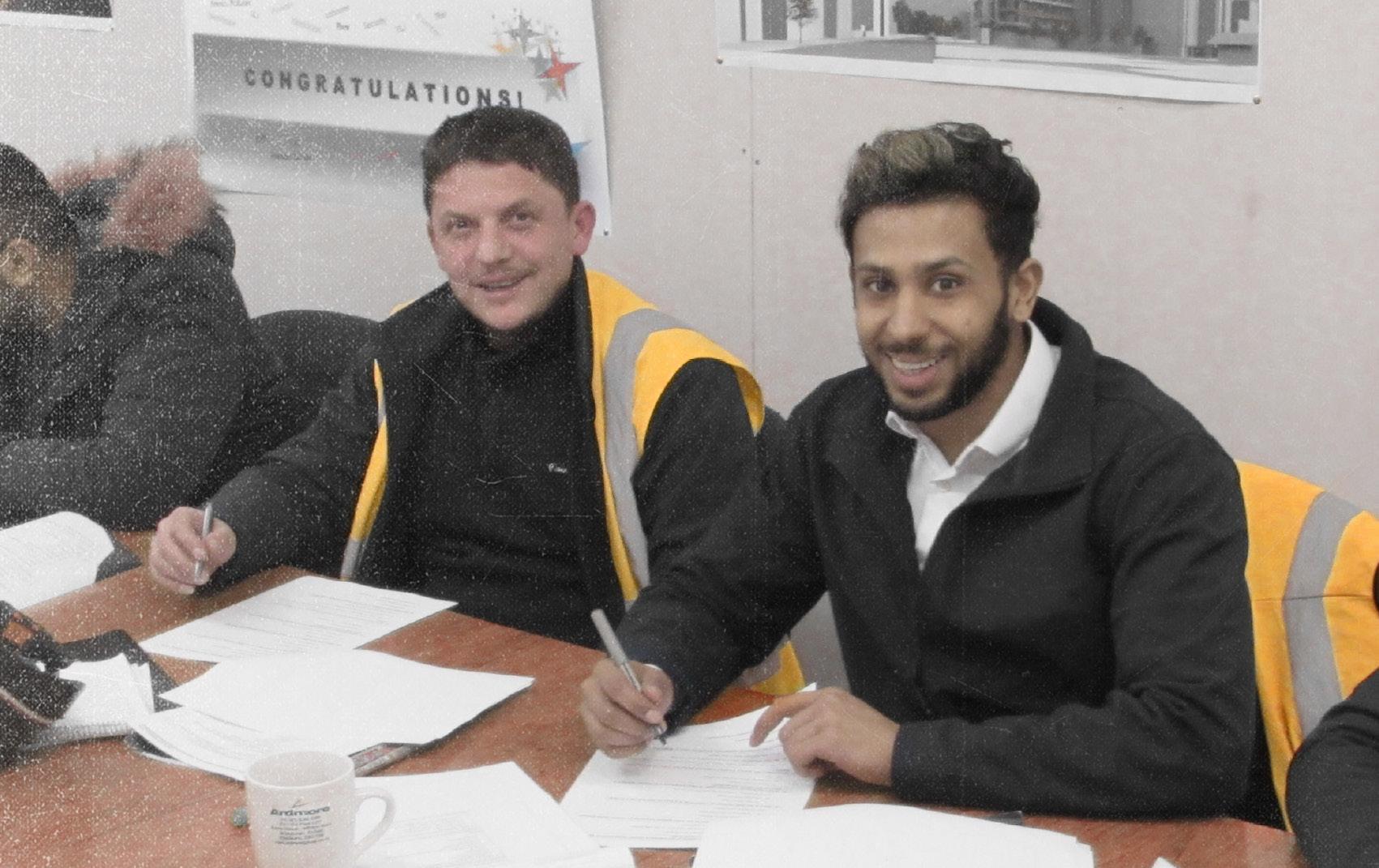
Throw it over your shoulders, clip it together, fasten the leg straps and you’re good to go, right? Be under no illusions, a damaged or incorrectly worn harness can lead to death, or if you’re truly unlucky, extreme testicular trauma and rectal damage! To prevent such a nauseating fate we’ll take you back to basics, familiarise you with different types of height safety harnesses and their various purposes, teach you how to perform pre-use inspections and then get down to the nuts and bolts of how to don and adjust. At the end of the module each of you will be provided with your own harness to practice with, which will then be assessed by the instructor to make sure the whole team is competent and confident before moving on.
Once you have an understanding of fall arrest and restraint methods we take a deeper look at intermediate devices, which work together between your anchor point and harness to form a height safety system. These include inertia reels, lanyards, lifelines, connectors and anchorage. We walk you through each device, demonstrating how they function, how you use them, what their limitations and performance capabilities are, and the practices and work methods that enable you to use them correctly in applications.

Anchorage is the first and arguably the most important link in the height safety chain. The challenge is knowing what constitutes a safe anchorage point and how to select the right anchorage device to connect out of a myriad of different options and configurations. To help you understand we’ll start by exploring permanent anchor points comprising of fixed structures in your environment and move on to temporary solutions. Finally we’ll talk in depth about available anchorage devices and analyse their specific uses, configurations, ratings and certification to give you the theoretical knowledge to identify and set up suitable anchorage for your height safety system.
While we should do all we can to prevent falls, using arrest and adjustable restraint systems mean the risk of a fall still exists. We need to be prepared to conduct a swift height rescue should one occur. In height rescue 101 we’ll examine the physical effects of suspension intolerance and re-flow syndrome on the human body and demystify the law, revealing exactly what you are required to plan and make provisions for. We’ll then introduce you to the 3 main methods of height rescue—lowering, raising and combined—to gain an overview of how they operate, their requirements of use and their pros and cons for the recovery of conscious and unconscious fall casualties.
Working at height puts your life in the hands of your equipment, so it’s in your interest to make sure your kit is fit for use. To ensure safety we’ll teach you the importance of frequent kit inspection and outline the basic principles of product and service life. We’ll then explore both the causes and visual indicators of degradation on a variety of different products, helping you keep your kit in good condition by handling, storing and transporting it appropriately and identifying damage when conducting daily pre-use inspections.
Formal equipment inspection is a requirement that must be conducted by a competent person on a 6-monthly basis. To understand your legal responsibilities we’ll introduce you to the inspections process for a full range of PPE and demonstrate how to record the relevant paperwork. At the end of the module is a practical exercise in which groups complete a harness inspection test, giv ing them the confidence to conduct daily pre-use checks.
Dropped objects are a serious risk, and not just to people, to anything below a work area where hand-held equipment can fall. In Dropped Objects we have a frank discussion about the problems associated with untethered tools, cover some mind-blowing physics about the impact force even the tiniest objects can generate, and lay down the law regarding individual and company liability resulting from injury. Finally we explore some tool tethering solutions available to you today so you can secure your tools at height.

For many the thought of conducting a risk assessment seems laborious and over-demanding, but it needn’t be difficult and if done properly will make all the difference. A good risk assessment protects employees and employers. To get you started we dive right in and show you how to easily identify hazards, consider who might be harmed, evaluate risks and record and implement your findings into a pain-free risk assessment.
Those responsible for planning work at height are legally required to provide a method statement, a document explaining the way tasks should be completed. It outlines in detail the hazards involved and provides a guide on how to complete the job safely. With examples, we’ll walk you through the process of creating a strong, simple and effective method statement that communicates risks and necessary precautions to all those involved in work at height, whilst avoiding the pitfall of ambiguities or generalisations that could lead to confusion.
You’ve sat through the all modules, now it’s time to put it all together! Using the knowledge gained throughout the course we give you several mock scenarios and challenge you in teams to conduct visual risk assessments, decide upon suitable anchorage locations and select equipment for work at height. In an informal discussion each group will then explain and debate their decision making process to demonstrate their ability to plan for a variety of work activities.
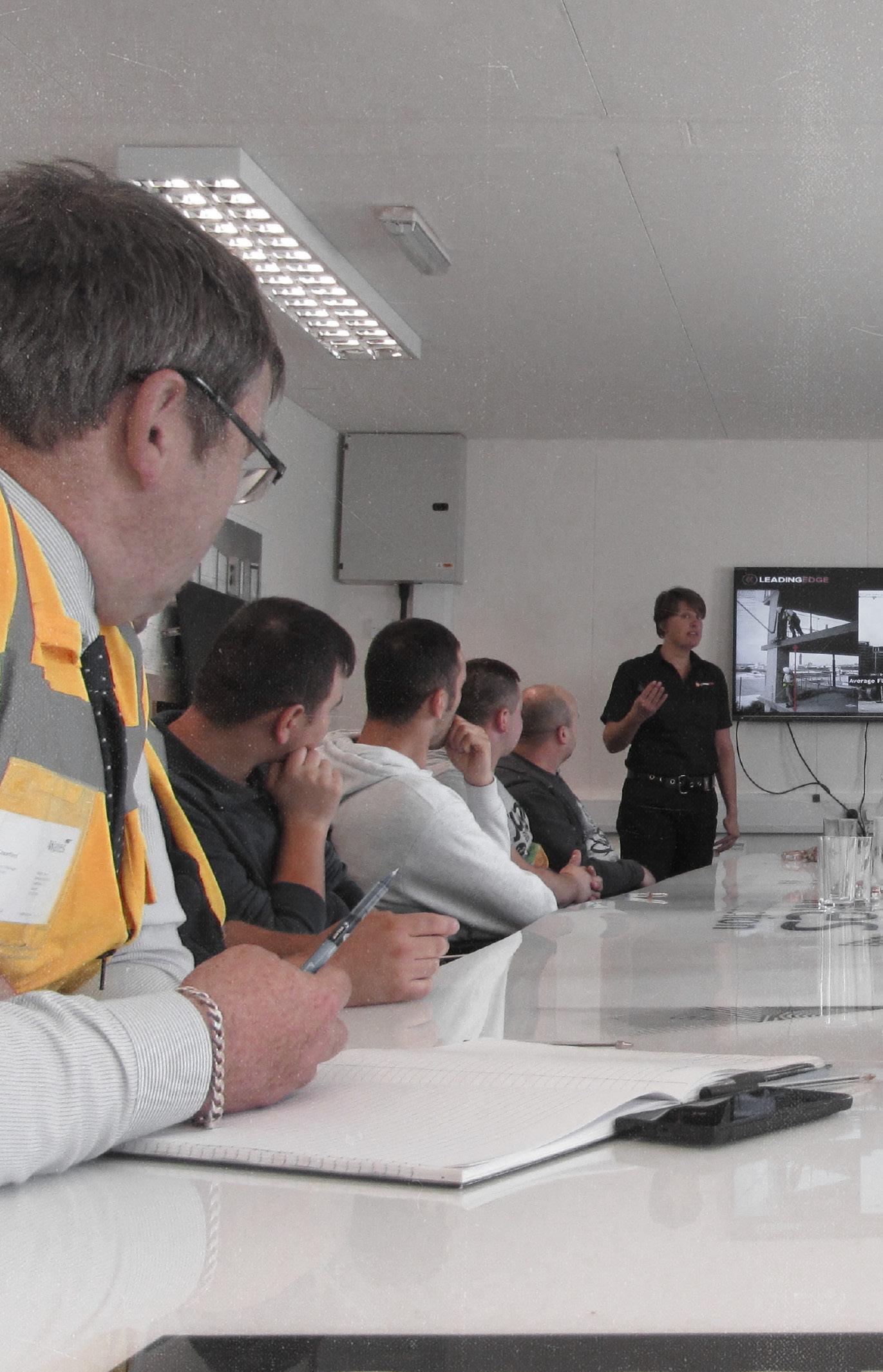



“Leading Edge deliver training in a vibrant way. The content is enlightening.”

It’s not enough to know theory. You have to do it in the real world. That’s where Leading Edge courses really shine. There are many ways to work, so after exploring your access solutions we’ll get hands-on in a live scenario where you’ll physically practise setting up and using your equipment.
The theory is complete. It’s time to put our harnesses on and get outside for the practical session. But before we do we will conduct a quick recap of the information learned in the harness training theory module to double-check everyone has remembered how to correctly fit and adjust their harness before going any further.

Anchorage forms the foundation of any working at height solution, so mistakes made here make all subsequent safety efforts worthless. But how do we know which device to use and where to place it relative to our work area and the leading edge? What wrapping method should we employ and how do different configurations affect load capacity? These are some of the questions we’ll answer, so by the end of Phase 2 you’ll know how to select and operate anchorage devices suitable to your work area.

Fall arrest blocks give you increased mobility straight out of the box. The trade-off is they allow you to enter into a fall. However, if you do go over an edge the fall arrest block quickly engages it’s breaks to halt the motion and (hence the title) arrest the fall. Because this work method permits falling it requires particular caution when checking, placing and anchoring to prevent misuse and avoid pendulum whilst being aware of minimum height restrictions. We’ll demystify strict rules and practises so you can gain the benefit of fall arrest blocks in various situations depending on your activities and level of exposure.
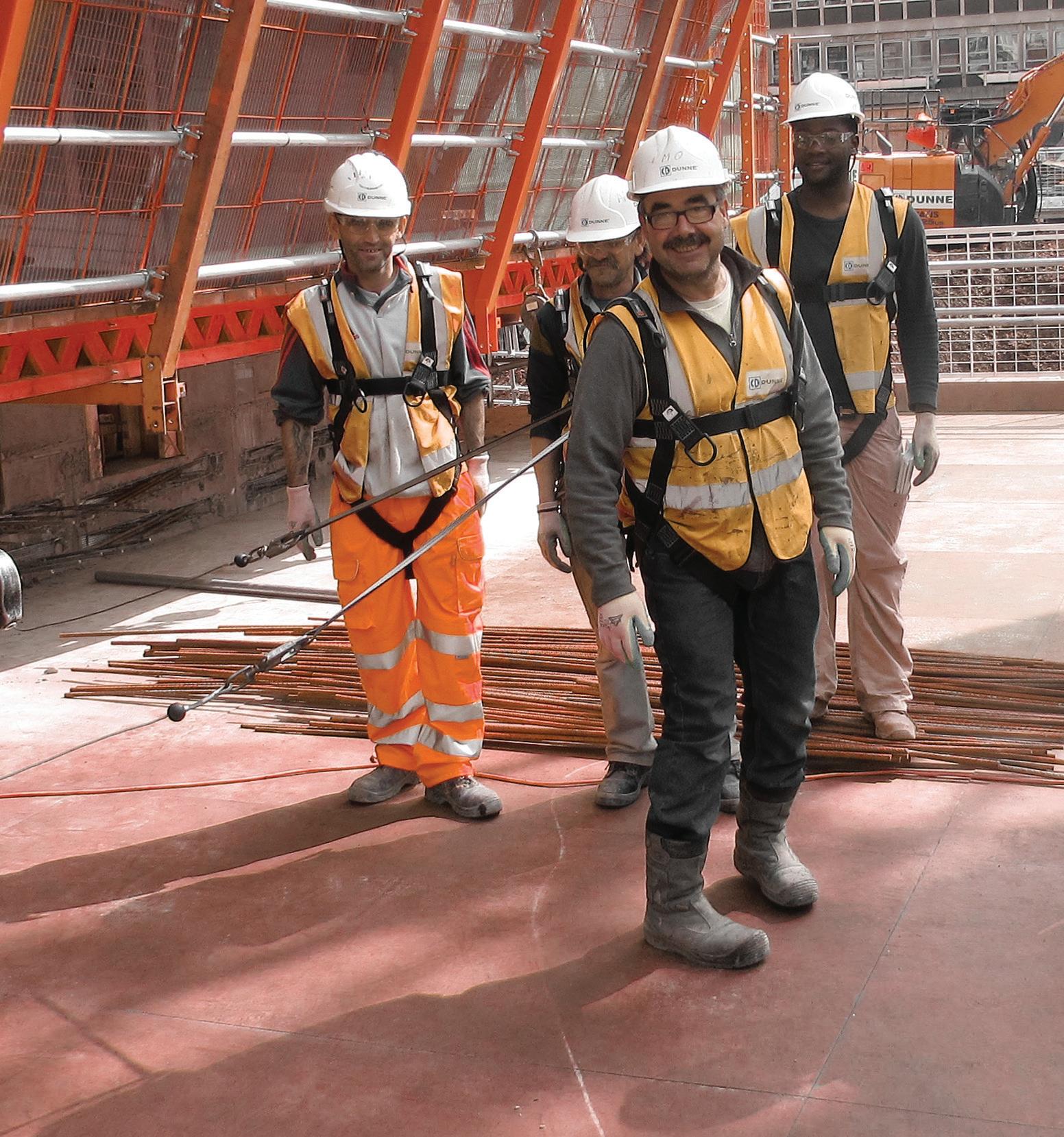
Higher up in the height safety hierarchy is restraint. This method offers the same level of access as fall arrest blocks but is considered a safer and more desirable style of work because the rope ‘restrains’ your proximity to an edge.
Restraint Systems are extremely versatile, allowing for both front and rear connection in several configurations across horizontal, vertical and pitched planes.

In phase 5 we’ll combine the best of both worlds by introducing lifelines. Lifelines prevent pendulum and provide greater access when working over large areas as the added use of a pulley allows you to safely traverse the edge along which the lifeline is set. You’ll learn how to deploy, position and tension a lifeline, operate it using front and rear attachment across horizontal planes, and explore more advanced techniques such as lifeline bending for multiple edge access and intermediate attachments to support multiple simultaneous users.
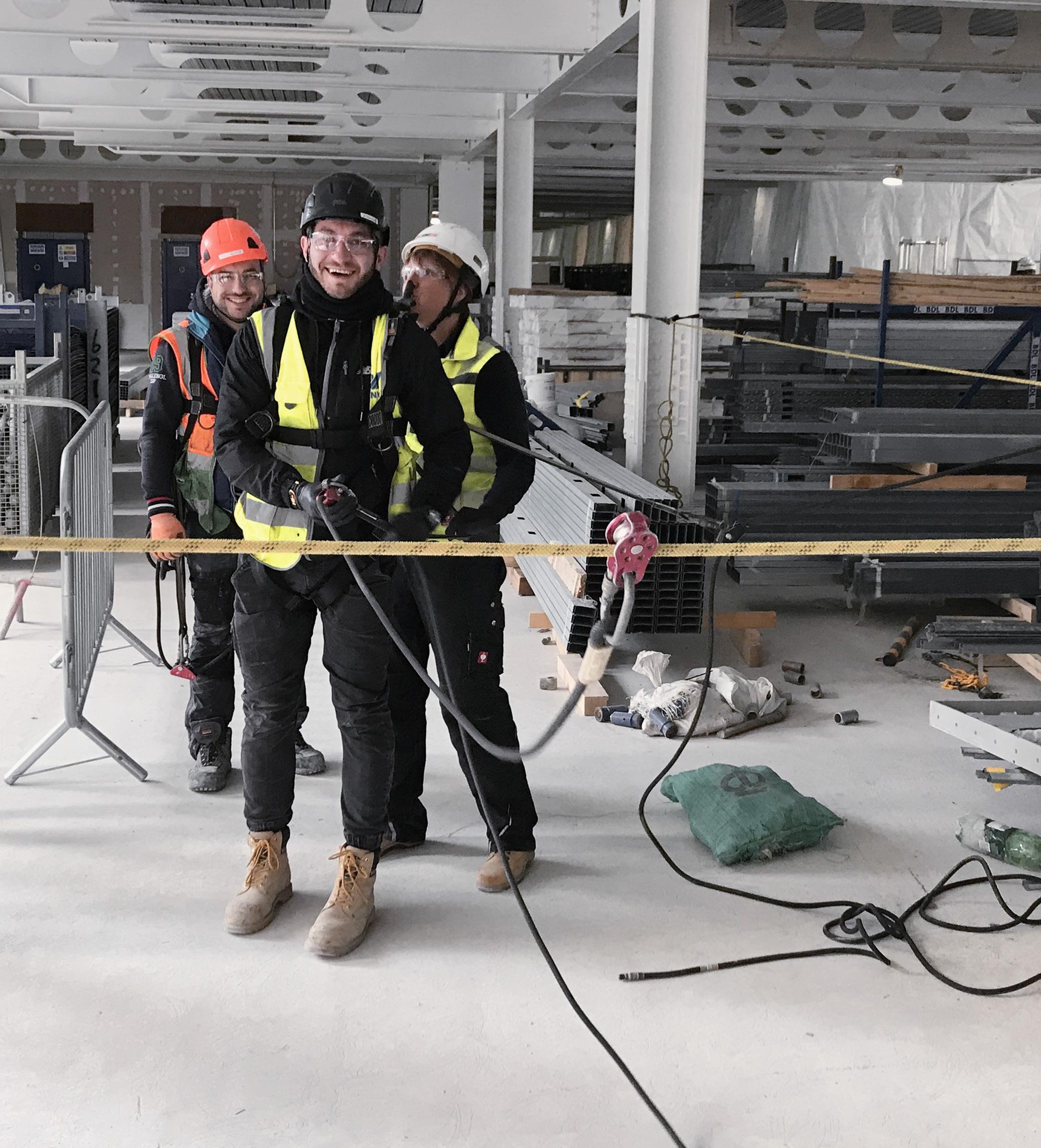
Lifeline
Lifeline
Lanyards are the most extensively used piece of equipment in the height safety arsenal. It’s no surprise given their versatility. You will discover all the different kinds of lanyard to achieve a range of access from simple fixed locations to climbing and the traversal of complex structures. This is your chance to reaffirm lessons learnt during theory modules and practice connecting to harnesses and anchorage while gaining the invaluable ability to select the right lanyards for your applications. We’ll continuously verify your competency along the way!
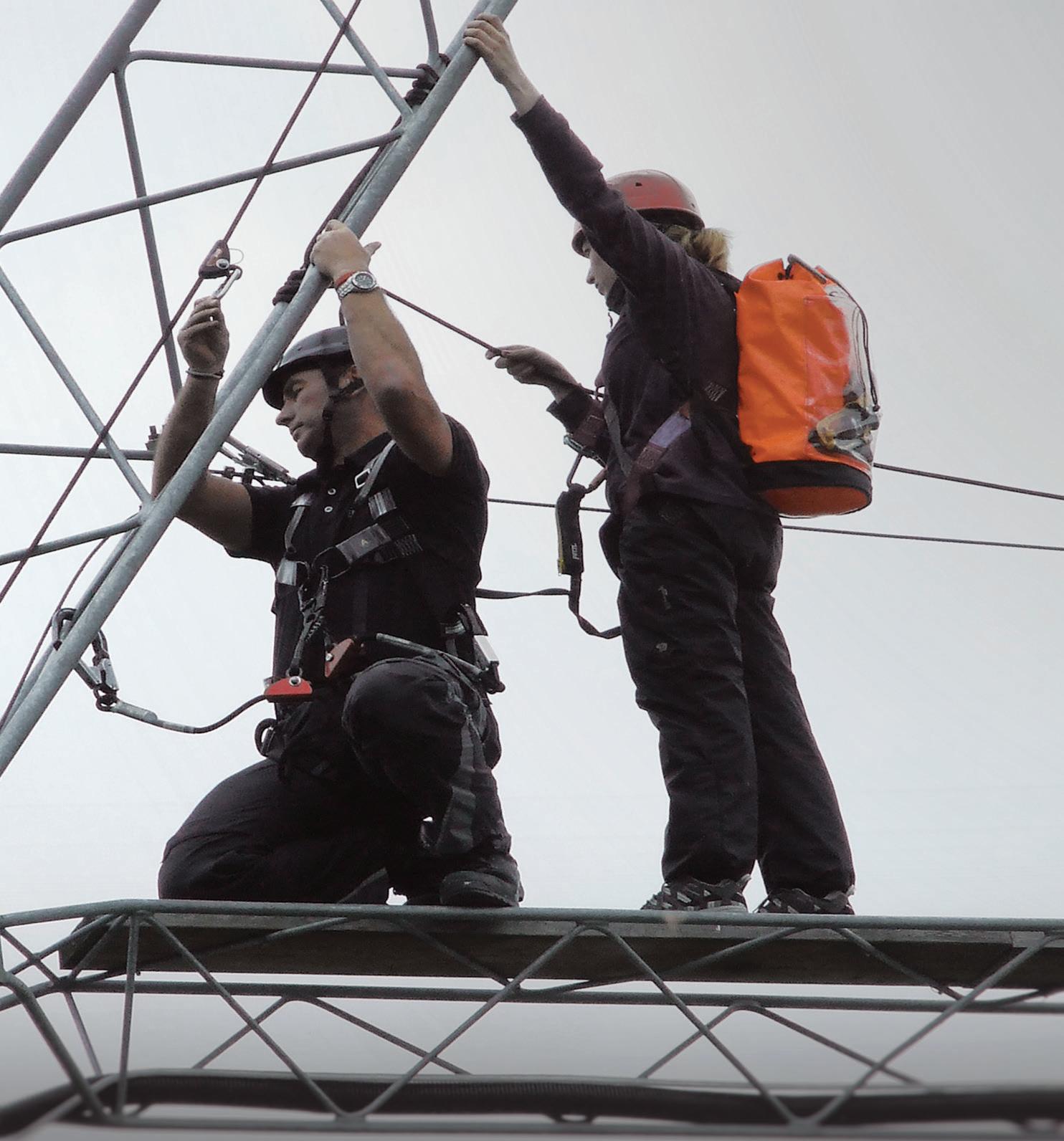



“All trained operatives were able to work with confidence and competence.”

It’s the powerful combination of both theory modules and practical exercises, tailored to your trade and delivered by directly employed expert instructors that distinguishes Leading Edge. We present a simple yet truly comprehensive height safety solution with engaging courses catering for all levels of your company, from operatives up to management.
Learn basic safety principles, don a harness and gain competence operating your height safety equipment during a half day of theory and practical exercises — the most efficient package for teams who are required to work at height with limited exposure.
This course is aimed at beginners to working at height. For example a volunteer or person that requires a skill update or refresher training. Every course is tailored to your unique working at height requirements.
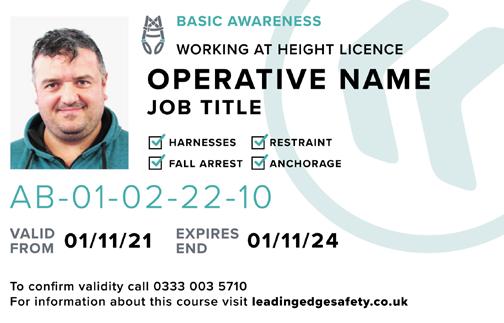

Learn about different types of full body harnesses and discover what they are for, how they are used and the effect falling in one has on the body. Each of you will be given a harness to don under the guidance and assessment of the instructors. Your whole team will feel confident inspecting, wearing and adjusting harnesses safely for work at height.
A series of group practical exercises test your new height safety skills in a live scenario where you’ll set up anchorage and practice using fallarrest, restraint and lifeline systems in a variety of configurations required for your job.
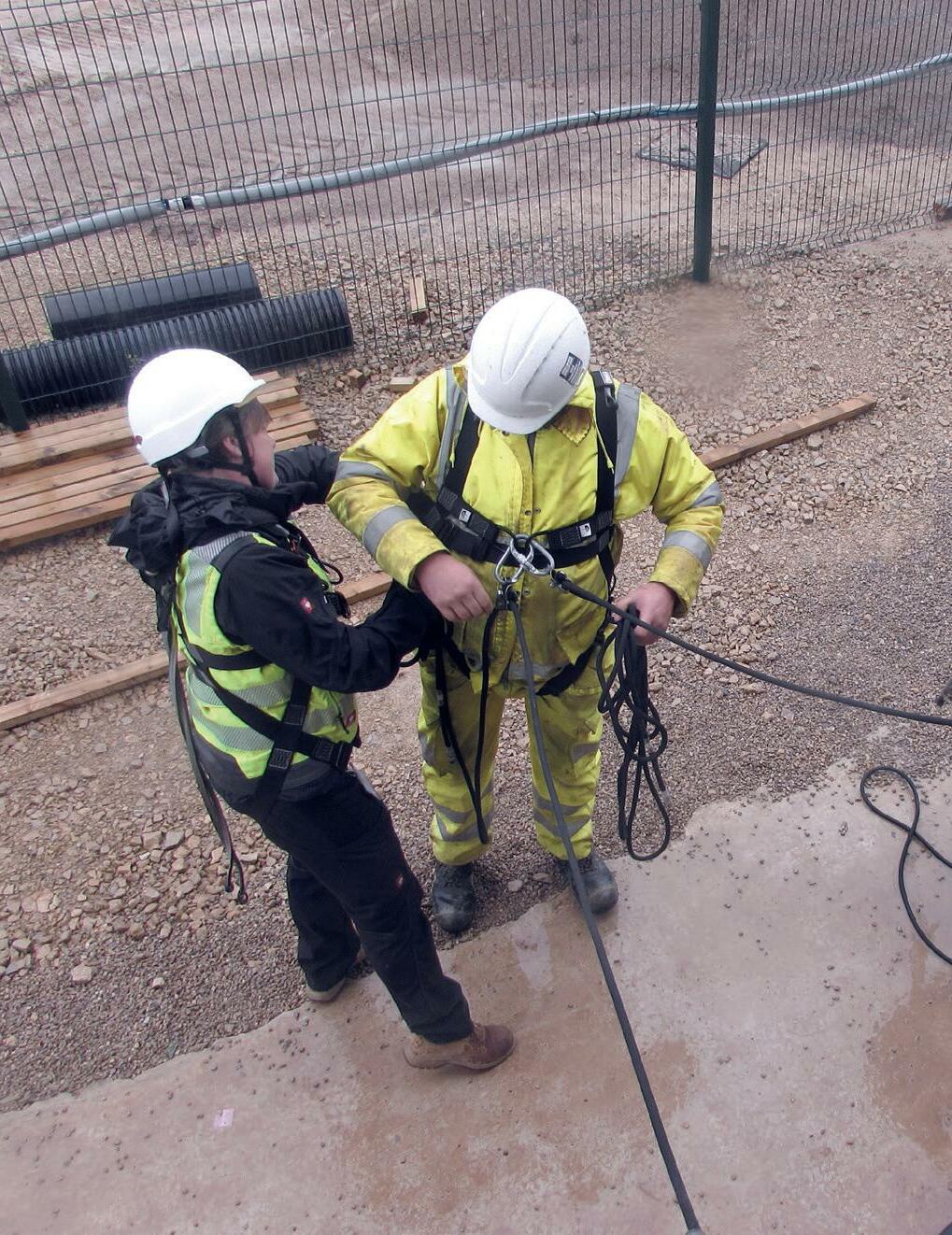

Master the equipment, methods and practices that keep you safe at height when working at the edge. We not only help you discover a personalised height access solution but tailor your course to suit your trade, ensuring your whole team gain complete theoretical and practical safety skills that have direct association to your daily activities.


Working at height is more than just wearing a harness. It’s about fully understanding the risks, anchorage selection, equipment mechanics, usage and best practices. This course gives you the all the knowledge, awareness and practical skills that empower you to work safely at height.

The course begins by establishing a general awareness of the dangers of working at height and takes you on a journey through the methods, practices and equipment that together form your height access solution. We’ll discuss what restraint, fall-arrest and work positioning mean and get you fully trained in the use of height safety harnesses, adjustable restraint and intermediate devices such as inertia reels, lanyards, lifelines, connectors and anchorage. You’ll then explore the fatal effects of suspension intolerance, take a brief look at rescue, discover how to perform pre-use equipment inspections and test-drive the latest tethering solutions for preventing dropped tools.
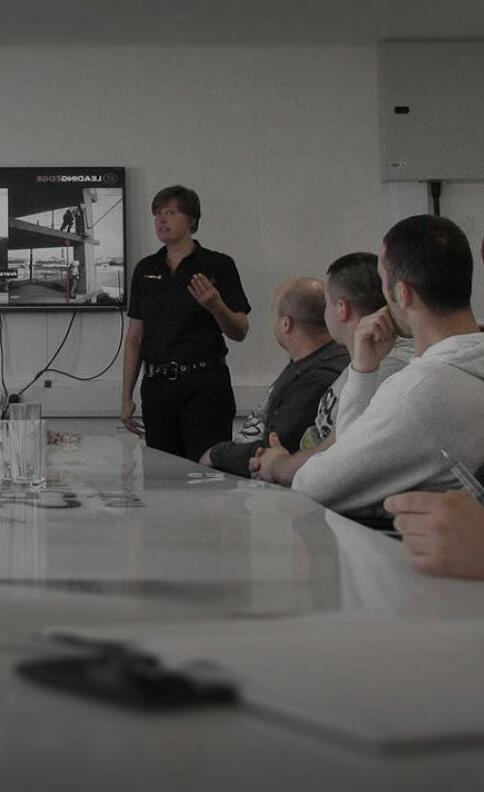
There are lots of ways to work at height. Understanding what equipment to use for different applications based on your access, scope of work and exposure is essential for your safety. You’ll master how to select and use the right equipment for any job you do at height.


The course concludes with a group practical session that tests your new skills in a live scenario where you’ll set up anchorage and practice using fall-arrest, restraint and lifeline systems in a variety of configurations required for your job at height, all under the watchful eye of your instructors.
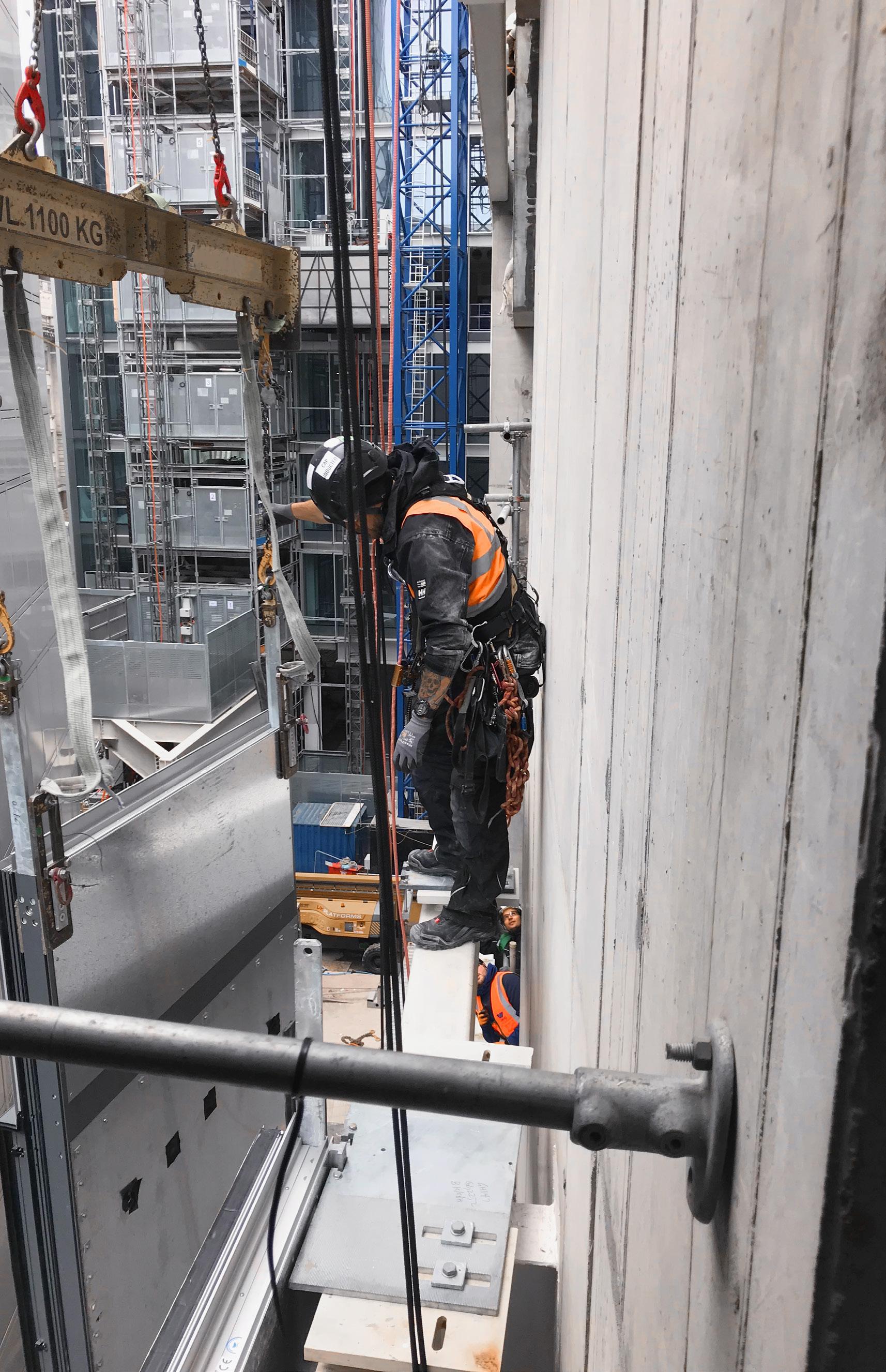

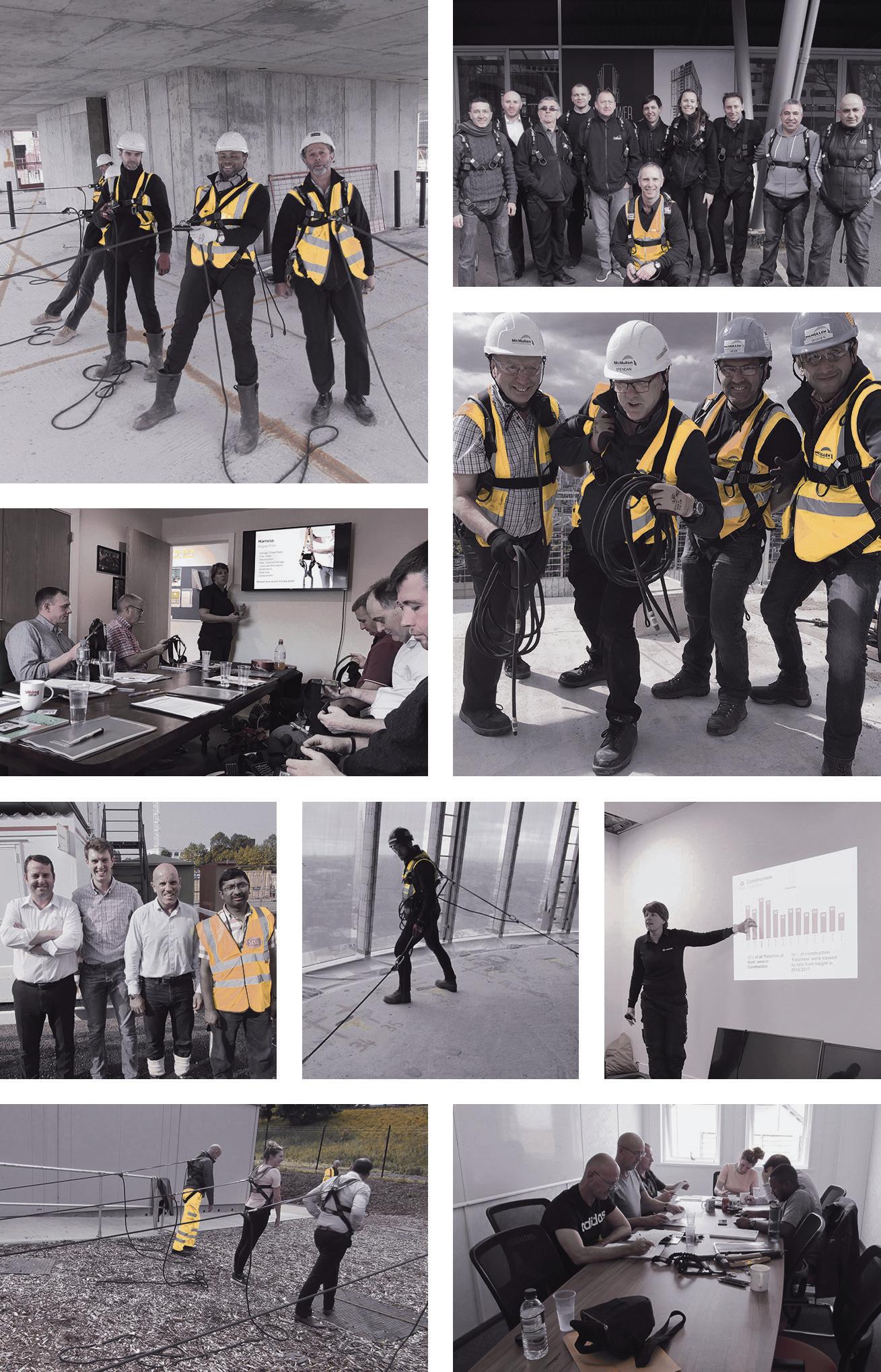
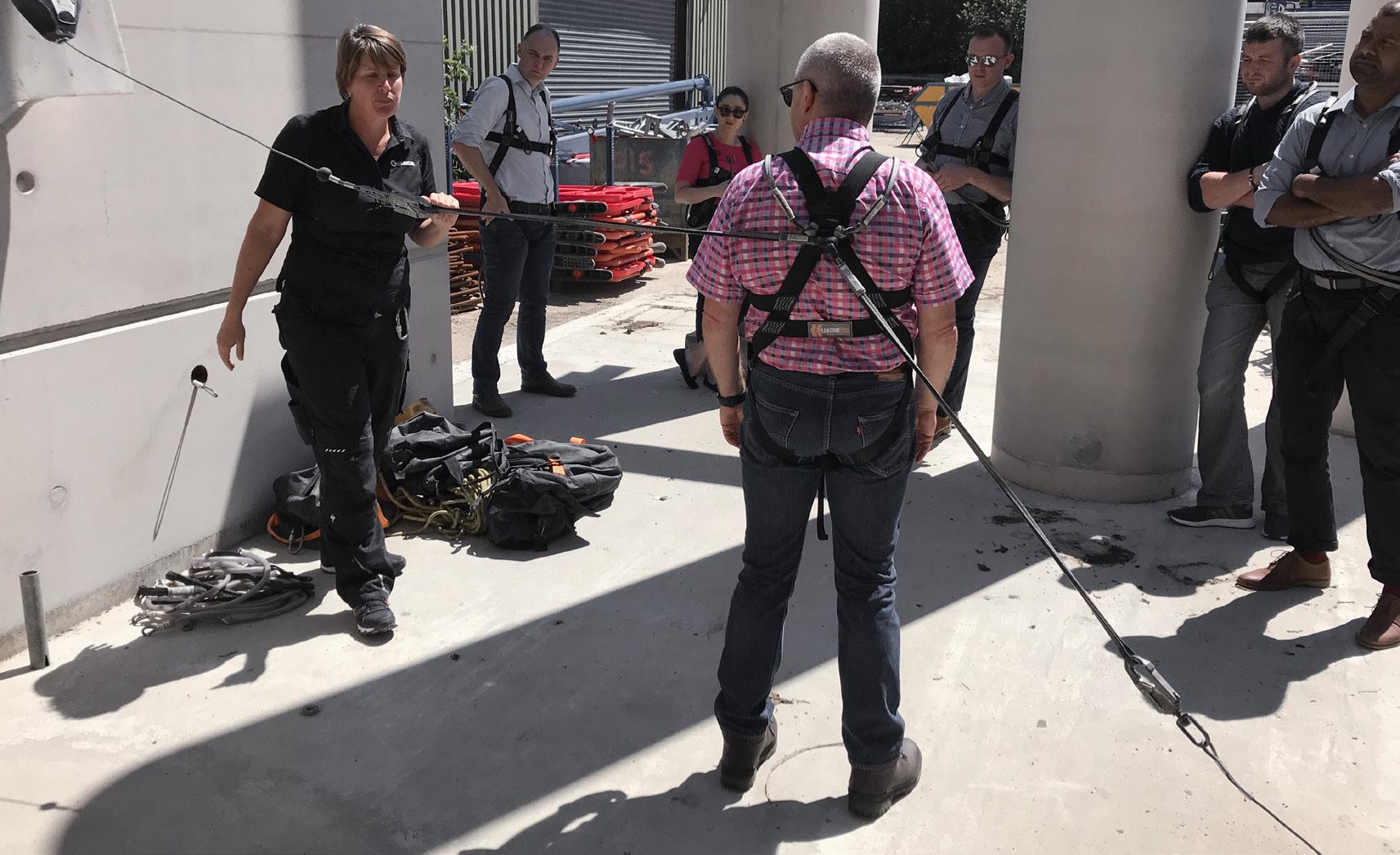
Managing work at height requires an advanced skill set covering a wide range of legal and moral responsibilities. To achieve this we enable you to identify potential hazards, complete effective risk assessments and method statements, get you fully up to date with the latest equipment and work methods and teach you all the skills you need to be manage work successfully.


A big part of being a manager means ensuring your team has the right equipment for their tasks. We’ll explore the function and use of various types of height safety equipment at an advanced level, giving you full proficiency in the selection and utilisation of harnesses, intermediate devices and anchorage that together form your employees height access solutions.

Discover the effects of falling on the human body and get all the guidance information and product knowledge you need to begin making necessary height rescue provisions for work at height. You’ll be able to select and place appropriate recovery systems for any work at height and fulfil your risk assessment requirements — an essential skill for any managerial role.
Learn how to store and maintain your equipment and discover how to perform weekly kit inspections on a full range of PPE. We also reveal strategies that safeguard against the repercussion of not controlling equipment in-line with requirements.
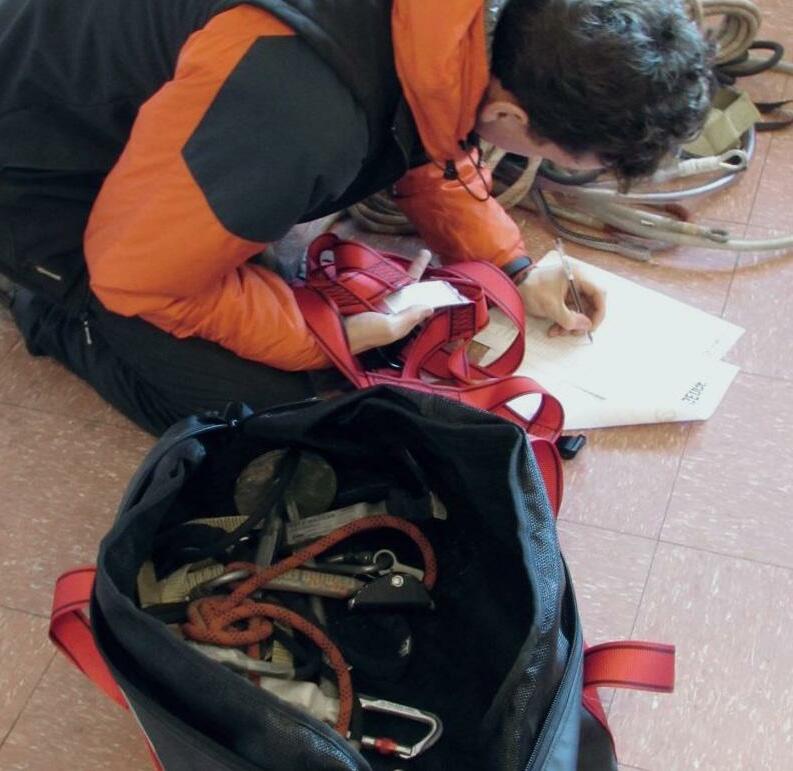
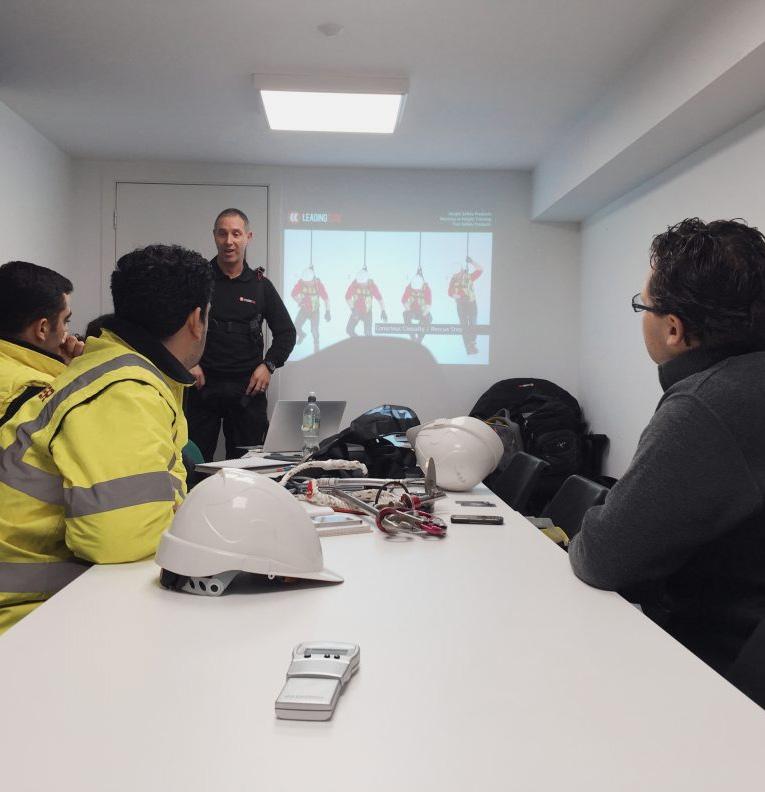
In a final group exercise you’ll demonstrate your competency as a manager by risk assessing and selecting appropriate work methods and equipment for several mock work at height scenarios. As a qualified WAH appointed person you can issue ‘permit to work’ (PTW) for all working at height activities.
The Leading Edge license card management system gives you the power to take disciplinary action by removing the corners of a license if the card holder commits an act of misconduct. A Leading Edge card with all 4 corners removed is considered invalid and requires the operative to be retrained before continuing work.
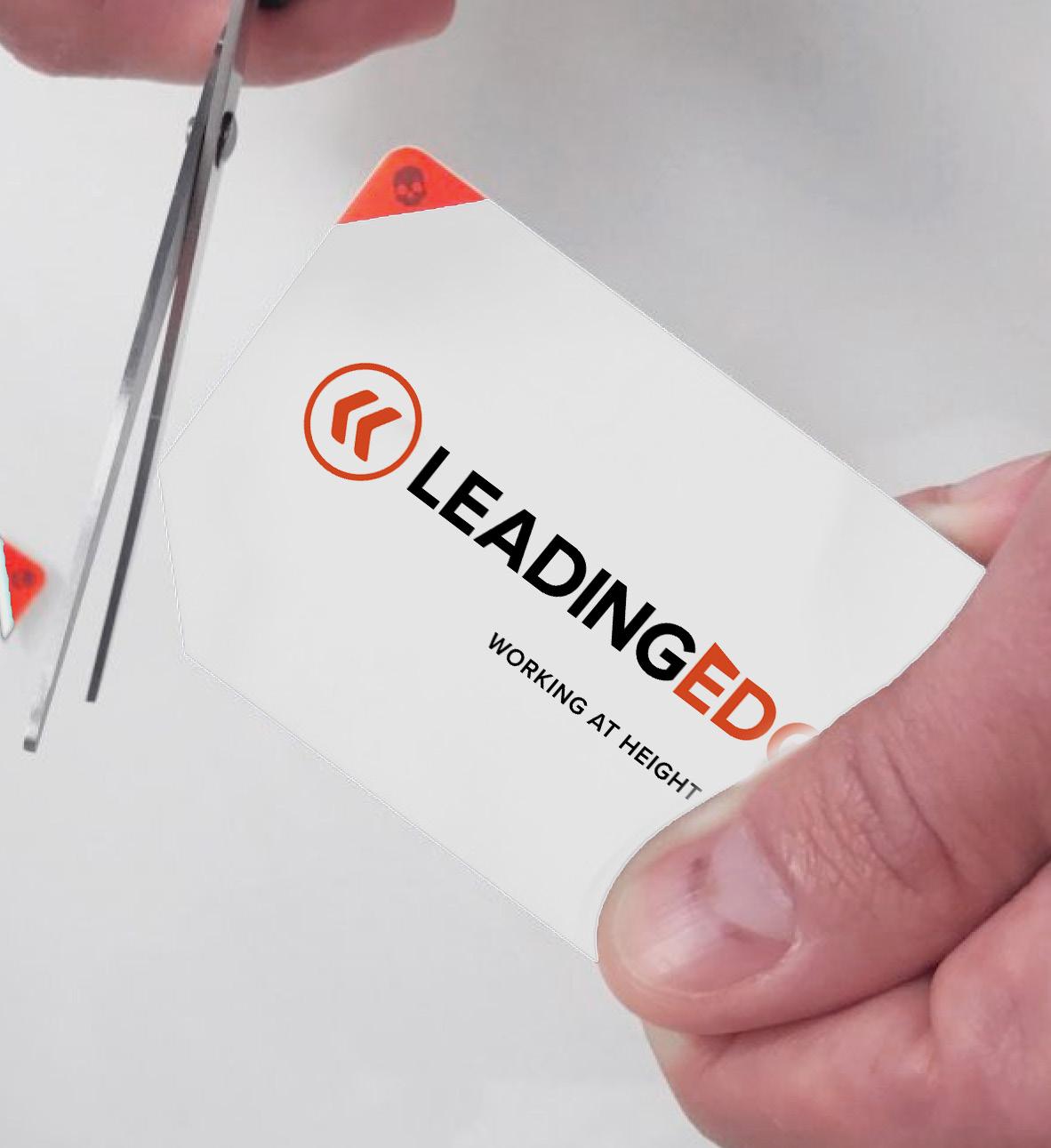


With health and safety on the rise in the workplace, ladder use has declined in favour of ‘safer’ alternatives. The trade-off is these alternatives are often costly, time consuming and prohibitive. But by utilising height safety equipment and stabilising techniques you’ll discover that ladders are a genuinely safe and incredibly convenient method of gaining short duration temporary access.
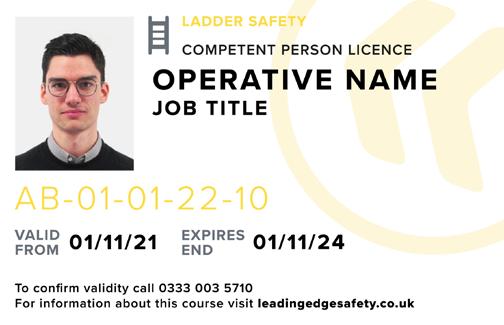


Unlike your average ladder course Leading Edge provides a hybrid of essential working at height techniques (harnesses training, restraint systems, anchorage devices) and a solid theoretical and practical understanding of all aspects of ladder use including hazard awareness, legislation, kit inspection, positioning, stabilising and climbing to giving a complete solution for you need to work safely with ladders.
Understanding what equipment to use for short duration ladder work based on your access, scope of work and exposure to risk is essential for safety with ladders. You’ll master how to select and use the appropriate height safety equipment and ladder stabilising gear to create a safe temporary system of work.

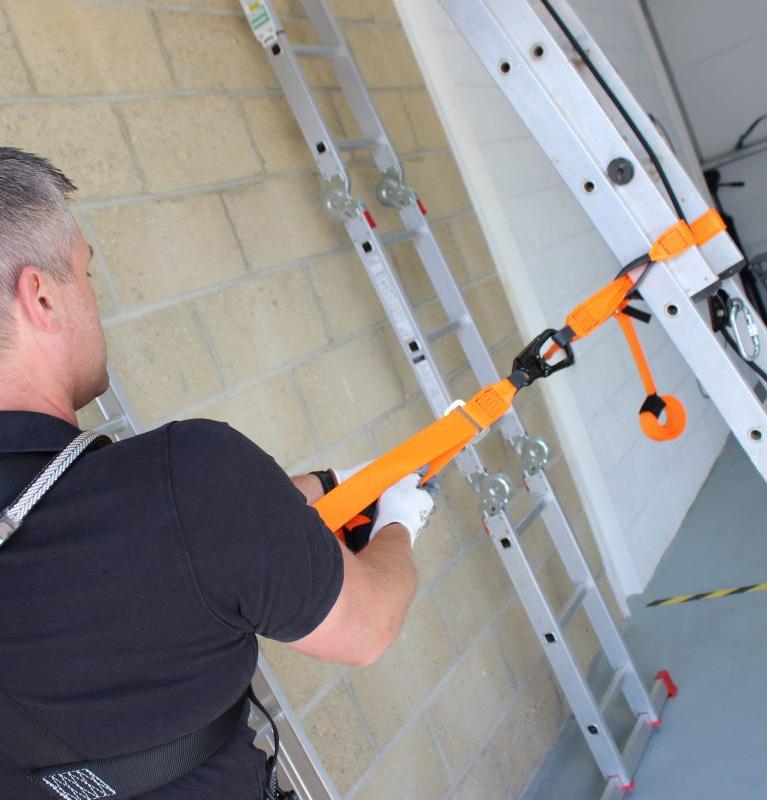
The course concludes with a group practical session that tests your new skills in a live scenario where you’ll set up your combined ladder and height safety equipment in a variety of configurations, under the watchful eye of a professional instructor.
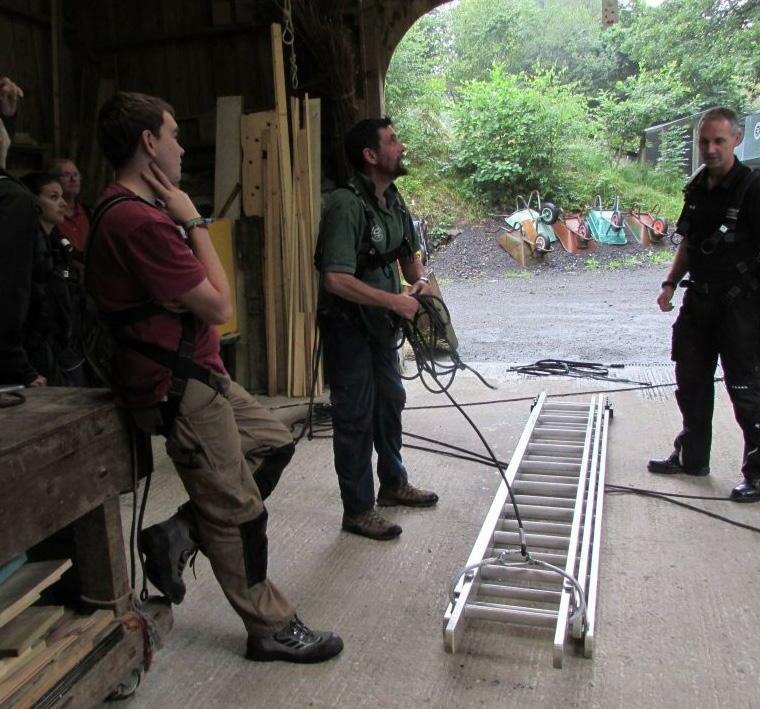
To be safe when working at height is more than just climbing a ladder. It’s about fully understanding the risks, PPE selection and mechanics, stabilisation, ladder usage and best practices. This course gives you all the knowledge, awareness and practical skills to create a short duration, temporary work access solution.

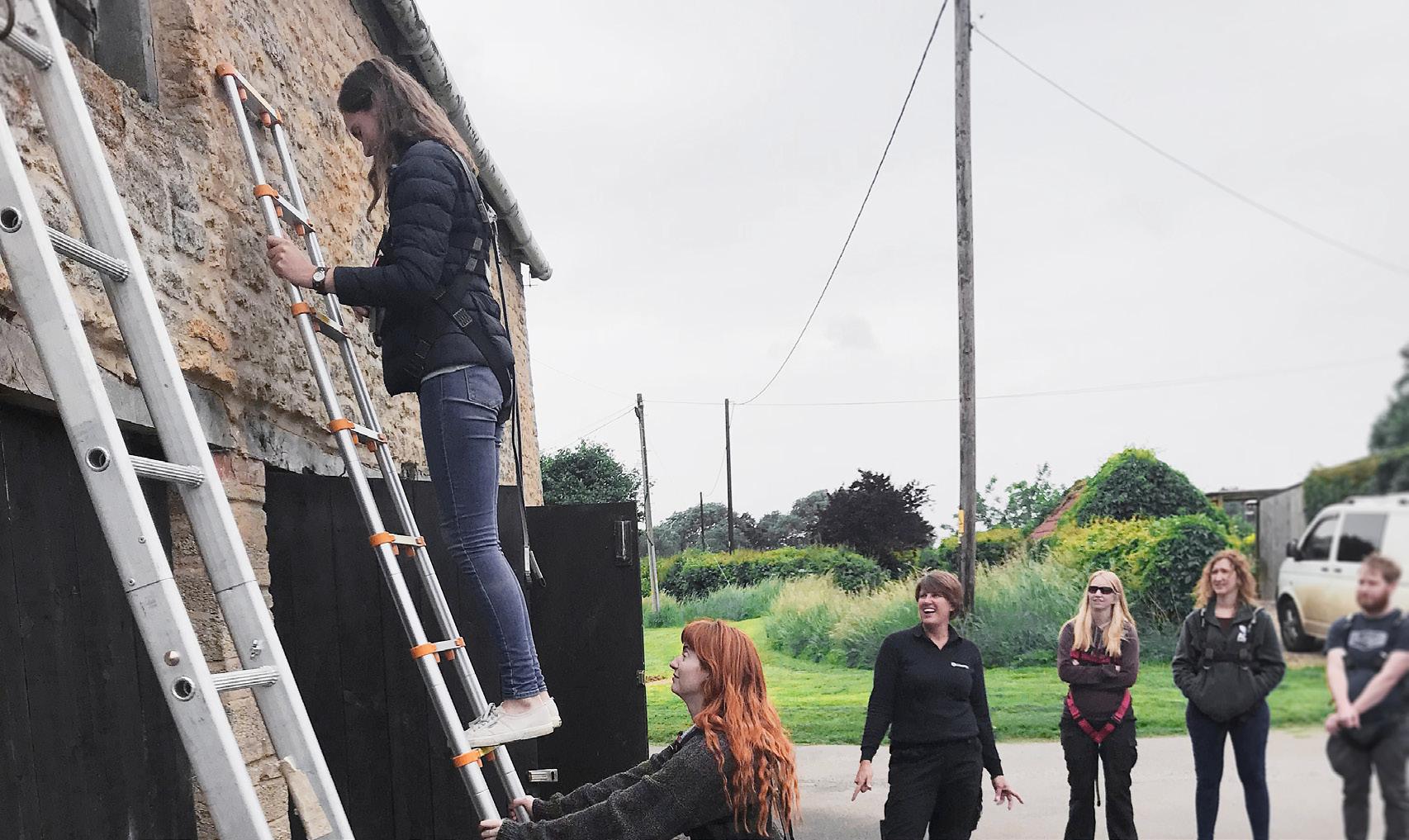
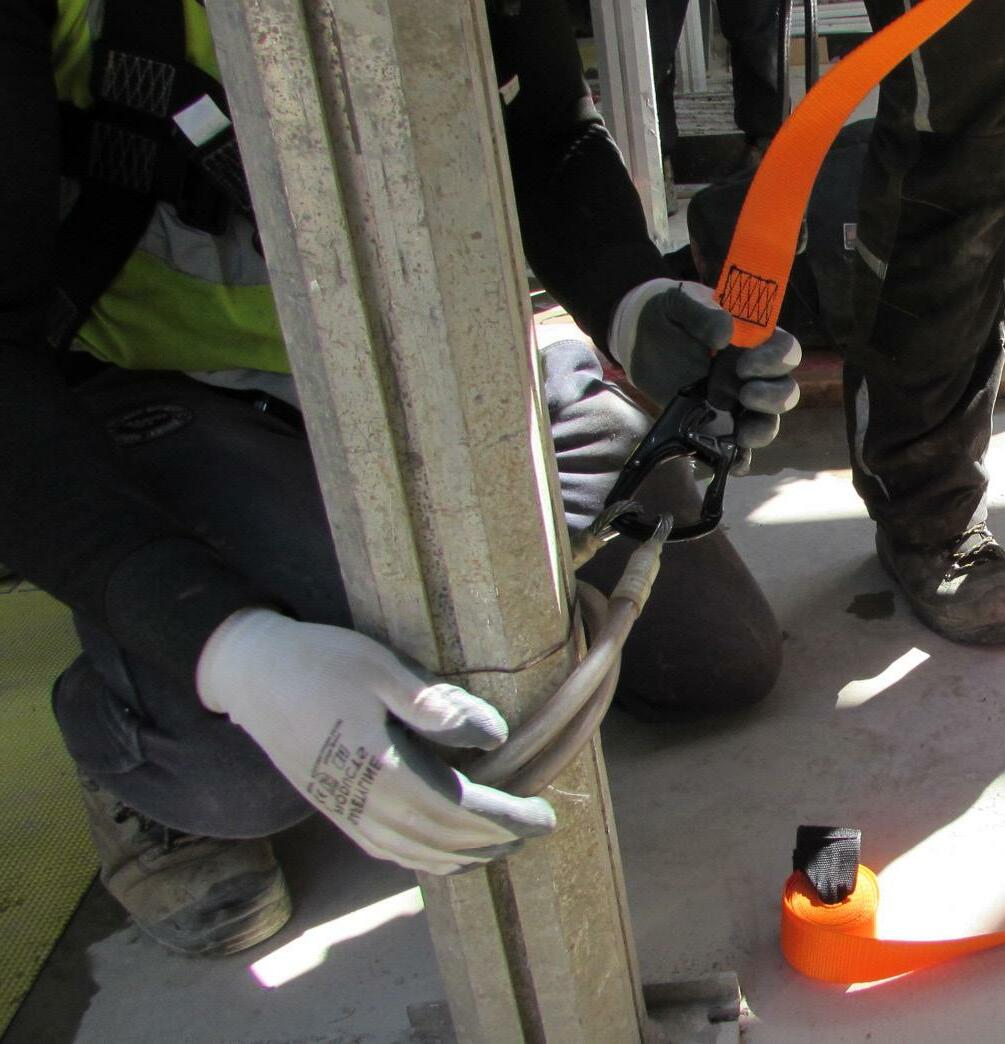
We provide our own projector, screen, laptop, props, ladders and bags full of equipment to deliver theory lessons. We just need somewhere to teach. So, if you’re booking a course on your site, don’t forget to arrange a training room that can hold the appropriate number of people.
Discover how to examine and detect mechanical or material faults in your equipment, allowing you to confidently re-certify or decommission any type of Working at Height PPE throughout service life. You’ll also learn how to record and maintain your findings in a self-directed inspection log that saves you time, money and provides essential protection for both employees and employers.
The course follows best practises in line with British Standards BSEN365:2004, BS8437:2005 & A1:20012.


Theory ( 2 Hours )
Practical ( 2 Hours )
Formally inspect a selection of 50+ PPE items and record your findings in an assessed inspection log
This is an individual practical assessment, where you will formally inspect a selection of 50+ PPE items and record your findings. To increase your product exposure, this is followed by a group discussion on reasons for pass and failure of the many PPE items, so that you are competent to act as the appointed person for formal kit inspection within your company.
The nature of this course requires a huge amount of equipment to learn about and examine. We bring everything you need. So there’s no need to worry about sourcing any PPE yourself.

You won’t just be learning how to assess a wide array of materials and components. You’ll perform real inspections on a huge assortment of over 50 real PPE items in various conditions that we bring to your course. There’s simply no better way to master the inspection process.


The theory phase equips you with essential knowledge of inspection legislation and the factors that effect product and service life. We then teach you everything you need to begin creating and maintaining formal 6-monthly equipment inspection logs.
After finishing this course you’ll be able to formally control and maintain your companies PPE as a licensed appointed person. From here you can continue to competently perform formal kit inspections on a full range height safety equipment in-line with the British standards and best practices
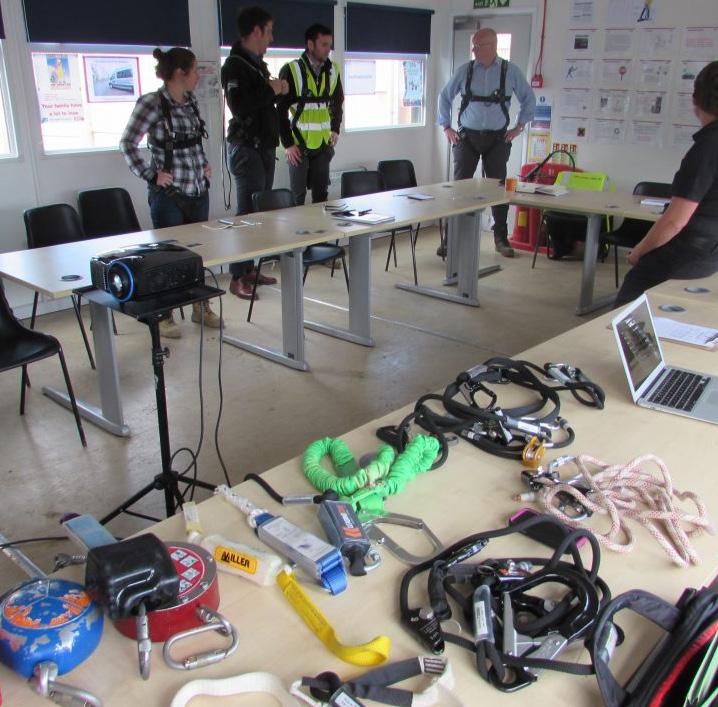
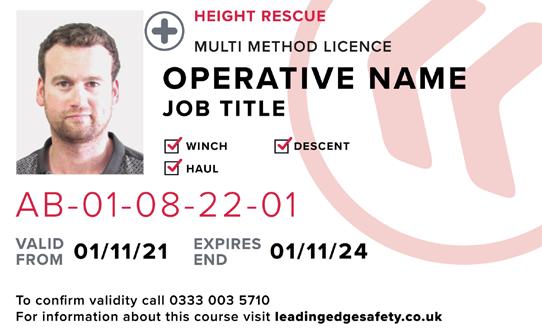

It only takes five minutes for the onset of suspension intolerance to change a life forever. Venous pooling, orthostatic intolerance, vascular shock — learn how these devastating conditions affect a fall casualty. We’ll study the science and look at some eye-opening statistics to reveal why a rescue plan is essential for protecting people who work at height.
Explore 3 different recovery systems, discover their suitability and effectiveness for various recovery scenarios and get in depth practical training in the system/s of your choice. We’ll also look a the process and frequency of equipment inspection as well as anchorage considerations you will commonly encounter in the field.

By conducting repeated self and assisted recoveries — in vertical and horizontal rigged positions with a variety of fall protection equipment — you’ll gain total confidence recovering a fall casualty with your chosen rescue system/s. And to test you can act under pressure we’ll do a 5-minute rescue challenge to compete for the fastest, safest recovery.
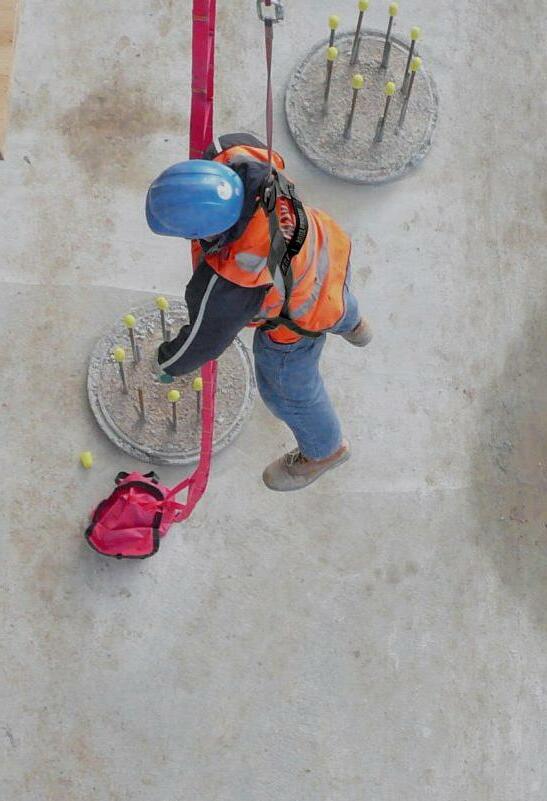
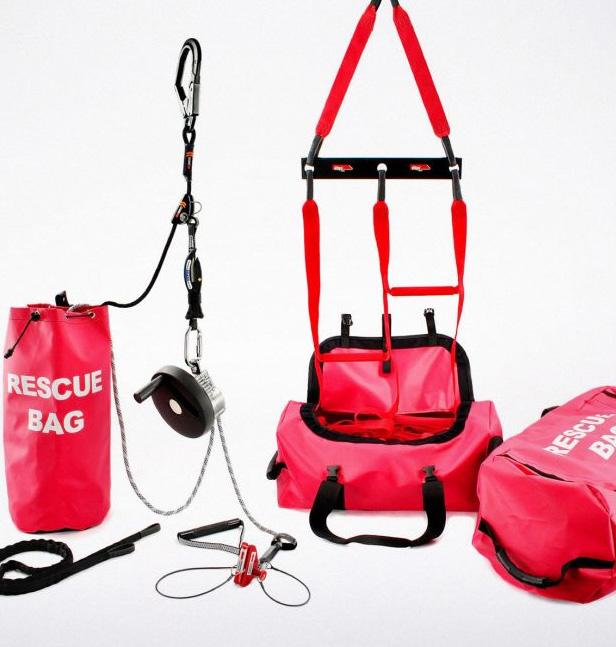

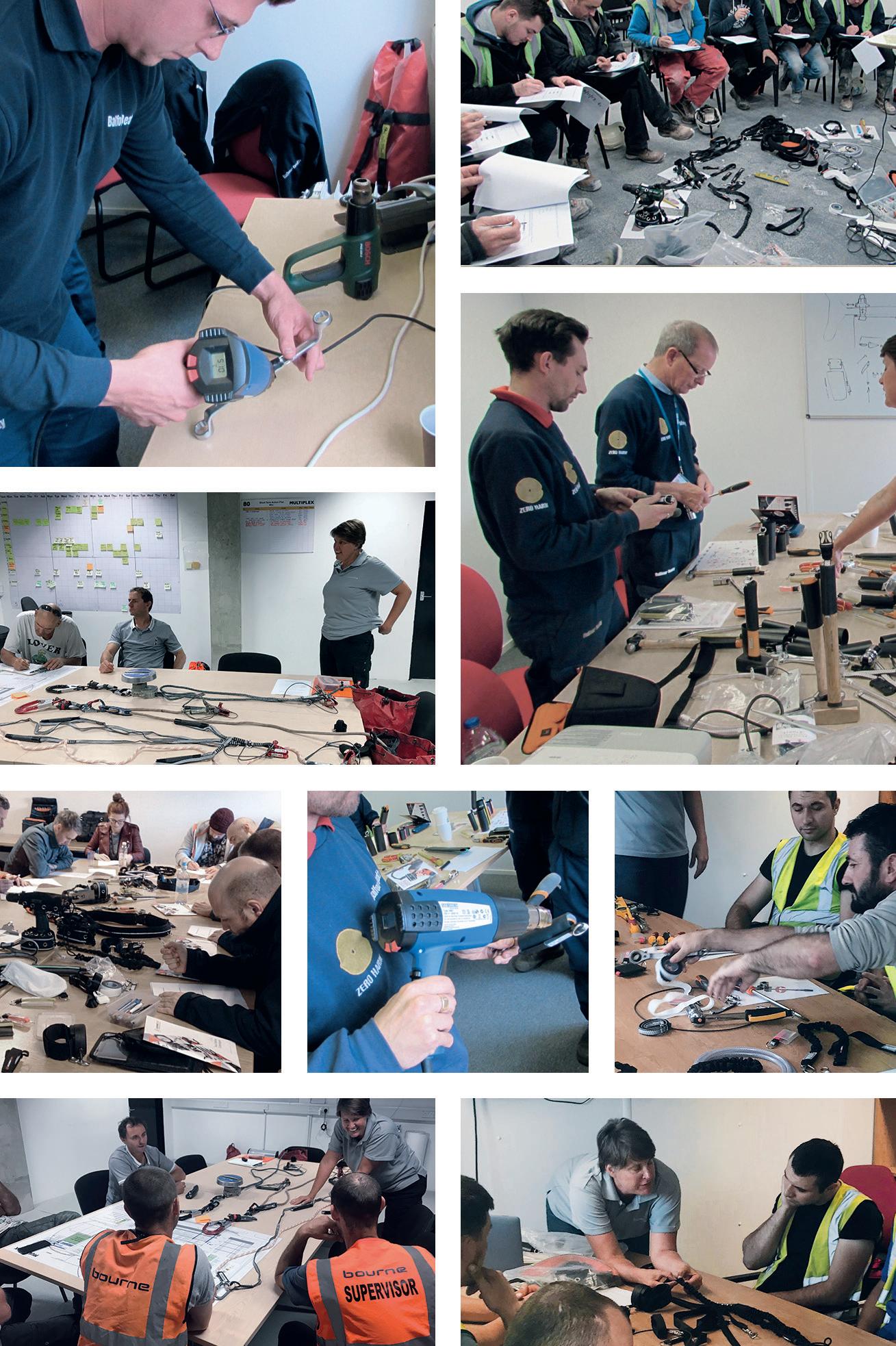
After covering statistics and legislation that help you understand why tethering is so important, you’ll not only discover what testing methods to look for when buying tethers, but learn how to safely transport and store your tethered tooling. You’ll also learn classifications of different tool types and the options available for tethering them, giving you the skills to select and apply the correct tethers to your own tools.
The real benefit of this course is getting to physically practice selecting and applying a wide range of tethers to different types of tooling. We’ll also show you how to use the Leading Edge tethering roadmap to help you find a complete tethering solution.
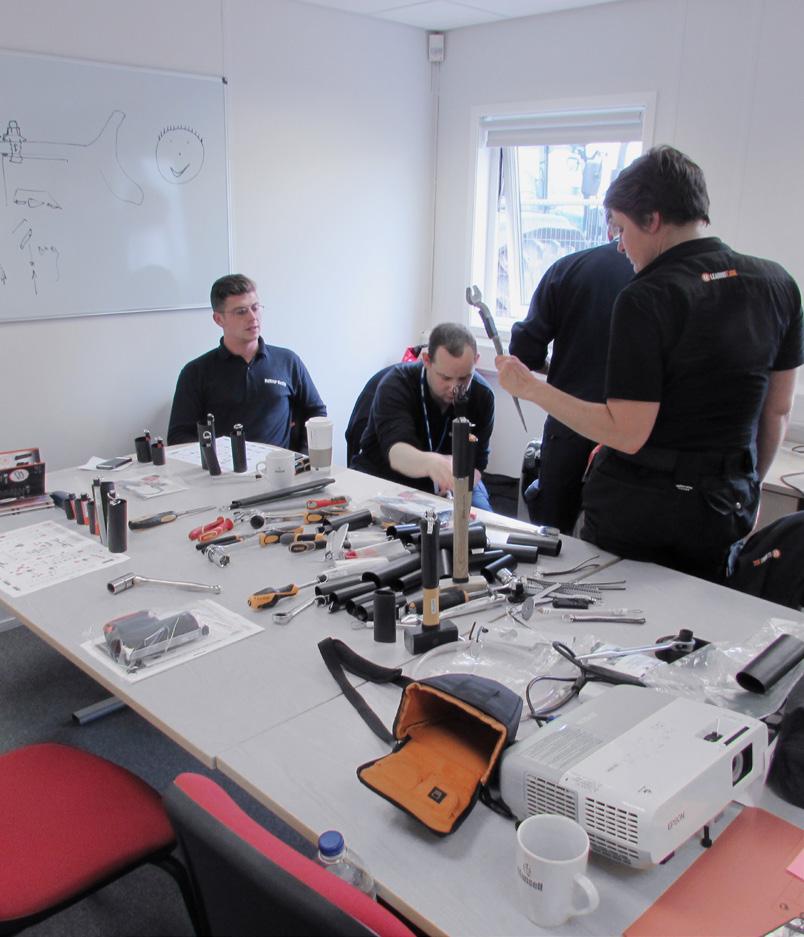
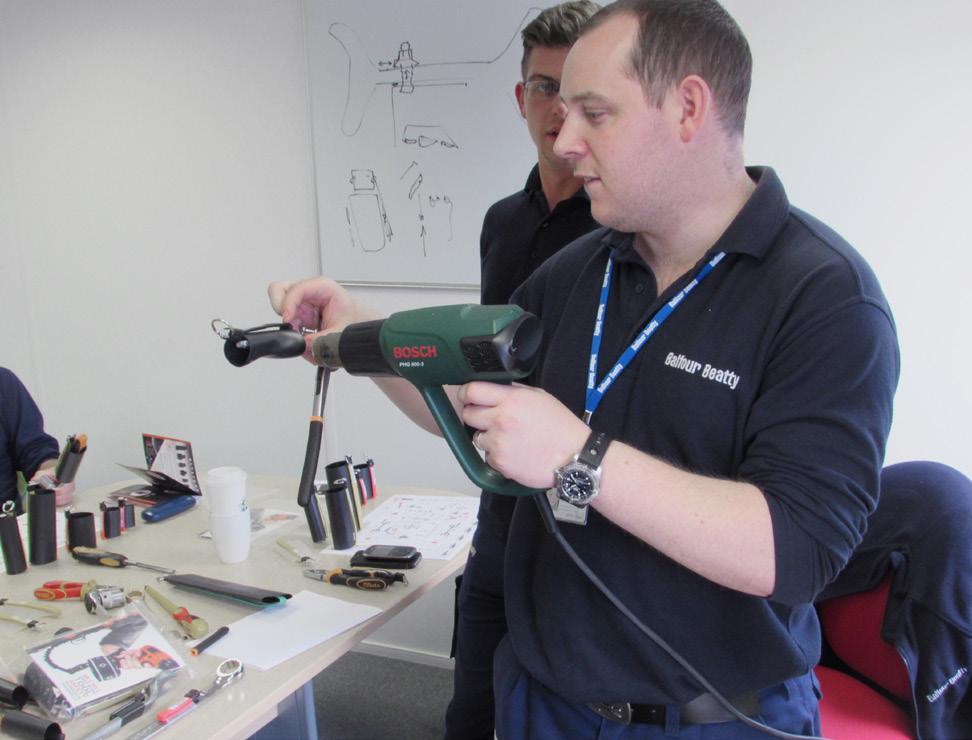
Correctly tethering a tool takes more than tying a piece of string around the handle. It’s about fully understanding the risks, configuration and selection, equipment mechanics, usage and best practices. This course gives you the knowledge, awareness and practical skills to create a safe environment for tools and materials at height.
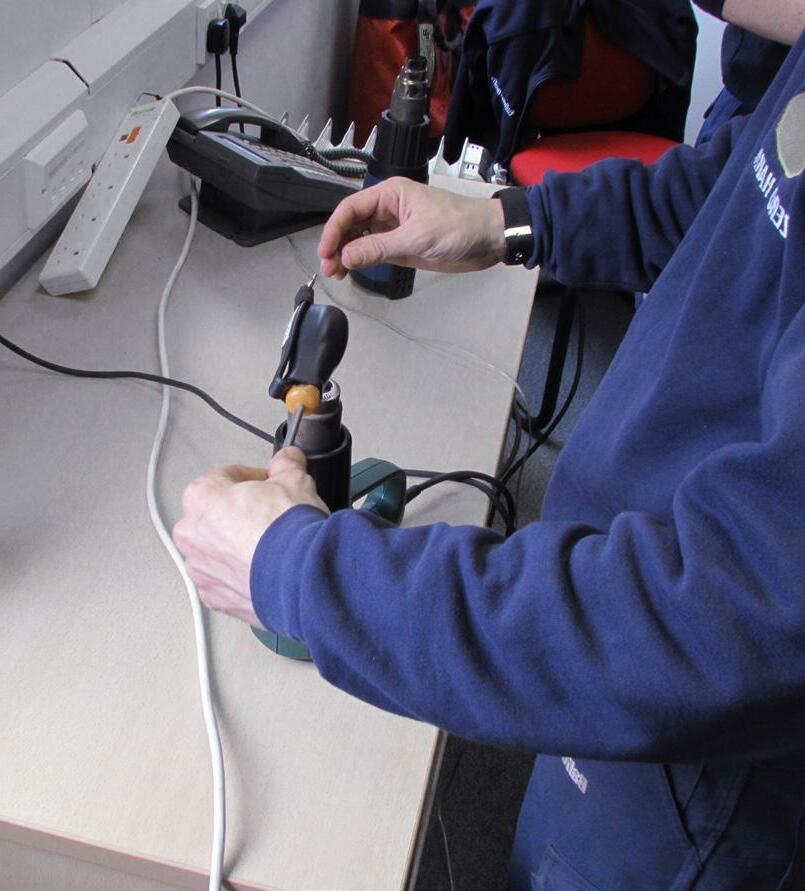
We believe your employees tool drop prevention skills should be proven just like any other height safety course. That’s why every trainee must sit a multi-choice examination to demonstrate their competence to use tools safely at height.


We provide our own projector, screen, laptop, the latest tool safety products, and a bag full of tethering equipment and tools to deliver the practical and theory lessons. We just need somewhere to teach. So if you’re booking a course on your site, don’t forget to arrange a training room that can hold the appropriate number of people.


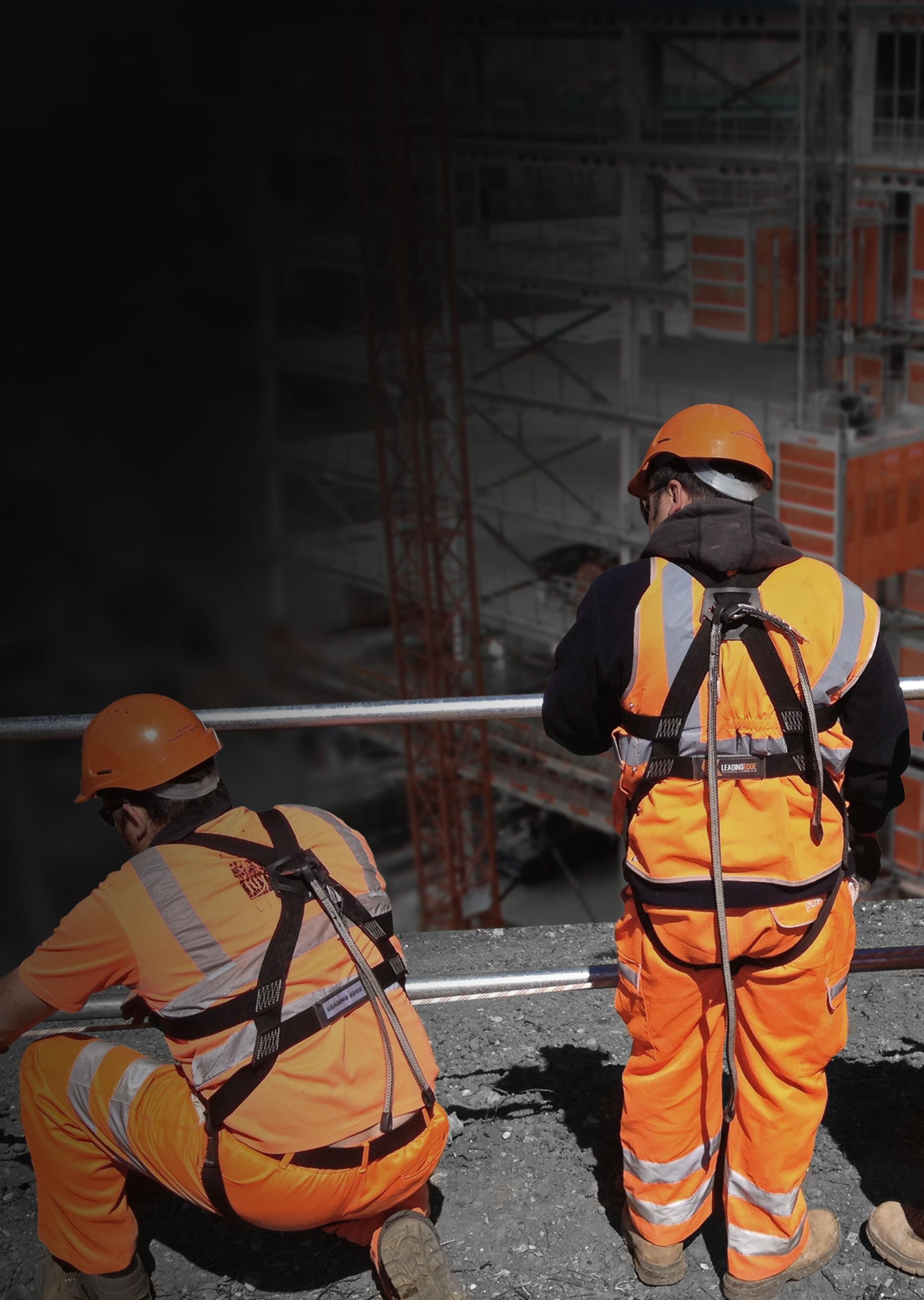
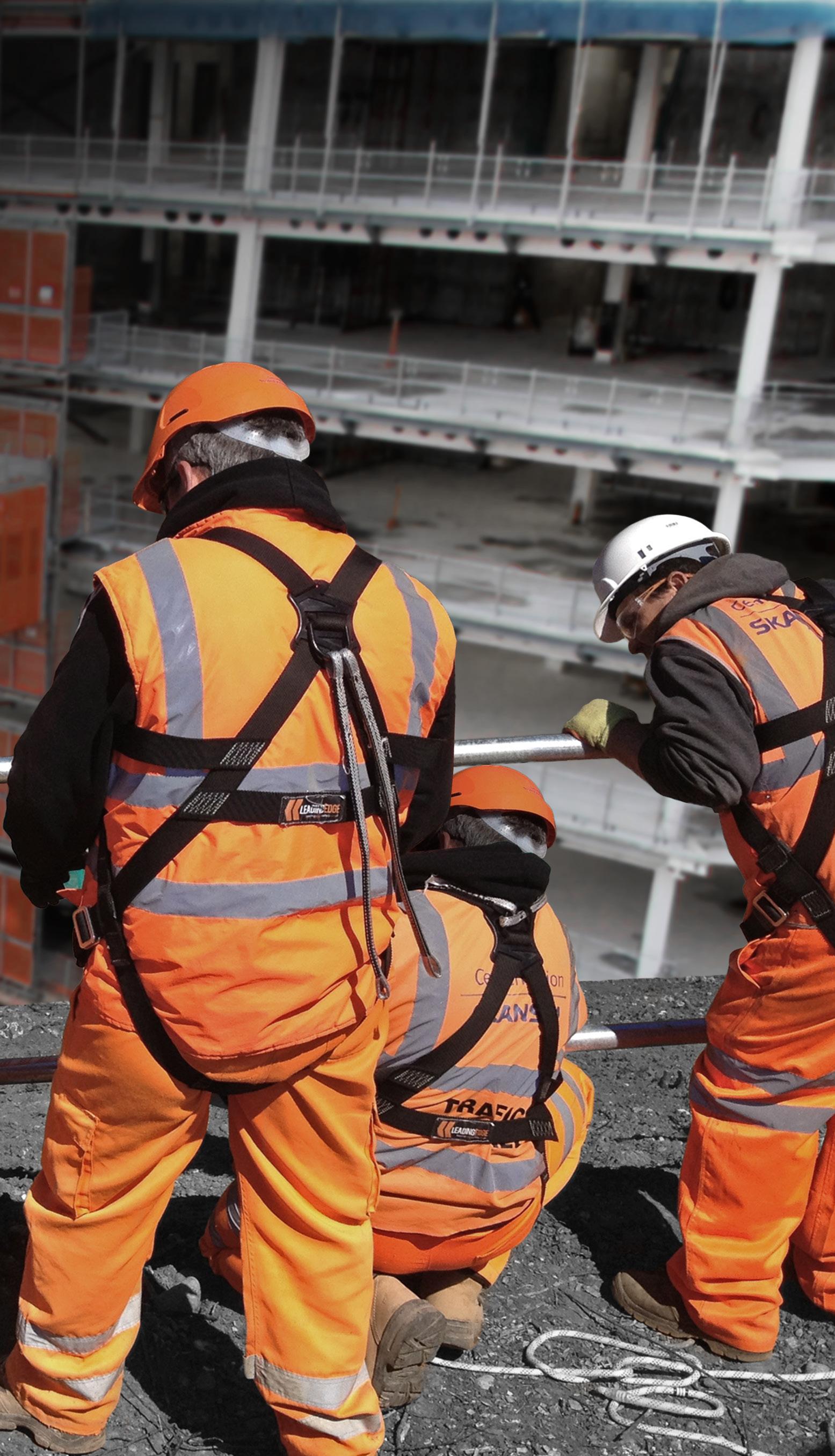


You might not think an extra strap under the arms would make much difference. But our testing showed they not only increase overall strength and make a big difference to the comfort, they also stop the harness riding up and elongating in the event of a fall, making it impossible to fall out.

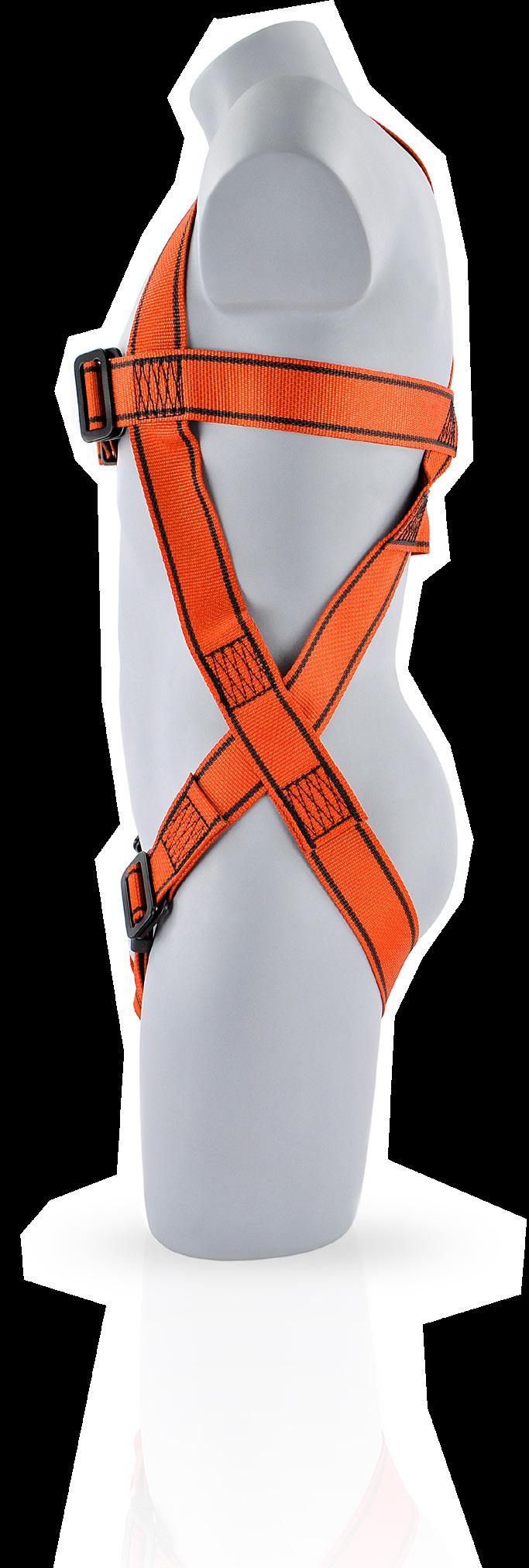
The load capacity of our harnesses goes all the way up to 21½ stone! They’re proven to be 100% safe – even for heavier harness users.
note: user weight should also allow for clothing and PPE

With a rescue step you’re fully protected from the dangers of hanging in a harness after a fall. It sits conveniently on your shoulder with a pull-cord, which when activated releases an adjustable system loop. Standing on this loop alleviates pressure and allows normal blood flow through your legs, giving you vital extra time to be recovered.


Tails make it easier to attach your harness to a fall-protection system. They extend the rear anchor point with a low-stretch high-strength Dyneema lanyard, which means you no longer have to reach between your shoulders to connect. Our tails are tested for high impact edge abrasion, feature reinforced eyelets and are rated to 26kN. When used in conjunction with inertia reels, they reduce the likelihood of the cable and hook coming into contact with the edge.


Leading Edge harnesses offer a choice of 1 or 2 points of anchorage attachment (front & rear). With 2-point harnesses, you have the option of either Soft Loops or D-Rings placed on the chest of your harness offering greater flexability in working.



Leading Edge harnesses come in three sizes, catering for people of all body shapes. To find a good fit, compare your chest measurement to the size ranges below. Keep in mind elasticated webbing harnesses are much more flexible with their sizing.
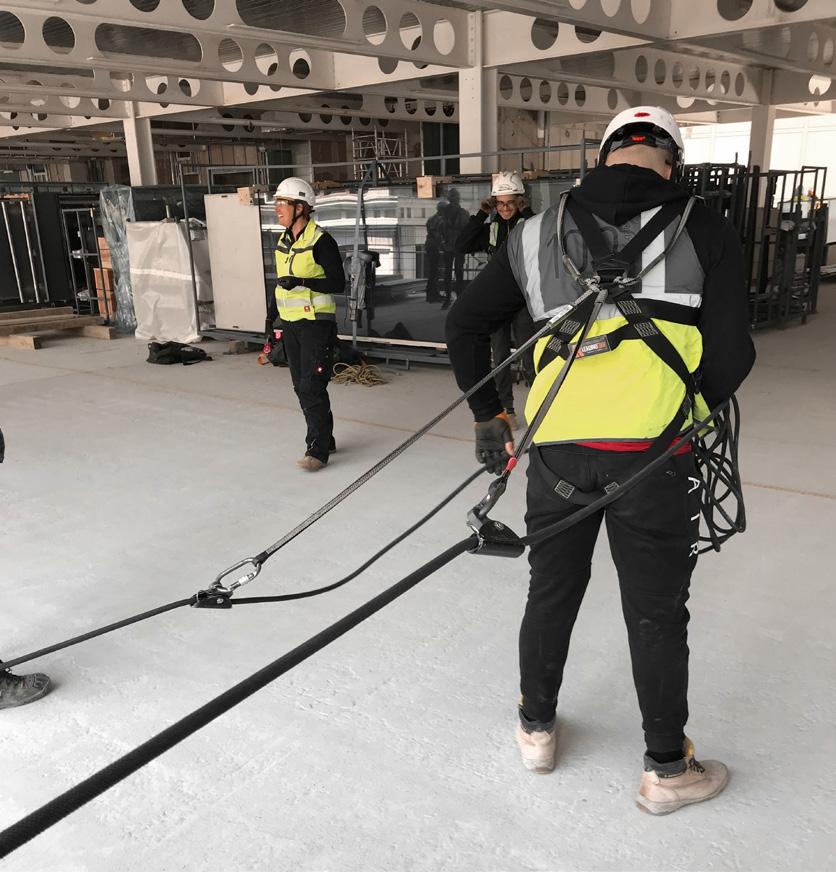
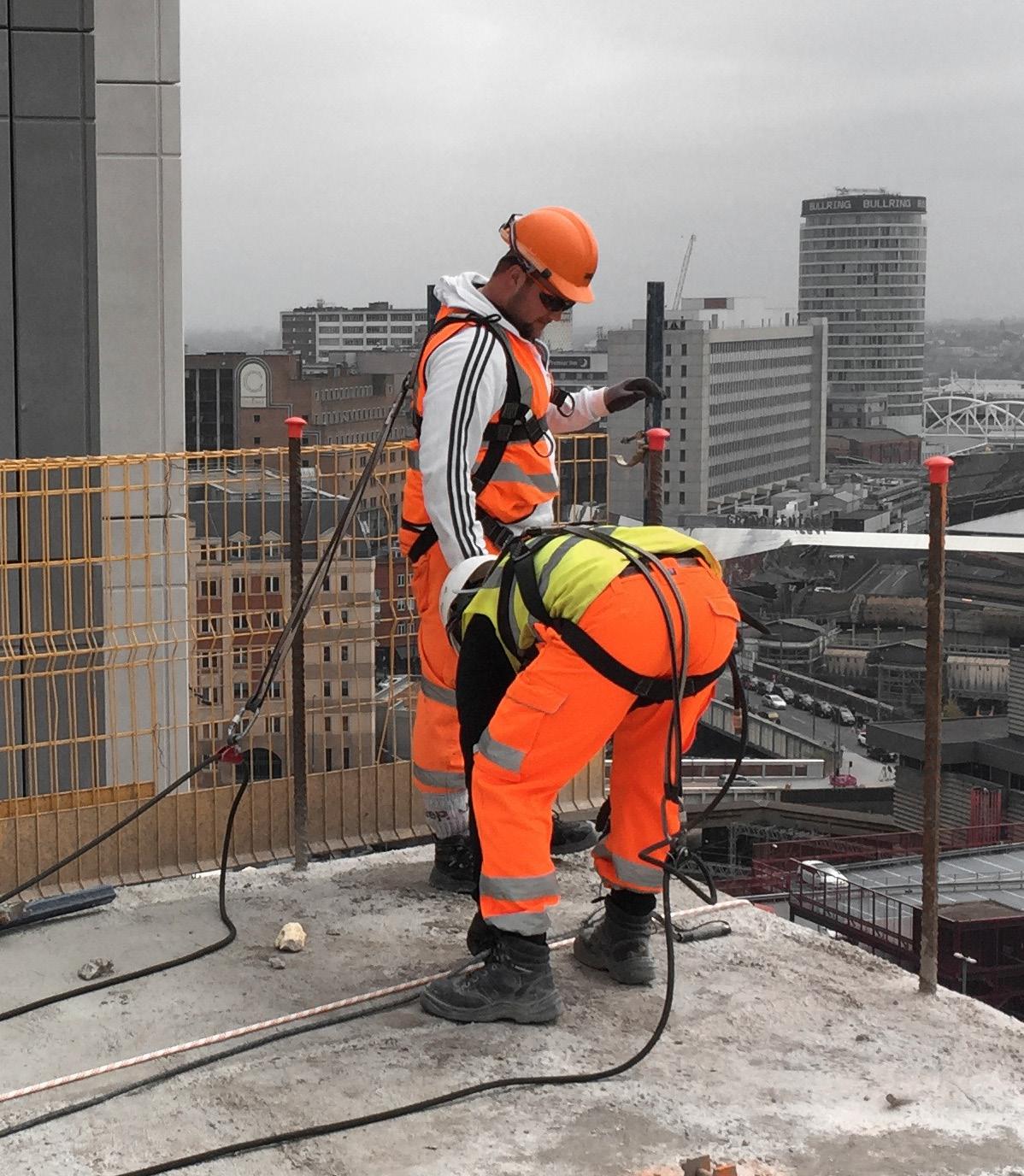
Check for minor cuts or abrasions on the webbing body. This type of damage can cause failure of the webbing during a fall. If anything looks suspicious, inform your manager and find a different harness.
A 1mm cut on the selvedge edge is enough to cause catastrophic failure with dynamic impact caused via a fall.
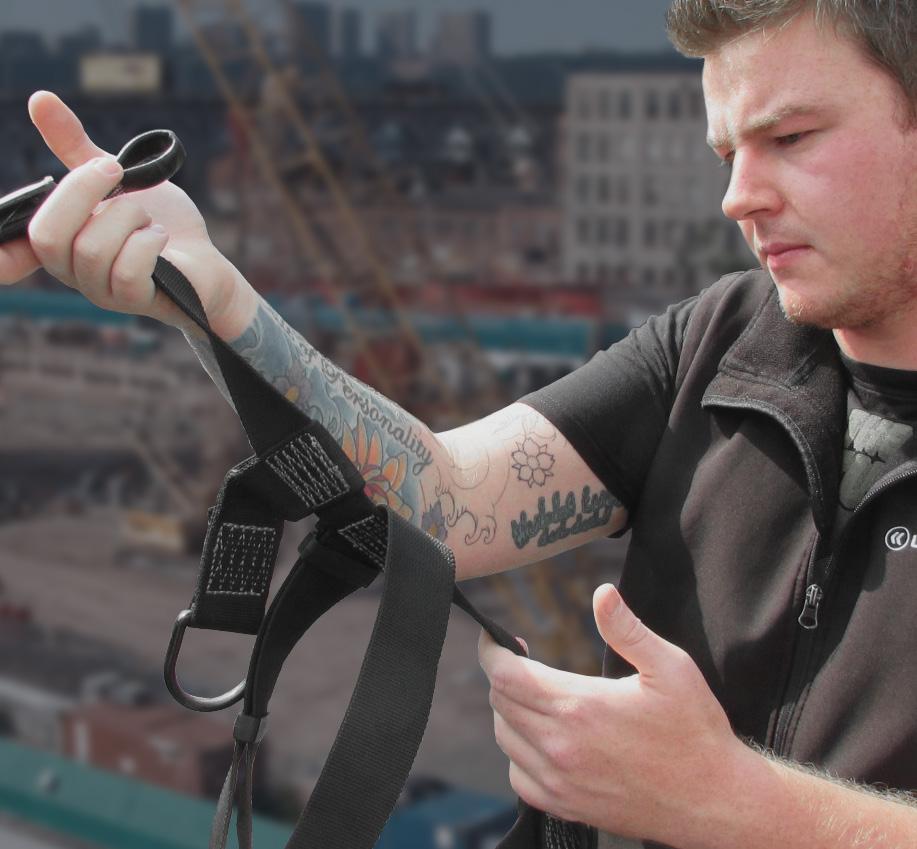
All harnesses are designed to dissipate impact forces into the largest muscle group: the thigh muscles. If worn loosely, the harness straps will ride up and transfer this harmful force into the base of the spine. Equally, there is a chance that you can fall out of the side of a loose harness. Wearing your harness correctly is vital for your safety!

Make sure your rear dorsal D-Ring is positioned correctly between your shoulder blades. It should never sit lower down your back. This would result in possible severe lower back trauma in the event of a fall.
Thread the metal buckles situated on your chest and leg straps, placing the male buckle through the female buckle to secure. They should sit flush against each other forming a solid link.
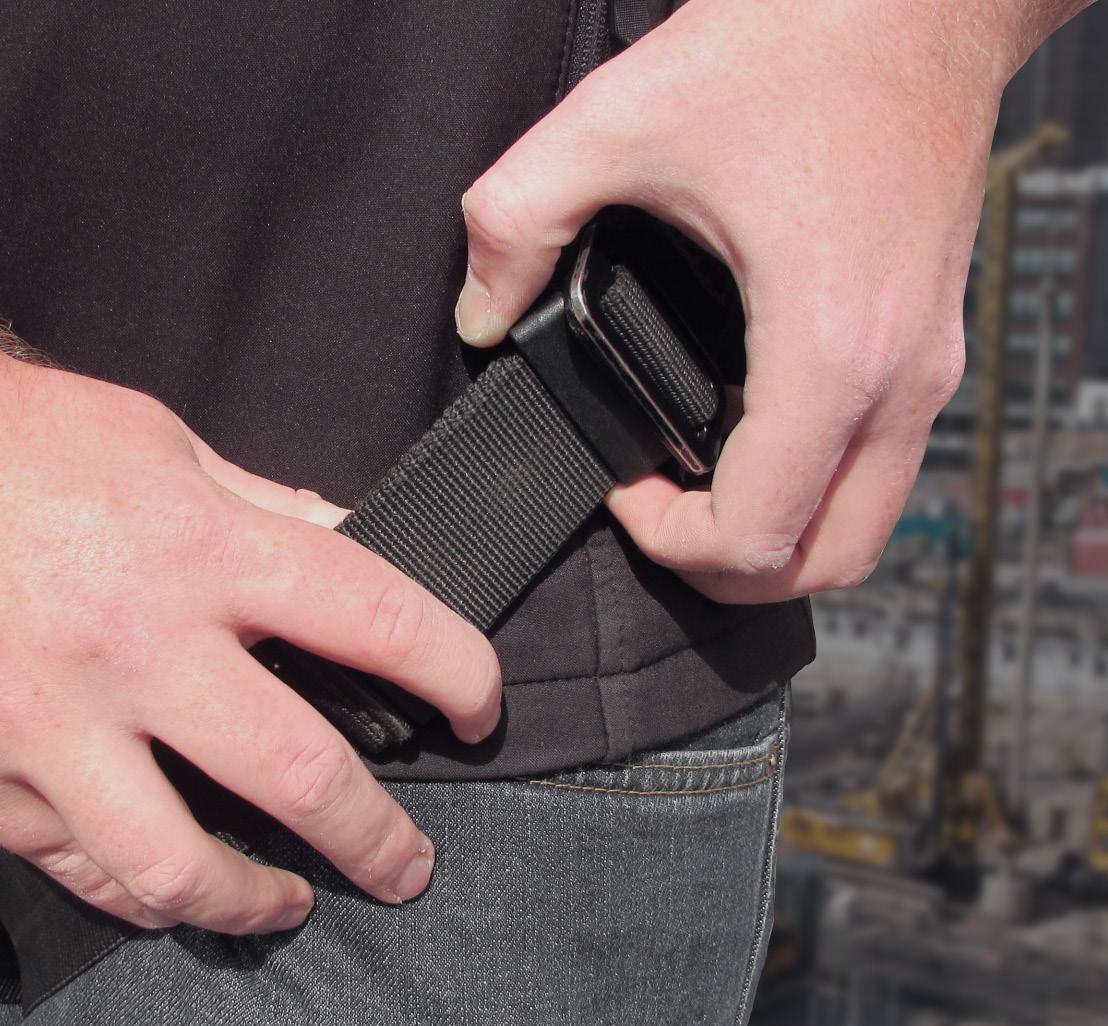
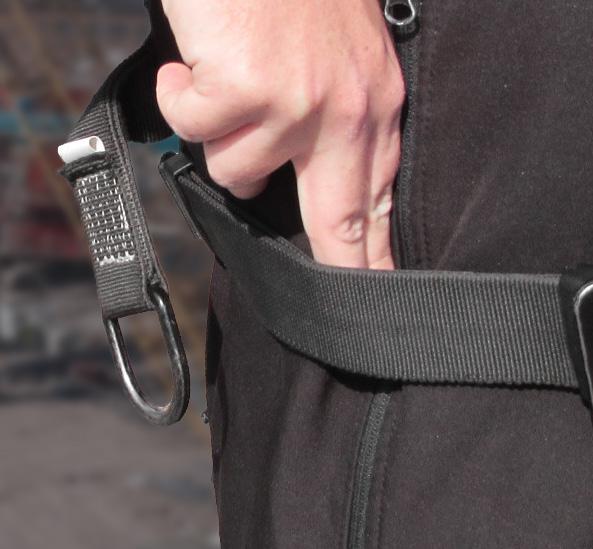
Adjust and Pull the ends of the loose straps to remove any slack. The ideal tension for both the chest and leg straps is ‘two fingers tight’ – i.e. when you can fit two fingers between your body and the harness strap. Loose webbing causes harmful localised impact trauma.
Make sure at least one plastic slider on each strap is pushed tightly against it’s buckle. This ‘locking off’ prevents the webbing slipping through the buckle during a fall – otherwise you risk either falling out of your harness or (given enough free fall) incurring damage.

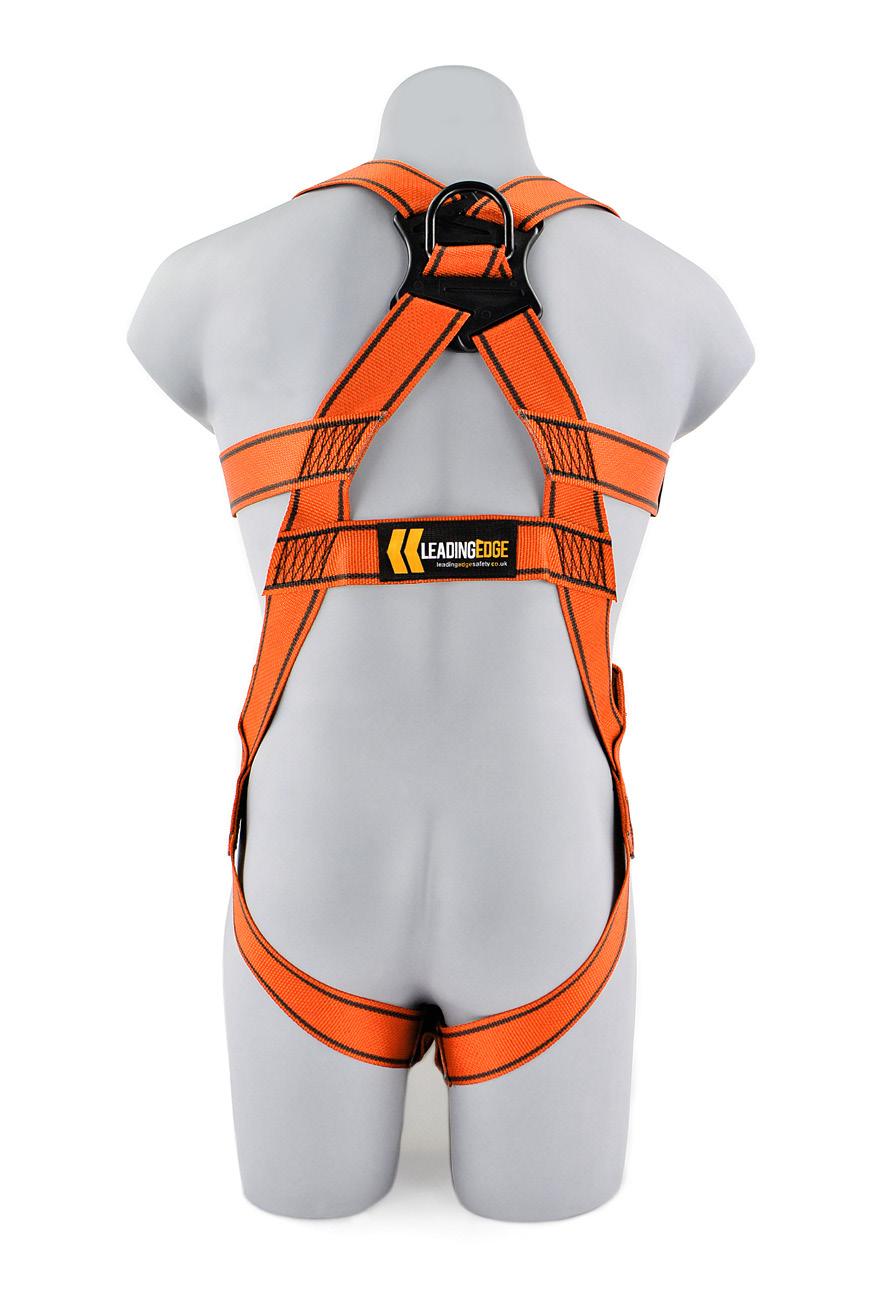
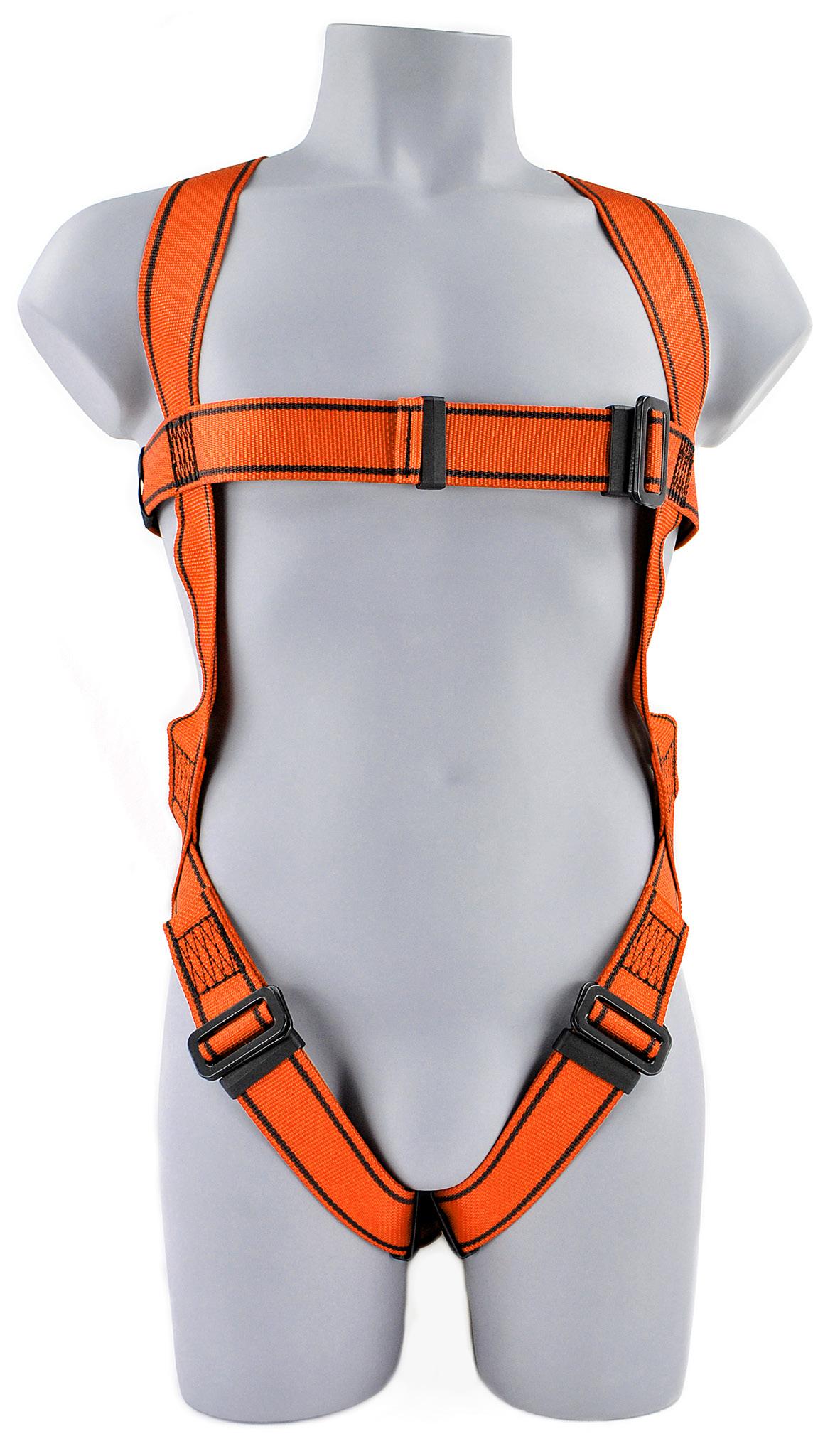







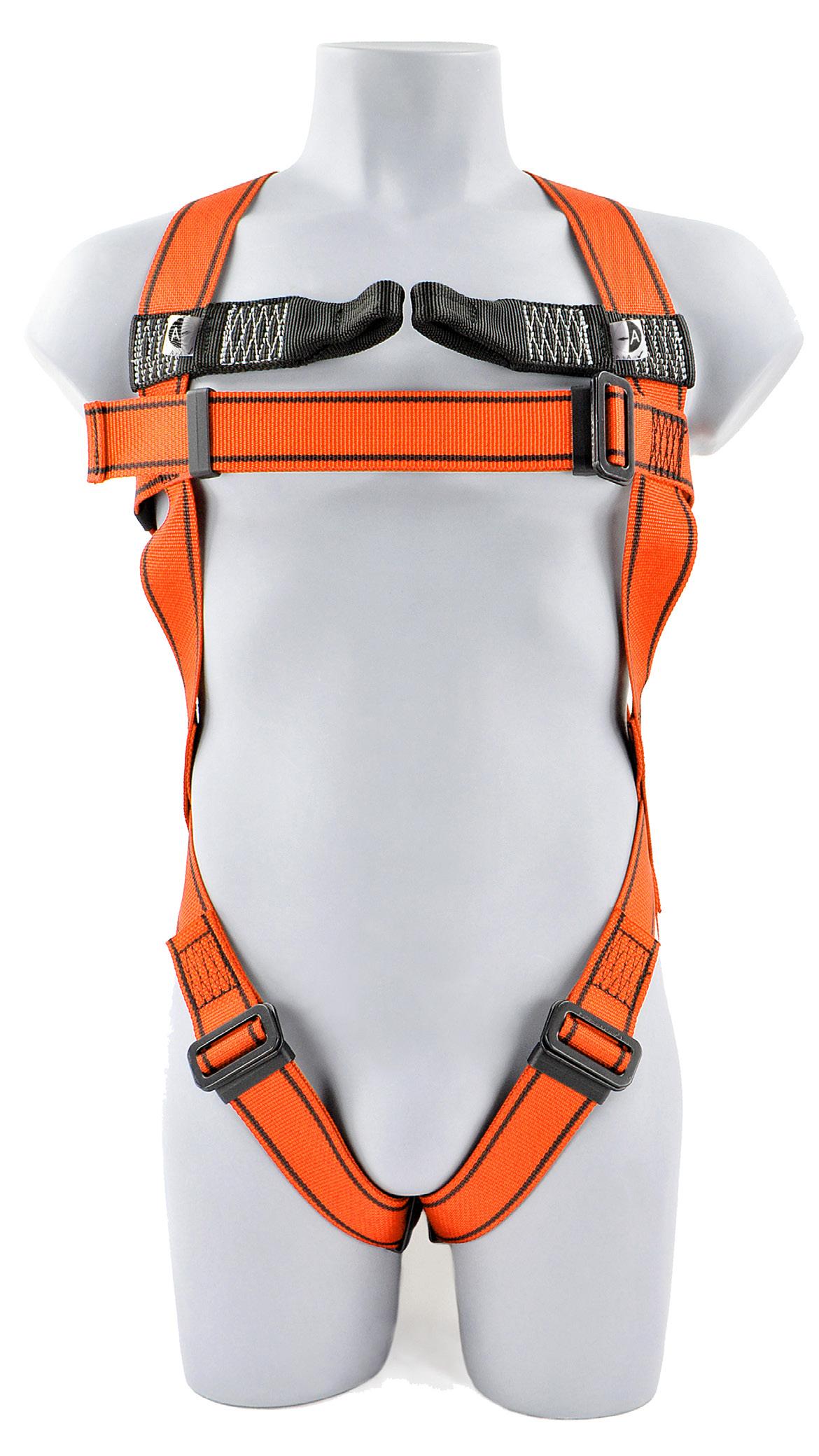



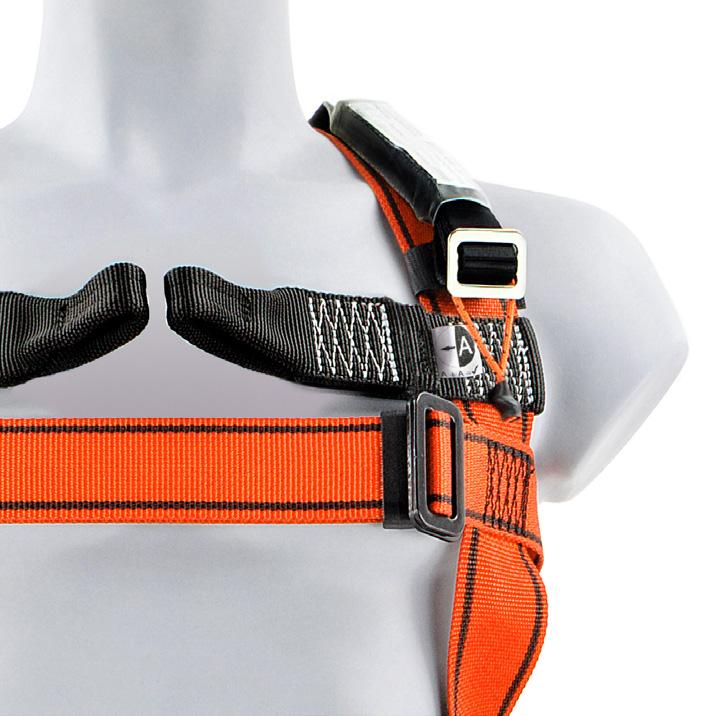





Our black elasticated harnesses have a number of major benefits over standard harnesses – ideal if you work in your harness day in, day out.
Our premium black elasticated harness webbing has a subtle flex that moves and stretches with you as you work. It makes a huge difference and encourages proper fitting due to the increased level of comfort. We recommend it if your job requires you to wear a harness for long periods of time.

We make most of our harnesses by hand in our own UK factory to maintain the highest levels of safety and quality.

When you invest in a harness, service life matters. By coating the harness material with Teflon (a synthetic fluoropolymer) they instantly gain resistance to UV, heat and chemicals whilst also becoming waterproof with low friction. In simple terms, it provides a protective shield that greatly increases durability.


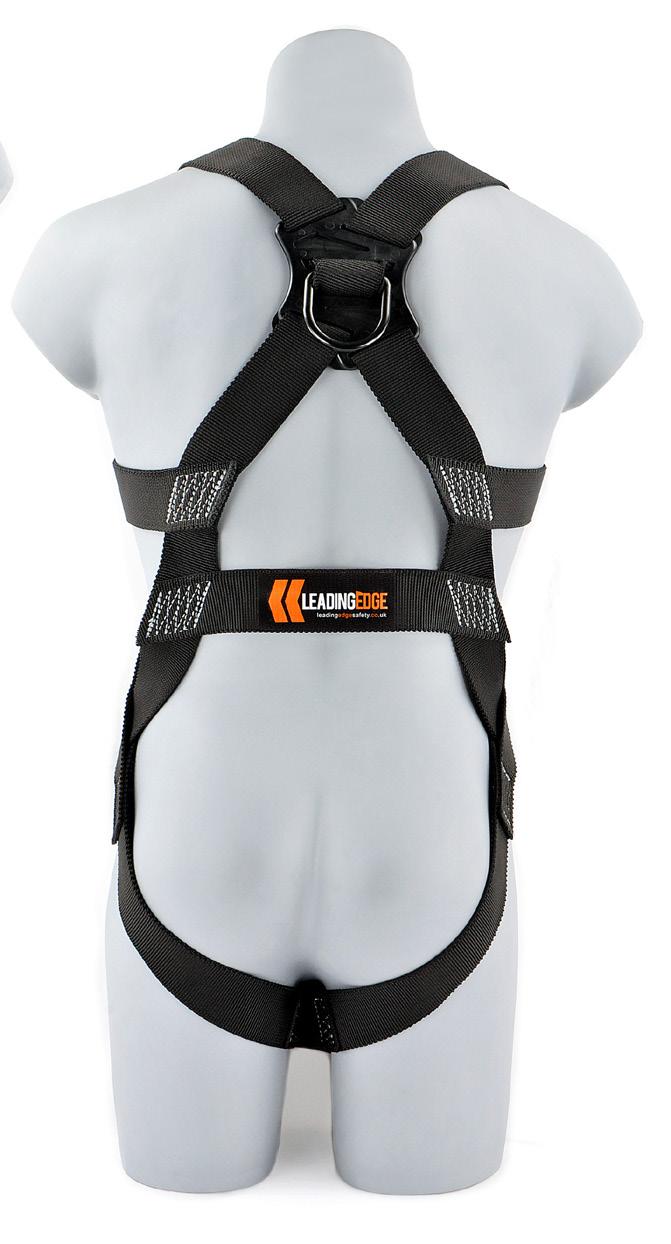


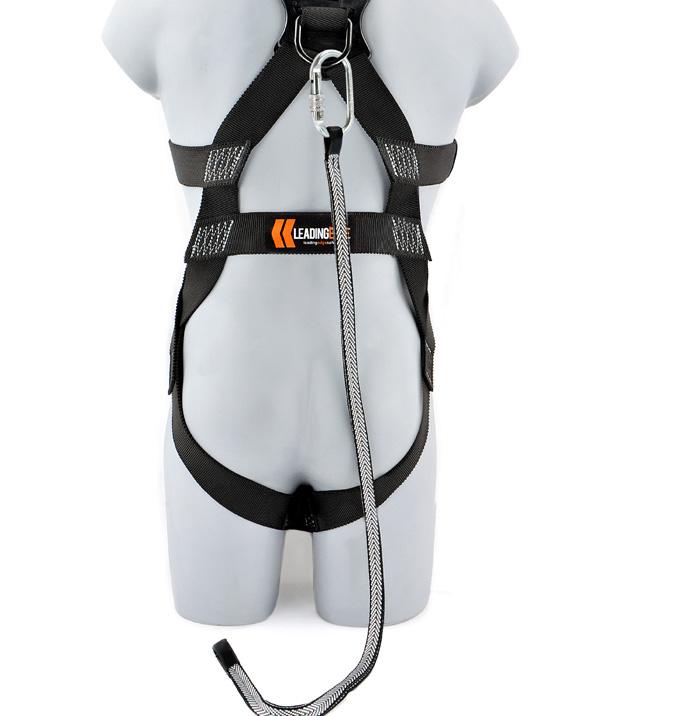








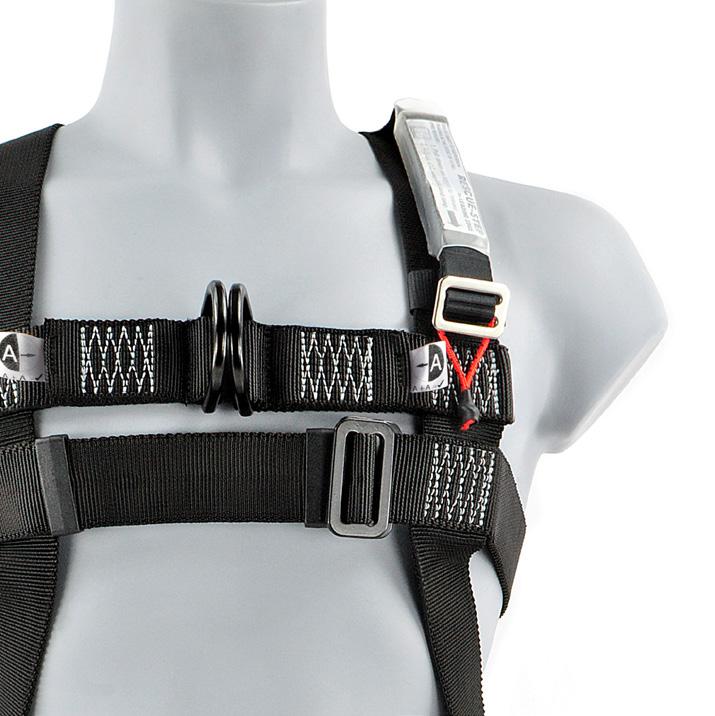







Protective case contains information tag to record annual inspections.
Elastic webbing for work positioning.
Easy-to-use aluminium alloy bent D-Rings.

Elastic webbing for work positioning.

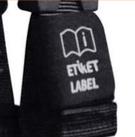
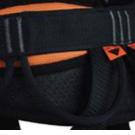
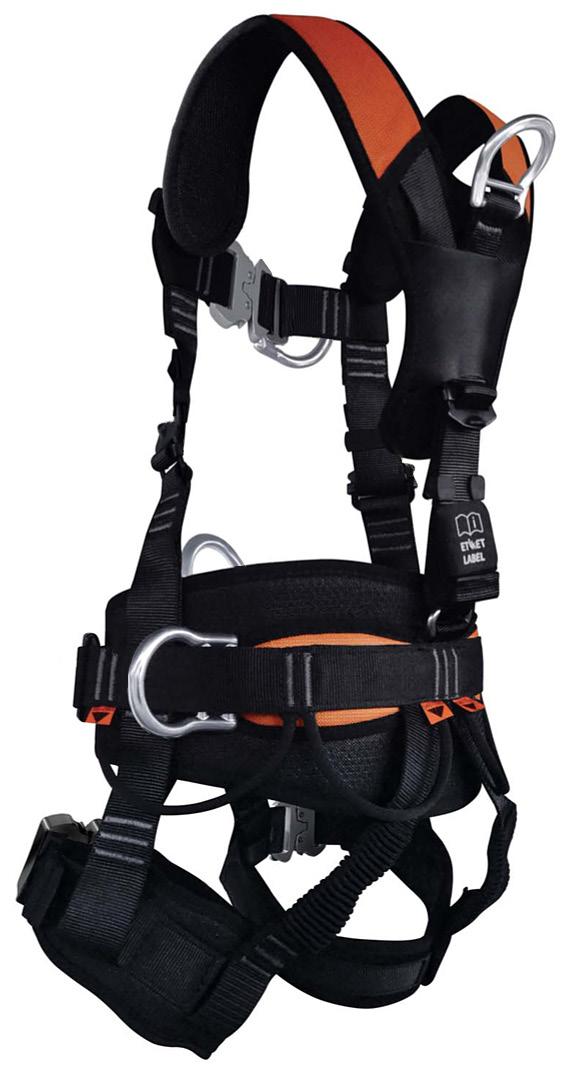

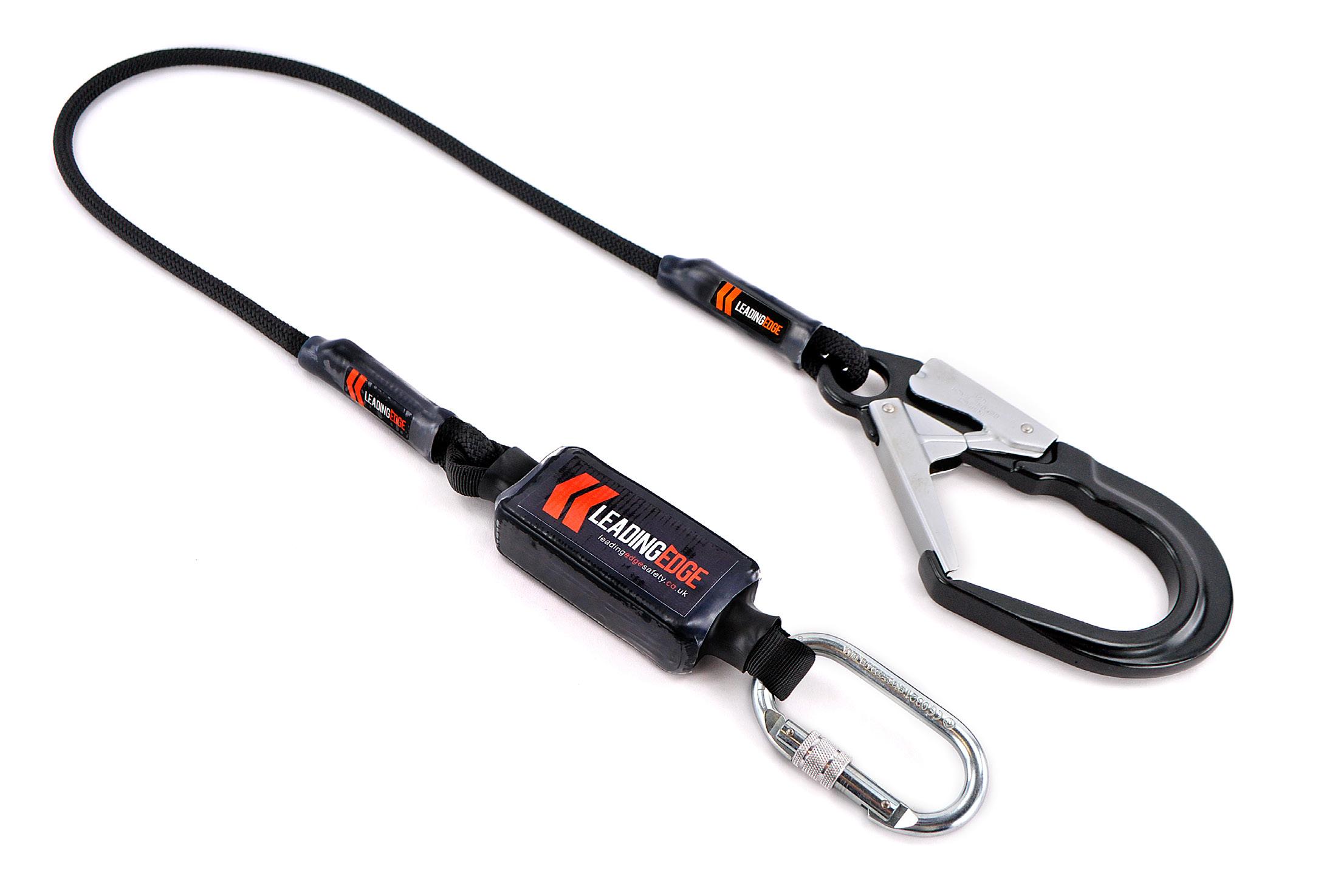
Lanyards are the most extensively used piece of equipment in the height safety arsenal. It’s no surprise given their versatility in working lengths up to a maximum of 2m. There are 5 different kinds of lanyards used to achieve a range of safe access from simple fixed restraint lanyards for static locations up to adjustable twin lanyards for climbing and traversal of complex structures. Lanyard are fully covered by our working at height courses, where you’ll learn the theory around selection, suitability and practical use of your lanyard. This gives you the ability to confidently and competently select and use the right lanyard for the right application.
Allow users to work within a limited proximity of an open edge in restraint. Each lanyard can be varied in length from 1m-2m to suit the needs of the job or working at height situation for maximum flexibility depending on anchorage location, height of user and proximity to the hazard.
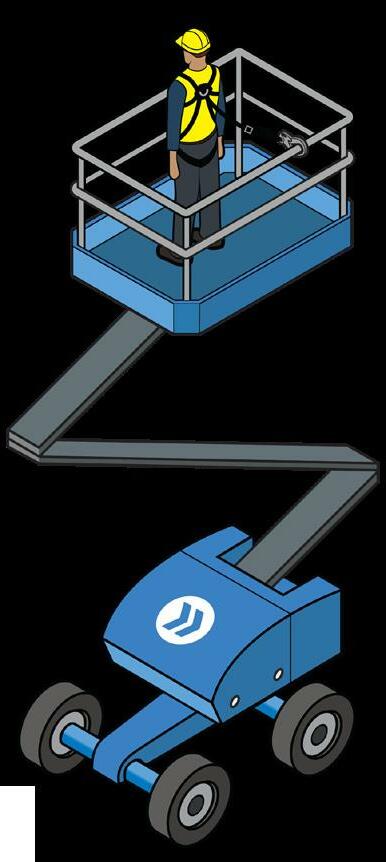


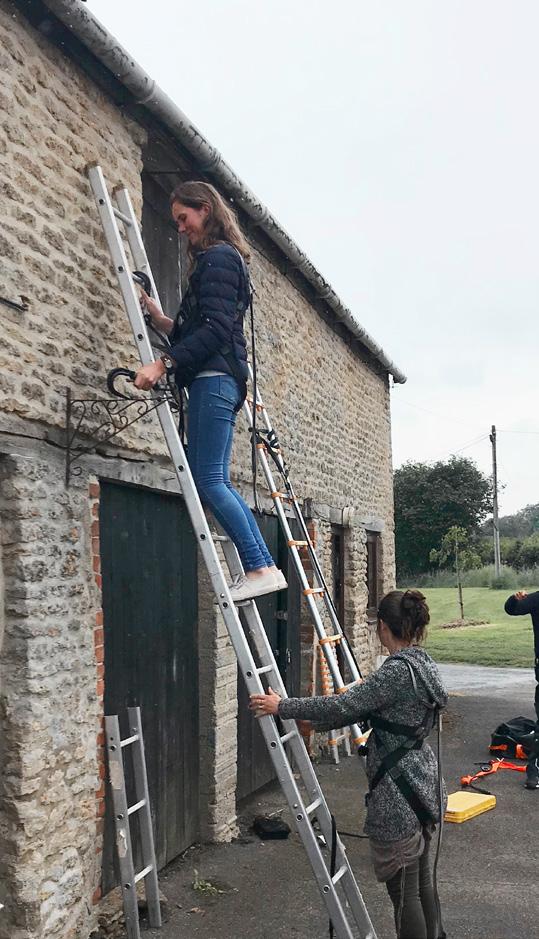

Allow users the ability to work in restraint, but with the freedom to continuously adjust their system length to work within the proximately of an open edge or edges. Adjustable lanyards have a built in fall arrest backup safety system and can be purchased in any adjustable lengths to suit the needs of your job.
Fall arrest lanyards reduce the impact of a fall via a shock-absorber within the system. They can potentially open up to 1.75m in a fall factor 2 scenario. These lanyards come in lengths up to a maximum of 2m. They should only be used with sufficient height clearance.
Allow users to stay continuously tied off when climbing or moving between anchor points. Twin lanyards come in various forms and types of materials to suit the needs of the job or working at height situation but ensure 100% tie off.

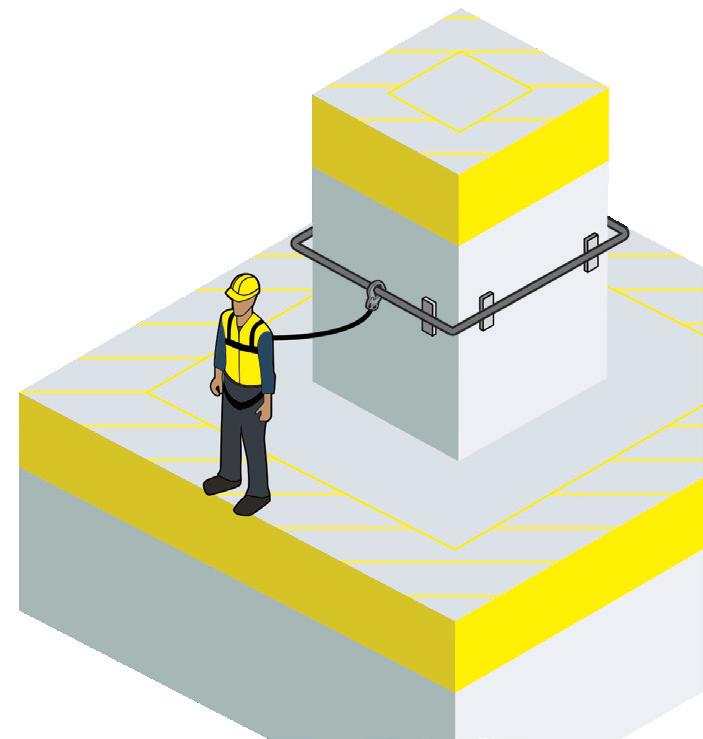

Allow users to work in restraint with restricted access to the open edge, due to the lanyard being a fixed distance suitable for that situation or individual’s needs. Fixed lanyards can be purchased in any individual length form 0.5m-2m in a range of materials to suit the needs of the job or working at height situation.

Adding a dyneema tail to your harness extends the attachment point on the rear dorsal plate away from the hard-to-reach area between your shoulder blades. This makes it incredibly easy to hook up to your inertial reel or adjustable fall restraint system (Edge), whilst visually verifying a safe connection.
Tails are made from Dyneema – part of the Kevlar family of advanced narrow fibres. They are extremely strong, abrasion resistant, lightweight and flexible. As a result, they can be choked, wrapped or used over an edge.
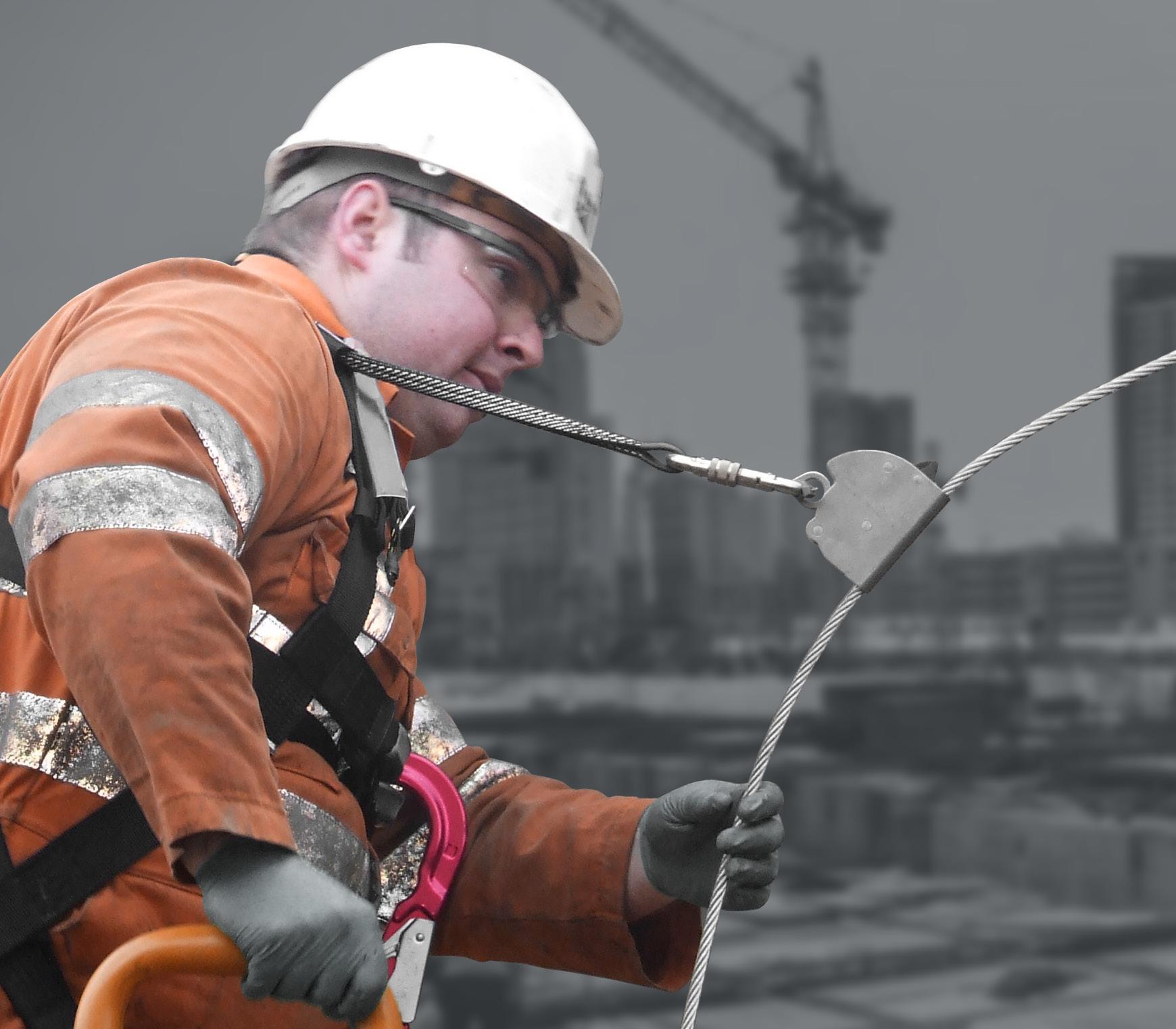




Fixed rope lanyards provide a simple way to work in restraint, for environments where working in fall arrest is unsuitable or not permitted. MEWP’s are a common use case.
Using a lanyard with correct length, simply attach one end to the anchorage point inside the basket and the other to your harness. The lanyard then allows you to work up to a fall hazard but never move beyond it. This means a shock-absorber is not required. It also enables a greater scope of anchorage points.
Unlike traditional three strand twisted rope, which is stiff and vulnerable to abrasion, MEWP lanyards are made from advanced multi-braid rope with a protective outer-wear sleeve. This makes them extremely hard-wearing for daily use in harsh environments. The components are also machine sewn, which, unlike splicing or knotting techniques, maintains the lanyards load capacity.

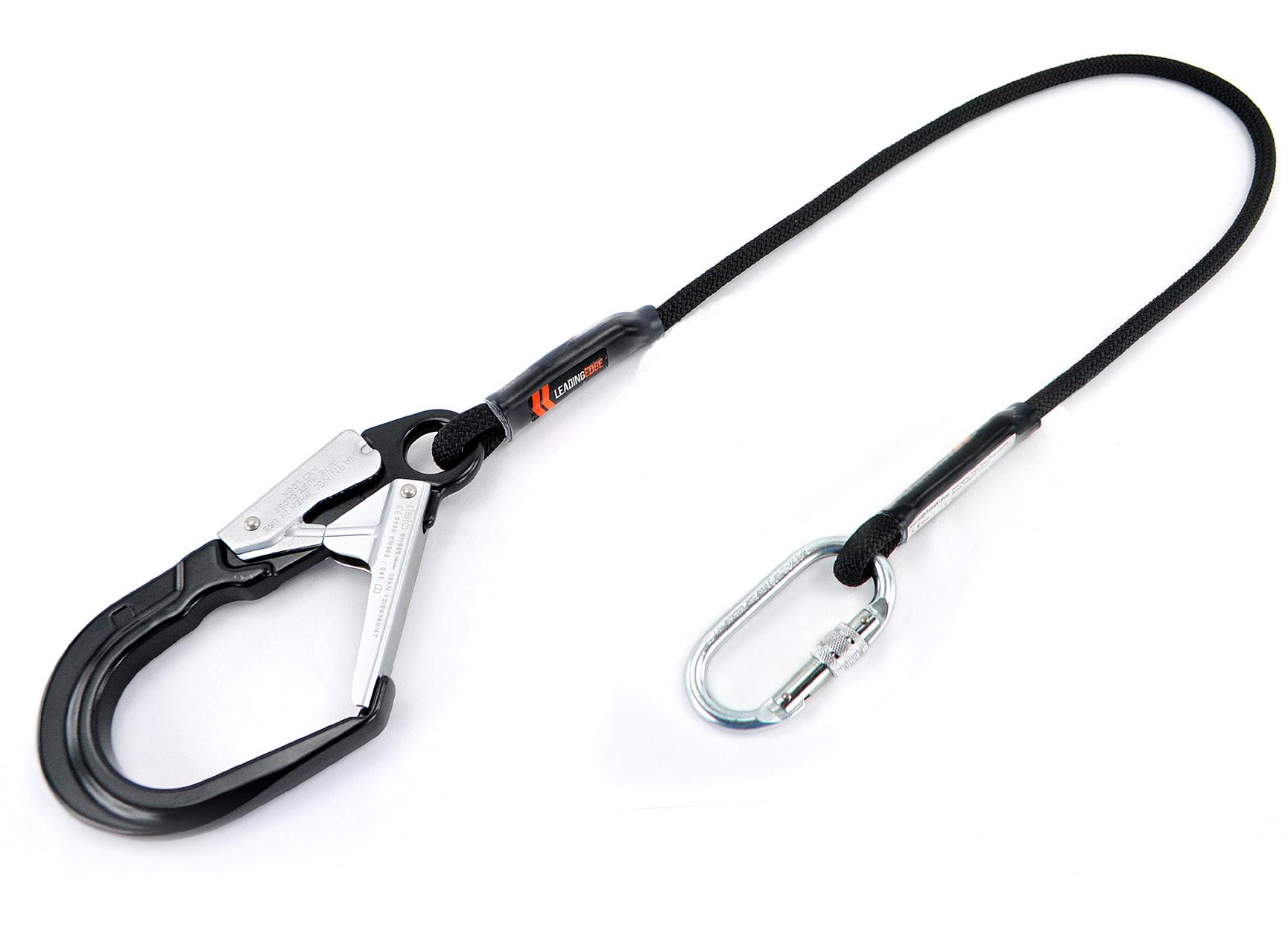
1m LAN-FIXED-R-KK-1
1.5m LAN-FIXED-R-KK-1.5
2m LAN-FIXED-R-KK-2

1m LAN-FIXED-R-KSCAFF-1
1.5m LAN-FIXED-R-KSCAFF-1.5
2m LAN-FIXED-R-KSCAFF-2

Traditional shock-absorbers use a single internal tear-strip (to reduce impact force) combined with an additional structural loop. Leading Edge shock-absorbers utilize advanced narrow fibres to create a ‘dual-tear’ system. This features two webbing tear-strips sewn together to form it’s own structural loop. The benefit is twofold. Firstly, the energy from a fall is transferred equally between two straps instead of one. This halves the stopping distance and creates a much smoother arrest trend, making a fall feel less aggressive. Secondly, the internals compress into a much smaller space, resulting in a more compact, robust and lightweight design.
The packs will only open in an actual fall and always remain integrally connected, even if they become overloaded. This means you can safely use one as a connection link in your system without fear of it pulling open accidentally or failing.

The next-generation shock-absorbing lanyard offers several improvements in design, materials. This gives you greater protection, performance and service life thanks to the advanced abrasion-resistant multi-braid rope, sewing techniques and high quality metal components. The Leading Edge advanced-fibre shock-absorber also greatly reduces impact force and potential stopping distance, making a fall much safer and less aggressive on your body.
This type of lanyard is most commonly utilized by scaffolders but can also be used by anyone requiring limited access, with a maximum of 2m workable access between anchorage point and harness.

1m LAN-RSHOCK-KK-1
1.5m LAN-RSHOCK-KK-1.5

2m LAN-RSHOCK-KK-2
1m LAN-RSHOCK-KSCAFF-1
1.5m LAN-RSHOCK-KSCAFF-1.5
2m LAN-RSHOCK-KSCAFF-2
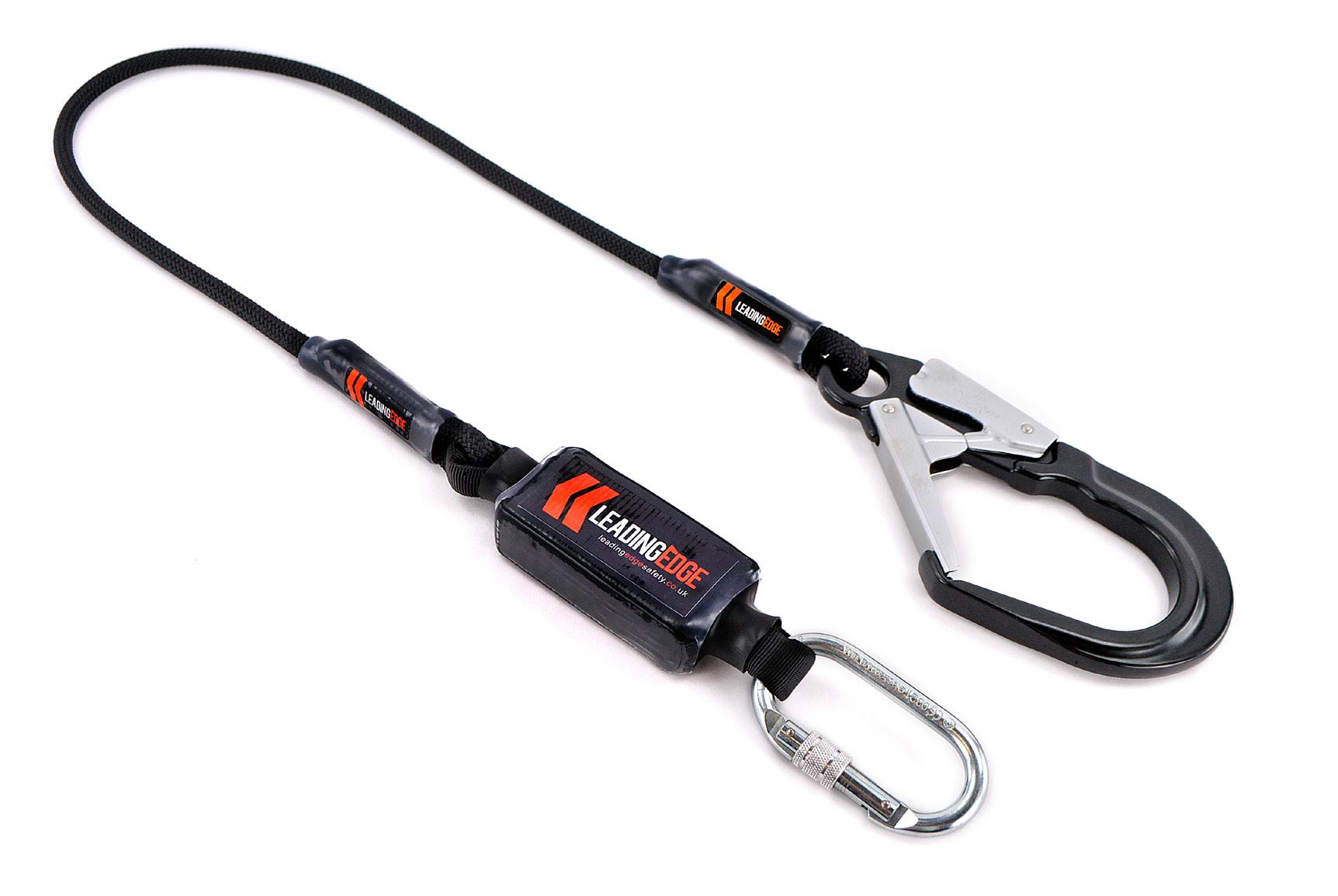
The next-generation climbers lanyard offers several improvements in design, materials. This gives you greater protection, performance and service life thanks to the advanced abrasion resistant multi-braid rope, sewing techniques and high quality metal components. The Leading Edge advanced fibre shock-absorber also greatly reduces impact force and potential stopping distance, making a fall much more comfortable and less jarring on your body.
When climbing horizontally or vertically the twin arms provide 100% tie-off while traversing between anchorage points by ensuring at least one lanyard is connected at all times.

» Edge-tested for high impact edge abrasion
» Advanced shock-absorber pack
» Twin lanyard arms, 100% tie-off
» Max user weight: 136kgs
» Minimum breaking load: 26kN
» CE approved
» Made in the UK
1m
LAN-TRSHOCK-KK-1
1.5m LAN-TRSHOCK-KK-1.5
2m LAN-TRSHOCK-KK-2


1m
LANTRSHOCK-KSCAFF-1
1.5m LAN-TRSHOCK-KSCAFF-1.5
2m LAN-TRSHOCK-KSCAFF-2
Shock-absorbing variable restraint lanyards have all the benefits of working in restraint (eliminating the risk of a fall, controlling working area etc.) with the additional advantage of a built in shock-absorber pack. This means the lanyard can adjust to suit required working length and be used like a normal shock-absorbing fall-arrest lanyard.
Example: a scaffolder working at low level with restricted height clearance can simply shorten the lanyard length to work in restraint, preventing them from reaching a fall hazard. At higher levels with enough height clearance, it can be fully extended to gain maximum freedom of movement while staying protected by the fall arrest shock-absorber.
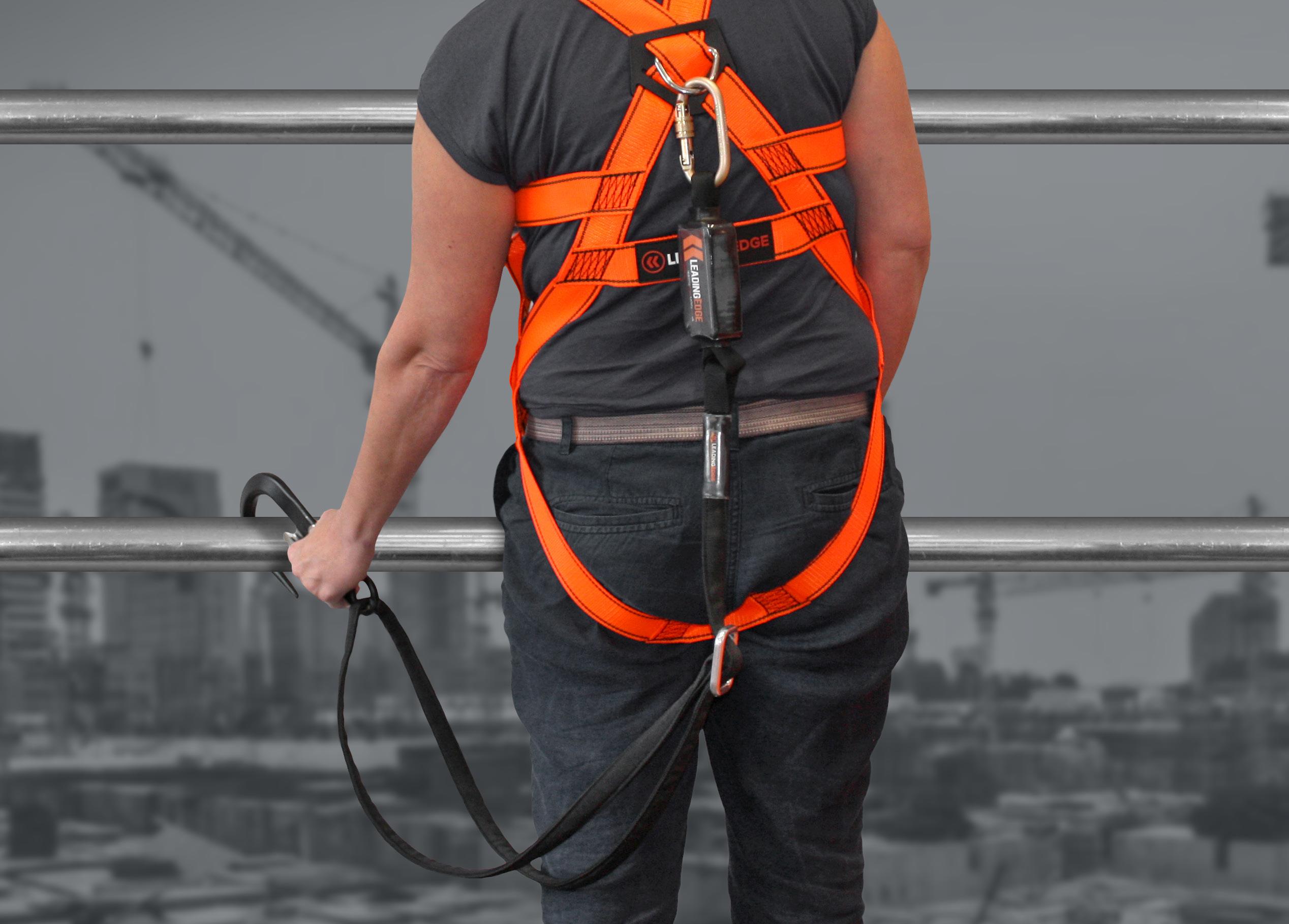
» 14mm low stretch/high strength dyneema webbing
» 25mm Teflonised polyester tubular webbing outer jacket
» Edge-tested for high impact edge abrasion
» Shock absorber pack
» Max adjustment length 2m (including connectors)
» Max user weight: 136kgs
» Minimum breaking load: 26kN
» CE approved
» Made in the UK
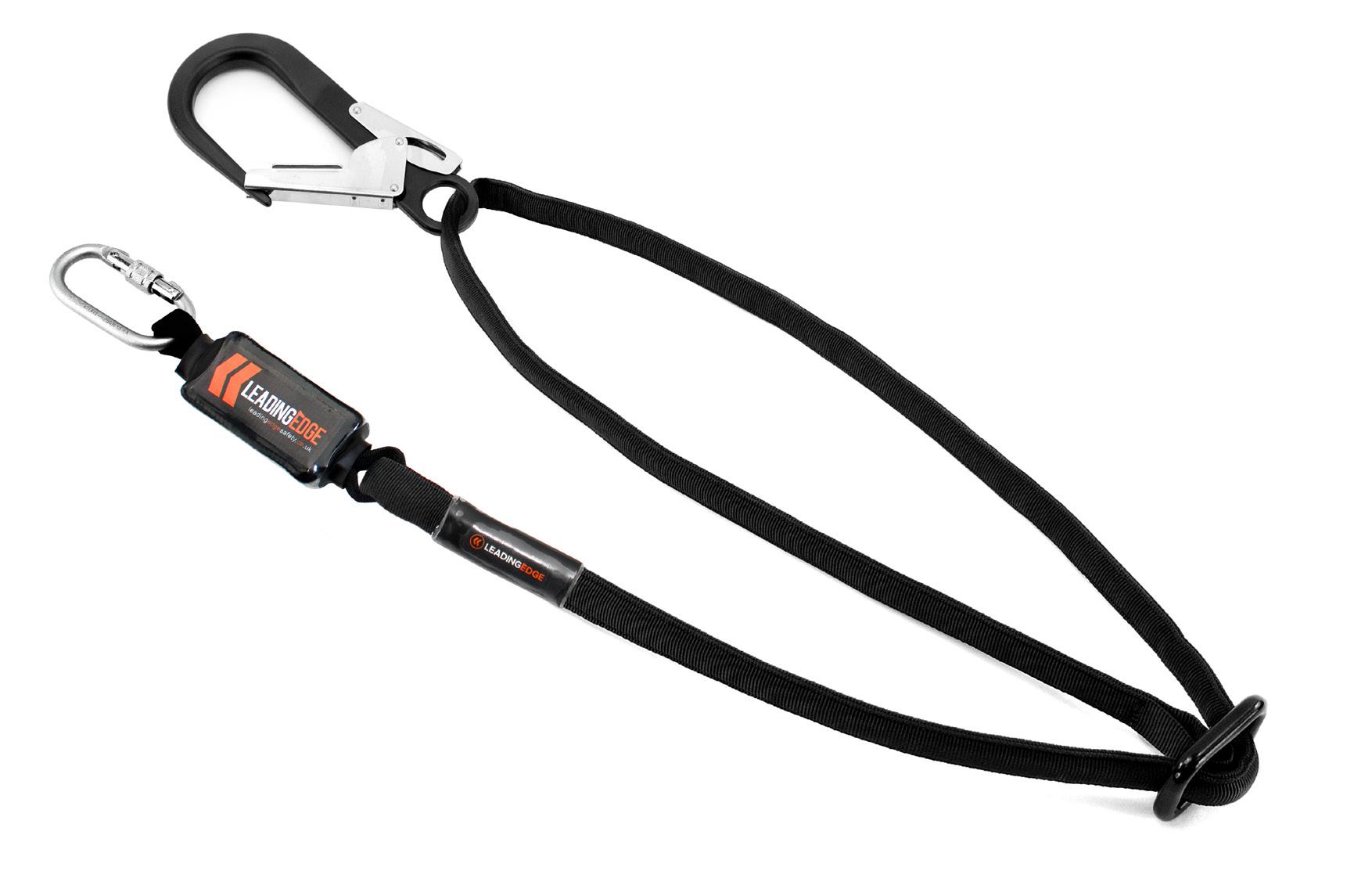
PRO-LAN-VAR-KK-2
PRO-LAN-VAR-KSCAFF-2

Variable restraints allow you to work safely with height exposure by restricting you from reaching zones where the risk of a fall exists. They operate similarly to fixed restraints but have far greater flexibility, because the working length can be manually increased or decreased to accommodate a wider scope of applications. This saves you from requiring multiple fixed length lanyards of different lengths.

The ‘one size fits all’ approach is particularly helpful when accounting for user height variance in relation to anchorage distance and position – for example mobile elevated work platforms, railings etc.
» 14mm low stretch/high strength Dyneema webbing
» 25mm Teflonised polyester tubular webbing outer jacket
» Edge-tested for high impact edge abrasion
» Max adjustment length 2m (including connectors)
» Max user weight: 136kgs
» Minimum breaking load: 26kN
» CE approved
» Made in the UK
LAN-VAR-KK-2
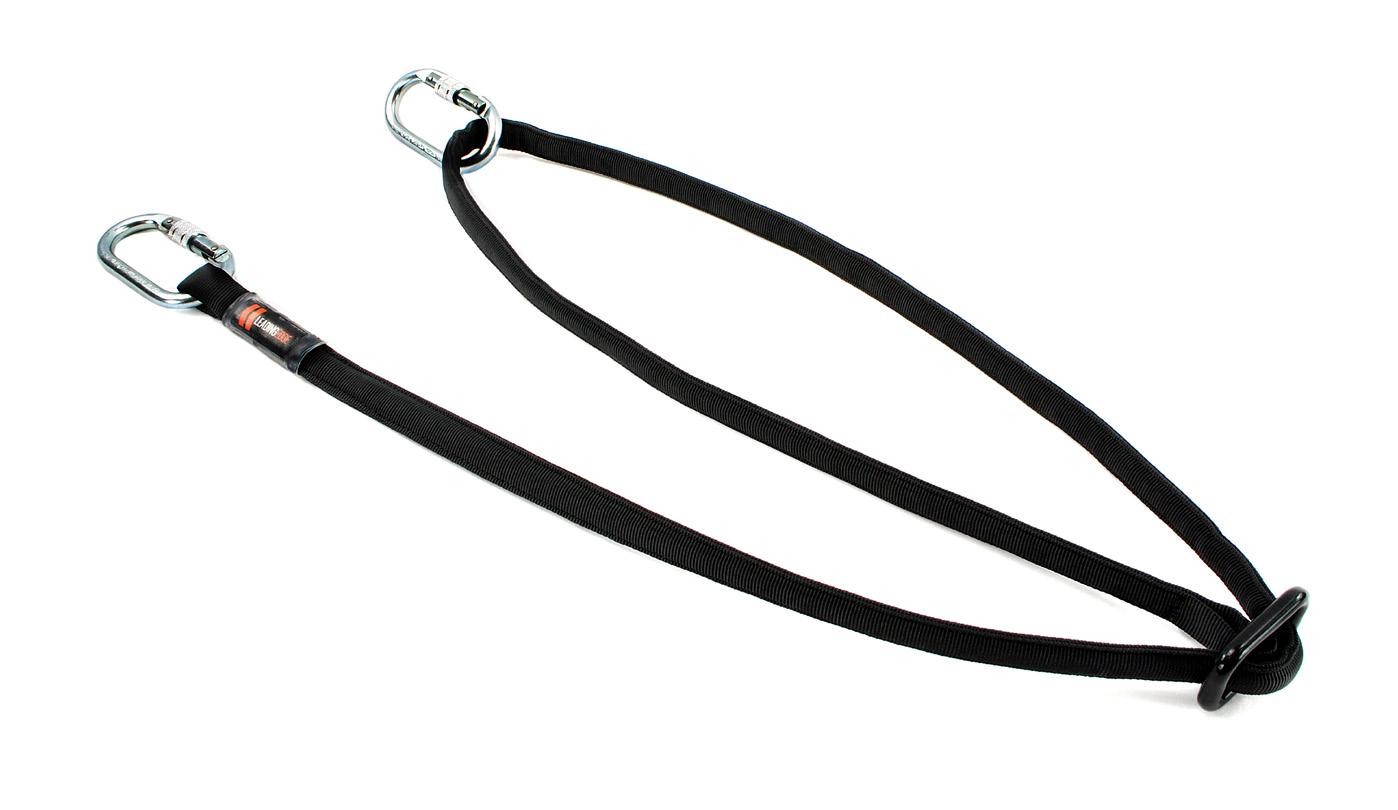

LAN-VAR-KSNAP-2
LAN-VAR-KSCAFF-2

Advanced adjustable single lanyards allow continuous length adjustment to suit the application. This means you can manually set the desired working distance between the anchorage and the fall hazard, limiting your exposure of a fall.
The restraint lanyard facilitates both horizontal and vertical use and features built-in fall arrest protection should you fall, with the added safety benefit of reduced stopping distance.

» 11mm multi-braid pro-static rope
» Advanced fall arrest rope grab
» Edge-tested for high impact edge abrasion
» Max user weight: 136kgs
» Minimum breaking load: 26kN
» CE approved
» Made in the UK

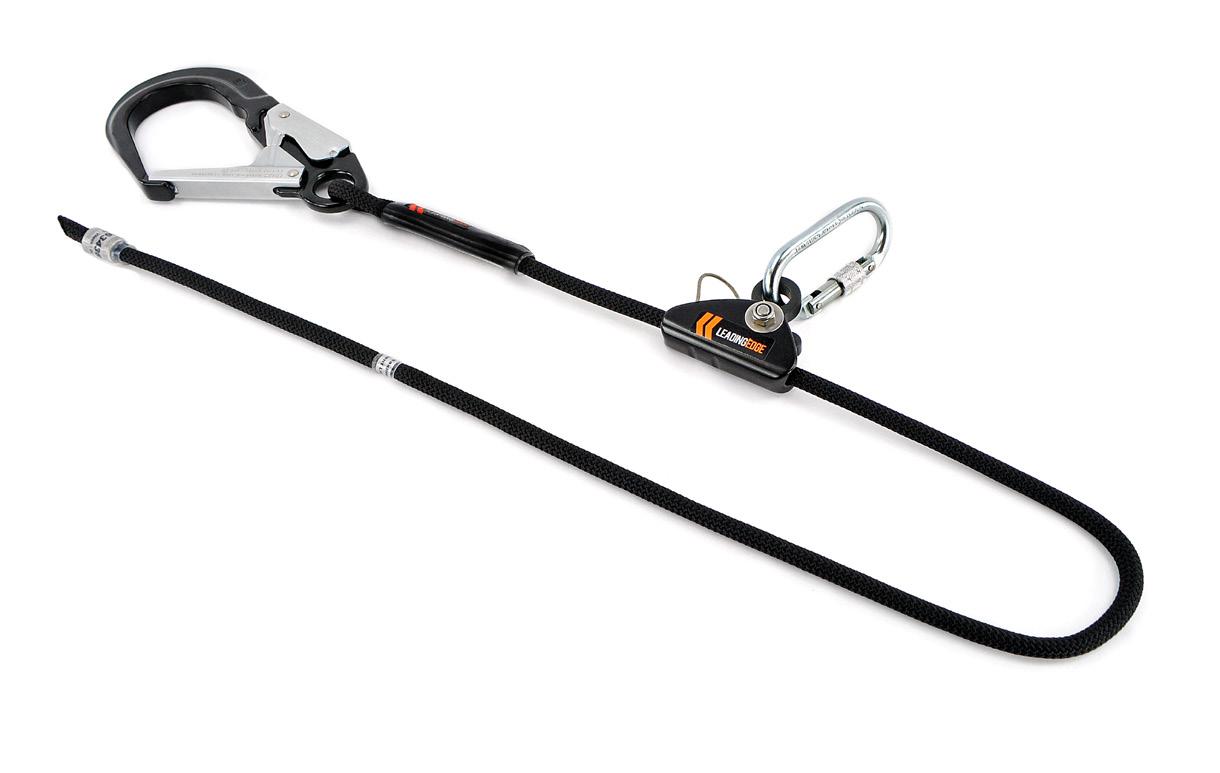
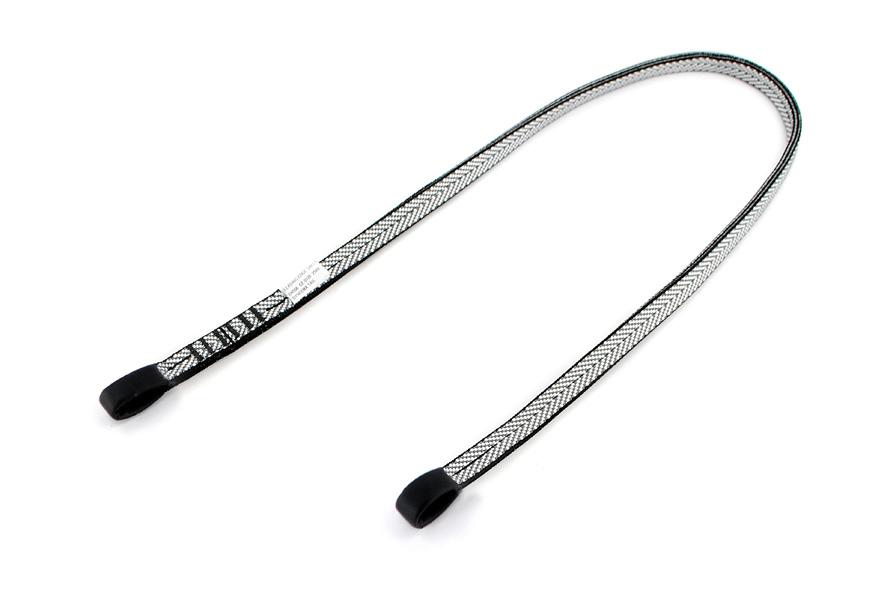



Pro-Twins provide 100% tie-off while traversing between anchorage points by ensuring at least one lanyard is connected at all times. Once your point of work is reached, you can adjust and shorten each lanyard independently to achieve work-positioning or restraint without needing a belt or pole strap to hold you in position. This is made possible by the unique Dyneema webbing link that ergonomically connects two rope grabs together. Should you fall however, the lanyard has a built-in fall arrest function with the added safety benefit of a reduced stopping distance.

» 2x advanced fall arrest rope h » Edge-tested for high impact edge abrasion » Max user weight: 136kgs » Minimum breaking load: 26kN » CE approved
Made in the UK



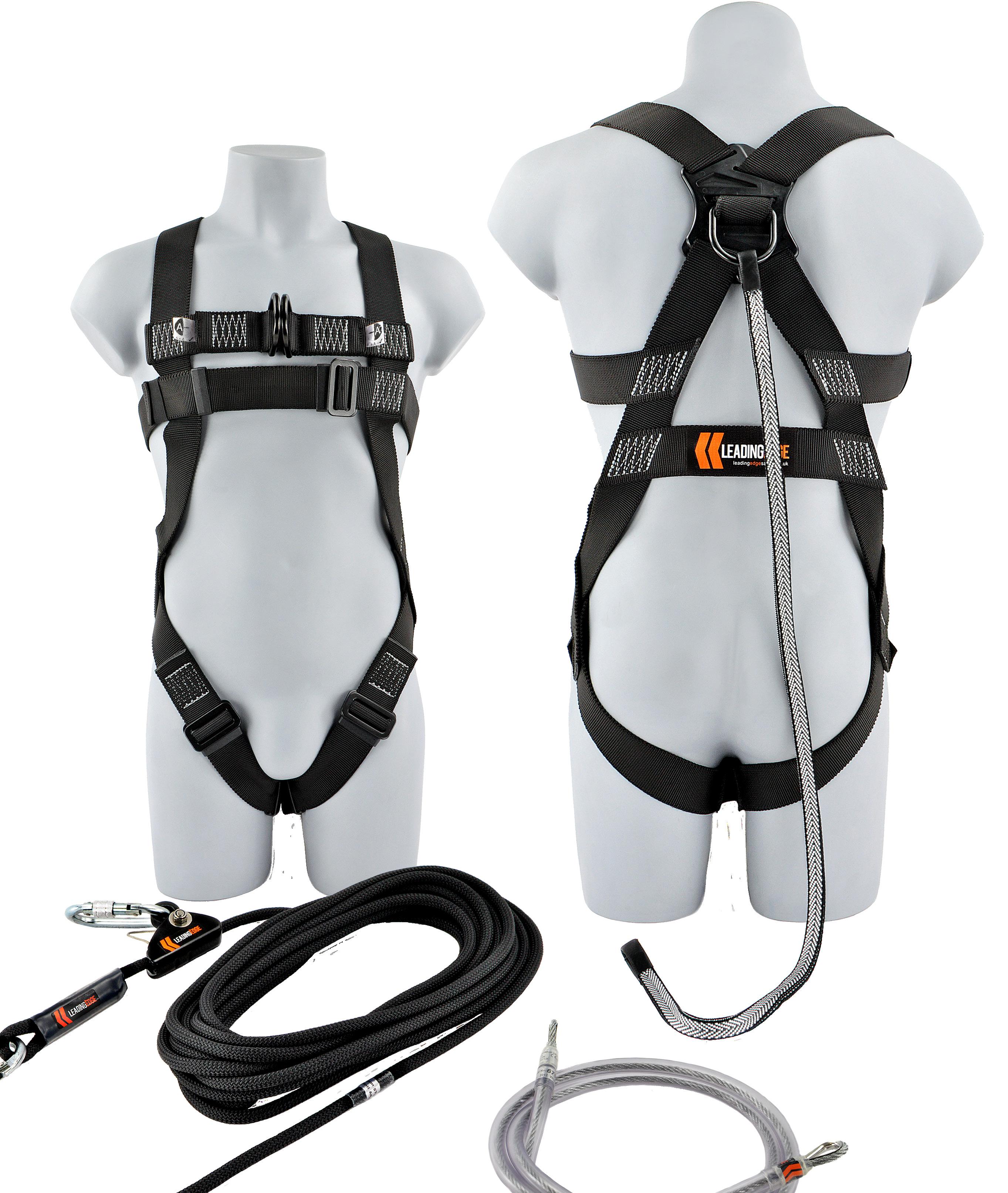
Gain a greater work area, combining fall-restraint and fall-arrest in one complete system.
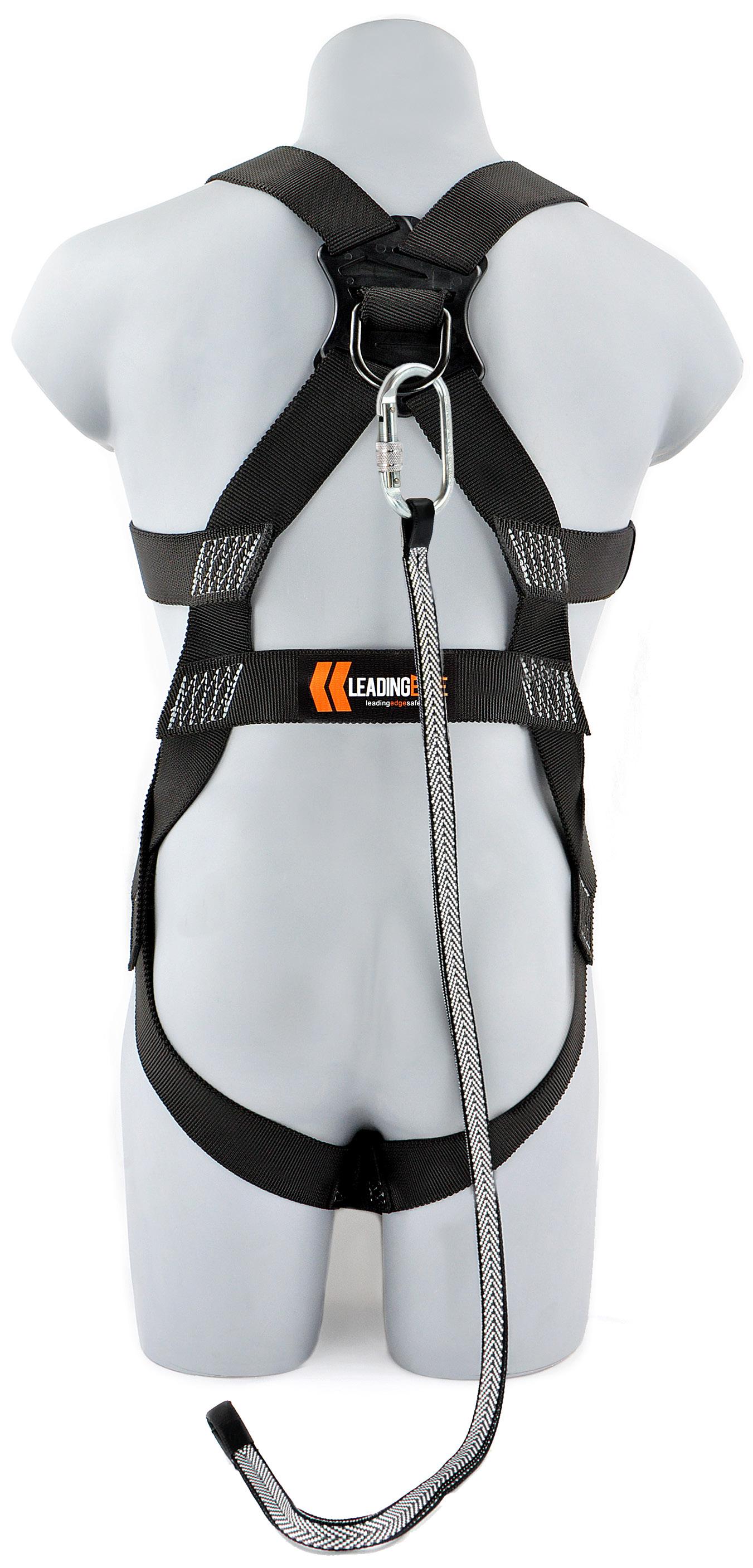
Adjustable fall-restraint is a prevention system by which a person is restricted from reaching zones where the risk of a fall exists. As a system, it’s extremely versatile, allowing for both front and rear harness connection in several configurations across horizontal, vertical and pitched planes. Should it all go wrong the system has an advanced rope grab that is designed and tested to provide shock-absorbing fall arrest protection in-line within the system. The unique profile of the cam body, is engineered to allow the impact force to be absorbed and dissipated through the combination of physical contact between the multi-core rope, and the cam’s grooved shape and level of surface friction under loading.
This system of work will allow users to be able to safety set up and stay in restraint when using a single adjustable rope line, anchored parallel to their working edge at ‘fall factor 2’ (foot level). This will give them access to a 2 meter working area, over one open edge.

This system of work will allow users to be able to safety set up and stay in restraint when using a single adjustable rope line, anchored at the optimum position ‘fall factor 0’ (above their head). This will give them access to a 1 meter working area, over one open edge.
This system of work will allow users to be able to safety set up and stay in restraint when working over two, three or four leading edges. Users will use two adjustable rope lines that are anchored diagonally across their working area. This will give them access to wider working areas.
This system of work will allow users to be able to safety set up and stay in restraint when using a single adjustable rope line on a pitched surface through attaching to the front of their harnesses. This will give them access to a 2 meter working area, over one open edge.
This system of work will allow users to work in restraint over a wide area. They will be able to safety set up and stay in restraint when using two adjustable rope lines, that are anchored parallel to their working edge ‘fall factor 2’ (foot level). This will give them access to wider working area, over one open edge.
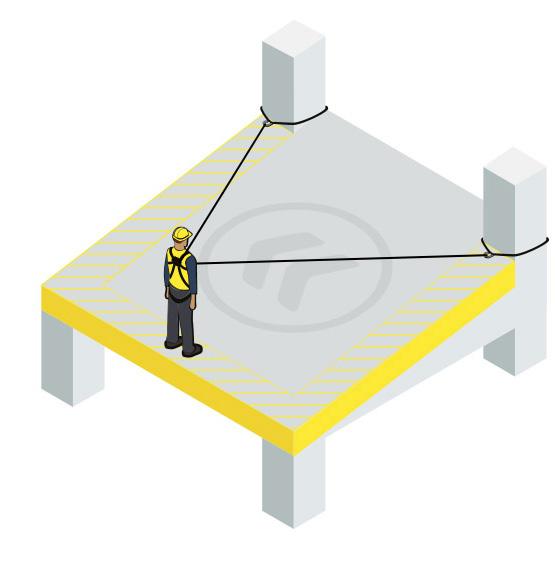


This system of work will allow users to be able to safety set up and stay in restraint when using two adjustable rope lines attached to the front of their harness. This system will give users access to wider working areas, over two or three open edges.
Adjustable restraint is a prevention system by which a person is restricted from reaching zones where the risk of a fall exists. As a system, it is extremely versatile, allowing for both front and rear harness connection in several configurations across horizontal, vertical and pitched planes.

Should it all go wrong the system has an advanced rope grab that is designed and tested to provide shockabsorbing fall arrest protection in-line within the system. The unique profile of the cam body, is engineered to allow the impact force to be absorbed and dissipated through the combination of physical contact between the multi-core rope, and the cam’s grooved shape and level of surface friction under loading.
» 11mm multi-braid pro static rope
» Fall arrest cam positioning device (rope grab)
» Max user weight: 136kgs
» Minimum breaking load: 26kN » CE approved » Made in the UK » Longer lengths available on request

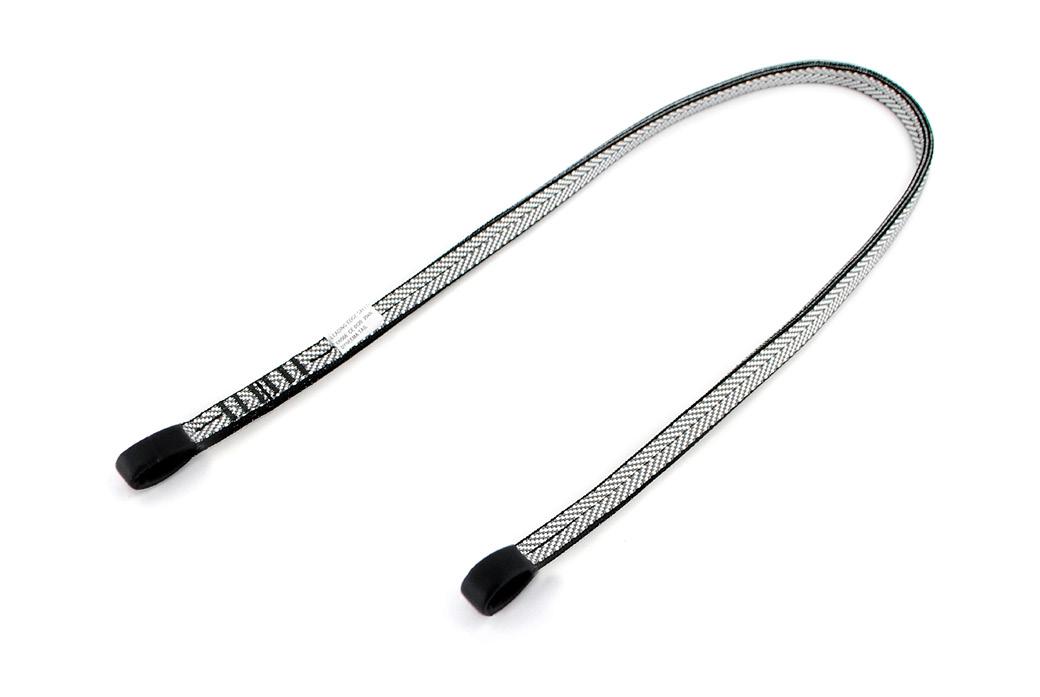
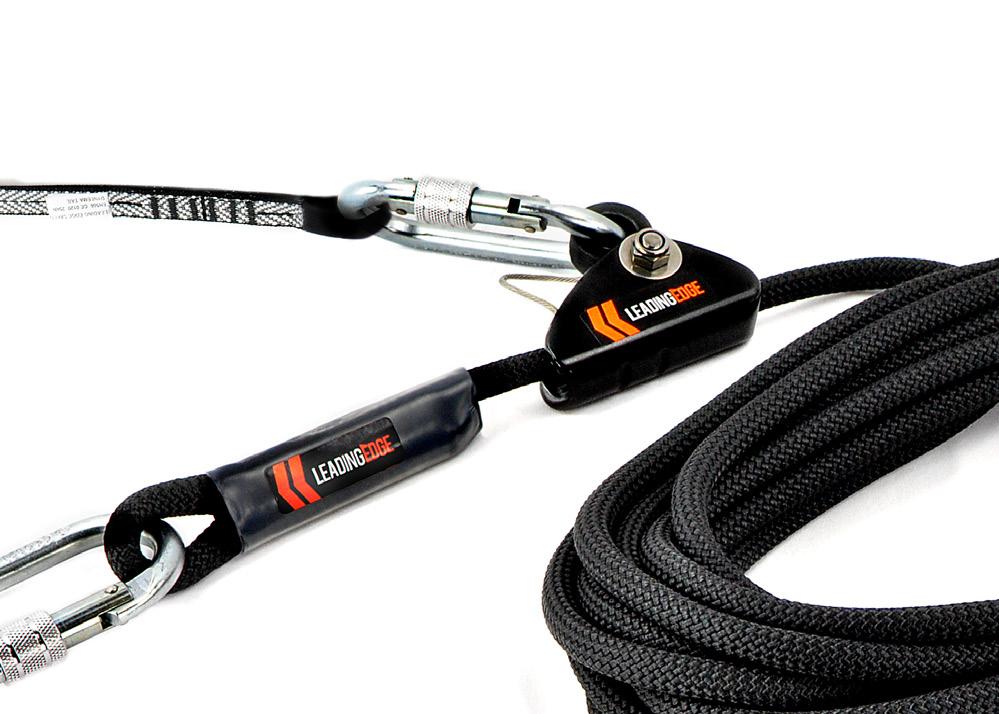



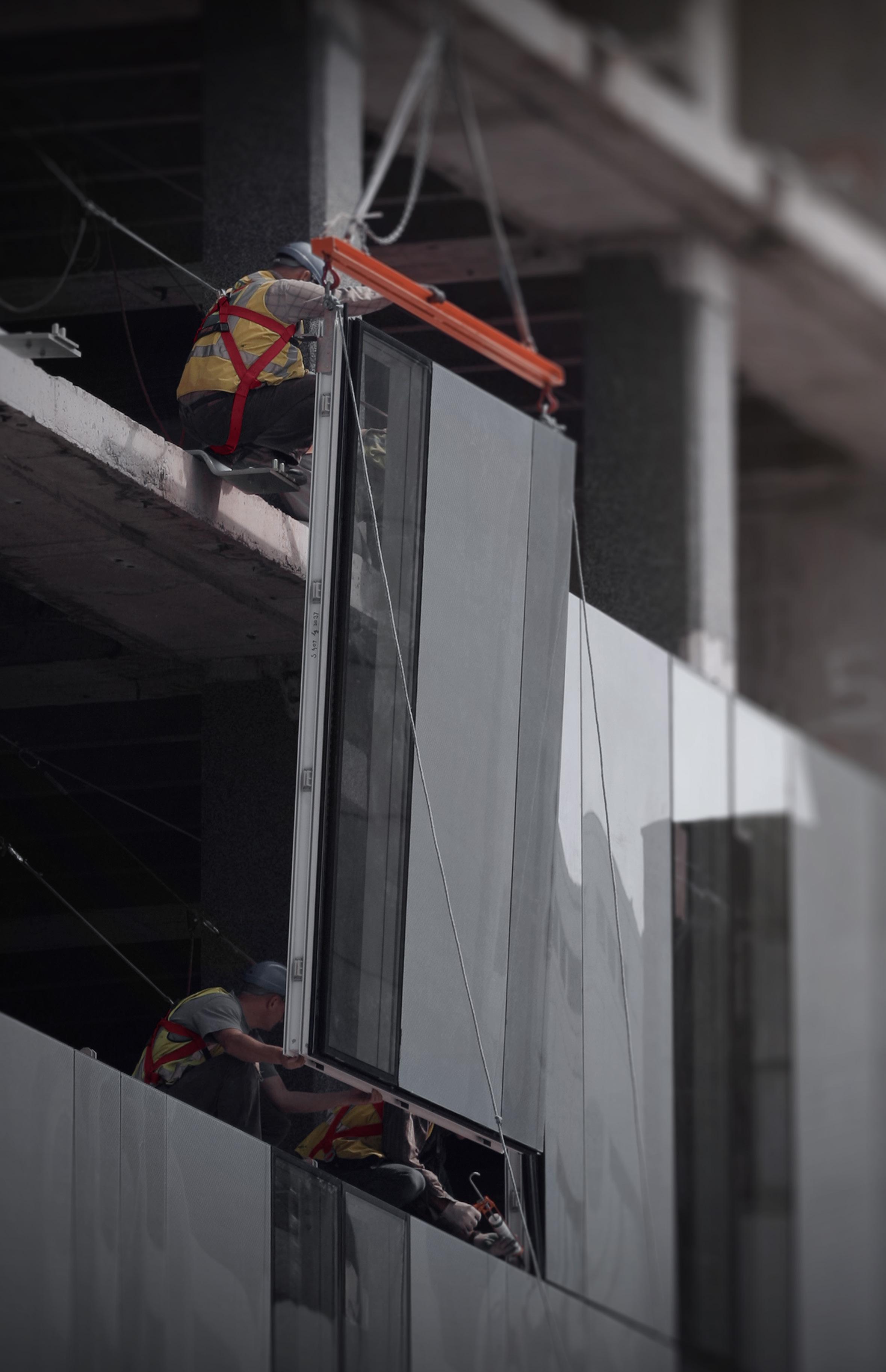

Maximise your working area and support multiple users with greater levels of protected access over larger areas of open edge exposure. When used in conjunction with adjustable fall restraint ropes, lifelines allow you to safely traverse exposed leading edges and eliminates the risk of pendulum whilst working in restraint, with fall-protection back-up for total security and peace of mind.

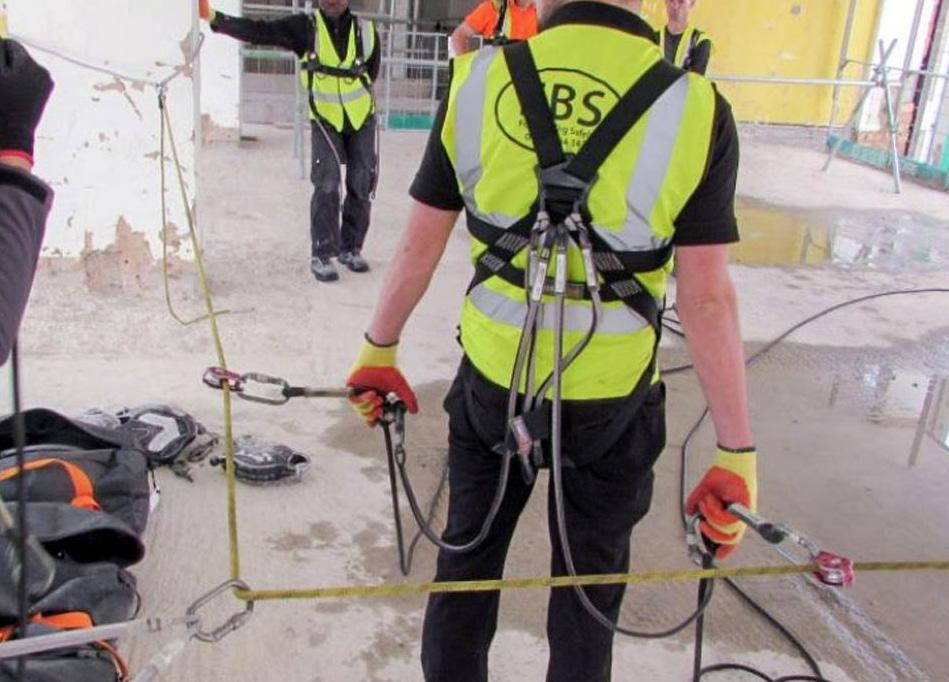
With training you’ll learn how to deploy, position and tension a lifeline, operate it using front and rear attachment across horizontal and pitched planes, and explore more advanced techniques such as lifeline bending for multiple edge access and intermediate attachments to support multiple simultaneous users over greater spans.
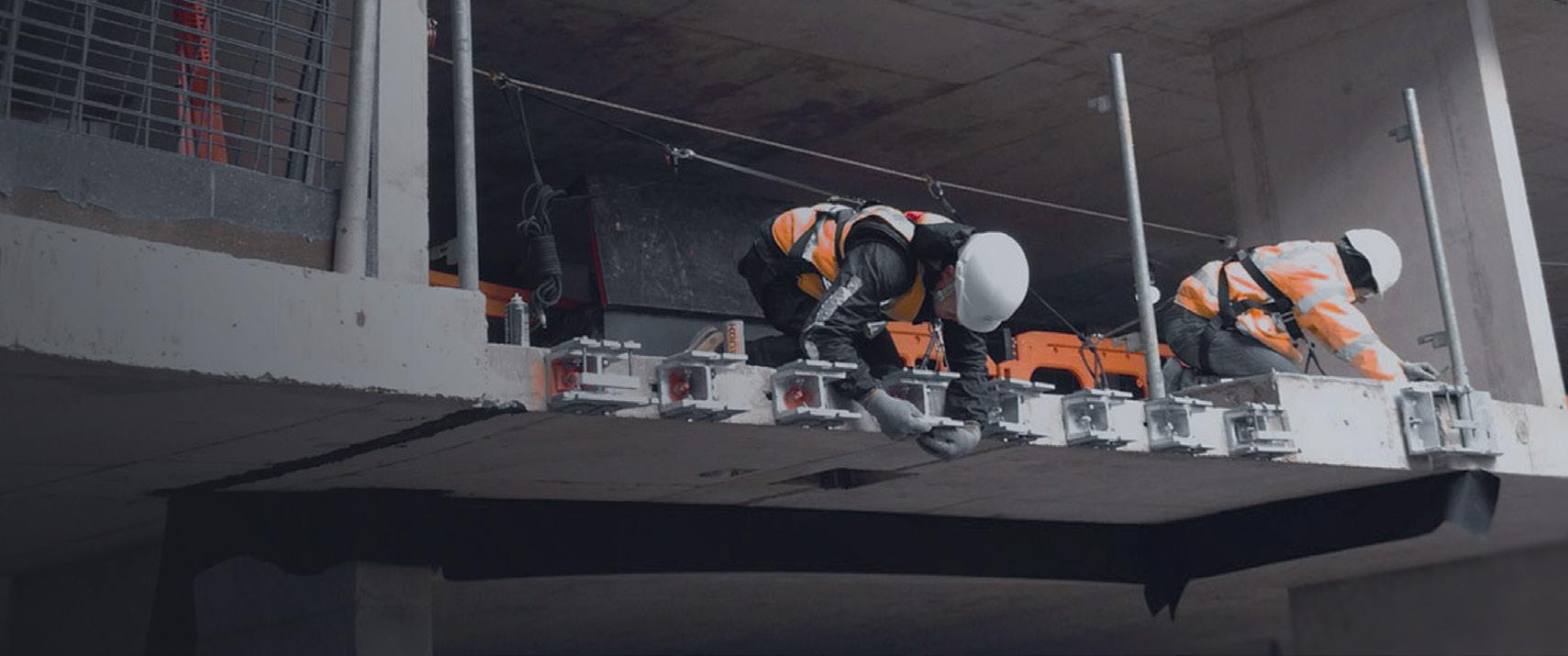
Allows a single user to remain within restraint when accessing one open edge spanning up 20 meters.
The use of a lifeline with an attached intermediate anchorage will allow two to three users to remain within restraint when accessing one open edge spanning up 20 meters.
Allows up to three users to remain within restraint when accessing one open edge spanning up 10 meters.
Bent lifelines allow a single user to safely access a corner with 2 open edge while remaining in restraint without risk of falling through pendulum.
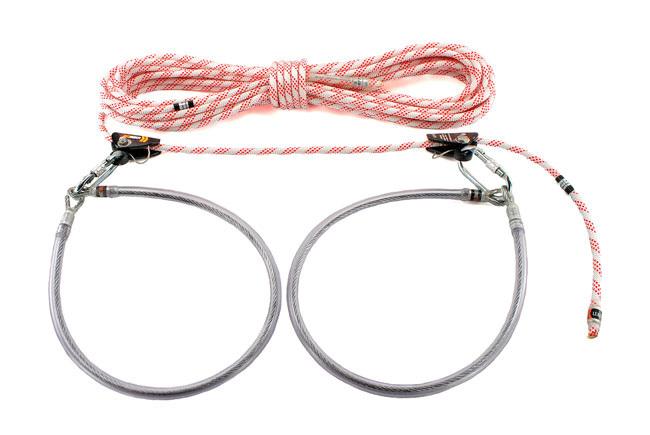


When working at height, a permanent installed horizontal lifeline is not always necessary as it’s very costly and takes too long to install. This 20m temporary lifeline system is a quick and easy to install, rigged either at foot level too above head height for maximum anchorage and rigging versatility. Allows up to 3 people to work from the system using adjustable fall restraint ropes to reach the open edge exposure.

This lifeline system has advanced rope grabs devices at both ends that provides two special functions. Firstly, they operate as rope tensioning clamps, in simple terms, the 11mm lifeline rope is pulled through the rope grabs until the line becomes tight and the slack has been removed out of the system, making ready to use. Secondly, the advanced rope devices are designed and tested to provide shock-absorbing fall arrest protection in-line within the system. The unique
profile of the cam bodies, are engineered to allow the impact force to be absorbed and dissipated through the combination of physical contact between the multicore rope, and the cam’s grooved shape and level of surface friction under loading. Hypothetically, the fall-protection back-up is only there should something go wrong, and a person falls due to miss-usage or operator error, as the primary objective is to safely work in restraint, thus no fall should occur. However, if the worst was to happen there is protection for total security and peace of mind.
This versatile temporary lifeline is easily attached via the supplied karabiners to suitable anchorages, for example: eye-bolts, omni-anchors, or fall arrest slings when fixing to beams, columns or other fixed structural points of sufficient strength.





This 20m temporary lifeline system is quick and easy to rig at either foot level or above head height for maximum anchorage versatility. It allows up to 3 people to work using adjustable fall restraint ropes or fall arrest equipment to reach the open edge exposure.
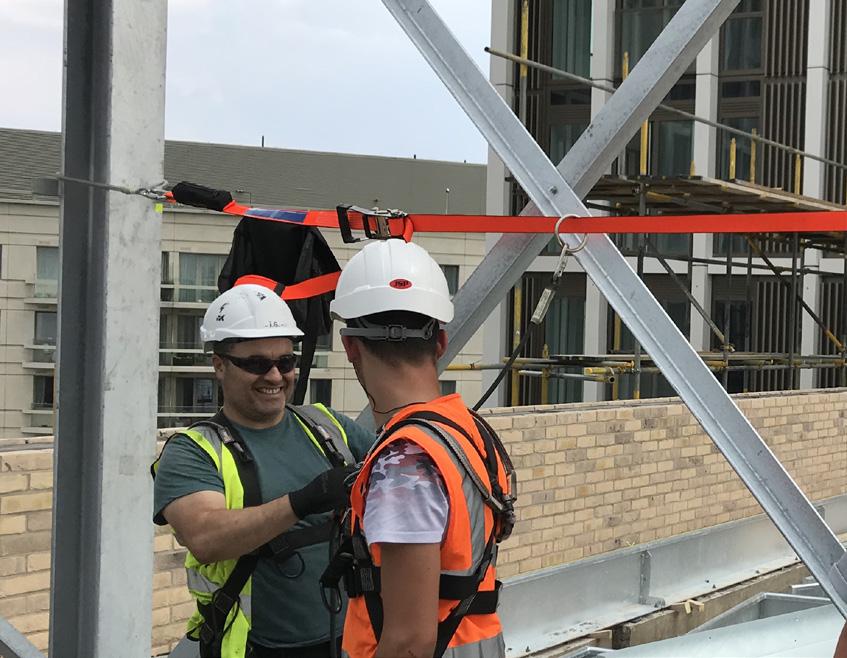
The lifeline has an in-line ratchet tensioning device that enables 1 person to quickly rig it and easily adjust the tension. This is especially useful when installing above head height.
The lifeline is made from heavy-duty hi-vis polyester webbing, which makes it hard wearing and more visible. It is supplied with 2x sewn on captive swivel snap hooks for connection to the webbing anchorage slings. This means they cannot be removed or lost. The snap hooks are also auto-locking for extra safety.
3x simple ‘O’ rings replace traditional pulleys, which are not suitable for use with webbing lifelines.
Uniquely, the lifeline comes with an in-line integrated shock absorber, protecting the lifeline from being overloaded. This special feature means the lifeline is suitable for use with adjustable fall restraint systems.
The whole kit comes complete and ready to go in its own kit bag.


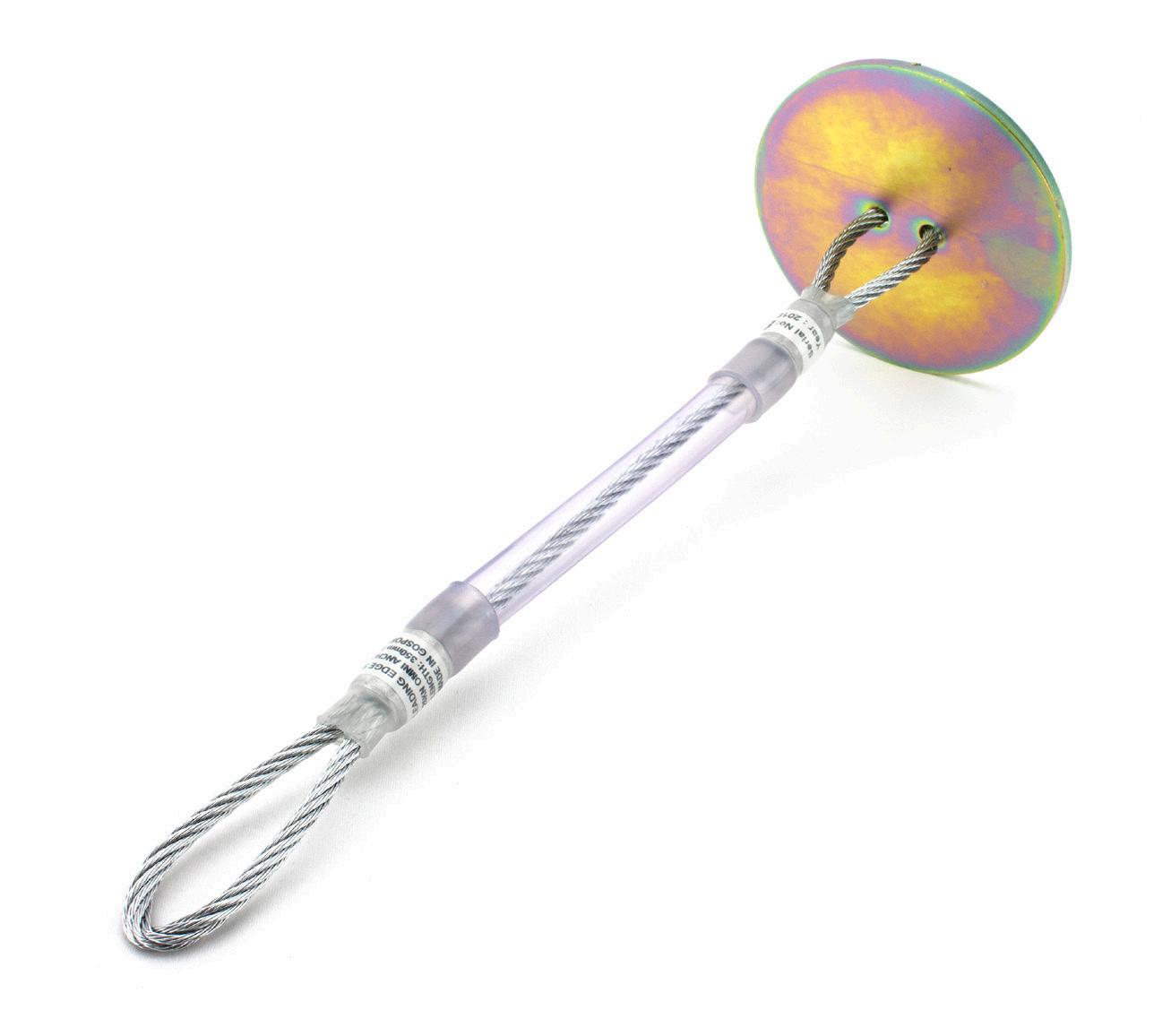




Temporary anchorage device, omni directional loading, designed to pass through holes in walls, steel work or slabs up to a maximum depth of 1000mm (depending on chosen length) with pre-drilled or formed holes of 20 to 30mm diameter, suitable for horizontal and vertical applications for fall arrest and restraint systems.
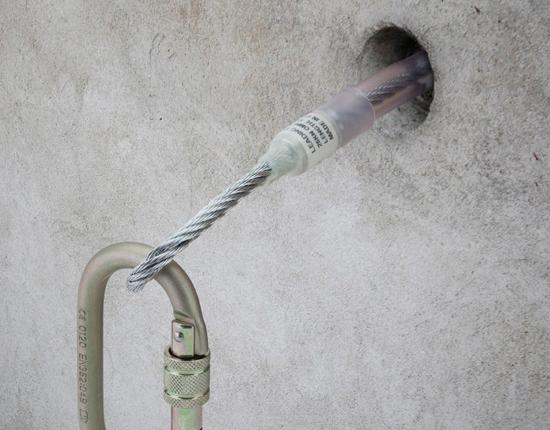
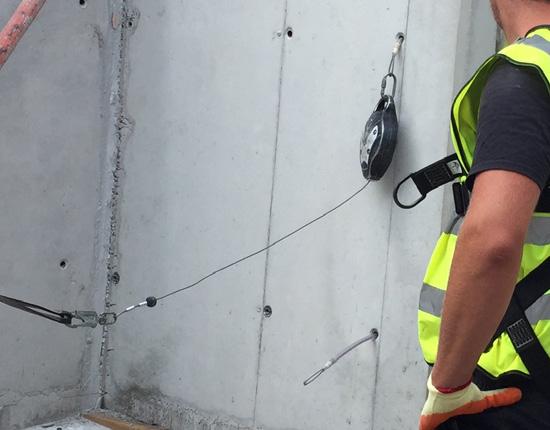
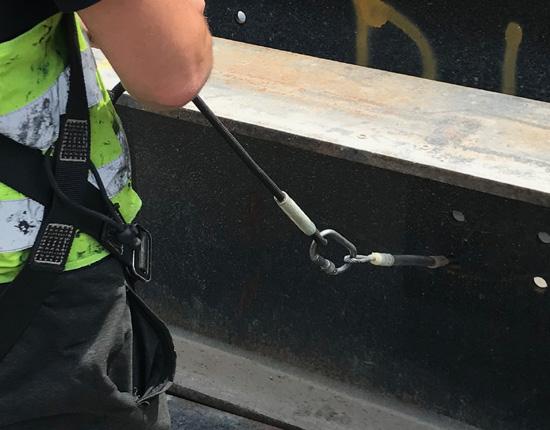
Temporary concrete anchorage device, automatic locking (release-activation) design. Configured to pass through walls or slabs up to 330mm with pre-drilled or formed holes of 20 to 28mm diameter, compressive strength of 15n/mm2 is required for fall arrest, suitable for horizontal and vertical applications.
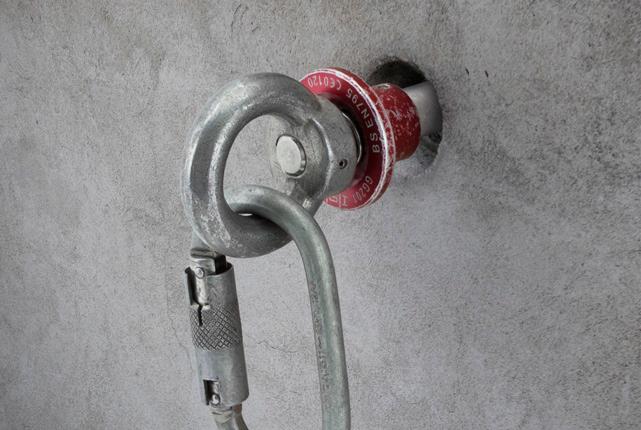
» CE Approved
» Made in the UK
» Minimum breaking load: 26kN
330mm DYWIDAG-330
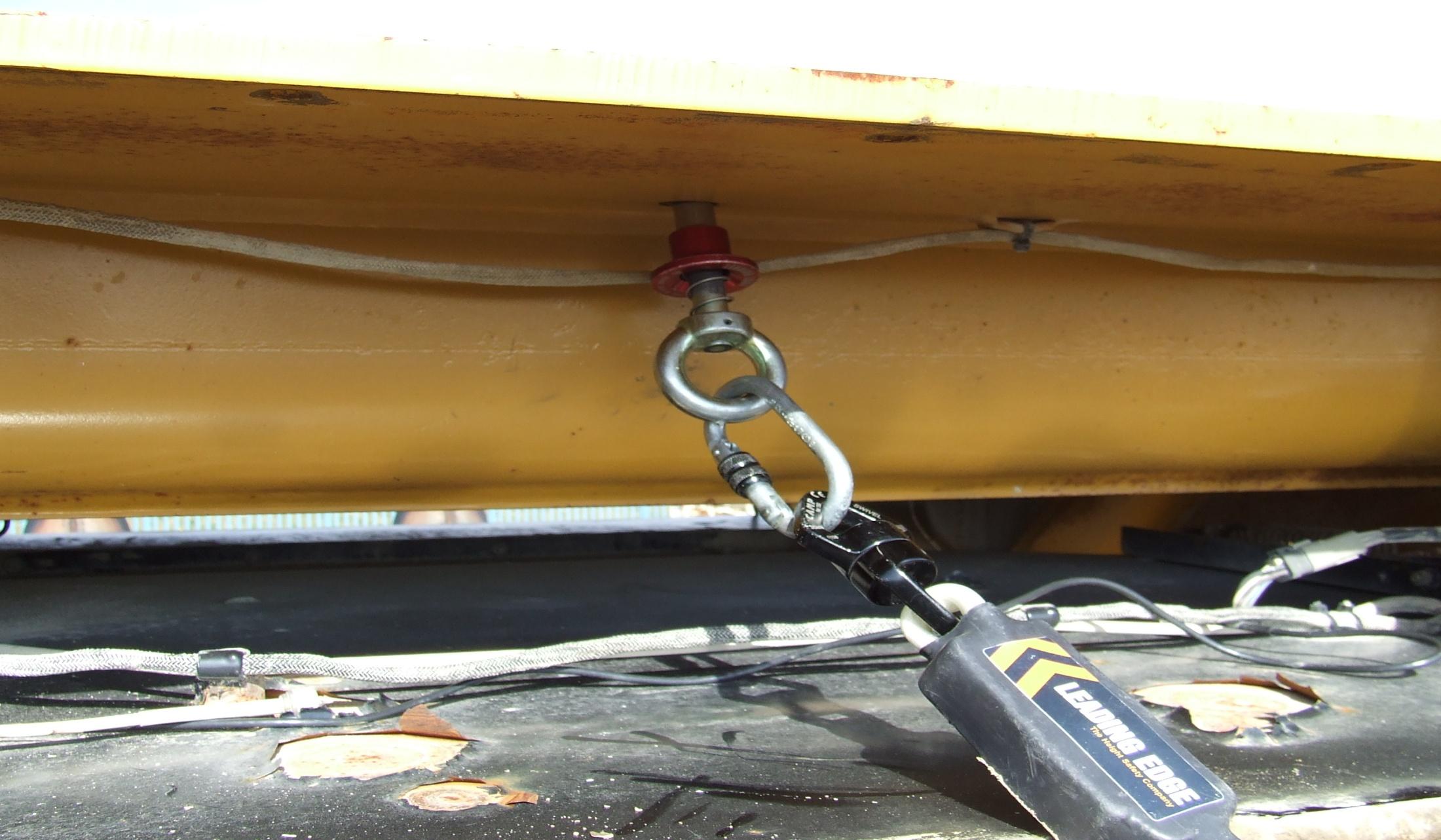

Temporary steel anchorage device, automatic locking (release-activation) design, structural steel thicknesses up to 43mm with pre-drilled holes of 20 to 28mm diameter.

» CE Approved
» Made in the UK
» Minimum breaking load: 26kN
Temporary dyneema anchorage sling, made from ultra low-stretch advanced fibre ‘dyneema’ webbing, incorporating tough tubular webbing outer jacket for greater protection, edge-tested for high impact edge abrasion, suitable for horizontal and vertical fall arrest and restraint applications.

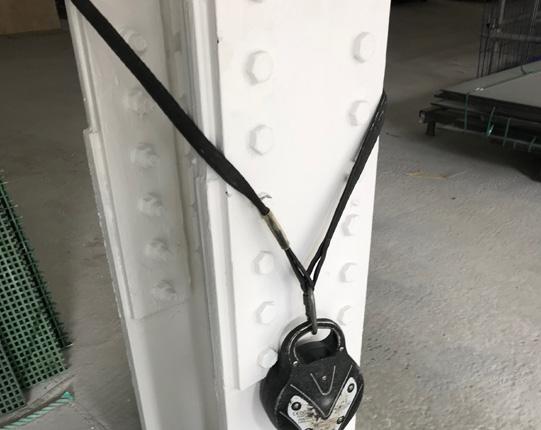



» 14mm low stretch/high strength dyneema webbing
» 25mm teflonised polyester tubular webbing outer jacket » Can be wrapped or choked » Minimum breaking load: 26kN » CE Approved





The concrete swivel anchor rotates through 360° and the D-Ring pivots through 180° for maximum versatility. It can be reused and is ideal for permanent or portable use for horizontal lifeline systems, tie-back, staging and rigging. This anchor is supplied with a one time use Steel bolt with sleeve, which is suitable for fixing to concrete surfaces. The anchor requires a 19mm drilled hole to accommodate the sleeve, and needs a minimum hole depth of 127mm. Hole location must be 229mm away from any edge.

» Minimum breaking load: 44KN
» Attachment Eye Diameter: 57mm
» Material: Zinc Plated Steel
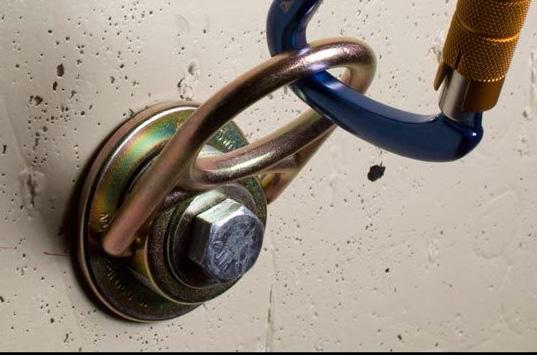
» Required hole diameter: 19mm
» Require hole depth: 127mm
» CE approved
The steelwork swivel anchor rotates through 360° and the D-Ring pivots through 180° for maximum versatility. It is ideal for permanent or portable use for horizontal lifeline systems, tie-back, staging and rigging. This anchor is supplied with a Steel bolt, which is suitable for use when fixing the anchor to steel surfaces. The anchor requires a 16mm drilled hole to accommodate the bolt, and needs a minimum hole depth/thickness of 6mm. Hole location must be 76mm away from any edge.


» Minimum breaking load: 44KN
» Attachment Eye Diameter: 57mm
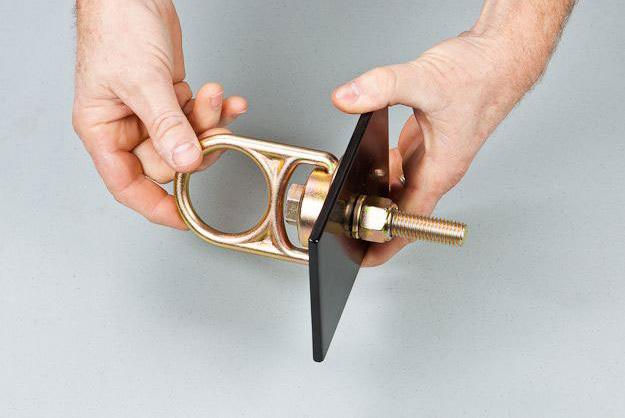
» Material: Zinc Plated Steel
» Required hole diameter: 16mm
» Require hole depth: 6mm
approved
Door anchor is designed to install without compromising the structure in any way. There is no drilling or welding required, you simply compress the device between the vertical sides of the door or window and tighten. Designed to create a safe connecting point where it is difficult to find anchorage on the wall, pillar and joist
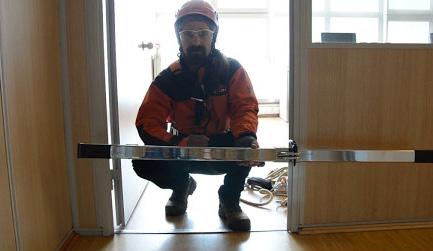


» 2 person anchor
» Corrosion-resistant
» Adjustable width fitting
» Reusable
» Minimum breaking load: 23kN 2-Person Anchor DBA-2
This removable anchor is designed to be mobile, quick and to simple to use. The spoon and cone design is suitable for use in concrete. It locks and removes using a hand-operated spring loaded trigger that activates a locking device. No additional tools are required. The anchor requires a 20mm drilled hole to accommodate the sleeve, and needs a minimum hole depth of 89mm. For slabs thickness’s between 13-31cm the anchor must be installed 31cm away from the edge. With slabs over 31cm the anchor can be installed 16cm from the edge.
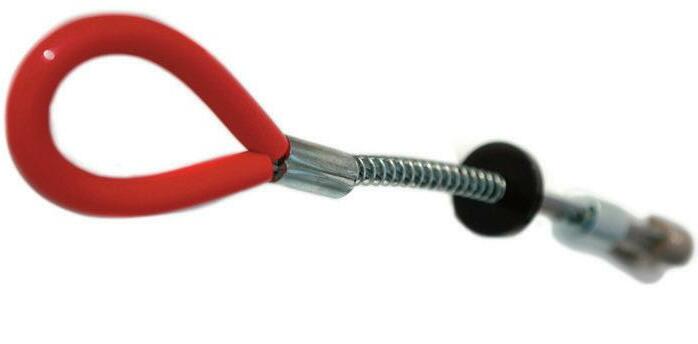
» Suitable for vertical, horizontal or overhead use
» Spring loaded trigger that activates to engage/disengage the securing mechanism
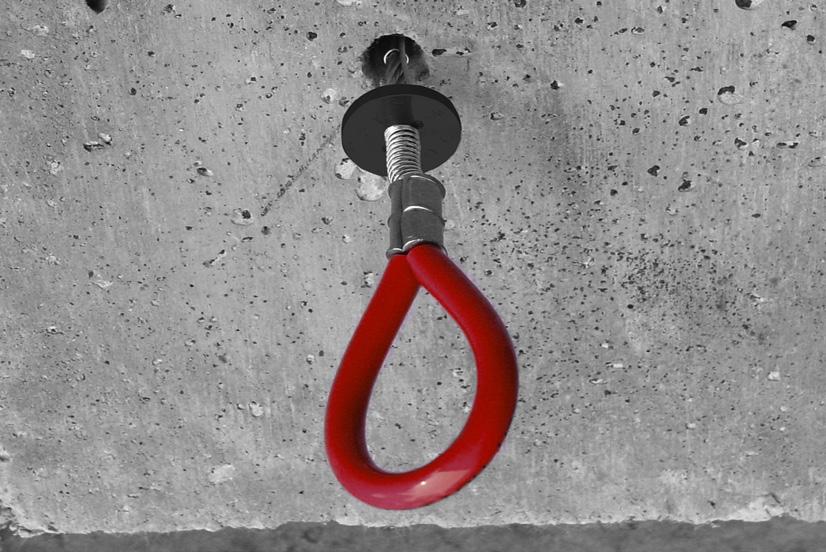

» Reusable
»
Maximum User Weight: 136kg
» Minimum breaking load: 22kN

Useful additions to support your height safety gear.
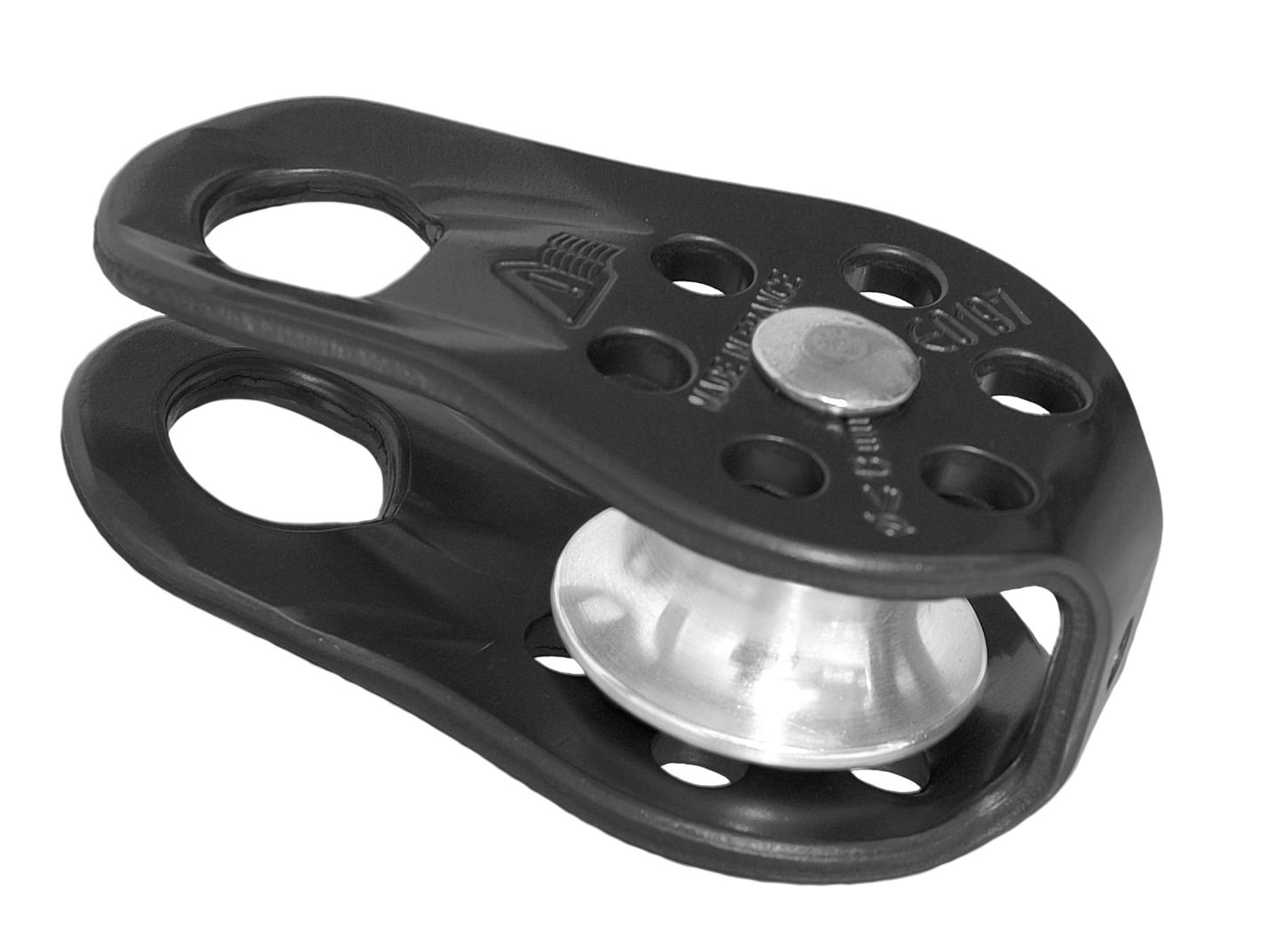



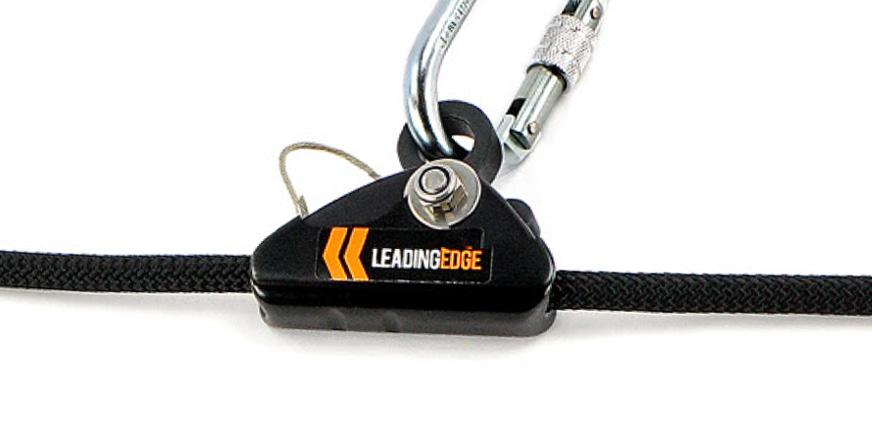


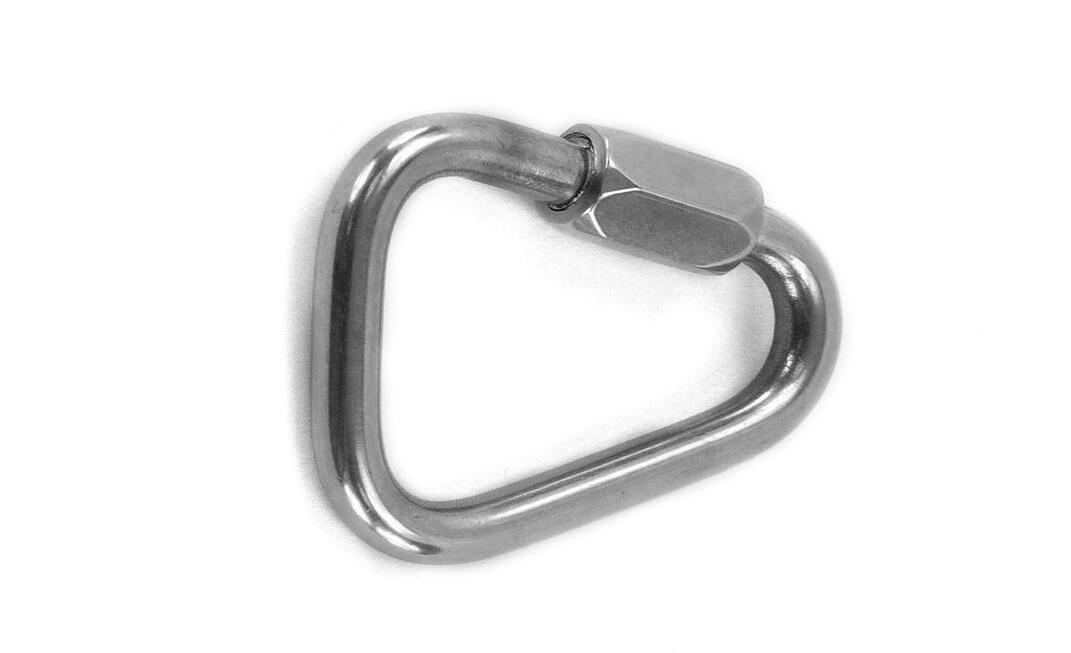
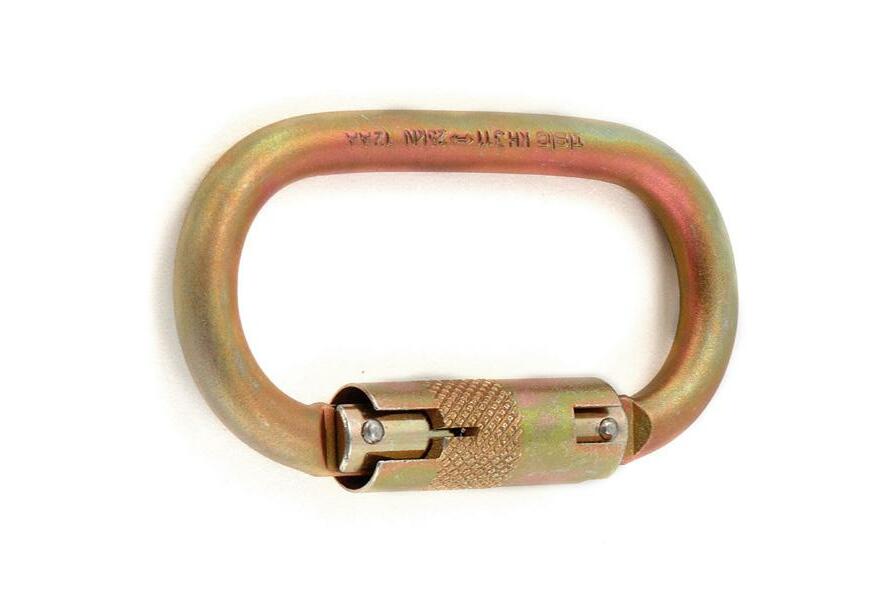




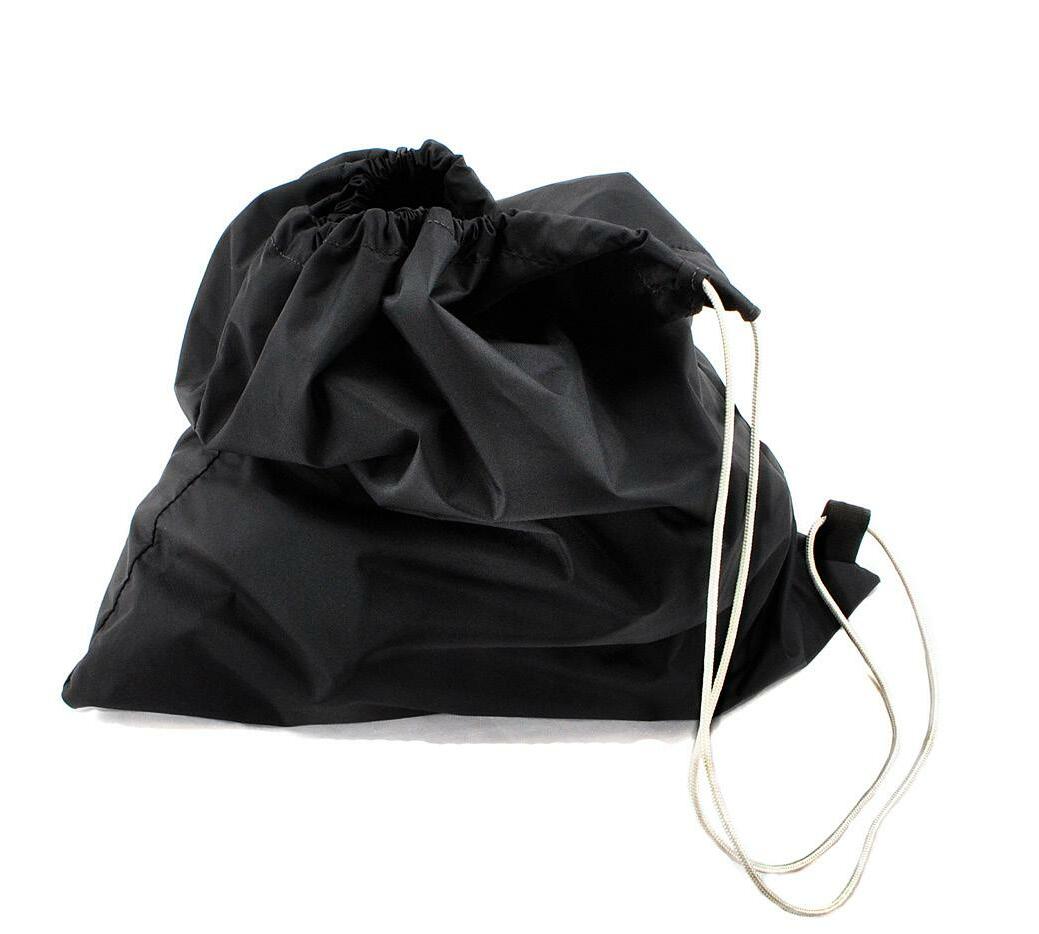

Everything you need to work at height.
Kits are the simplest way to gain a complete safety system for any work at height activity.
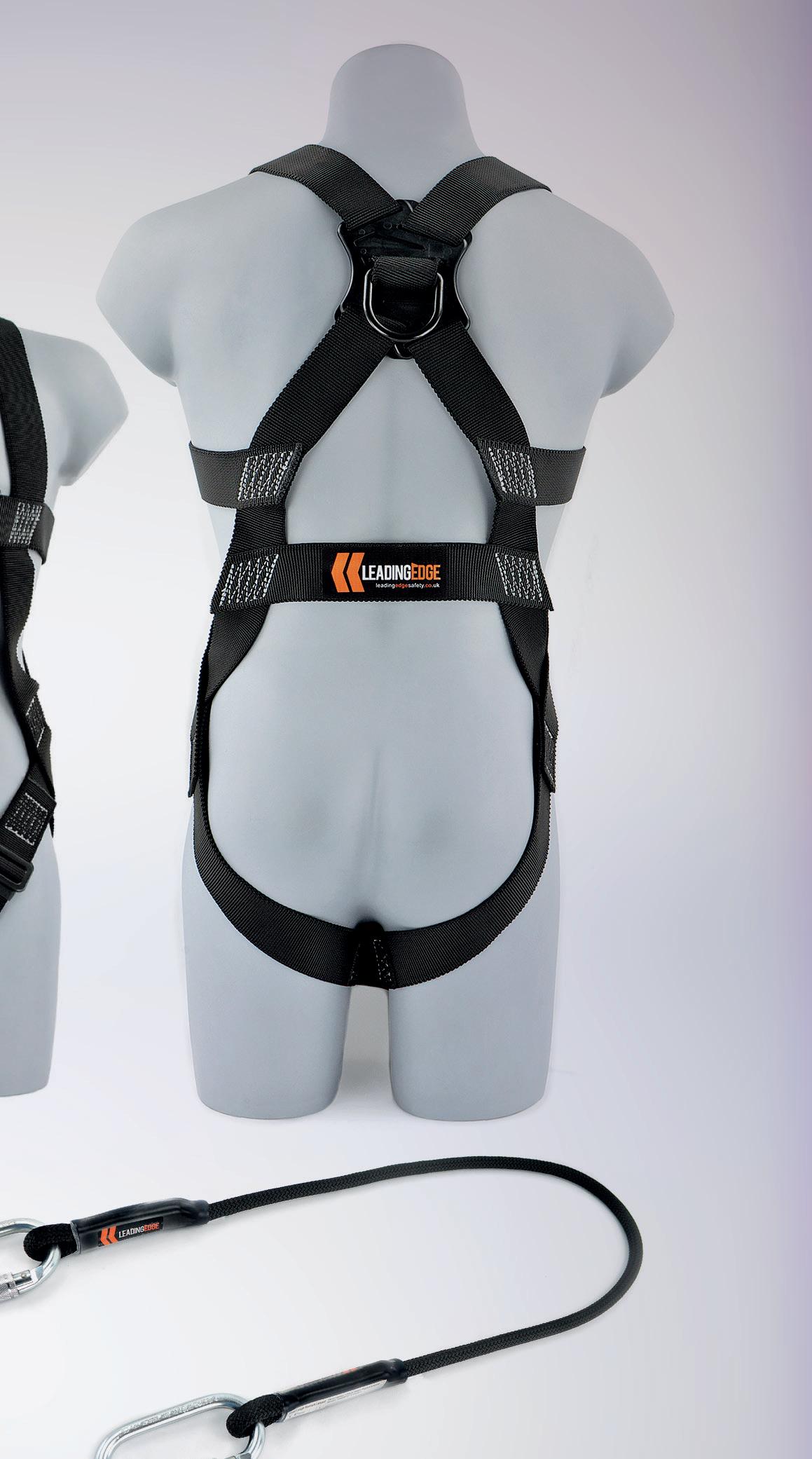
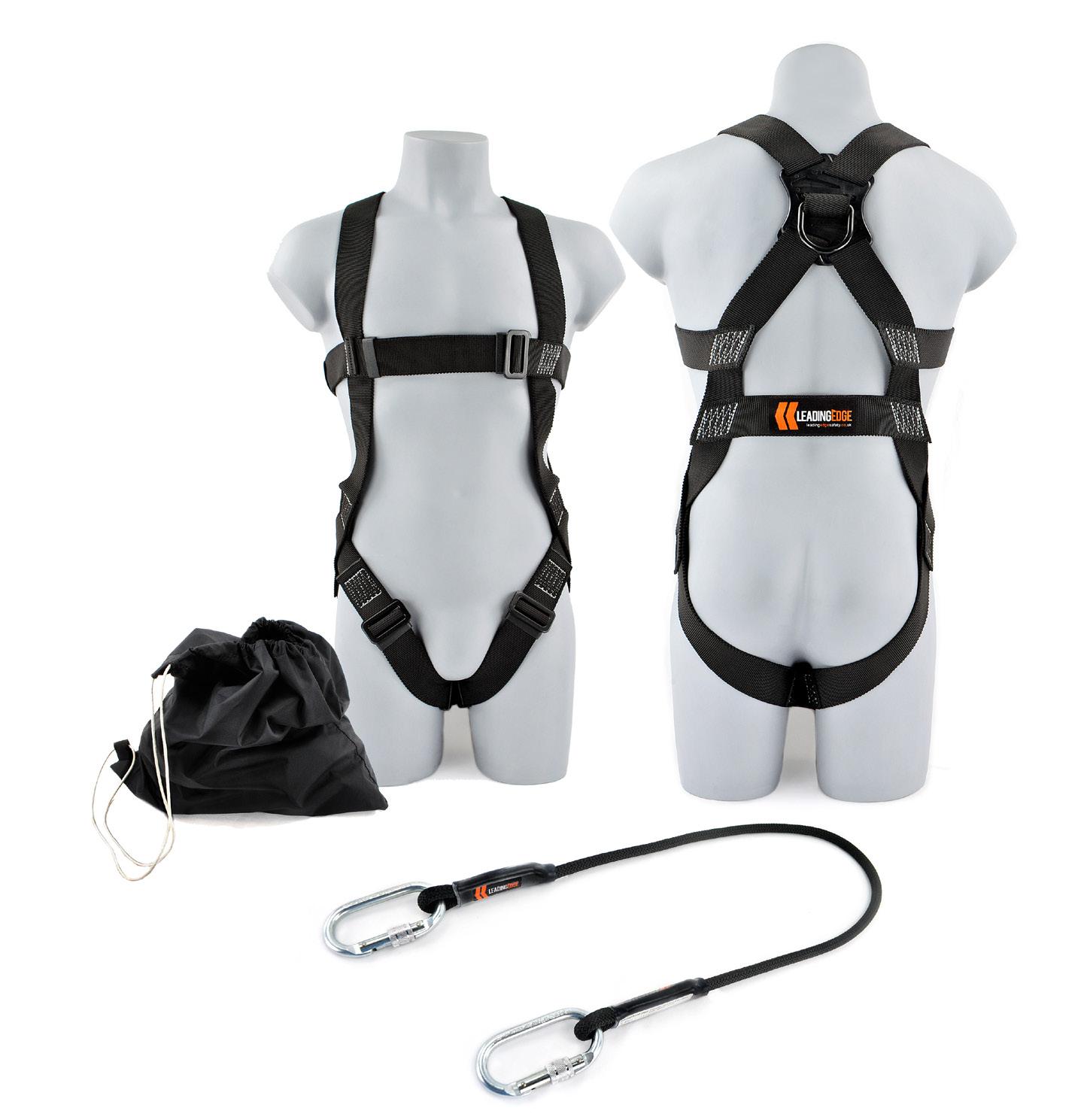

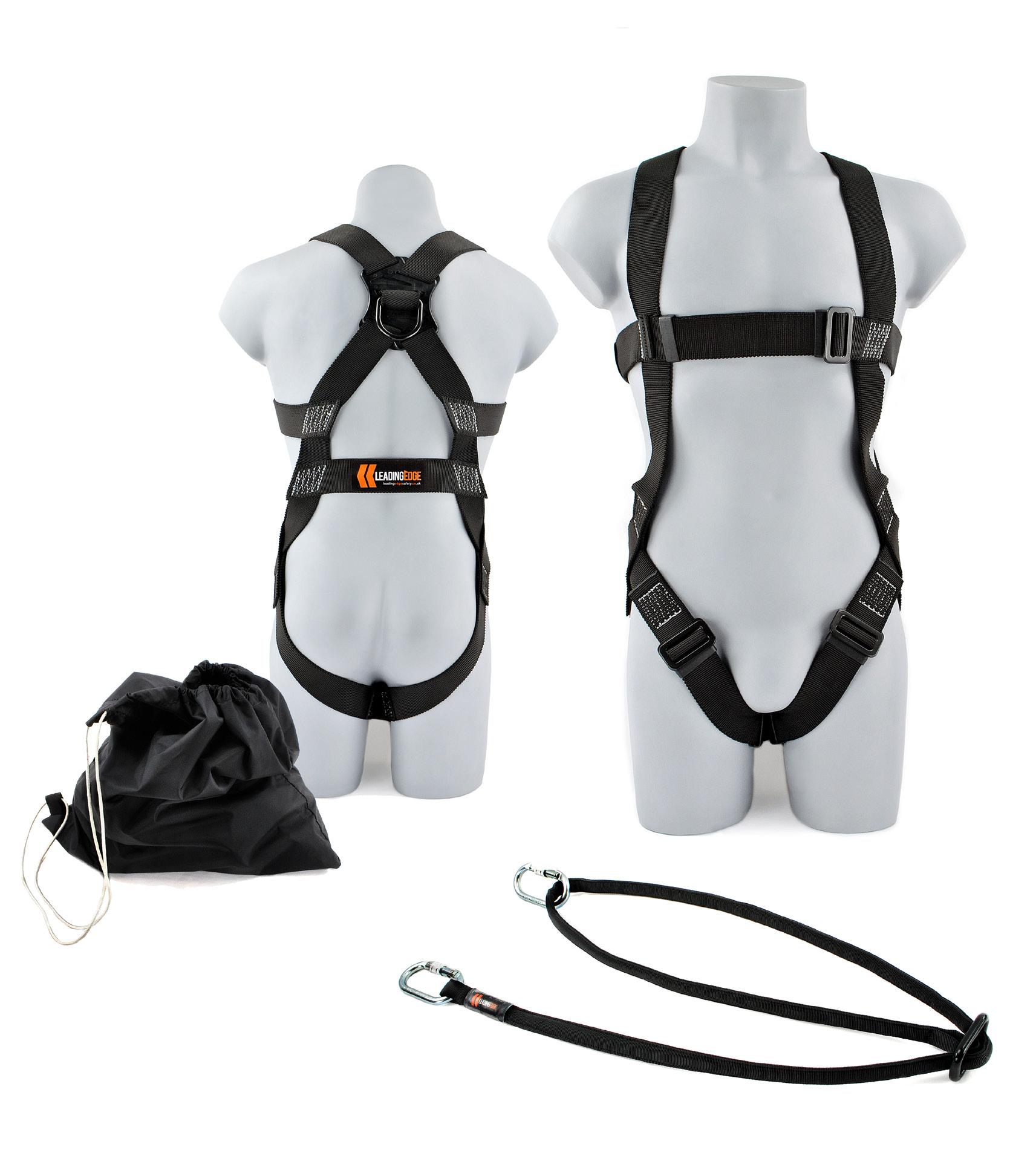
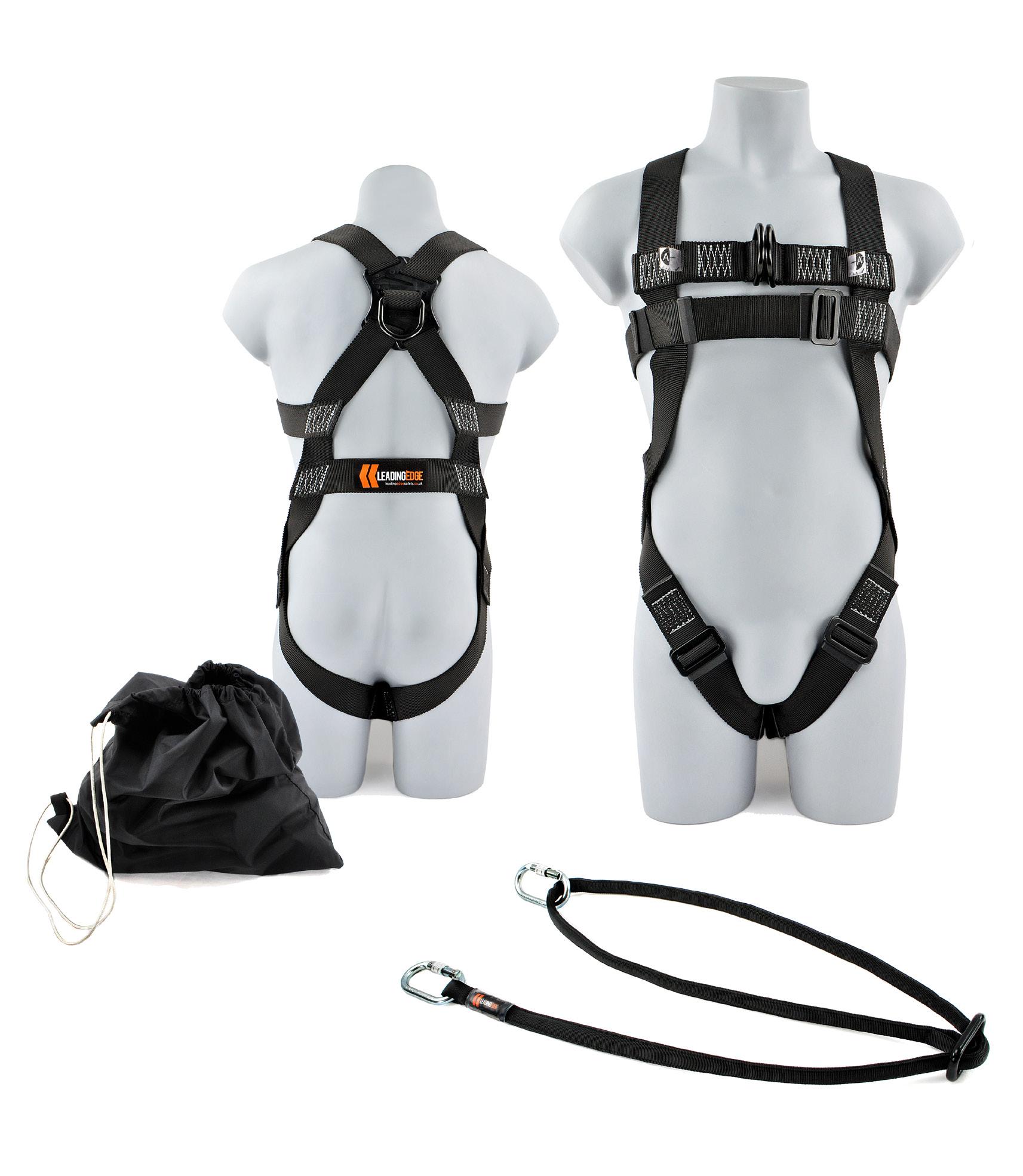





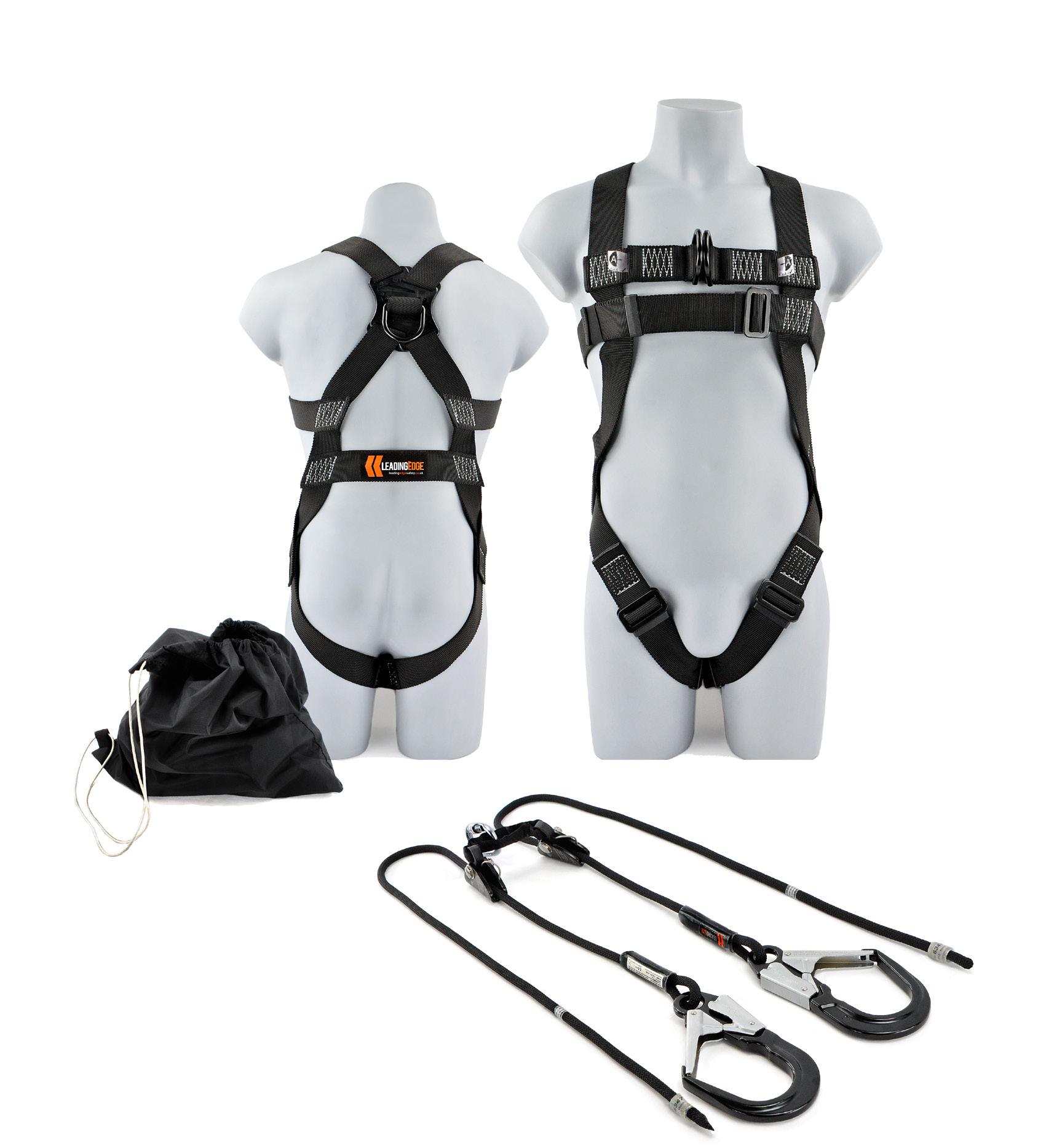
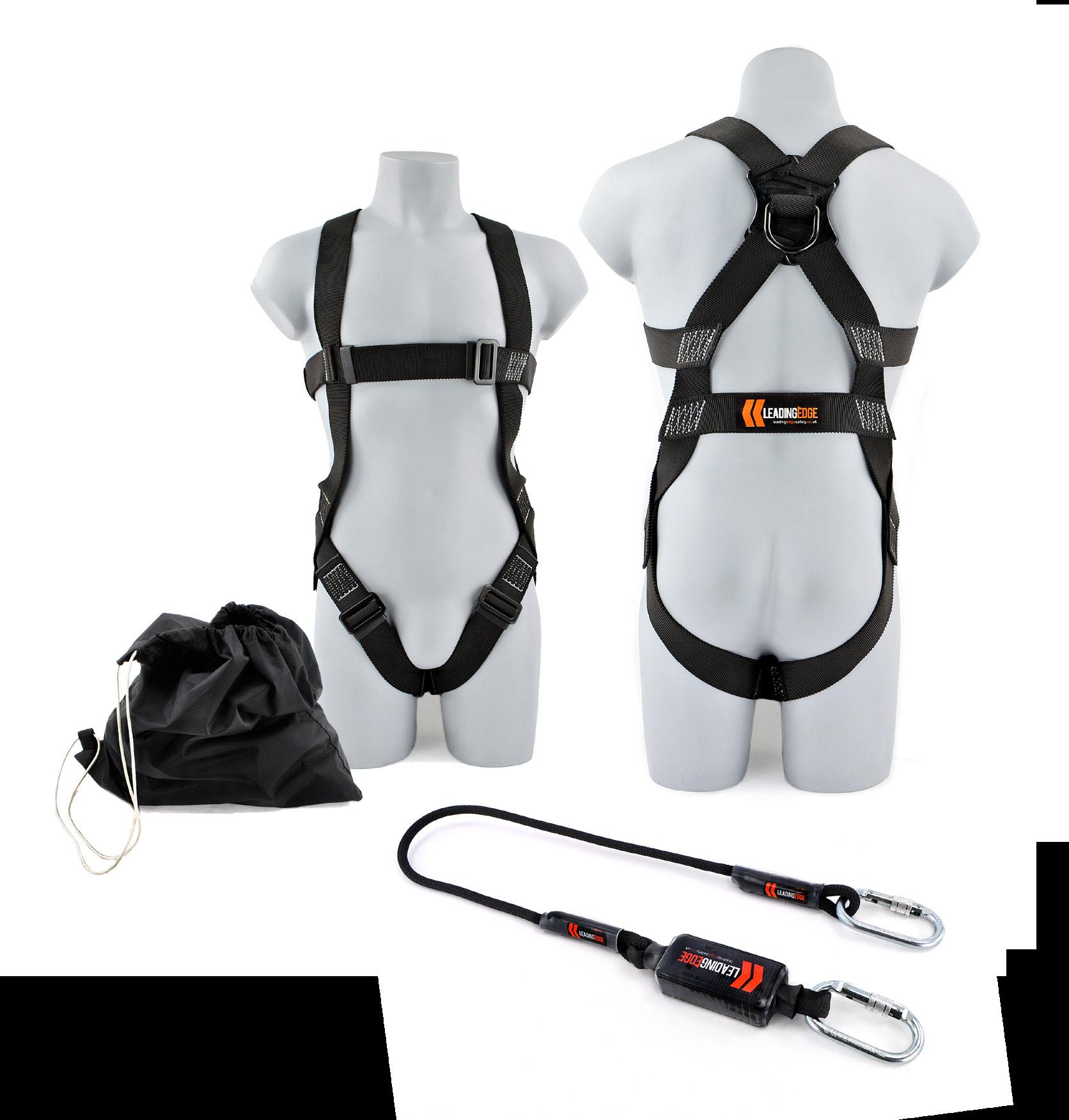

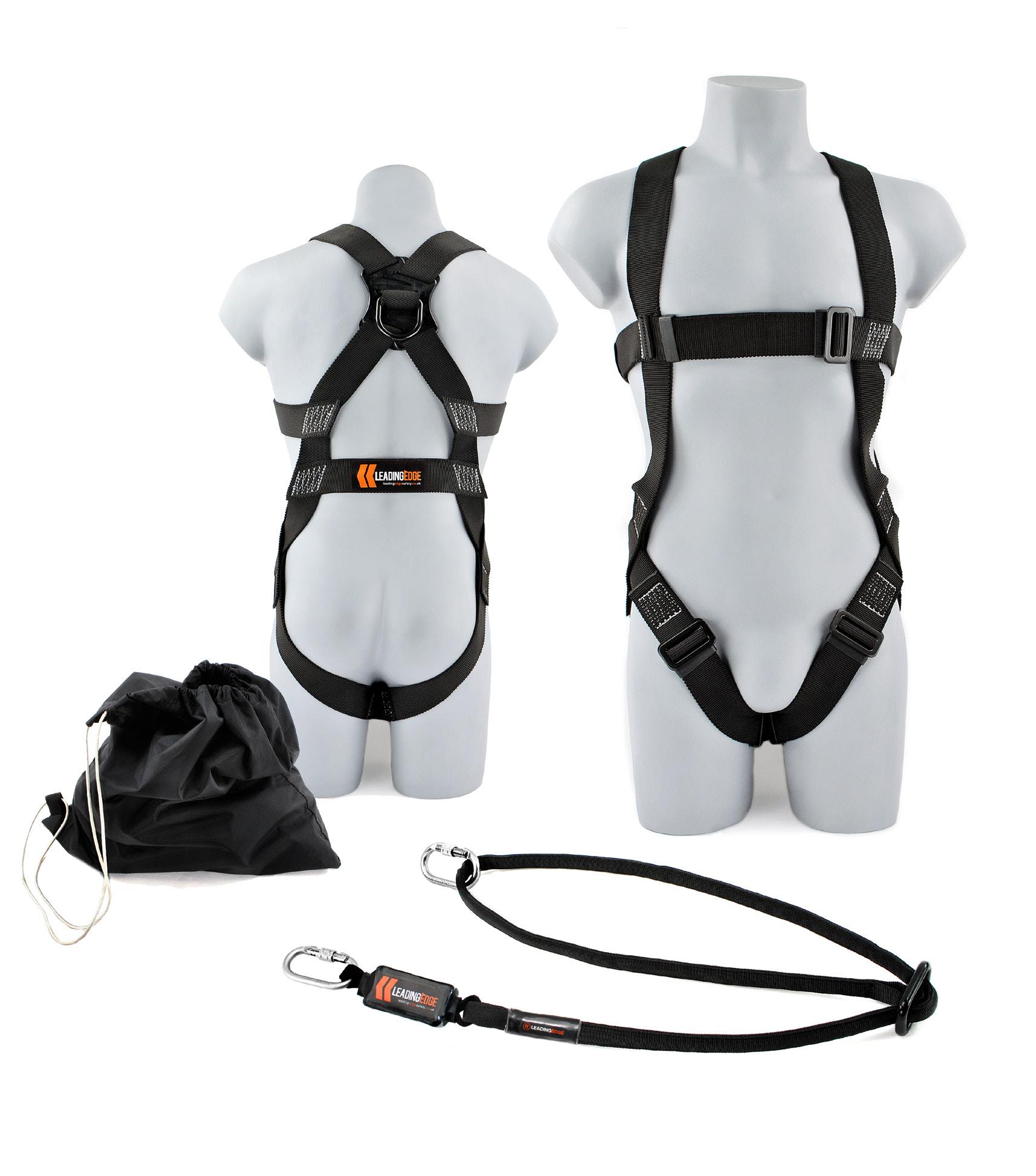

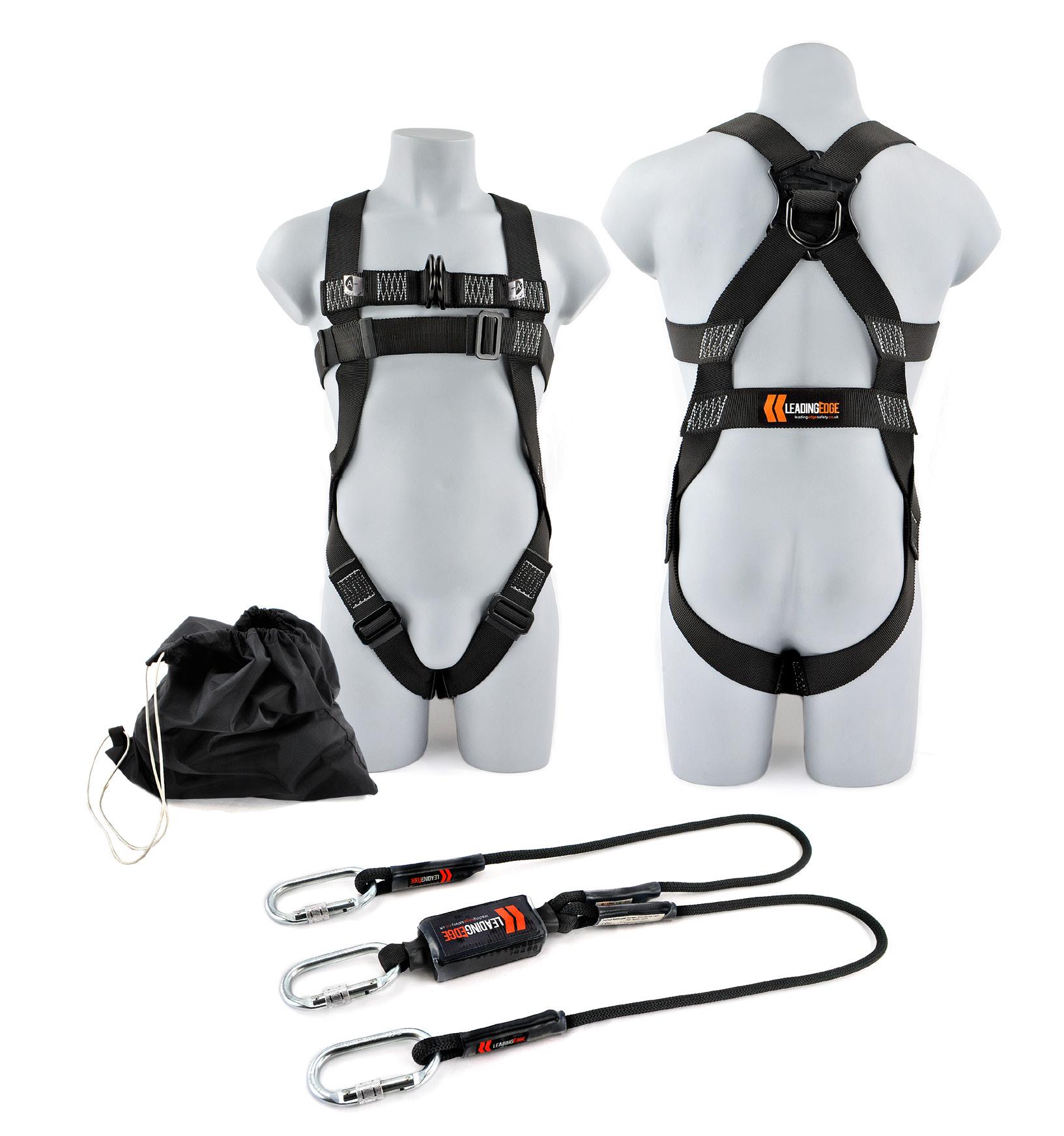
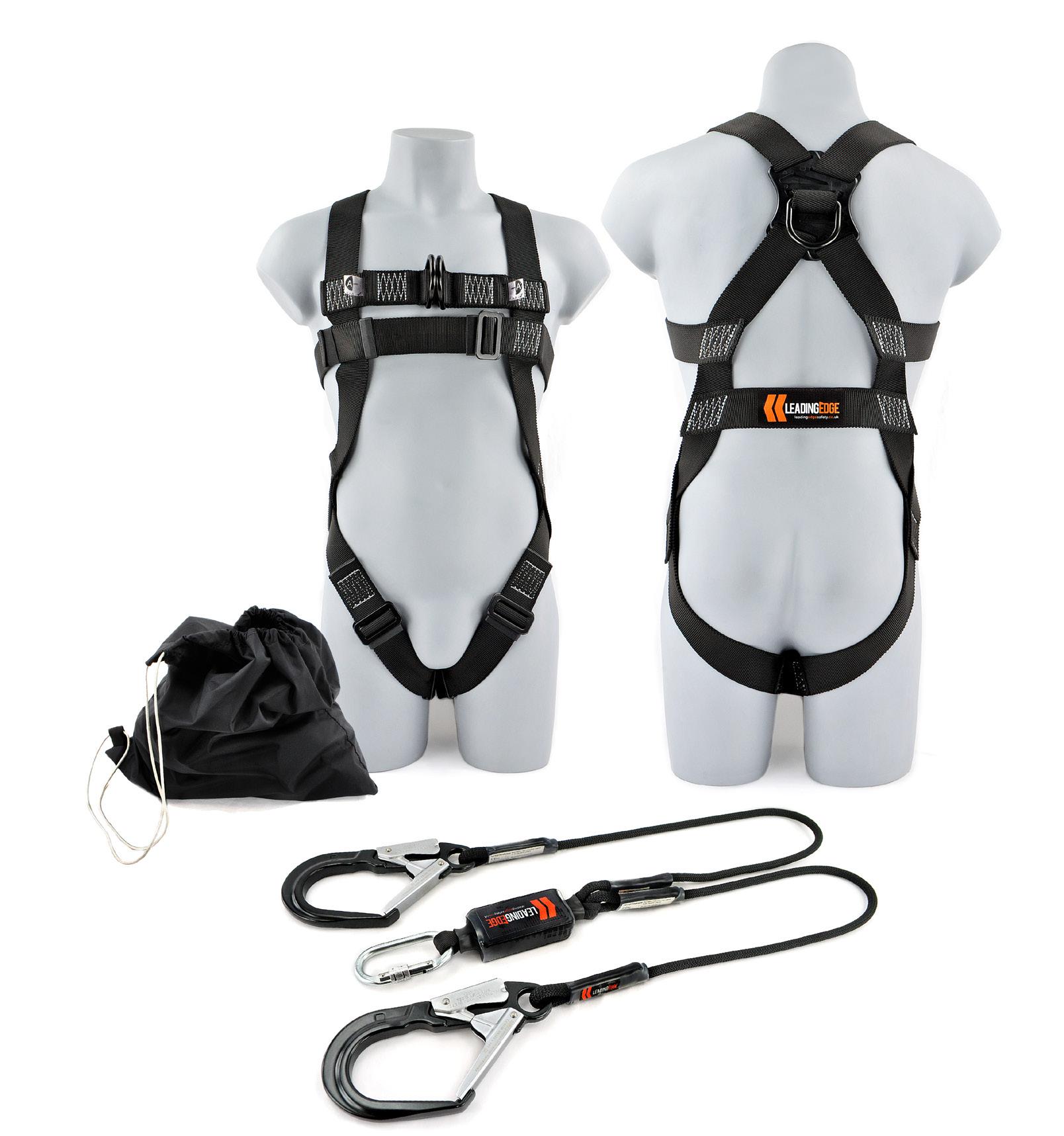
Choose between a rope or webbing lifeline. Variations cover equipment for 1 , 2 or 3 people The kit includes a 1-point harness with rear D-Ring and 1m lanyard tail

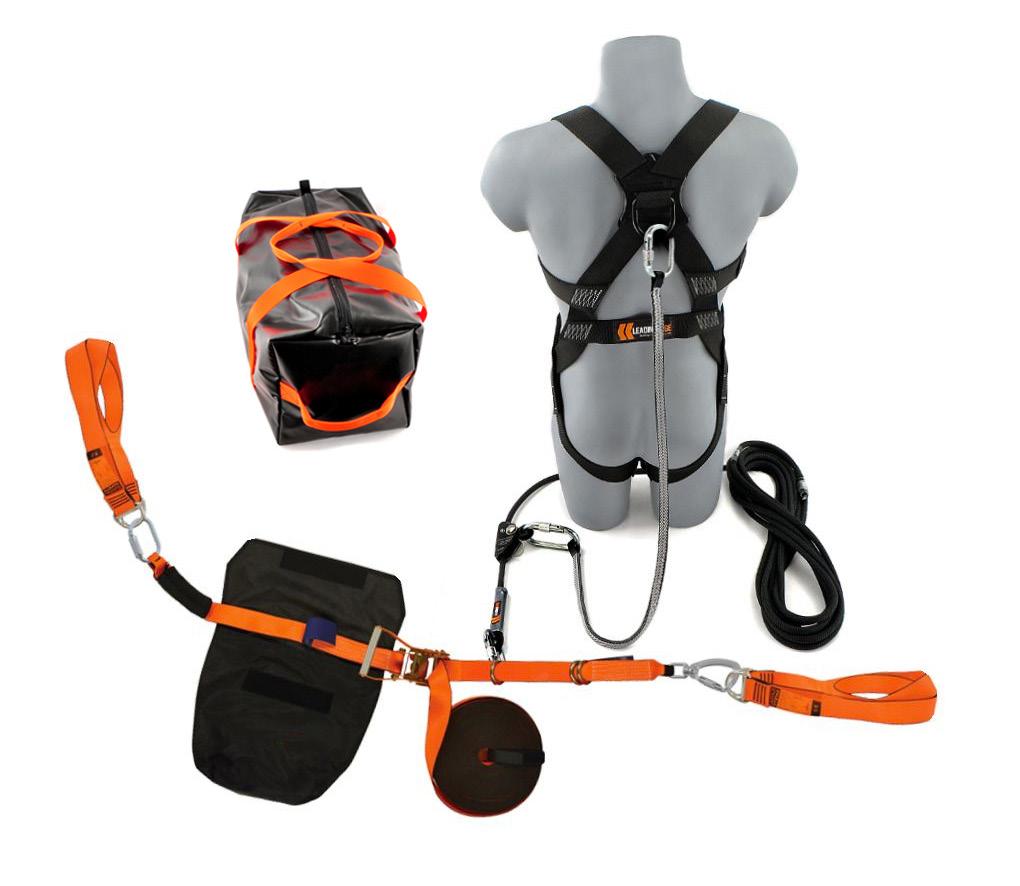

Lifeline kits come with a pair of anchorage devices. The Rope Kit comes with 2m wire slings and the Webbing Kit comes with webbing sling s. You can choose to add omni-anchors
Slings can be wrapped around a structure while omni anchor are pushed through holes in the structure. Both methods create a secure anchor point.
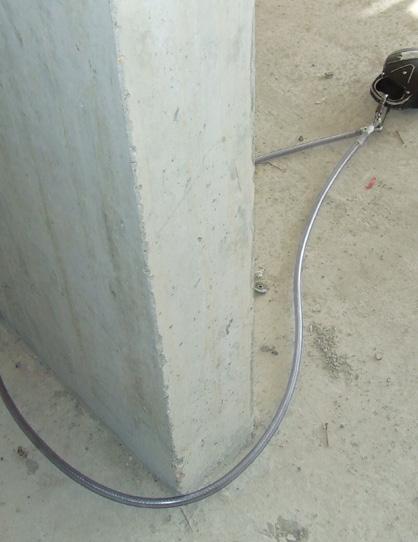

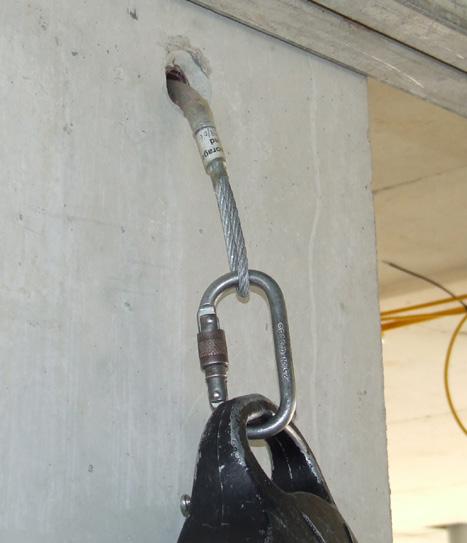
Your lifeline kit comes with an adjustable fall restraint rope available in three standard lengths – 5m, 10m, 15m and 20m.
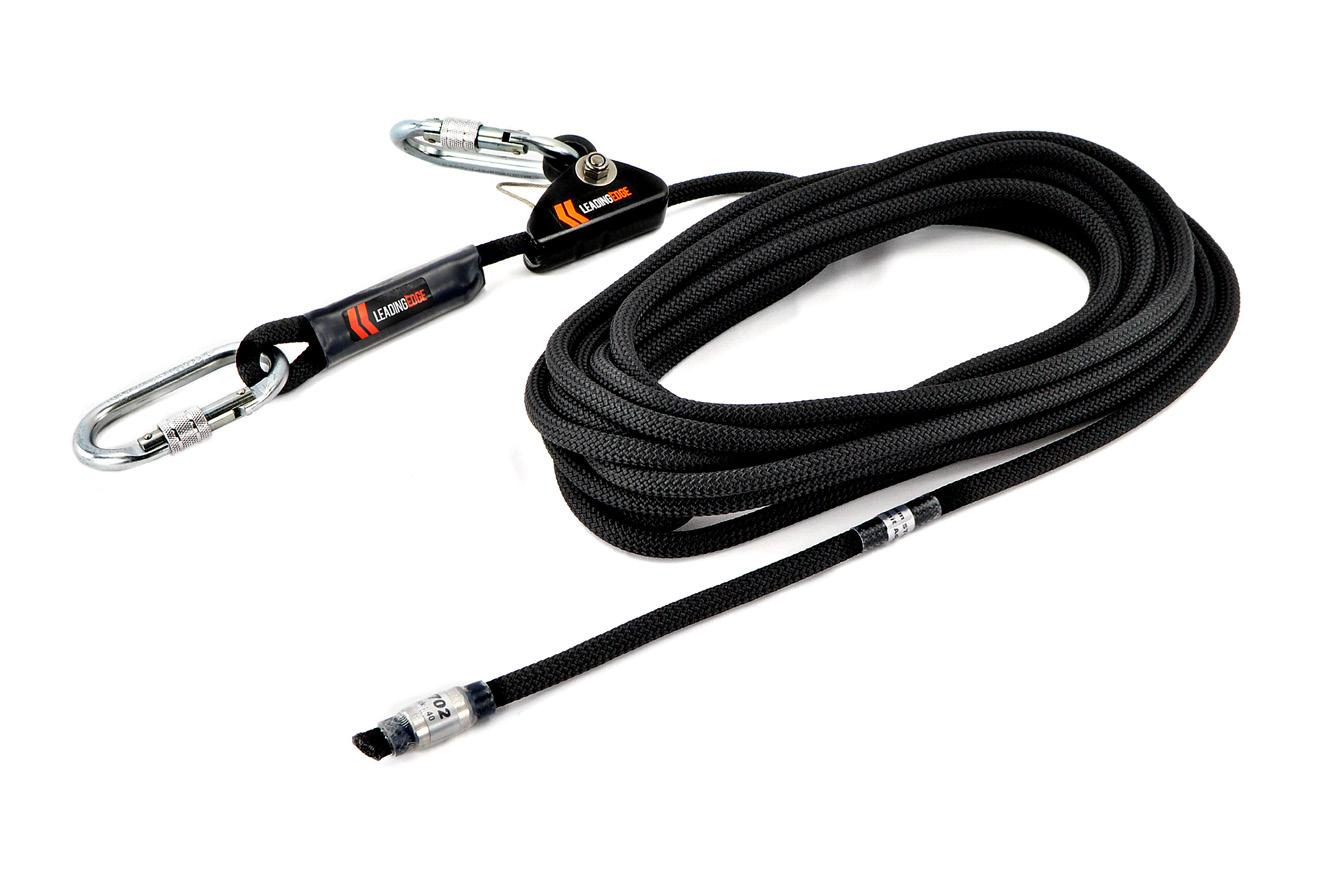
You may request custom lengths by speaking to a sales advisor. e.g. 3m, 12m, 50m etc.
Without proper training, operating a Lifeline Kit can be potentially dangerous. Before purchasing a kit, operatives should obtain a Working at Height certificate.
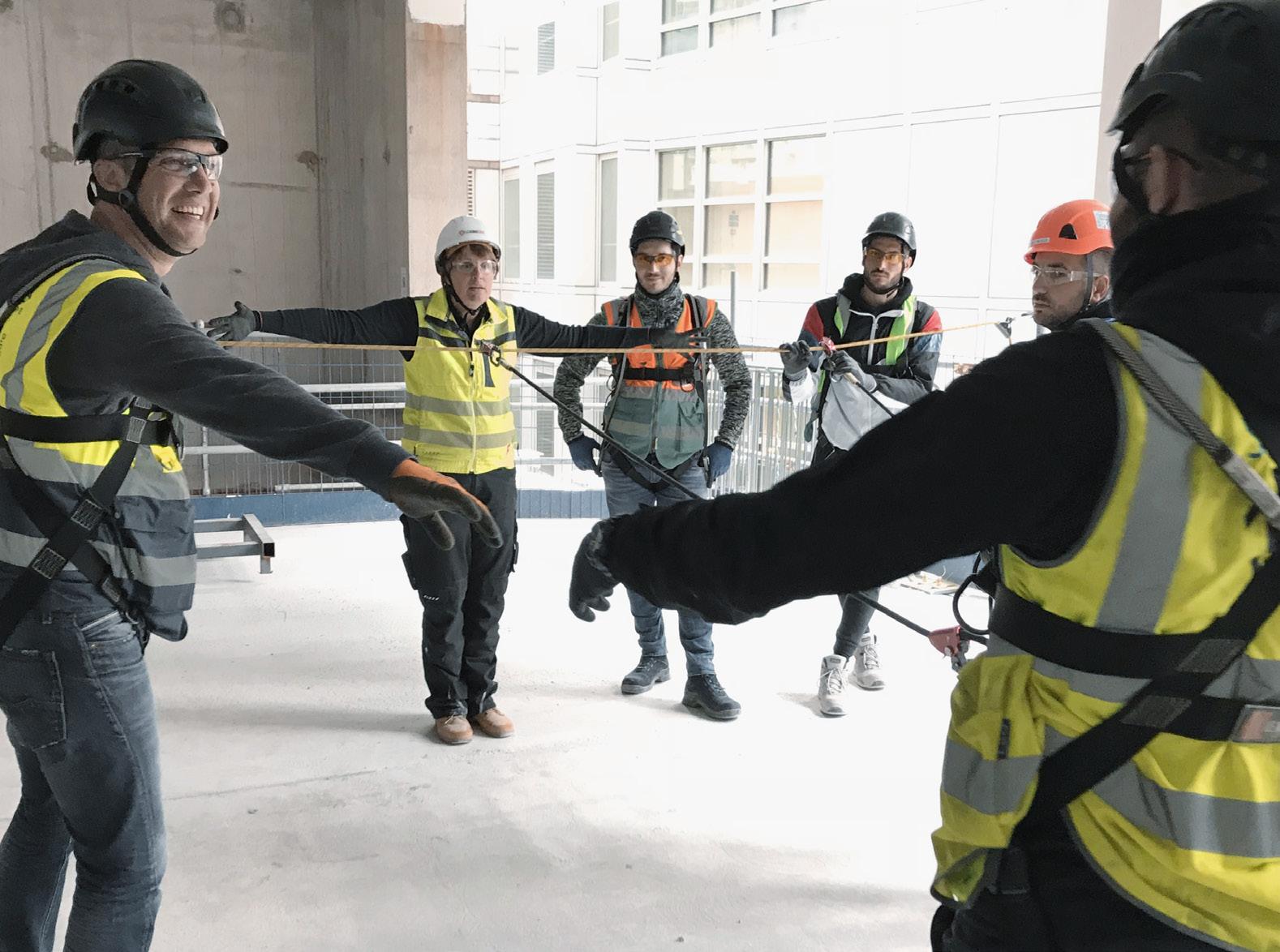
The combined systems in this kit allow you to safely traverse exposed leading edges and eliminates the risk of pendulum, whilst working in restraint. This is the safest and most desirable method of work, being at the top of individual height safety hierarchy of provision. Should it all go wrong, the combined systems have fall protection back-up for total security and peace of mind in the event of a fall.

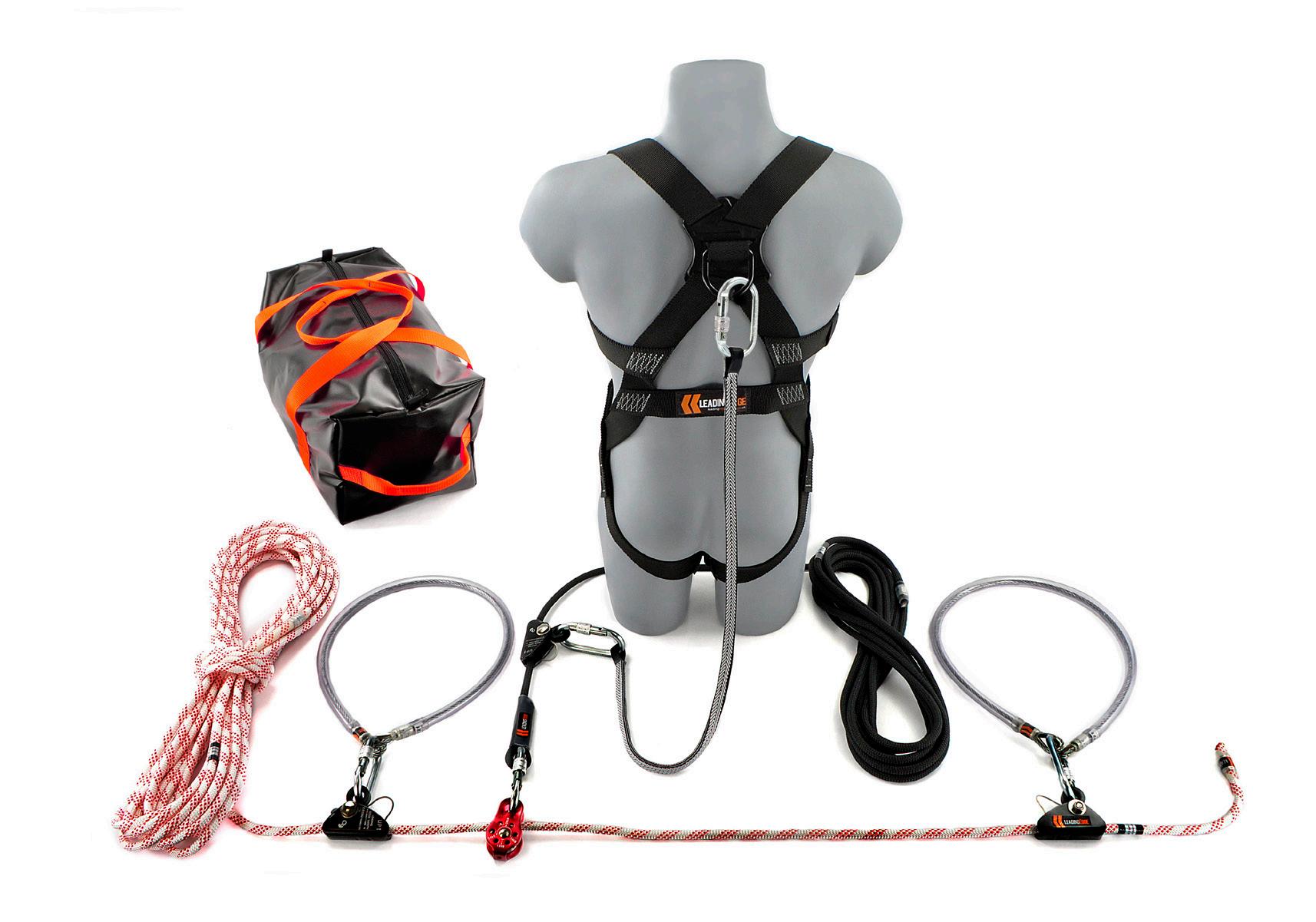
PRO-RRL-KIT-1P-20-5-D
10m
15m
PRO-RRL-KIT-1P-20-10-D
PRO-RRL-KIT-1P-20-15-D
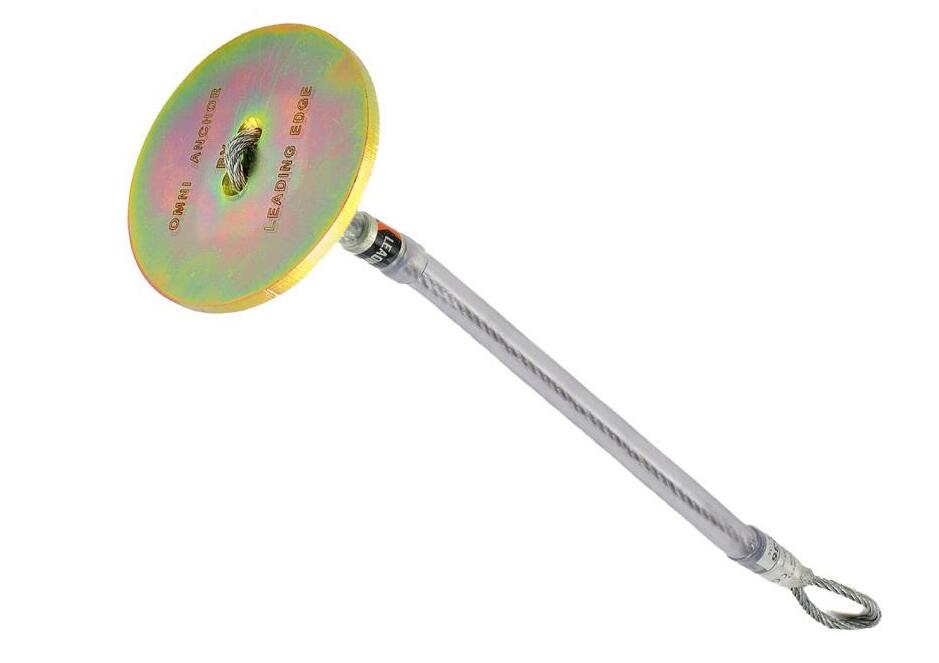
EN361 / EN795 / EN354 / EN362 / EN566 / EN353-2 / EN12278 1-Person Rope Restraint Lifeline Kit Add Omni Anchor OMNI350

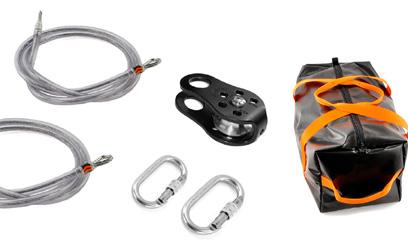
20m Custom Kit Need something different? Fully customize this kit with alternative specifications. Custom Anchorage Type Custom Restraint Length Custom Tail Length Add or Remove Components

350mm OMNI600
600mm
1 2 3
Anchorage Points Lifeline Kits Ladder Kits
Restraint Lanyard Kits Fall-Arrest Lanyard Kits 199
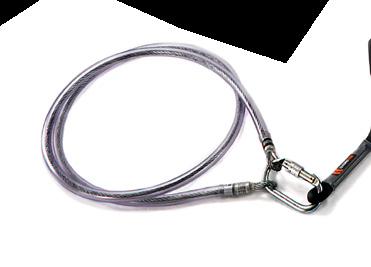
The combined systems in this kit allow you to safely traverse exposed leading edges and eliminates the risk of pendulum, whilst working in restraint. This is the safest and most desirable method of work, being at the top of individual height safety hierarchy of provision. Should it all go wrong, the combined systems have fall protection back-up for total security and peace of mind in the event of a fall.

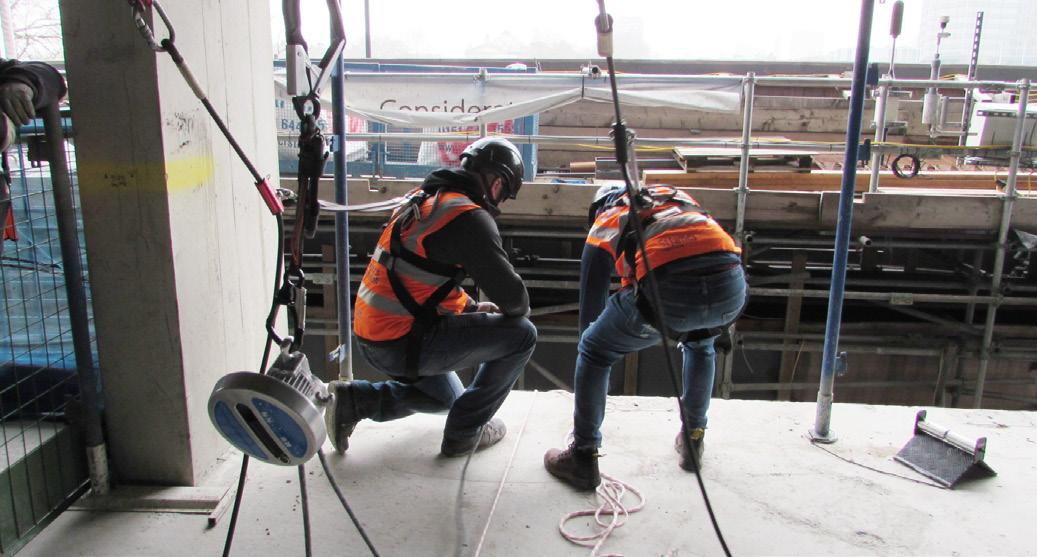
5m
Adjustable
10m
15m
PRO-WFL-KIT-1P-20-15-D

Add Omni Anchor OMNI350
PRO-WFL-KIT-1P-20-20-D 1-Person Webbing Restraint Lifeline Kit This kit comes with a medium/large size harness by default . If you require a small or extra large harness please specify when placing your order.




350mm OMNI600
600mm
1 2 3
Anchorage Points Lifeline Kits Ladder Kits
Restraint Lanyard Kits Fall-Arrest Lanyard Kits 201
The combined systems in this kit allow you to safely traverse exposed leading edges and eliminates the risk of pendulum, whilst working in restraint. This is the safest and most desirable method of work, being at the top of individual height safety hierarchy of provision. Should it all go wrong, the combined systems have fall protection back-up for total security and peace of mind in the event of a fall.
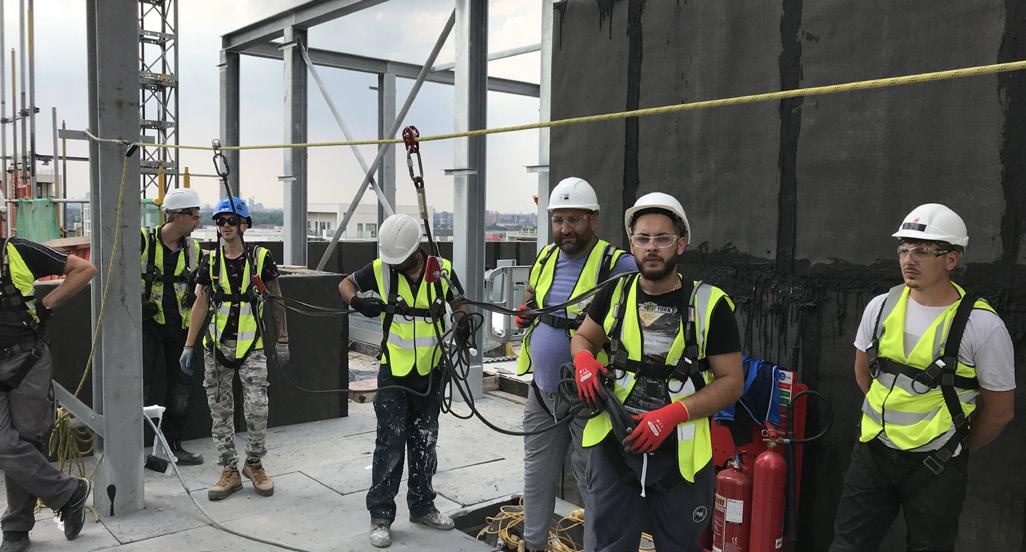

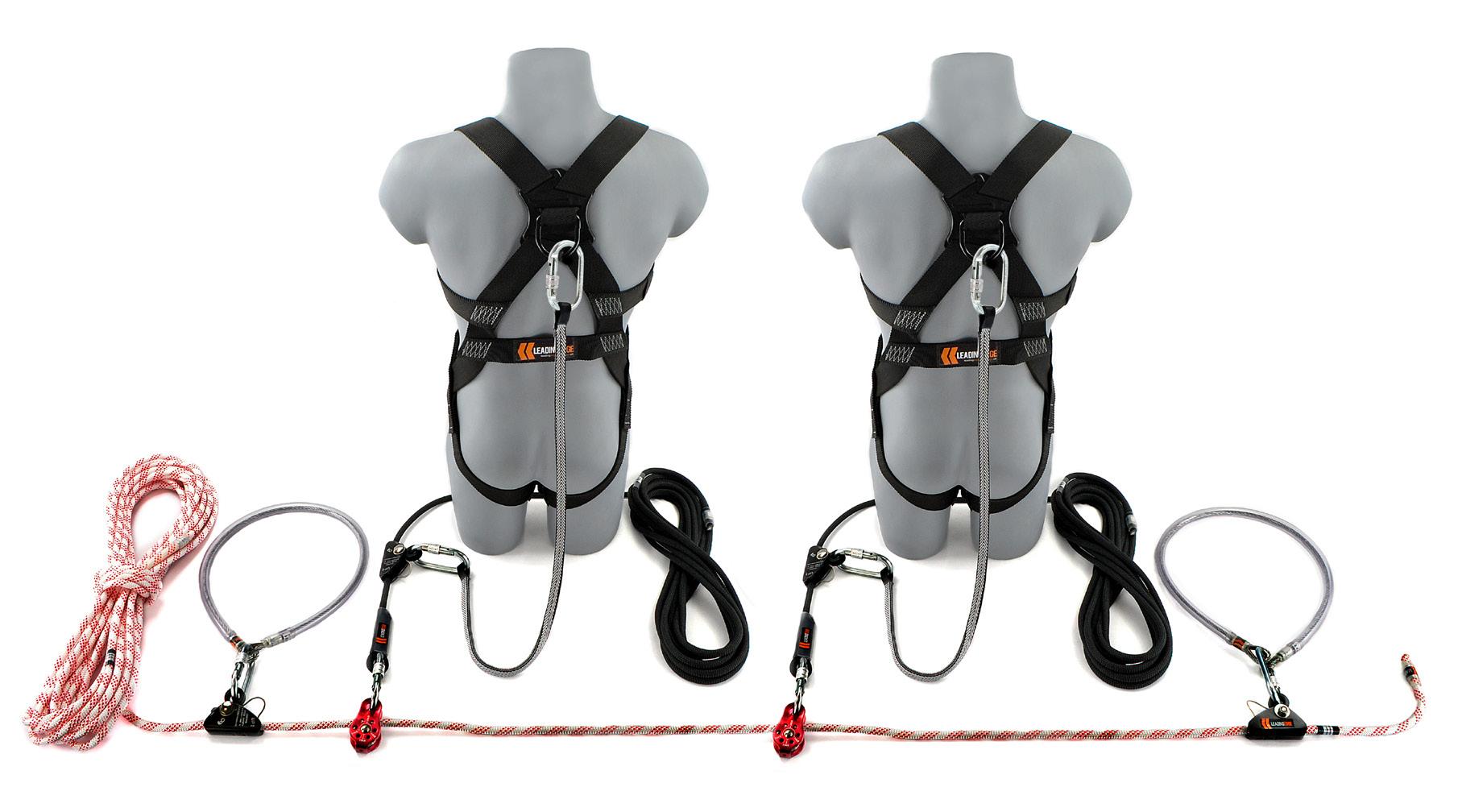
5m
Adjustable

10m
15m
PRO-RRL-KIT-2P-20-15-D
Add Omni Anchor OMNI350
PRO-RRL-KIT-2P-20-20-D 2-Person Rope Restraint Lifeline Kit This kit comes with a medium/large size harness by default . If you require a small or extra large harness please specify when placing your order.




350mm OMNI600
600mm
1 2 3
Anchorage Points Lifeline Kits Ladder Kits
Restraint Lanyard Kits Fall-Arrest Lanyard Kits 203
The combined systems in this kit allow you to safely traverse exposed leading edges and eliminates the risk of pendulum, whilst working in restraint. This is the safest and most desirable method of work, being at the top of individual height safety hierarchy of provision. Should it all go wrong, the combined systems have fall protection back-up for total security and peace of mind in the event of a fall.


5m
Adjustable
10m
15m
PRO-WFL-KIT-2P-20-15-D

Add Omni Anchor OMNI350
PRO-WFL-KIT-2P-20-20-D 2-Person Webbing Restraint Lifeline Kit This kit comes with a medium/large size harness by default . If you require a small or extra large harness please specify when placing your order.




350mm OMNI600
600mm
1 2 3
Anchorage Points Lifeline Kits Ladder Kits
Restraint Lanyard Kits Fall-Arrest Lanyard Kits 205
The combined systems in this kit allow you to safely traverse exposed leading edges and eliminates the risk of pendulum, whilst working in restraint. This is the safest and most desirable method of work, being at the top of individual height safety hierarchy of provision. Should it all go wrong, the combined systems have fall protection back-up for total security and peace of mind in the event of a fall.


5m
Adjustable

10m
15m
PRO-RRL-KIT-3P-20-15-D
Add Omni Anchor OMNI350
PRO-RRL-KIT-3P-20-20-D 3-Person Rope Restraint Lifeline Kit This kit comes with a medium/large size harness by default . If you require a small or extra large harness please specify when placing your order.




350mm OMNI600
600mm
1 2 3
Anchorage Points Lifeline Kits Ladder Kits
Restraint Lanyard Kits Fall-Arrest Lanyard Kits 207
The combined systems in this kit allow you to safely traverse exposed leading edges and eliminates the risk of pendulum, whilst working in restraint. This is the safest and most desirable method of work, being at the top of individual height safety hierarchy of provision. Should it all go wrong, the combined systems have fall protection back-up for total security and peace of mind in the event of a fall.


5m
Adjustable
10m
15m
PRO-WFL-KIT-3P-20-15-D

Add Omni Anchor OMNI350
PRO-WFL-KIT-3P-20-20-D 3-Person Rope Restraint Lifeline Kit This kit comes with a medium/large size harness by default . If you require a small or extra large harness please specify when placing your order.




350mm OMNI600
600mm
1 2 3
Anchorage Points Lifeline Kits Ladder Kits
Restraint Lanyard Kits Fall-Arrest Lanyard Kits 209
Basic level of ladder stability and mobility. Personal safety achieved only when clipped onto ladder. 1m working area of ladder stabilization.
Medium level of ladder stability and mobility. Full height safety protection with work positioning and fall arrest. 1m working area of ladder stabilization.
High level of ladder stability & mobility. Full height safety protection with work positioning and fall arrest. 10m wide working area of stabilization.
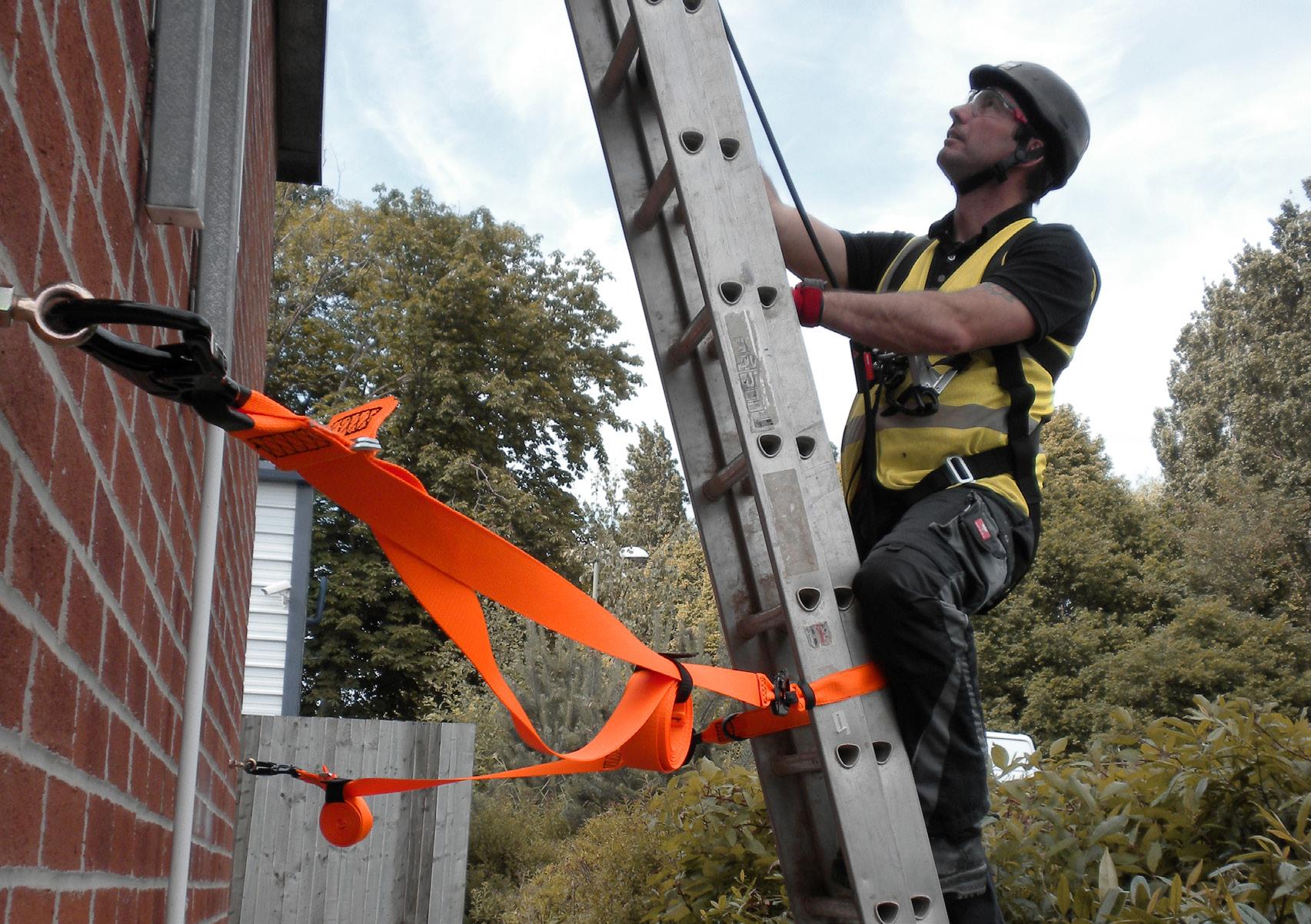
Eye-bolt goes directly into structure. Adjustable strap goes between the eye-bolt and the ladder meaning the working area is directly in front of your anchorage. Height safety protection is only achieved once clipped on to the ladder.



Eye-bolt goes directly into structure. Adjustable strap goes between the eye-bolt and the ladder, meaning the working area is directly in front of your anchorage. Height safety protection is provided from the ground up. This system allows you to work hands free, whilst being protected should you fall.
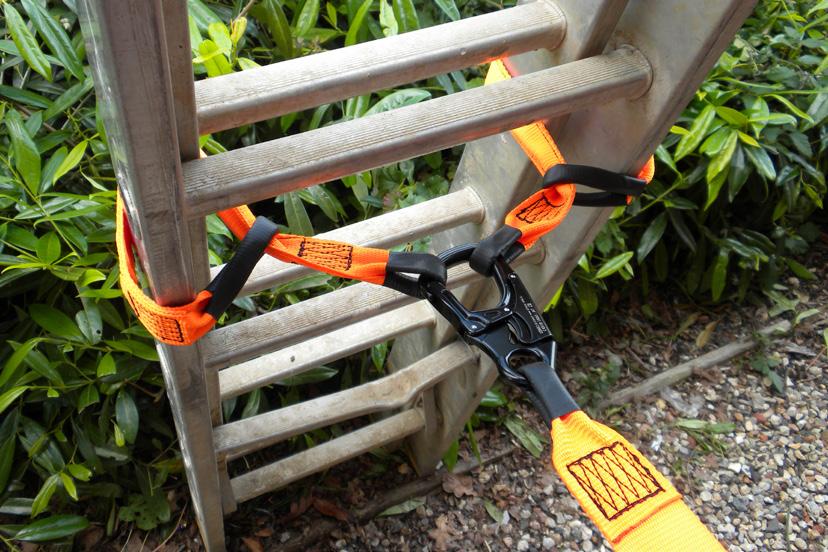


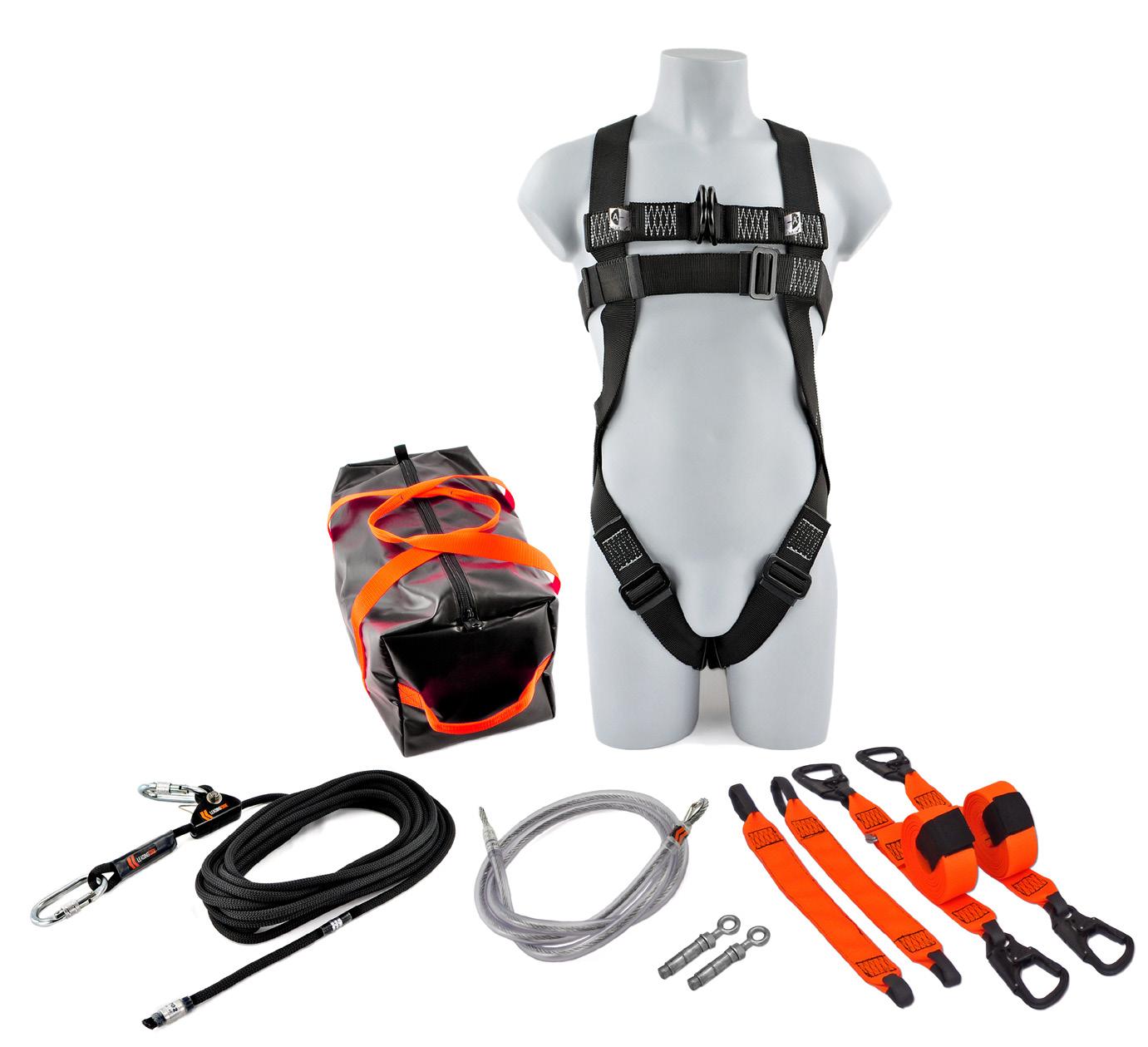
Eye-bolts can be installed up to 10m apart, allowing you to quickly and easily move the ladder across a wide working area by adjusting and re-tightening the ladder stabilizing straps. This provides maximum mobility. Height safety protection is provided from the ground up. This system also allows you to work hands free, whilst being protected should you fall.


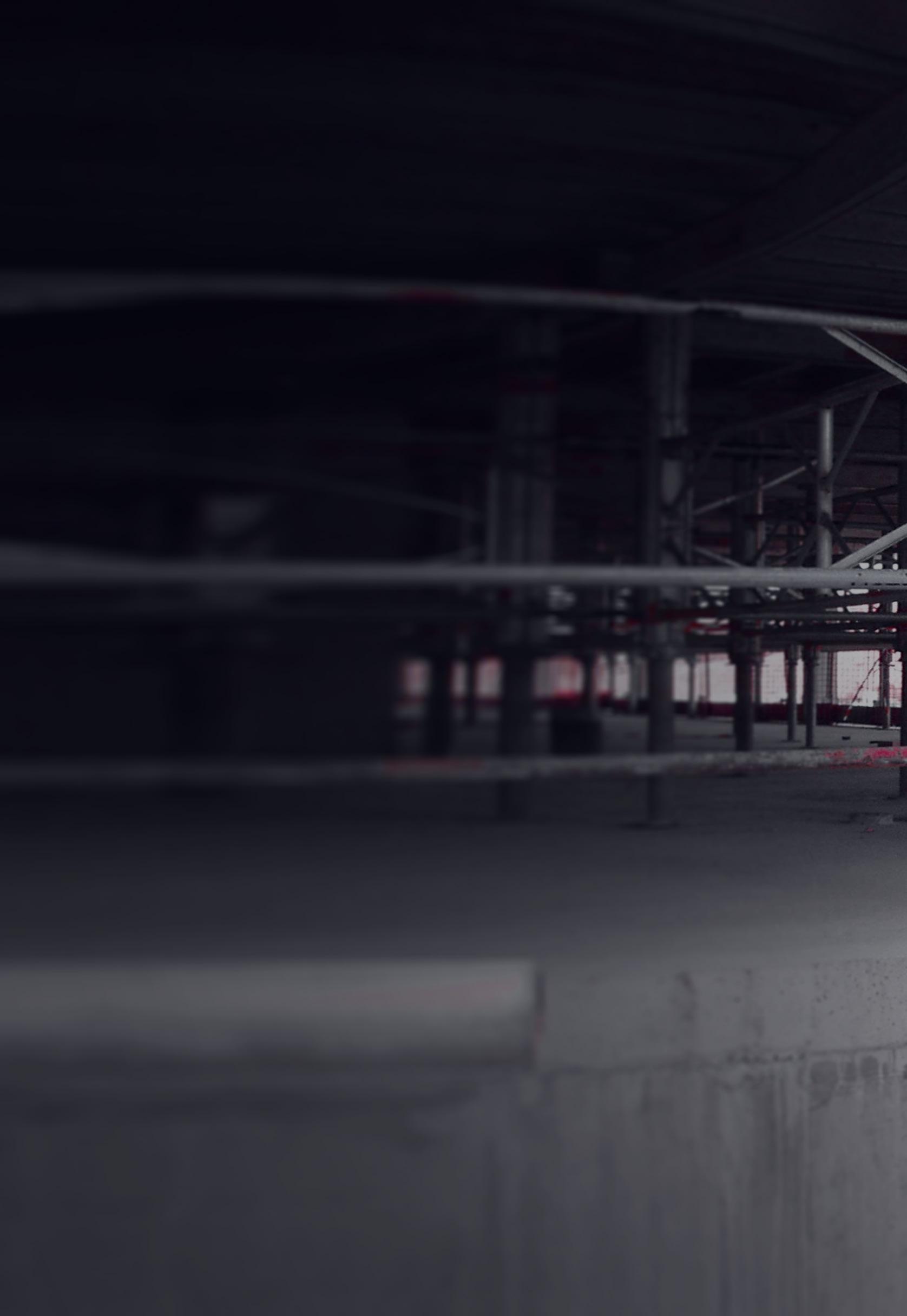
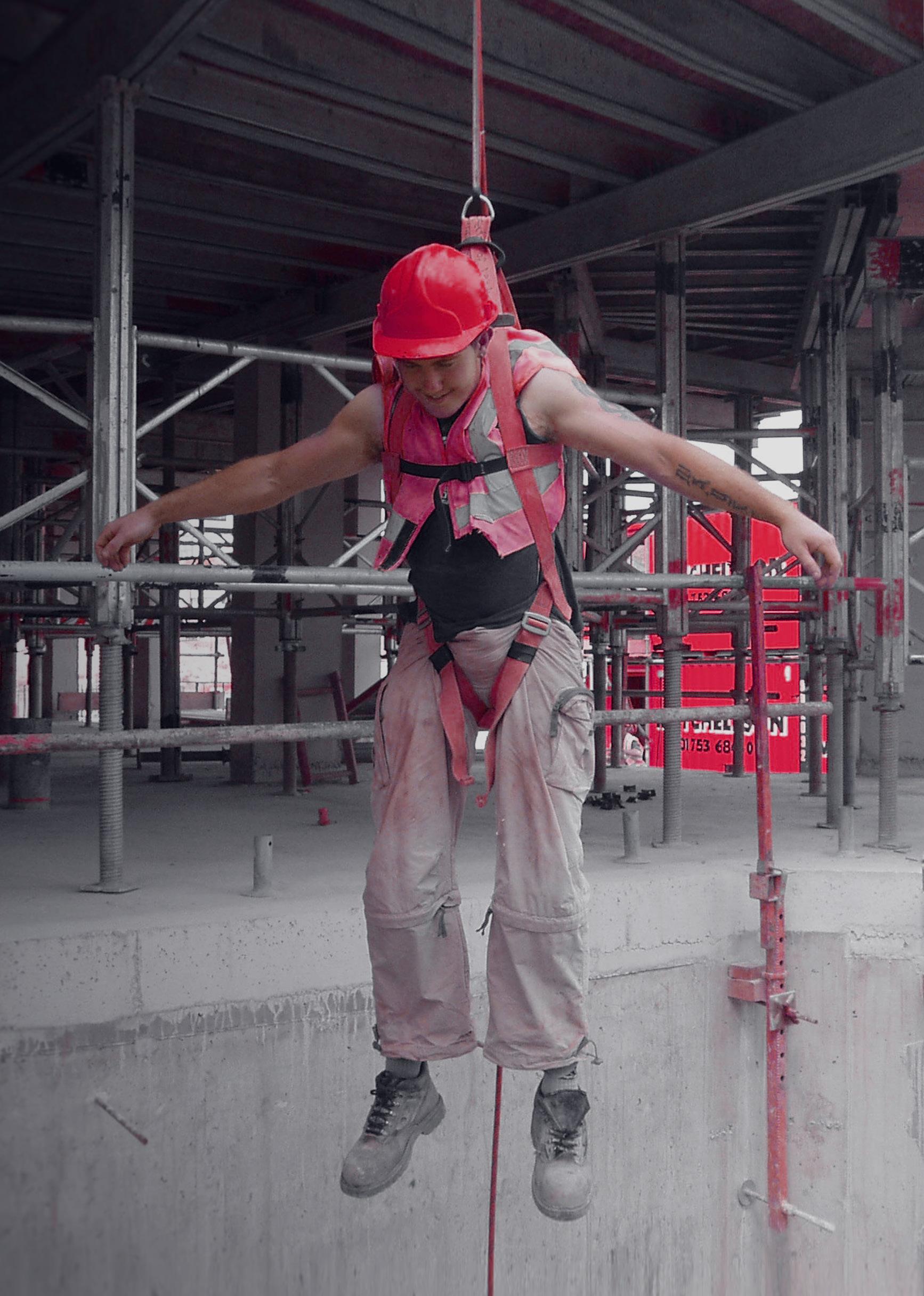

Fall protection systems may halt a fall but remaining suspended in a harness is more dangerous than you may realise. Here’s what you need to know about height rescue after a fall incident.

For those of us who work at height fall hazards are a necessary evil. It also means we have a duty — not just to ourselves, but to others. For employers it means making the correct provisions for the workforce. For operatives it means working safely and acting quickly in an emergency. But that’s only half the story. Because our moral duties are enforced by our legal ones: the WAH Regulations 2005 and British Standard 8437.
Height rescue is here to protect your team and satisy the law
Fulfilling your legal and moral duties requires two things: training and equipment. For height rescue that means selecting appropriate recovery systems and giving workers the skills to operate them. But because training and equipment are intimately linked, we believe they should go hand in hand. So by manufacturing our own equipment and developing our courses around that equipment, Leading Edge offer the safest, simplest way to gain adequate rescue provision.
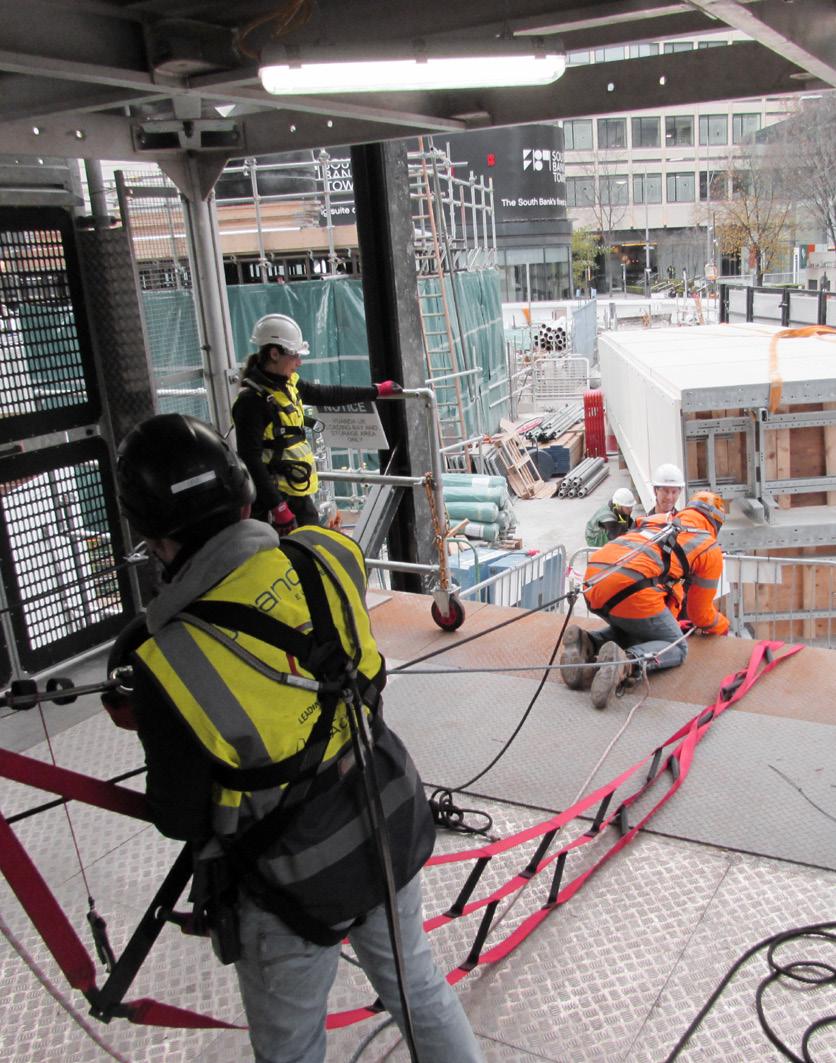
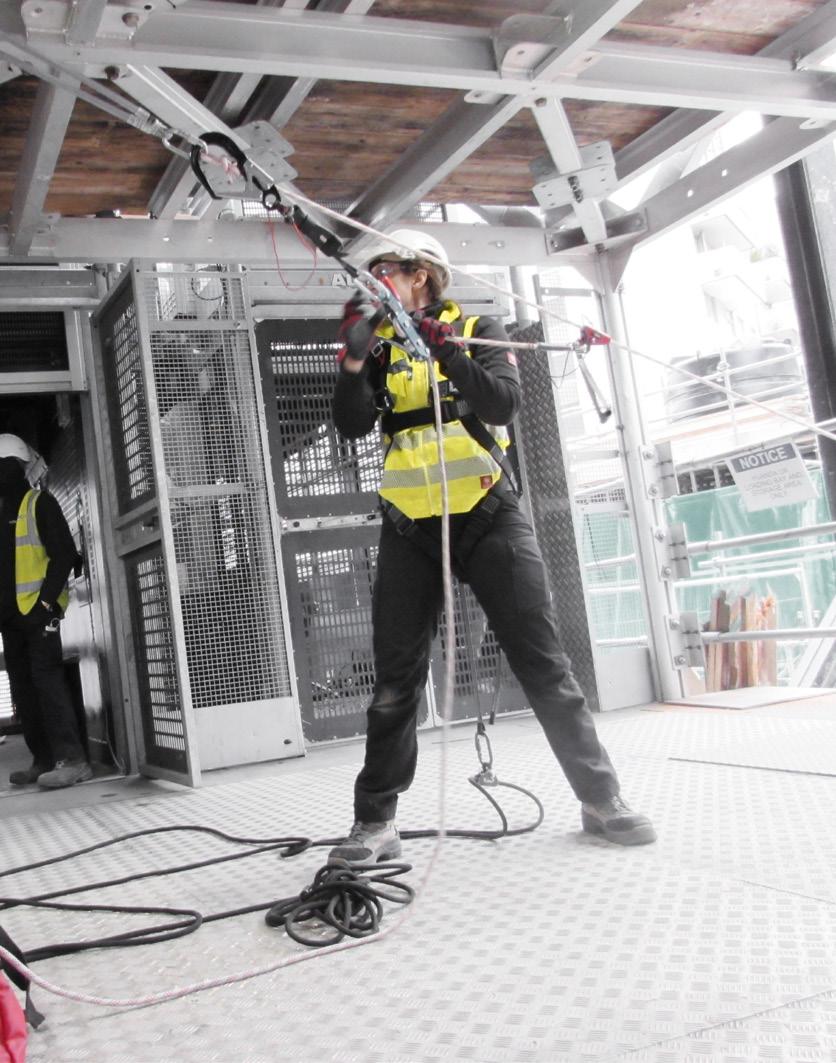
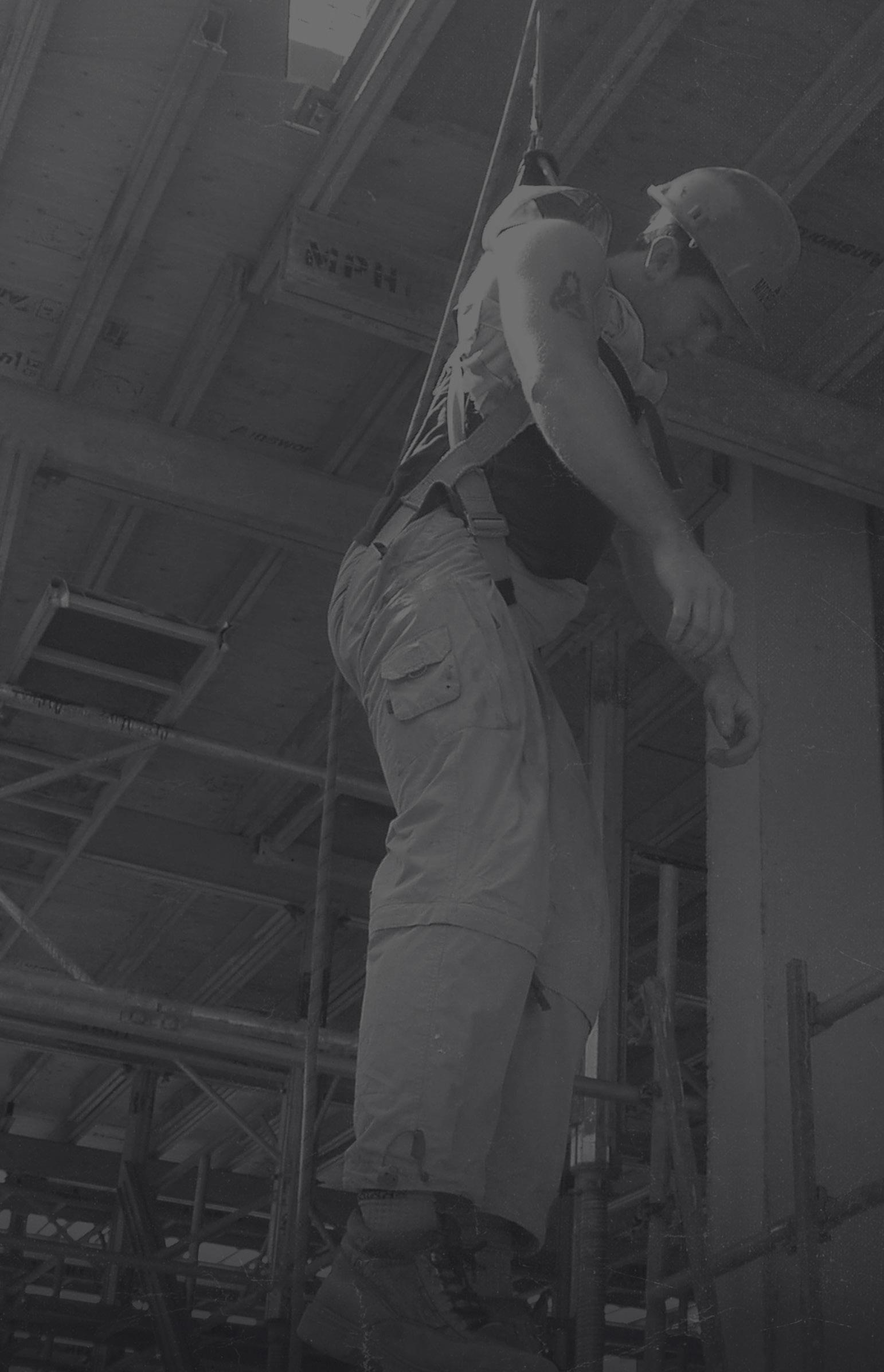
After a fall the body goes through several stages of physical distress. These are a group of conditions known as Suspension Intolerance and Reflow Syndrome. Their effects can be devastating. So much so in fact that 20% of all fall casualties are presumed dead within 10 minutes And for everyone else? Within the hour.
We’ve learnt that fatalities can occur within 10 minutes of a fall. But the truth is it only takes 5 minutes for irreversible brain damage to occur. So while it’s an testament to our emergency services that they’re able to arrive within 8 minutes of being notified, for us that’s already too late. By being prepared to act immediately you’ll not only save a life, but halt a lifetime of difficulty and hardship for the casualty and their family.


By conducting repeated self and assisted recoveries - in vertical and horizontal rigged positions with a variety of fall protection equipment - you’ll gain total confidence recovering a fall casualty with your chosen rescue system(s). And to test you can act under pressure, we’ll do a 5-minute rescue challenge to compete for the fastest, safest recovery.

We provide our own dedicated specialist rescue gear including rigging props, recovery systems and rescue dummy to deliver theory and practical lessons. We just need somewhere to teach. So, if you’re booking a course on your site, talk to us to discuss the best way to acheive your needs.
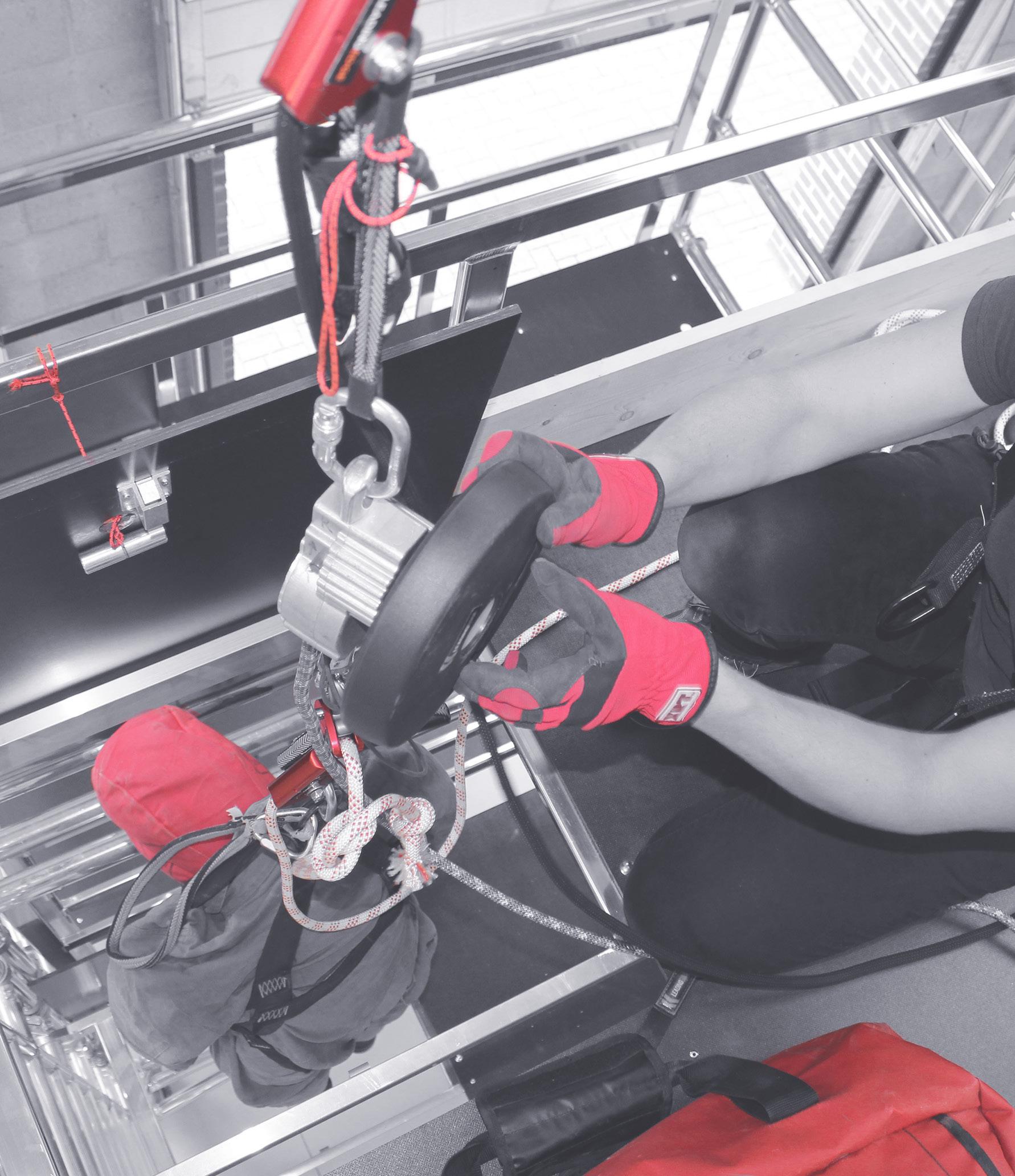
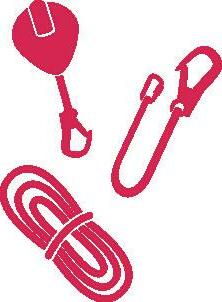
The height rescue course provides dedicated training for three types of rescue system. Together they allow the safe recovery of a fall casualty in any situation using the raising, lowering or combined raising and lowering methods. But the course is far from generic. You choose which one you want—or all three—and your training focuses comprehensively on your chosen method/s, wasting no valuable time on things you’ll never need.

When lower floors are obstructed, glazed or high-rise, the haul system allows an unconscious fall casualty to be raised back to the area from which they fell. Though highly effective, its pulling mechanism requires a minimum of five people to conduct a safe and speedy recovery.
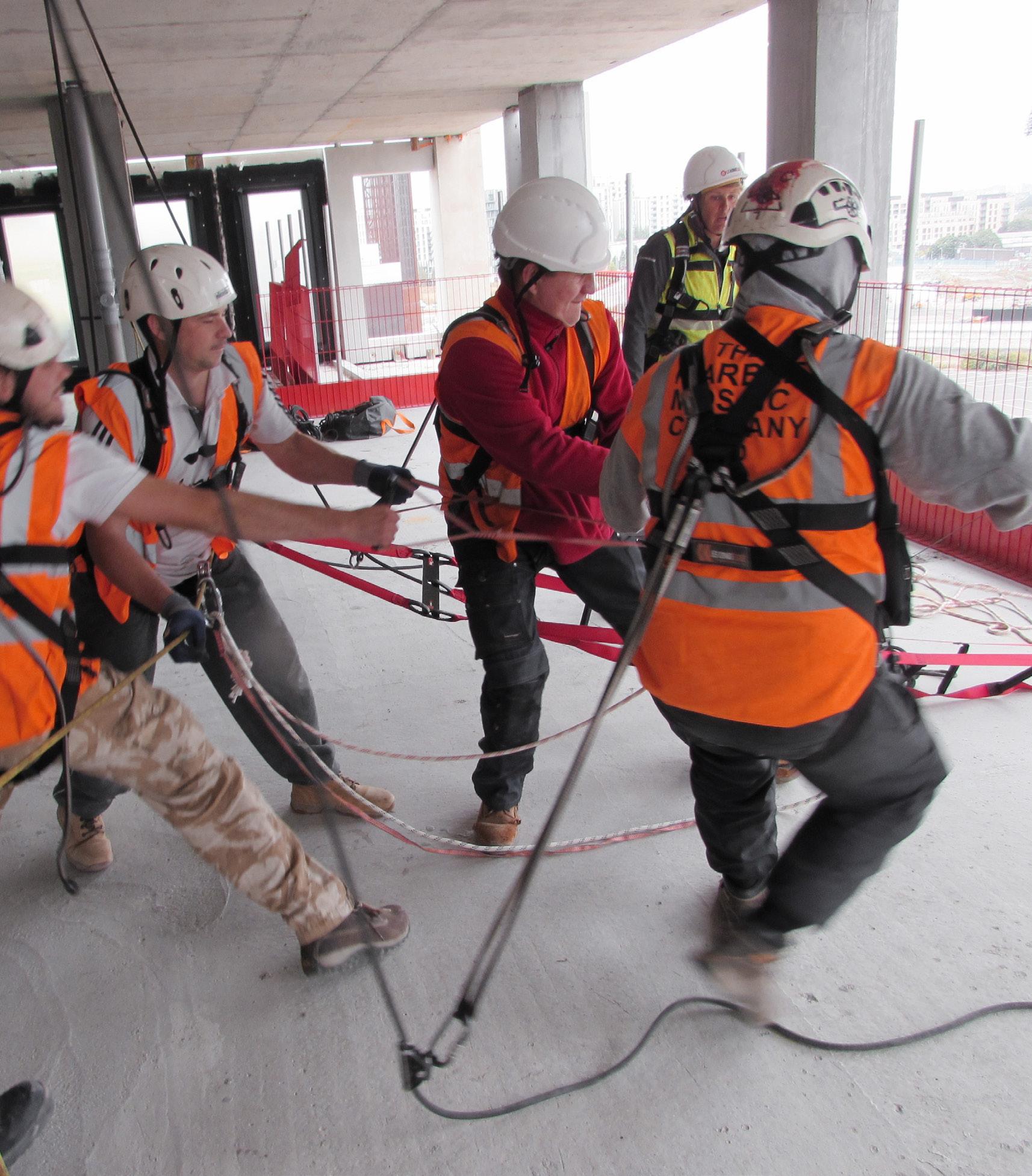

Execute the recovery of a conscious or unconscious fall casualty by lowering them safely to the ground or a lower floor. Requiring only one person to operate makes descent a quick and easy method of rescue, however it is only suitable for applications where there are no obstructions or restrictions beneath the floor from which the casualty fell, i.e. it’s safe to lower!

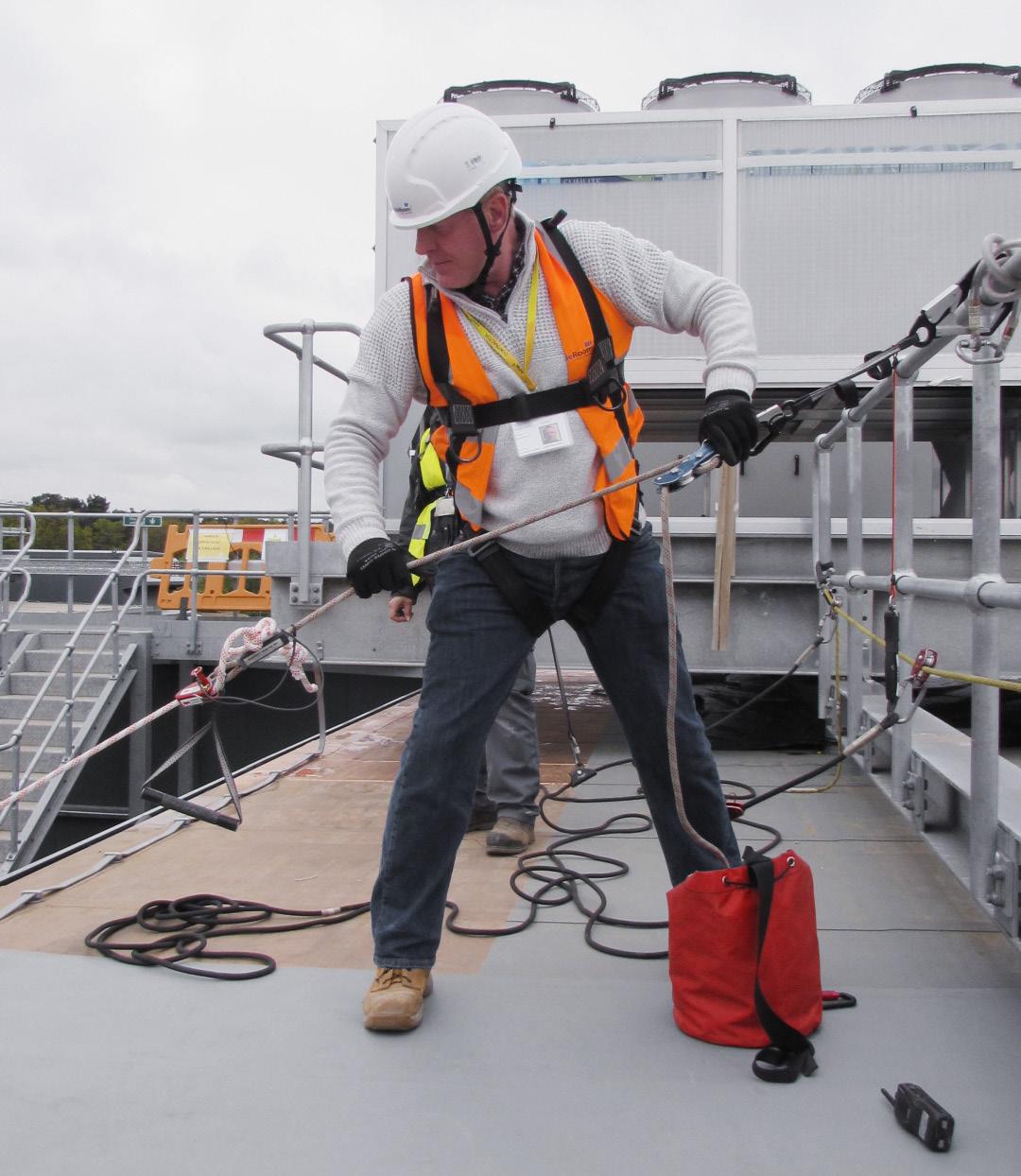
The winch system combines the benefit of both haul and descent in one simple device to ensure maximum safety for all situations. The winch is n ot only easy to deploy but requires only one person to affect a speedy rescue by either lowering or raising the casualty to safety.

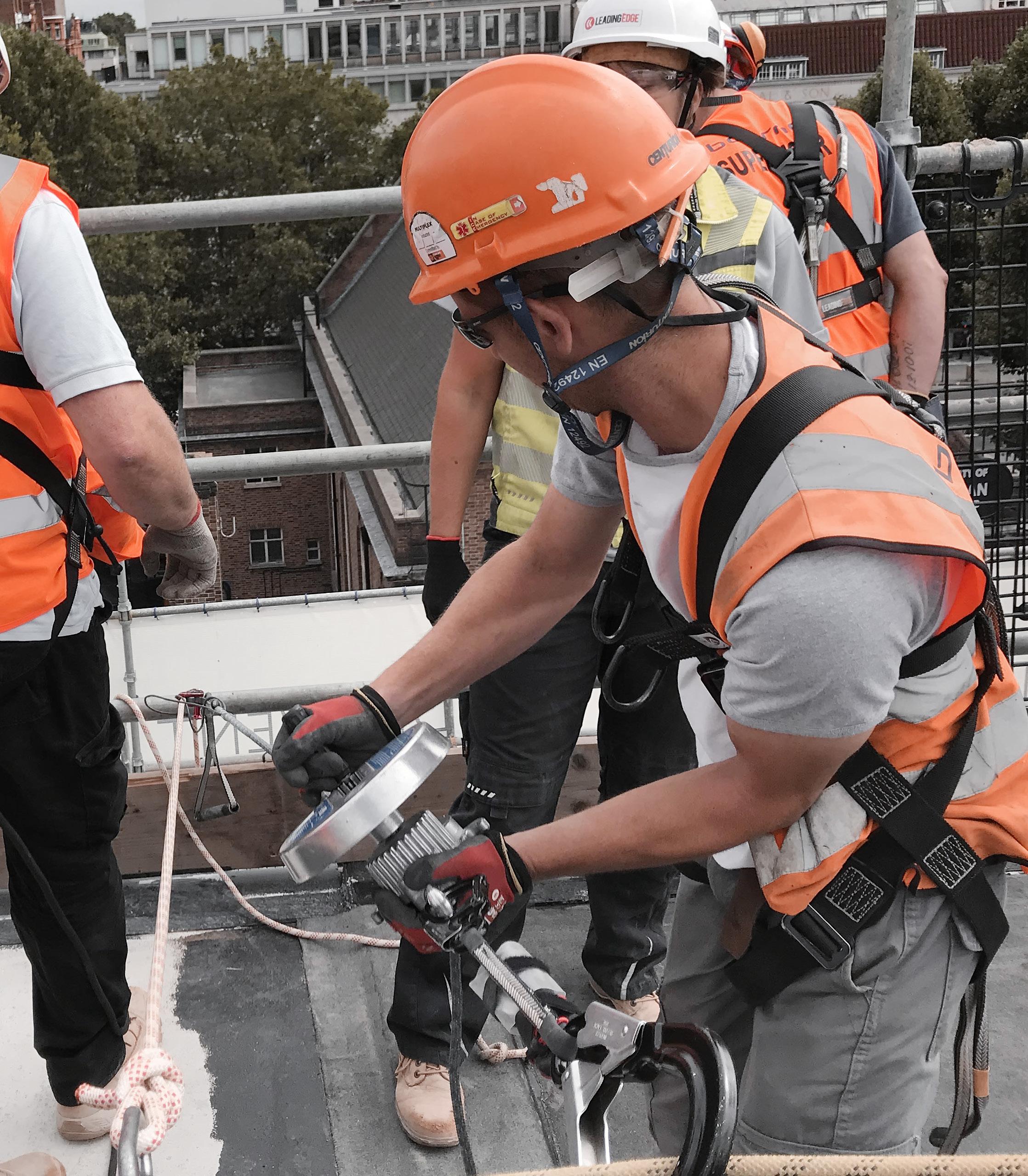
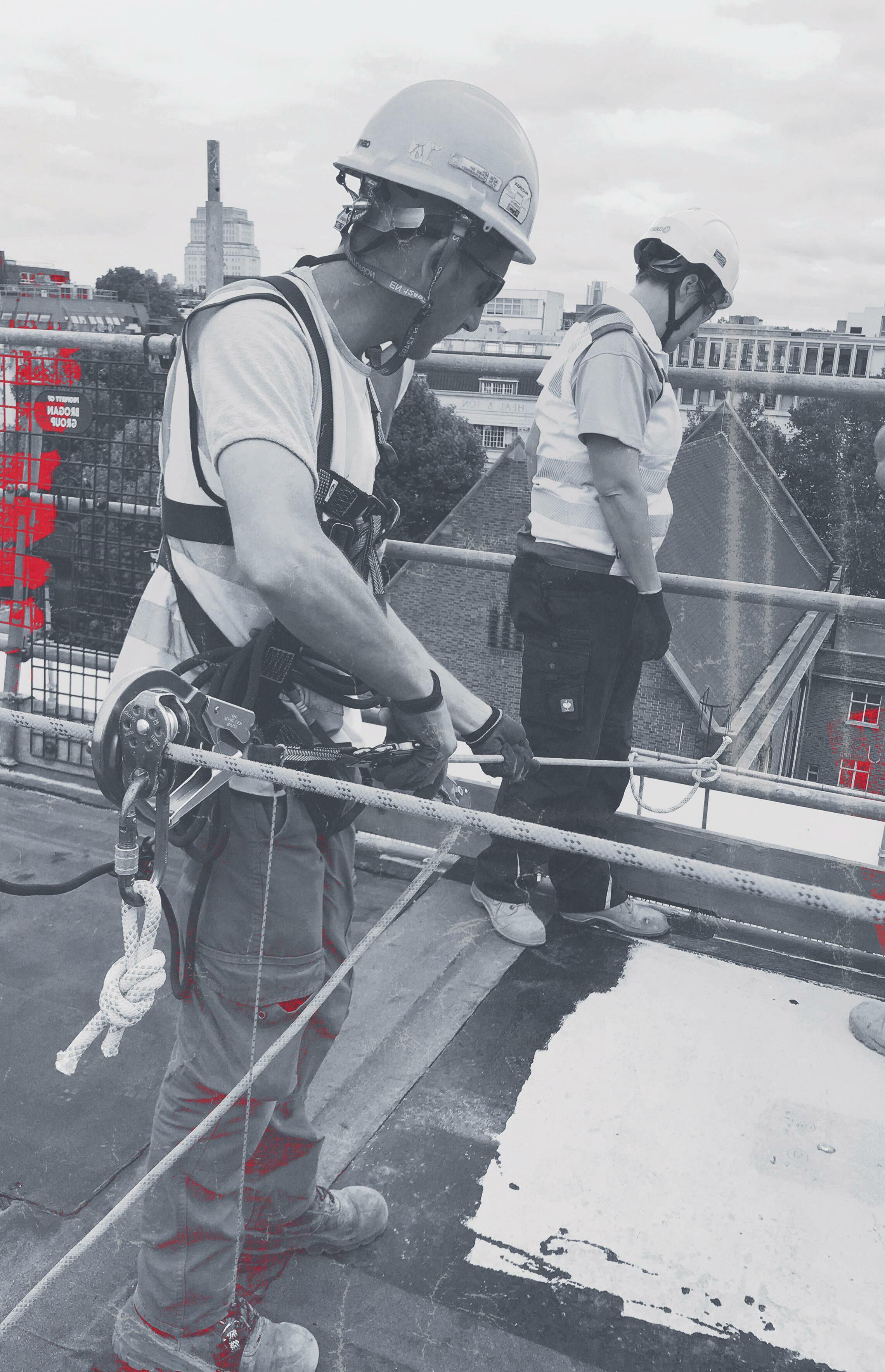
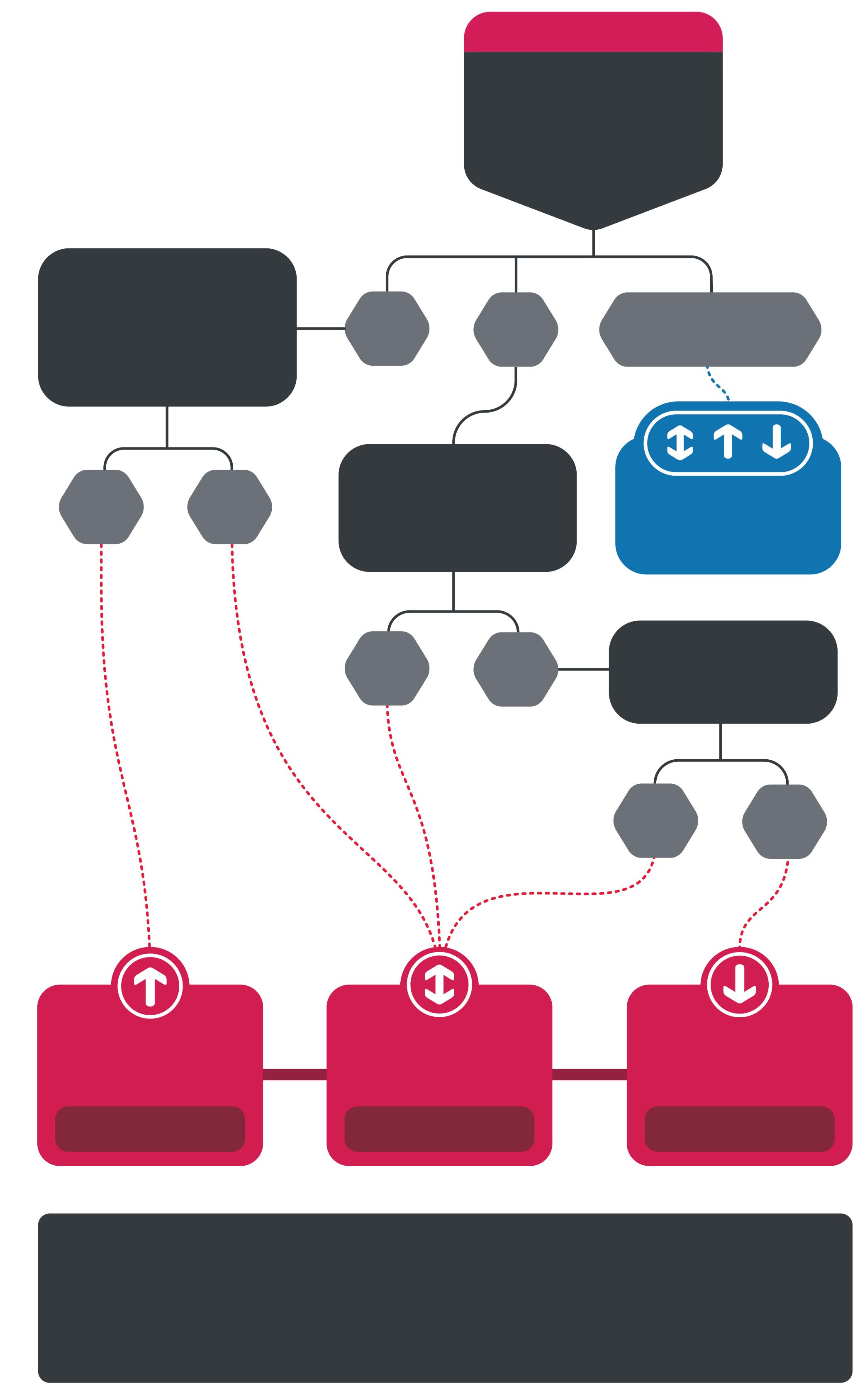
Learn every rescue method during 8 hours of training with 1½ hours of theory and 6 hours of practical exercises — recommended for management.
Learn your choice of Winch, Descent or Haul system during 5 hours of training with 1 hour of theory and 3½ hours of practical exercises — ideal for general operatives.
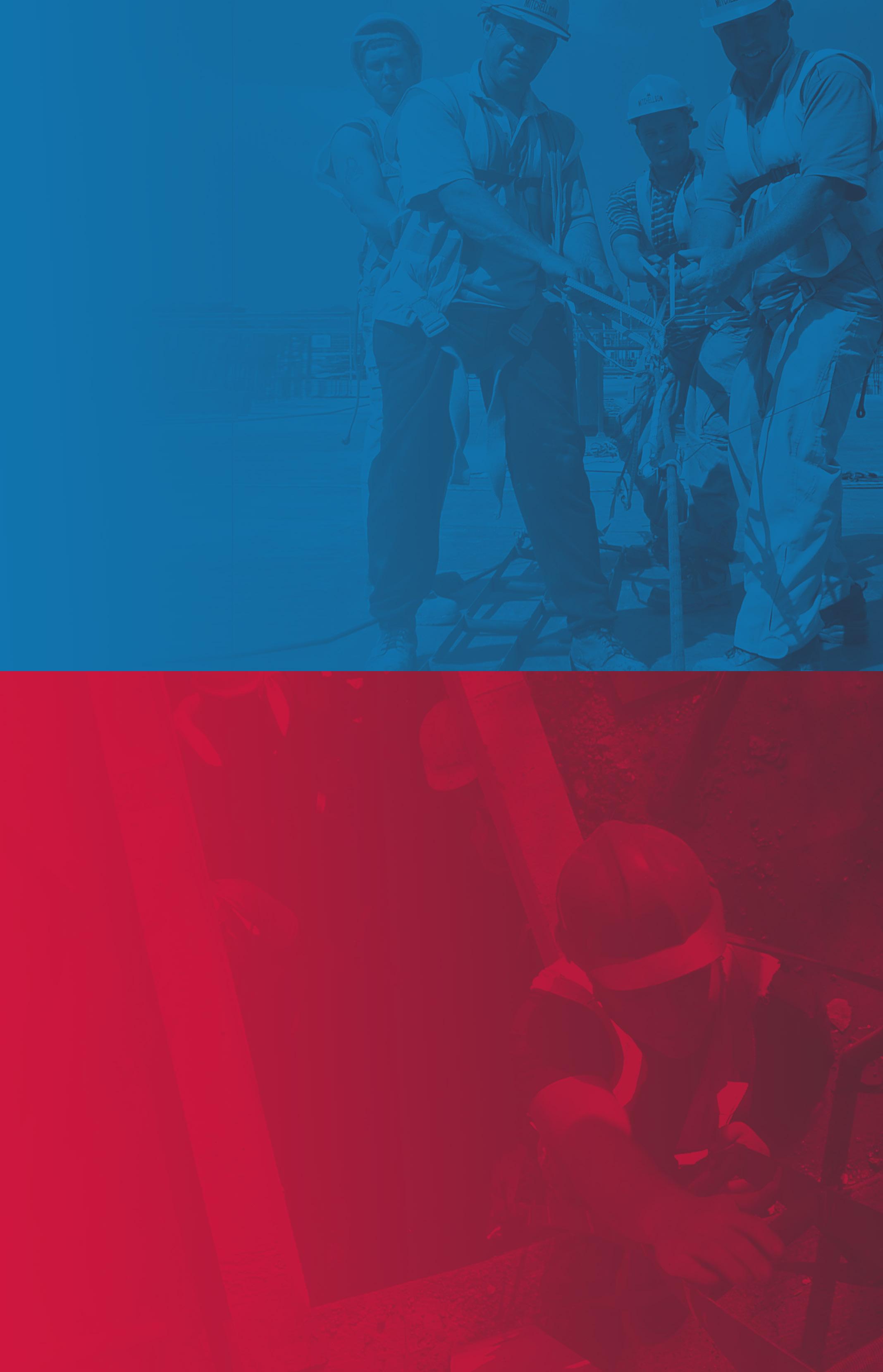


It only takes five minutes for the onset of suspension intolerance to change a life forever. Venous pooling, orthostatic intolerance, vascular shock — learn how these devastating conditions affect a fall casualty. We’ll study the science and look at some eye-opening statistics to reveal why a rescue plan is essential for protecting people who work at height.
Explore 3 different recovery systems, discover their suitability and effectiveness for various recovery scenarios and get in depth practical training in the system/s of your choice. We’ll also look a the process and frequency of equipment inspection as well as anchorage considerations you will commonly encounter in the field.

By conducting repeated self and assisted recoveries — in vertical and horizontal rigged positions with a variety of fall protection equipment — you’ll gain total confidence recovering a fall casualty with your chosen rescue system/s. And to test you can act under pressure we’ll do a 5-minute rescue challenge to compete for the fastest, safest recovery.



 Lowering Systems
Lowering Systems
By utilizing the force of 5 personnel, the horizontally rigged haul system manually raises a casualty 3m in a single pull. Its multibraid pro-static rope and Dyneema is edge tested for high impact abrasion and backed up with twin haul lines to provide dual fall arrest protection. Breaking load 26kN (2.6T).

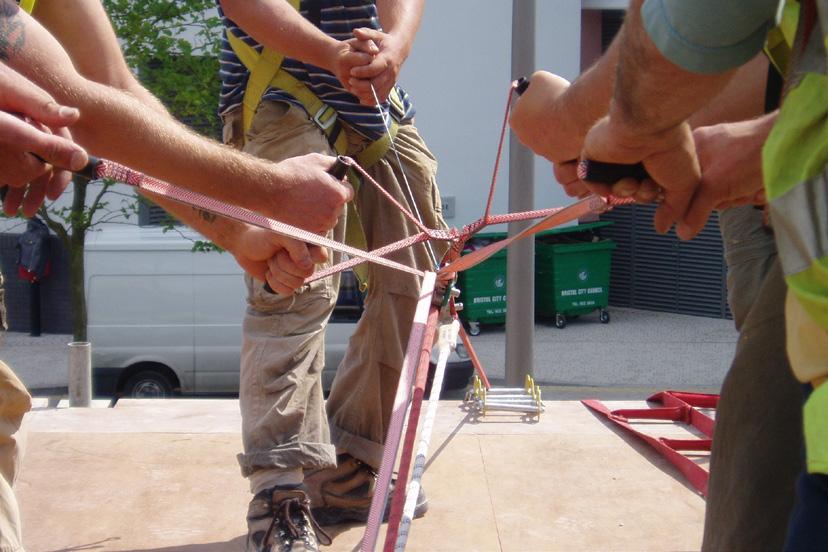



Manually lower a fall casualty to safety with the descent system. This easy-to-use device can be rigged horizontally or vertically, requires only one person to operate. It includes an automatic safety override to prevent the accidental release of a casualty while lowering.

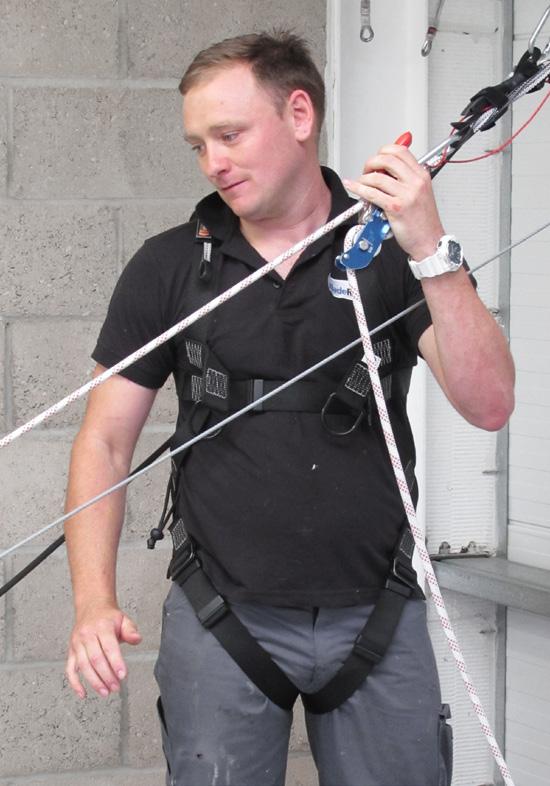
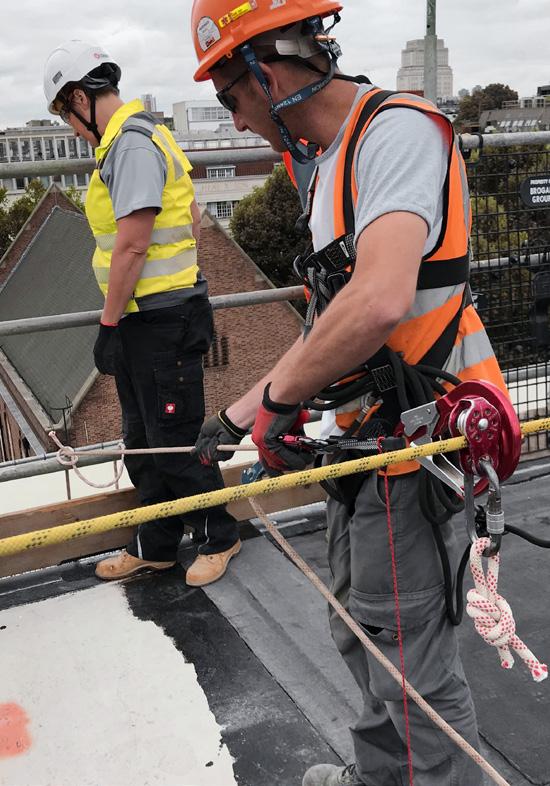

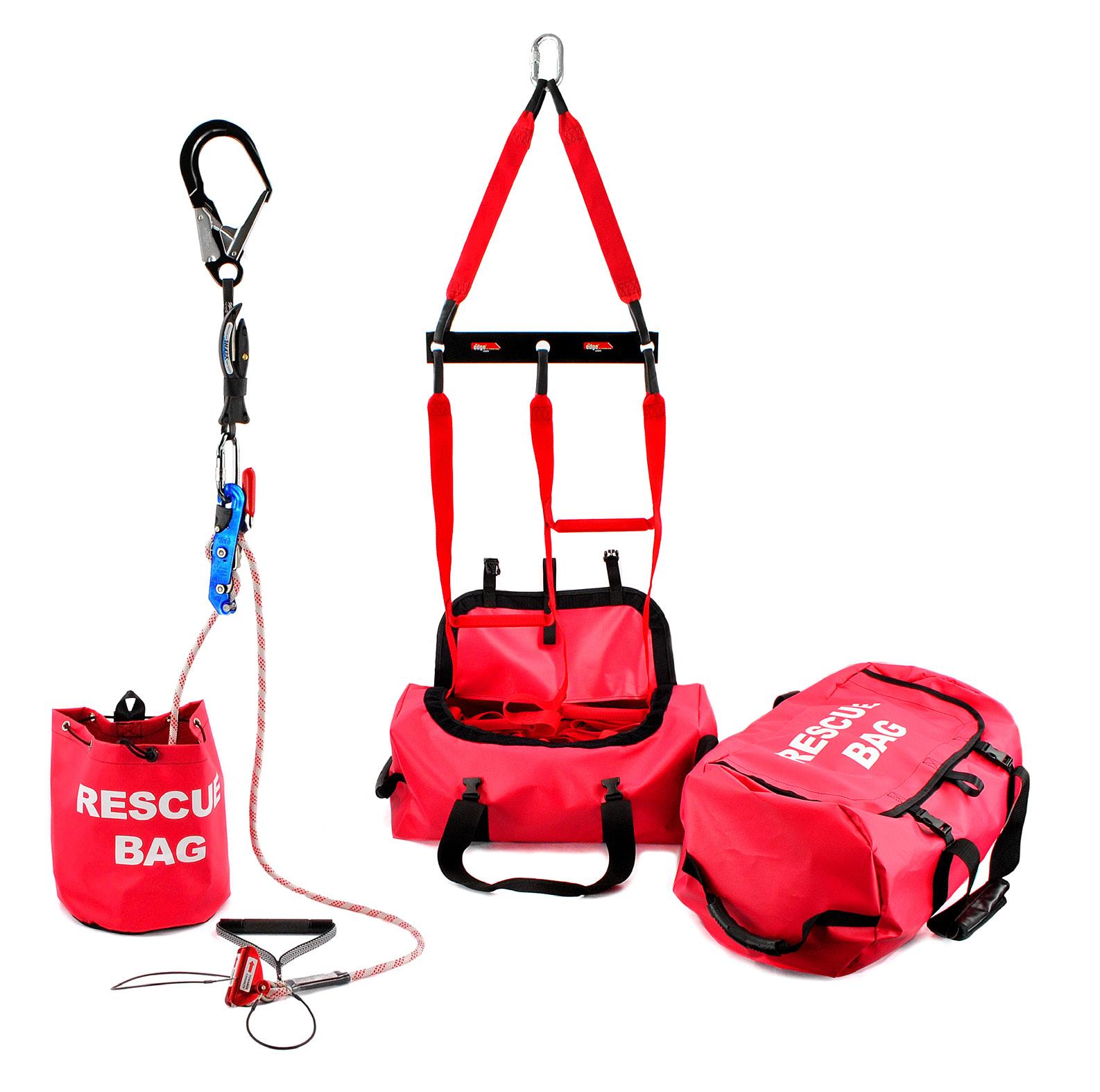
The winch rescue system is a combined man-riding (raising and lowering) device with a PED (Personal Evacuation Device) providing an automatic, controlled descent escape function. It only requires one person to operate and can be rigged horizontally or vertically, minimising edge exposure.
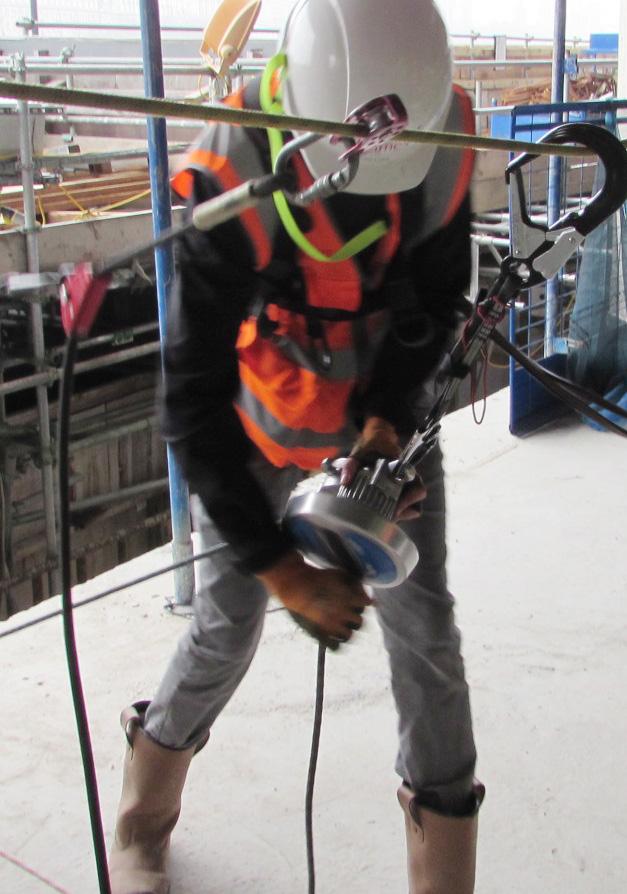
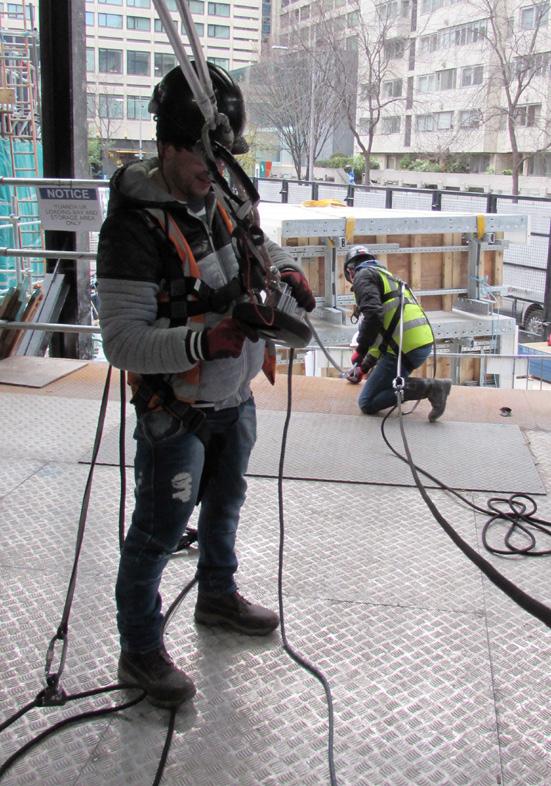
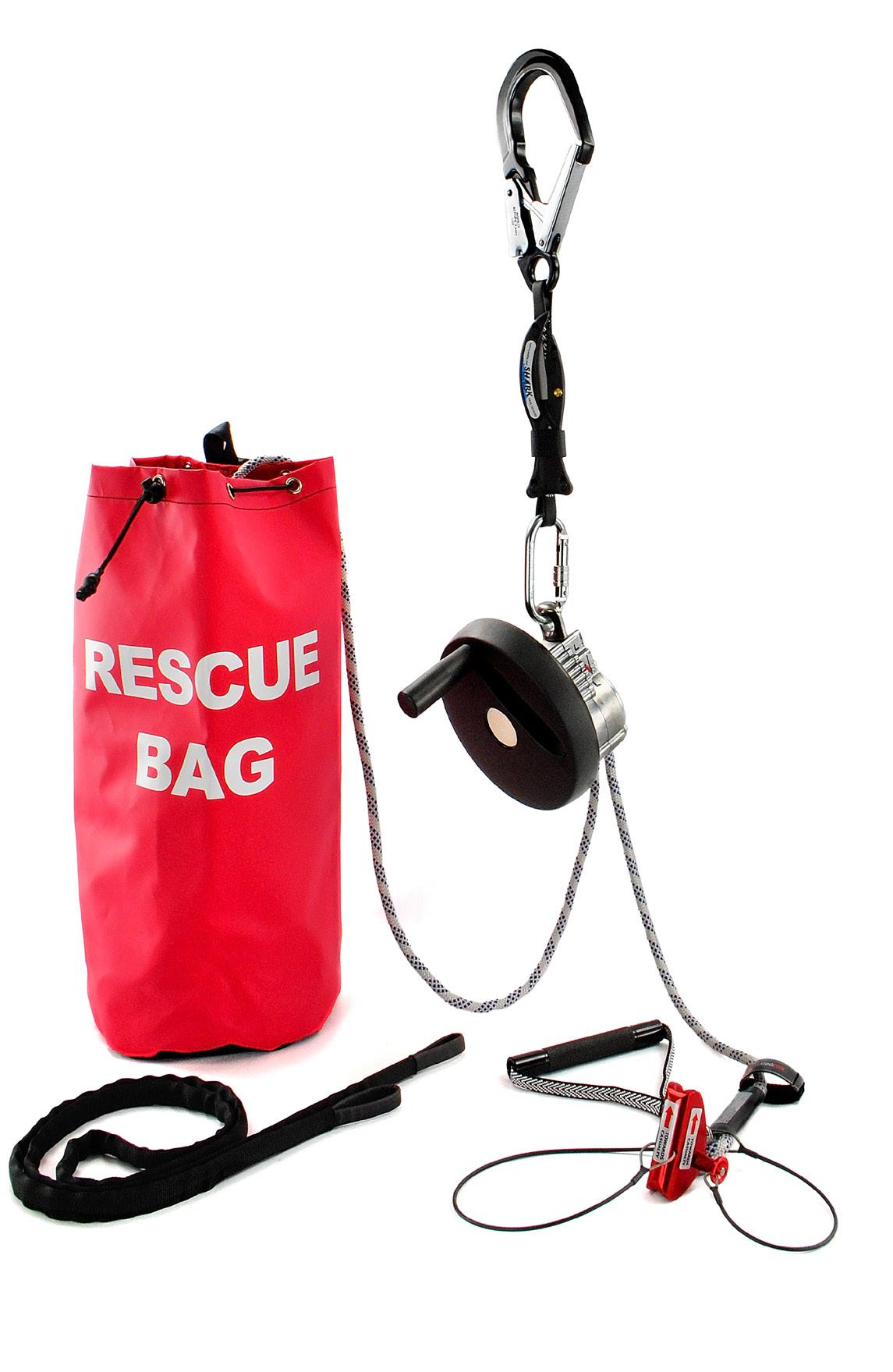
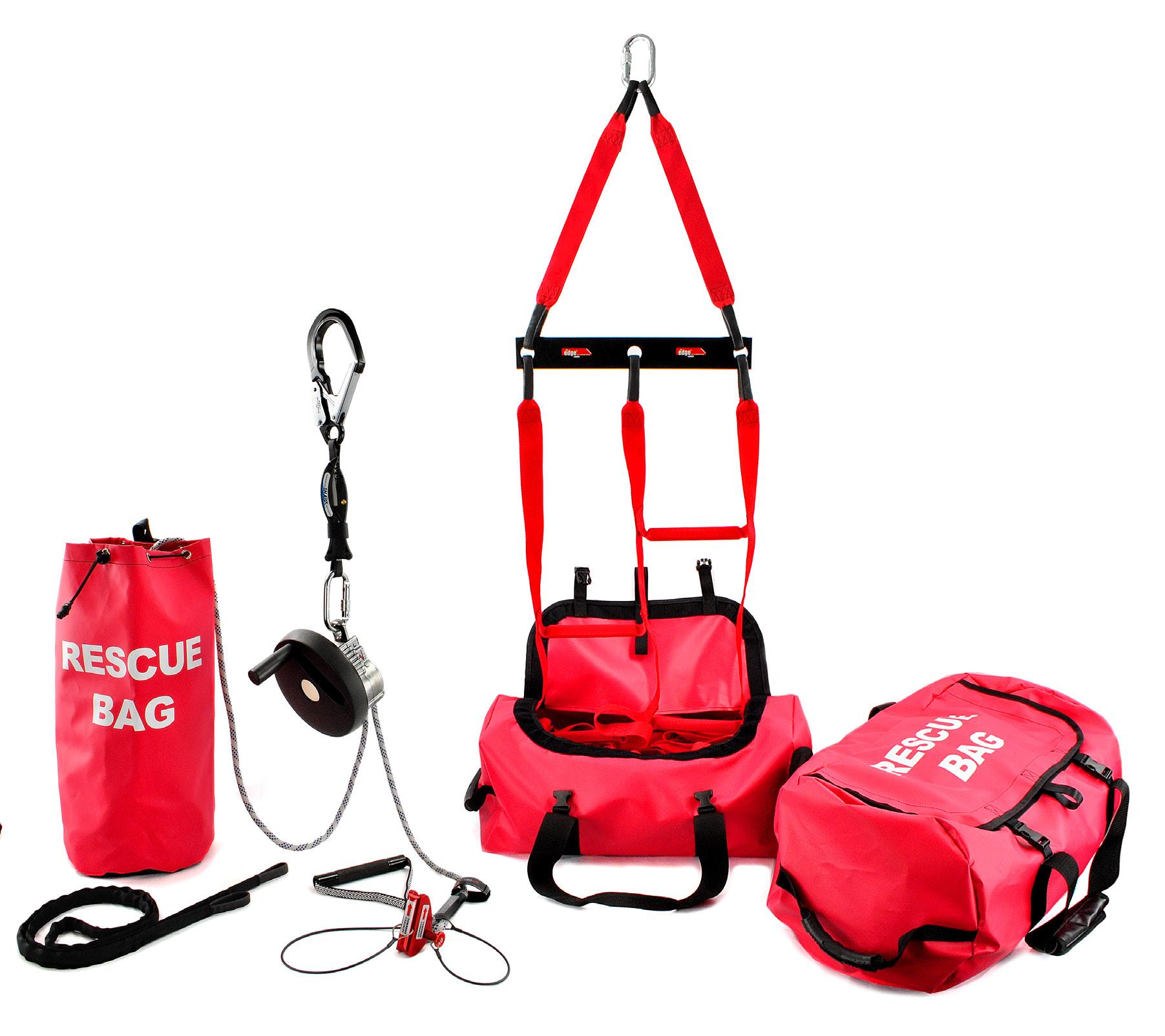

Rig and deploy the speed-optimised, stabilised rescue ladder in seconds. This self-contained system requires just one person to operate, can be rigged horizontally or vertically and features a reinforced double-width design with offset, solid rungs for quick and easy climbing.
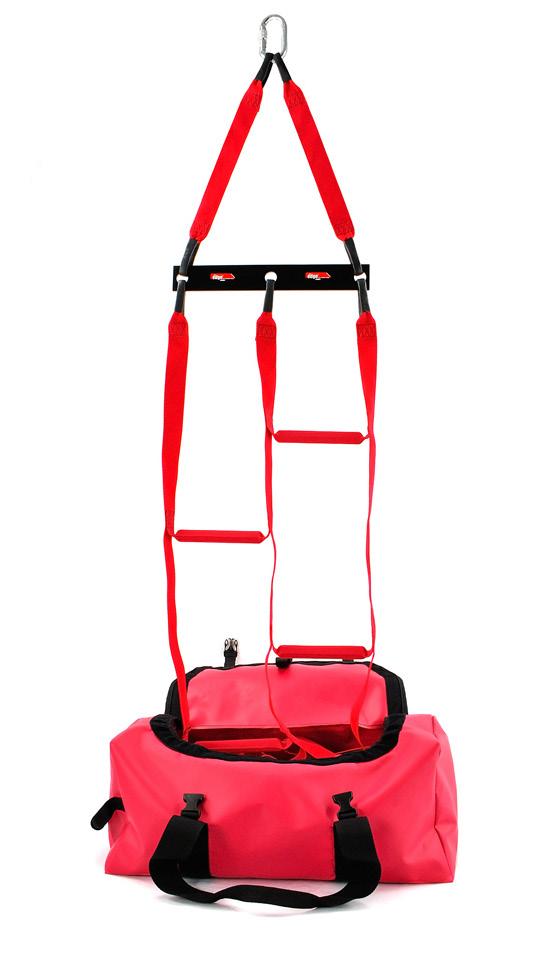
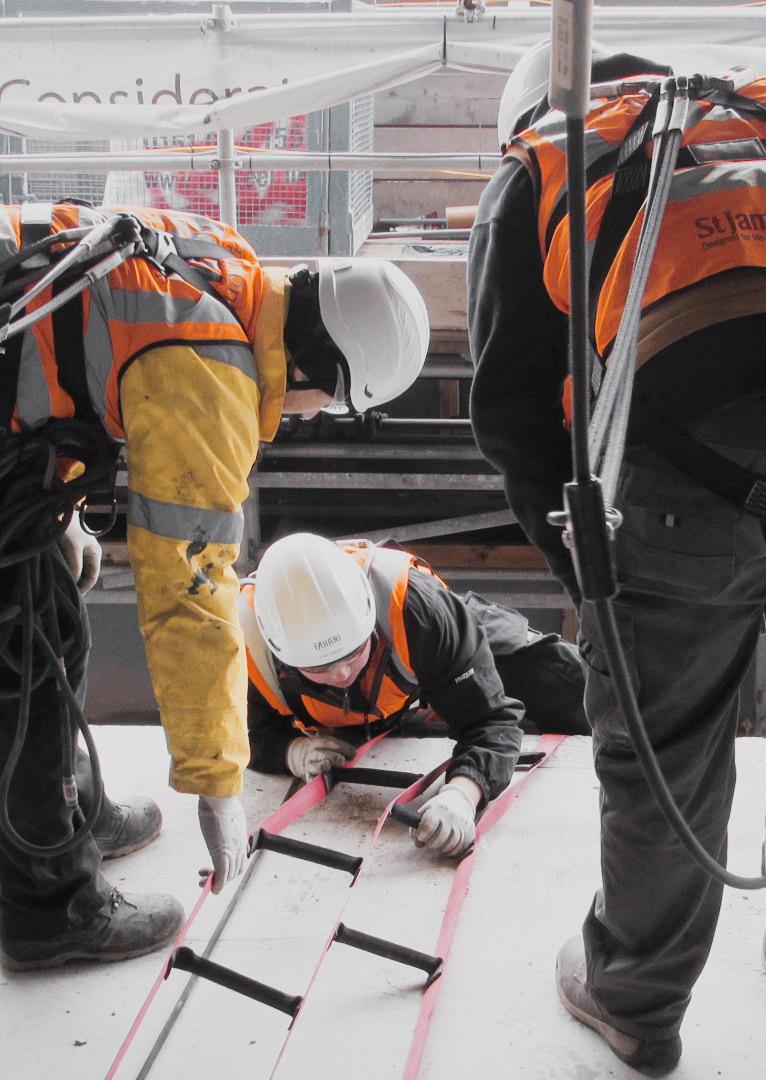
4m R-LADDER-4 12m R-LADDER-12 15m R-LADDER-15 20m R-LADDER-20
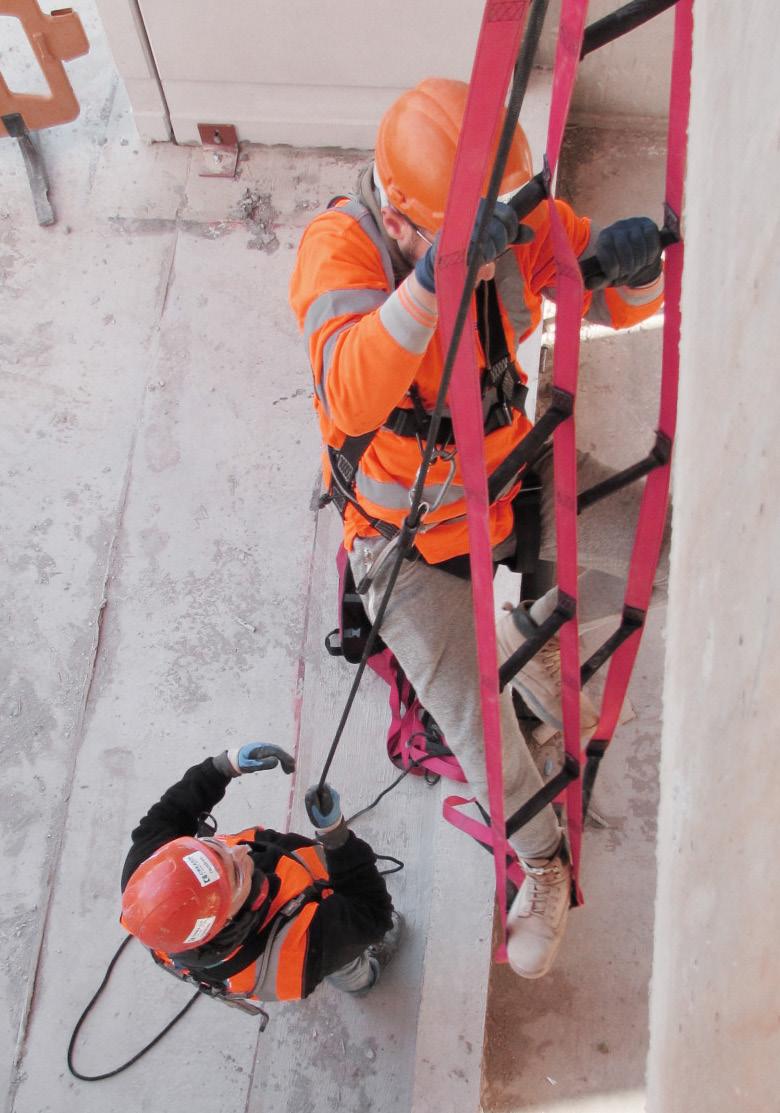
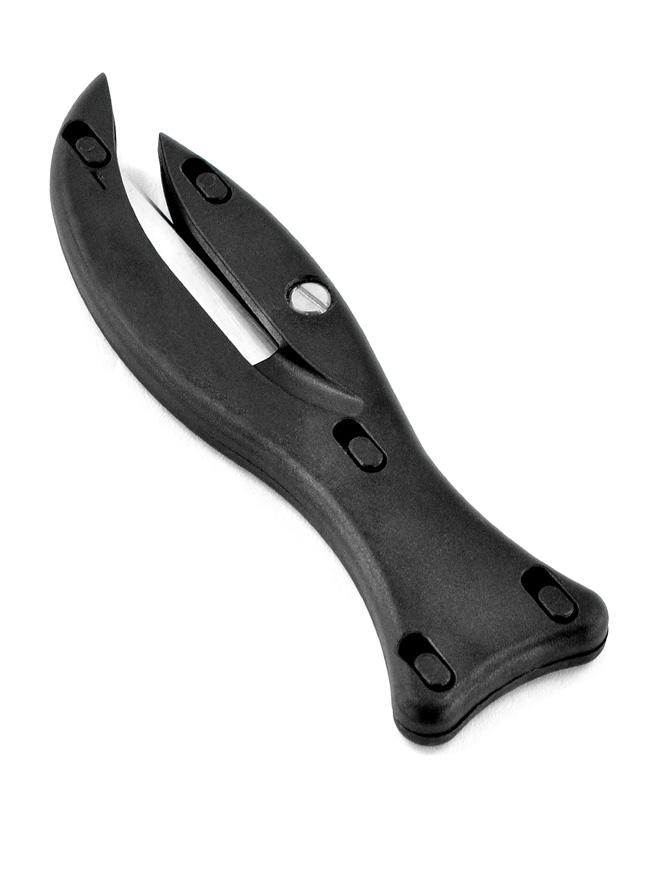

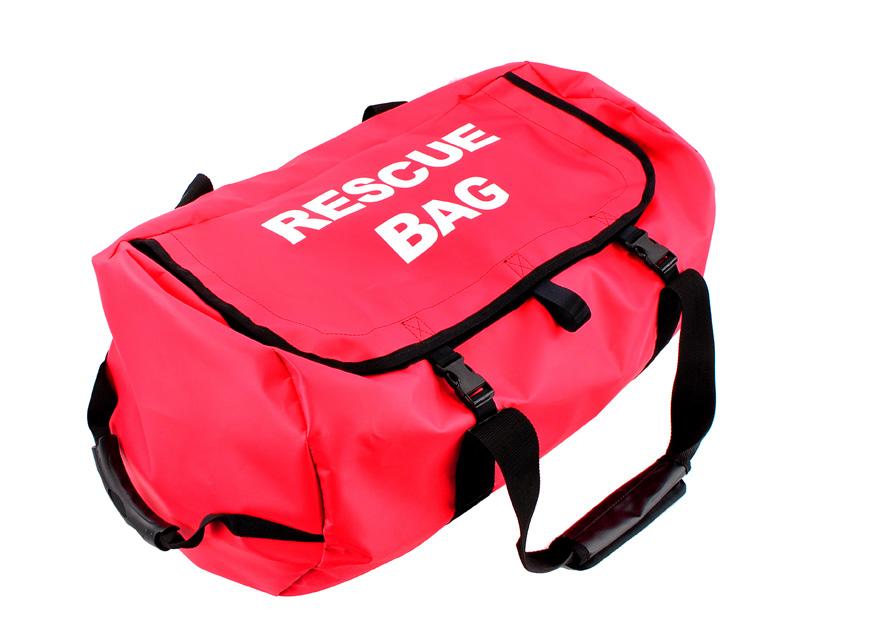
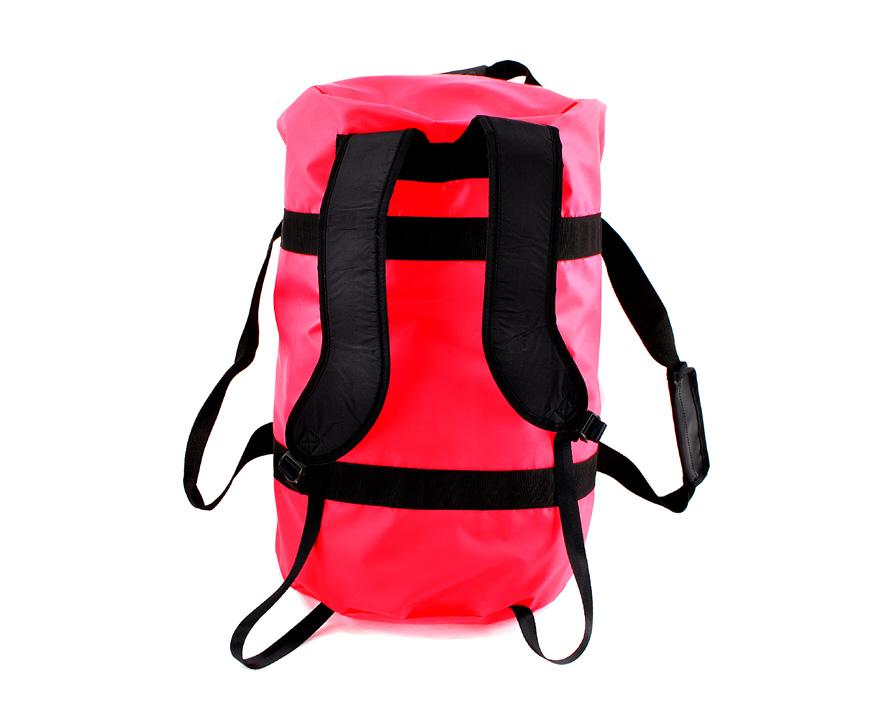


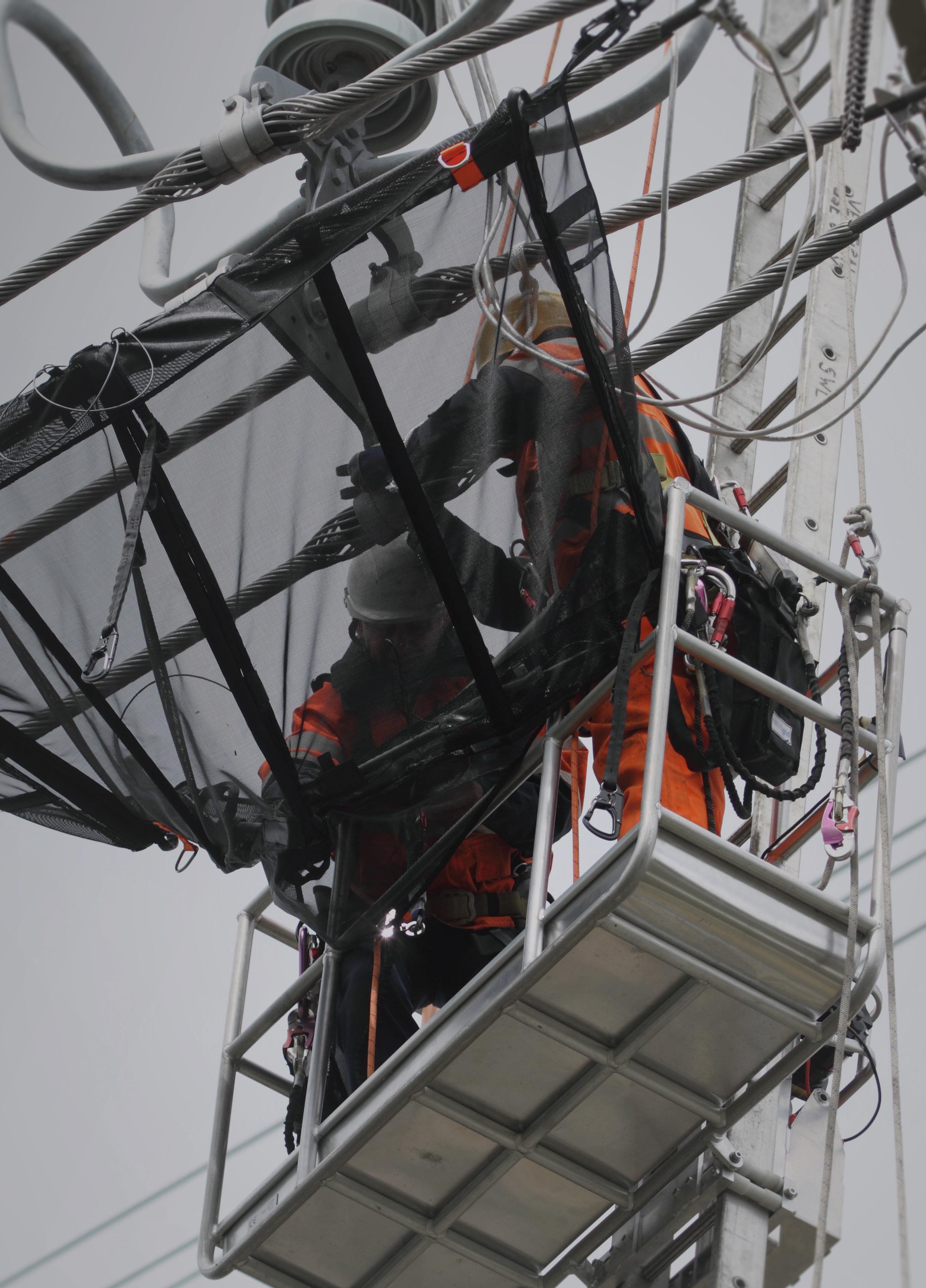
HSE’s Riddor report shows dropped
objects are one of the top three causes of fatalities in the UK workplace.
In Construction, around 500,000 workdays per year are lost due to injuries, costing the industry £659 million.
CAUSED BY FALLING OBJECTS IN UK WORKPLACES 2019-20
CAUSED BY FALLING OBJECTS IN UK WORKPLACES 2019-20
OF THOSE
WERE IN THE CONSTRUCTION INDUSTRY
Statistics show that around 30% of all dropped object incidents are related to design, technical or mechanical issues, but almost half can be attributed to human factors.
49kg of Impact Force when dropped from a height over 3 storeys (10m).


After covering statistics and legislation that help you understand why tethering is so important, you’ll not only discover what testing methods to look for when buying tethers, but learn how to safely transport and store your tethered tooling. You’ll also learn classifications of different tool types and the options available for tethering them, giving you the skills to select and apply the correct tethers to your own tools.
The real benefit of this course is getting to physically practice selecting and applying a wide range of tethers to different types of tooling. We’ll also show you how to use the Leading Edge tethering roadmap to help you find a complete tethering solution.


Correctly tethering a tool takes more than tying a piece of string around the handle. It’s about fully understanding the risks, configuration and selection, equipment mechanics, usage and best practices. This course gives you the knowledge, awareness and practical skills to create a safe environment for tools and materials at height.

We believe your employees tool drop prevention skills should be proven just like any other height safety course. That’s why every trainee must sit a multi-choice examination to demonstrate their competence to use tools safely at height.


We provide our own projector, screen, laptop, the latest tool safety products, and a bag full of tethering equipment and tools to deliver the practical and theory lessons. We just need somewhere to teach. So if you’re booking a course on your site, don’t forget to arrange a training room that can hold the appropriate number of people.


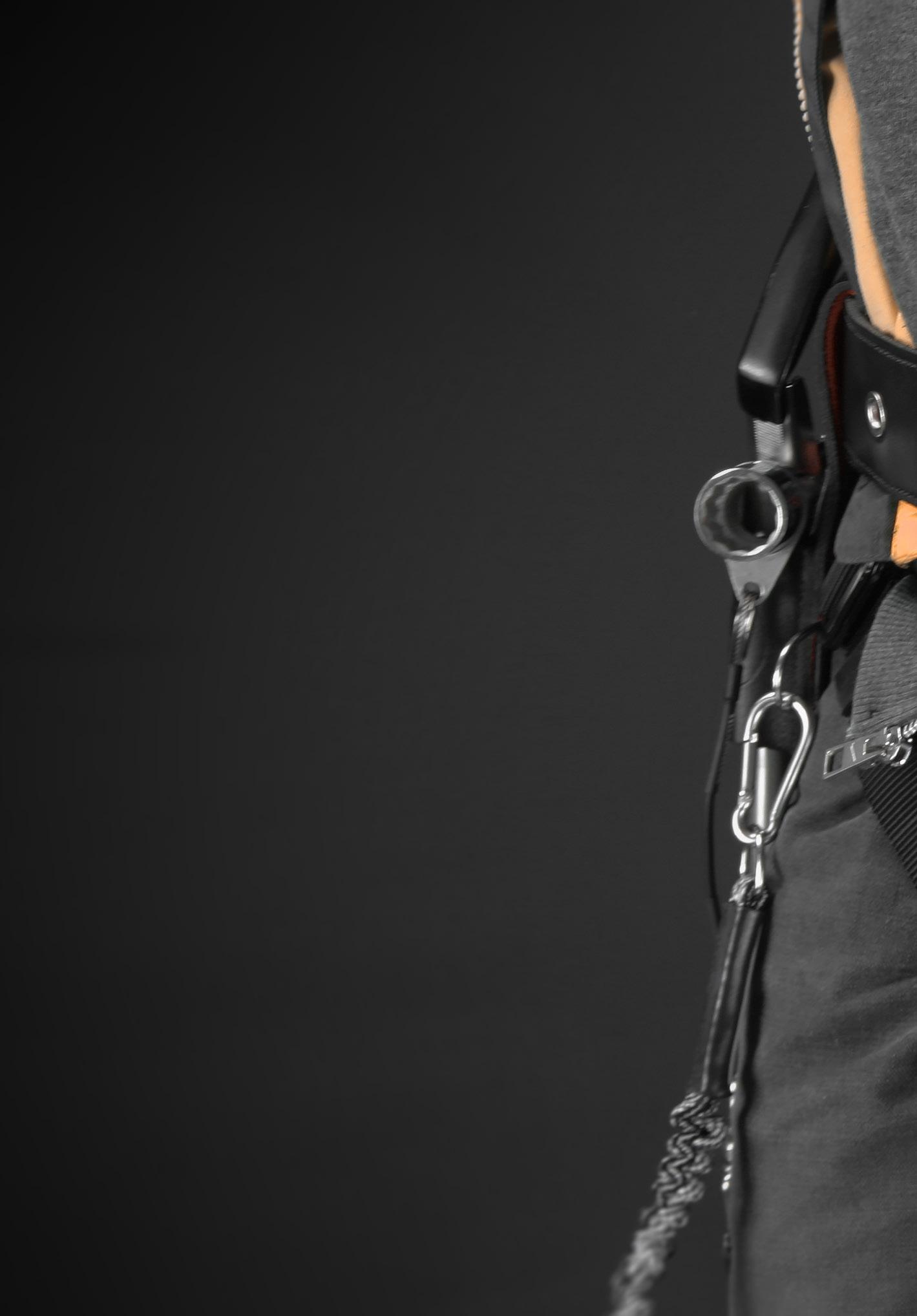




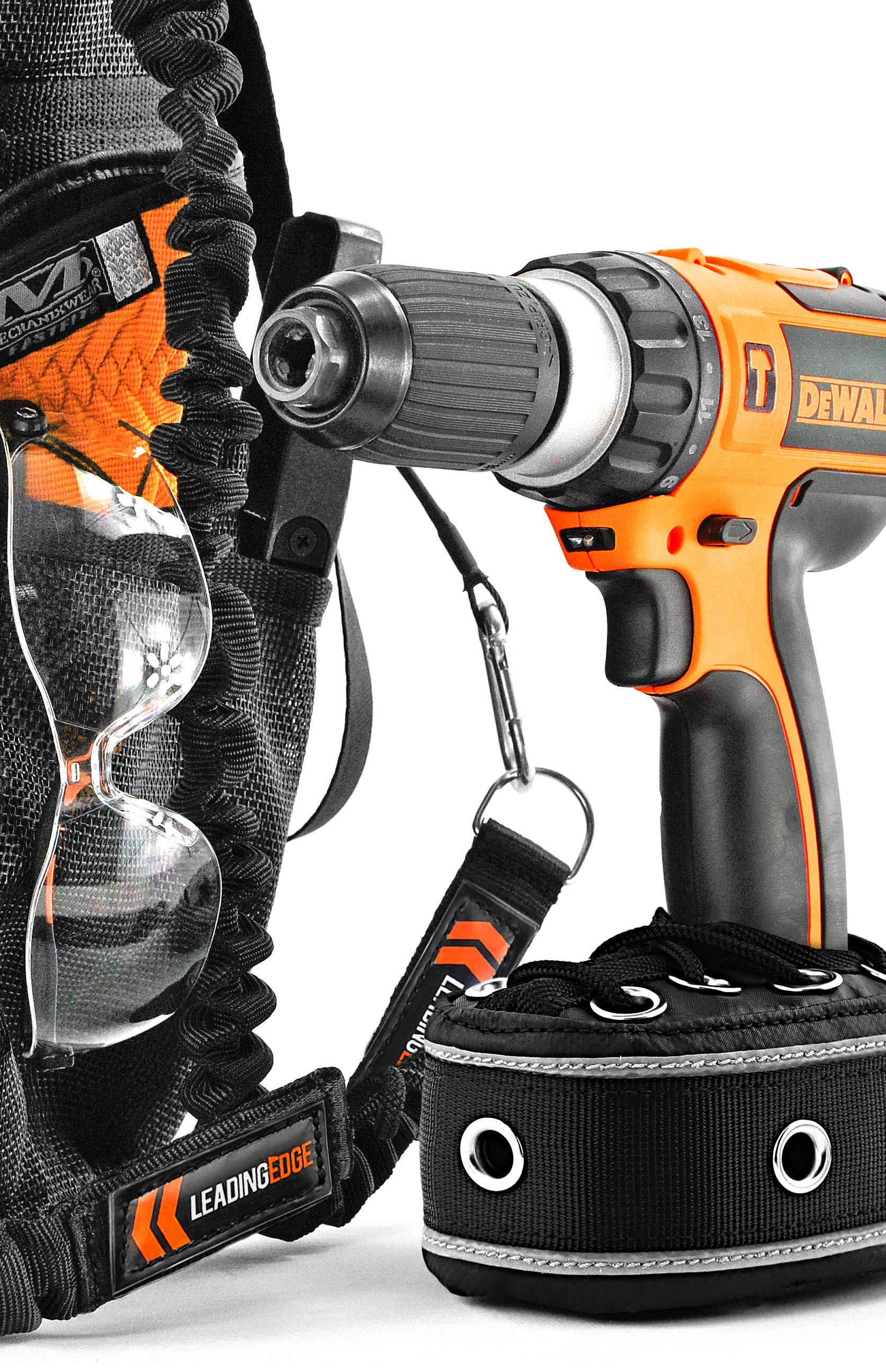
Quickly and easily convert your existing tooling for safe work at height activities.
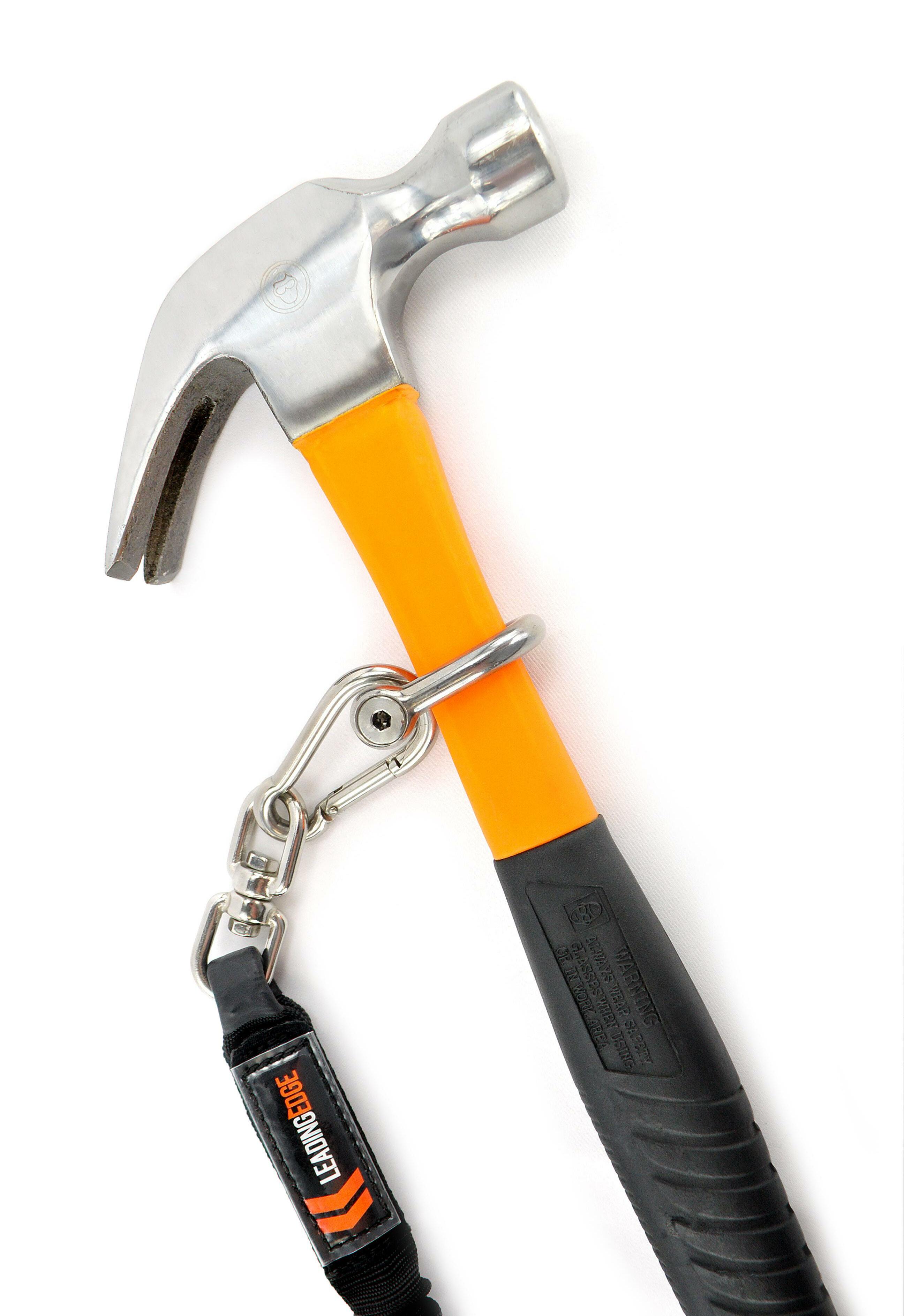


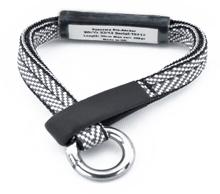


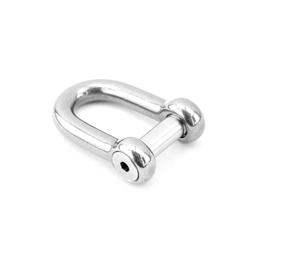






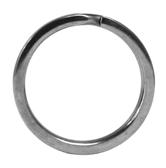





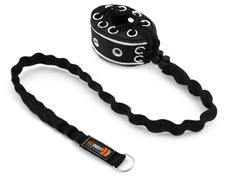


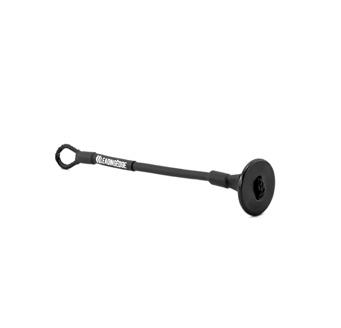
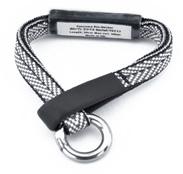
15-35mm Height Safety PRODUCTS KITS PRODUCTS


Quick and easy semi-permanent tethers. For your existing tools. Height Rescue Drop Prevention

kg PRODUCTS KITS
cm TRAINING TRAINING TRAINING PRODUCTS
1kg TRAINING 264
Shanks are the quickest and easiest way to tether your tools. They come pre-assembled with a clear adhesive heat-shrink sleeve and structural D-ring anchor point – no separate parts! That means all you have to do is slide it over a tool handle, shaft or grip, apply heat and you’re done.
25-55mm 7.5cm
1kg
» Ensure the correct size of a shank tool tether is chosen for your tool (see size guide) » Ensure your tool is clean and dry » Choose a suitable area on your tool » Position the tether onto this area » Heat the underside of the shank tether » Heat the top of the shank tether » Continue heating until clear adhesive is secreted from exposed edges at the end of the sleeve » Allow to cool and cure before use

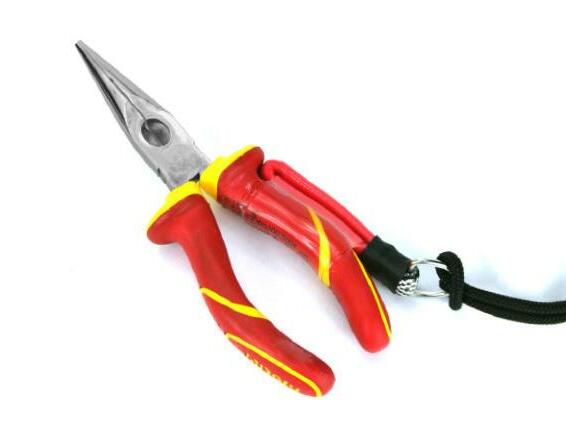
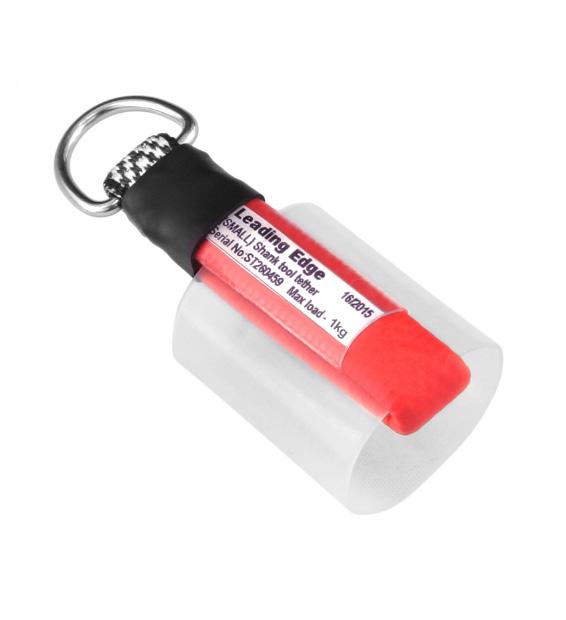
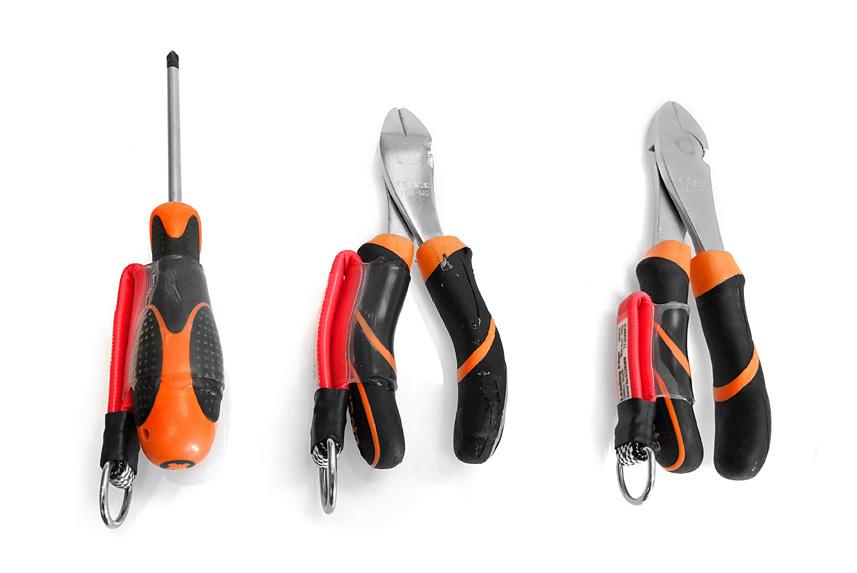

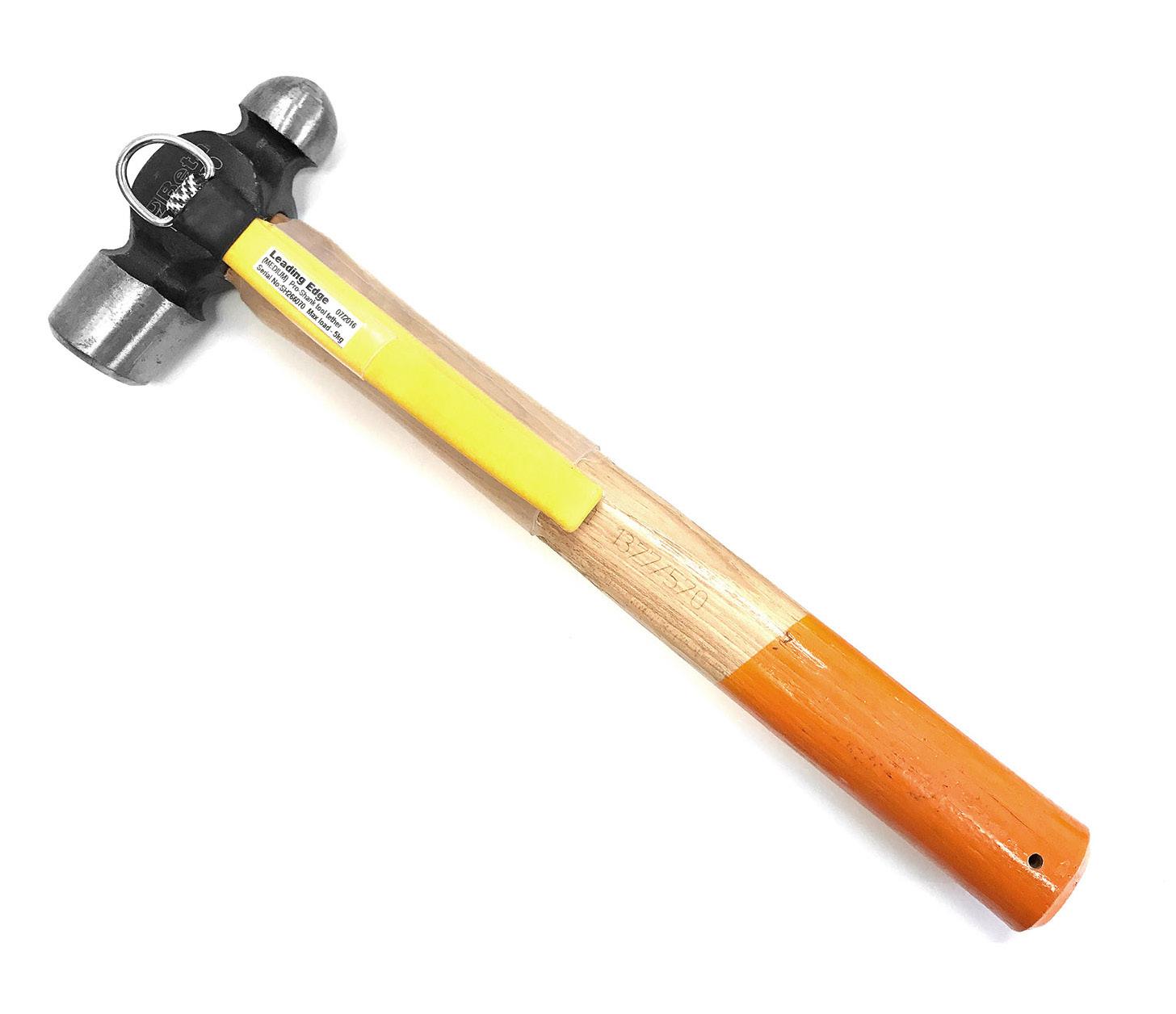
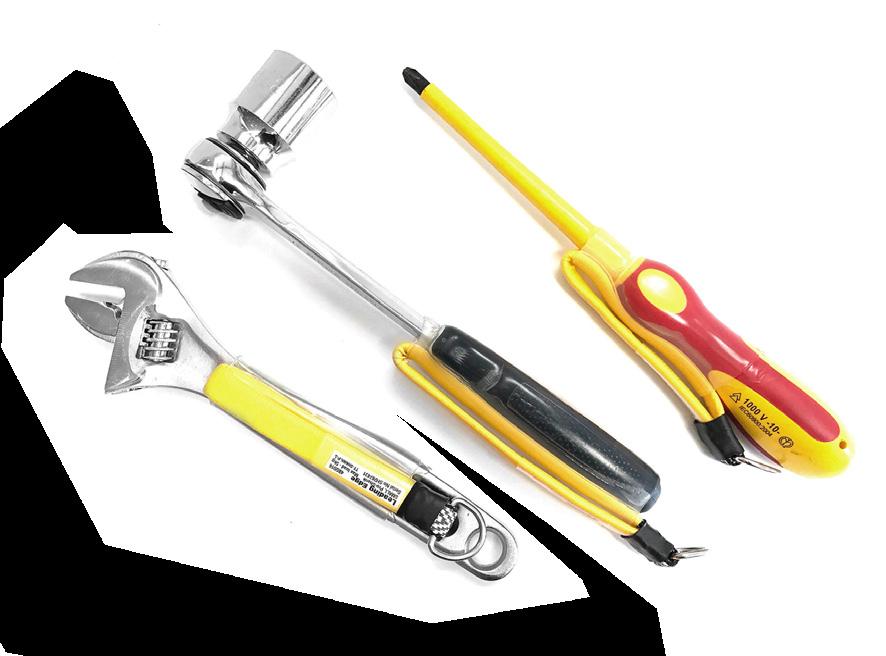
tether with self-bonding
around a dyneema tether to form a secure D-Ring anchor point. The dyneema tether itself is very narrow, meaning it can be used on smaller tool handles down to 14mm in diameter.


Tether length: 10 cm. Comes with 5m Tether Tape roll.

1. Extend the tape and separate textured lining
2. Hold tape firmly against the tool, stretch until width reduces by half and wrap two turns. DO NOT CUT THE TAPE!
3. Place the tether onto tool with the label facing up and anchor point facing away from the end you use
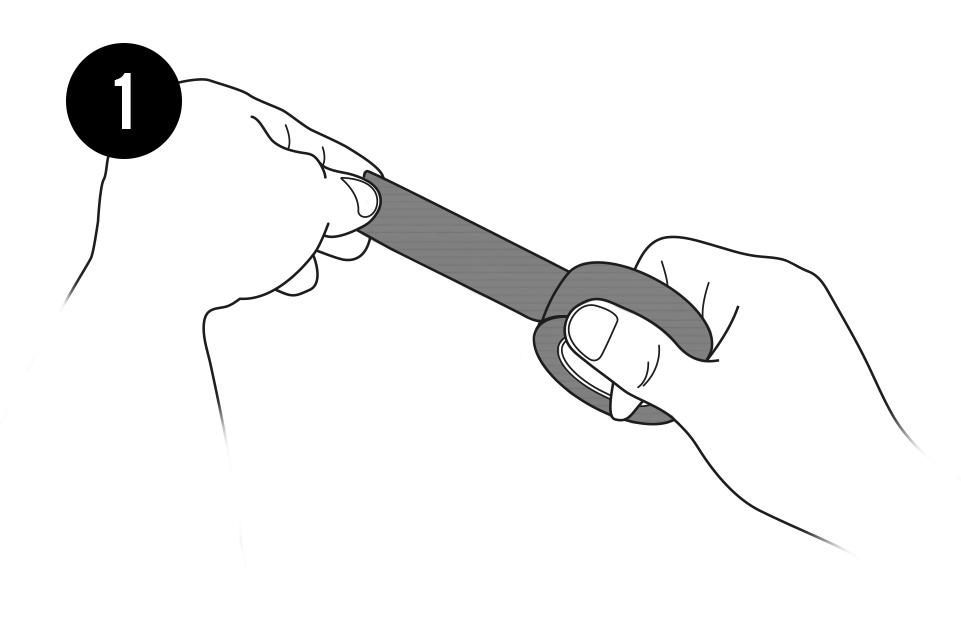

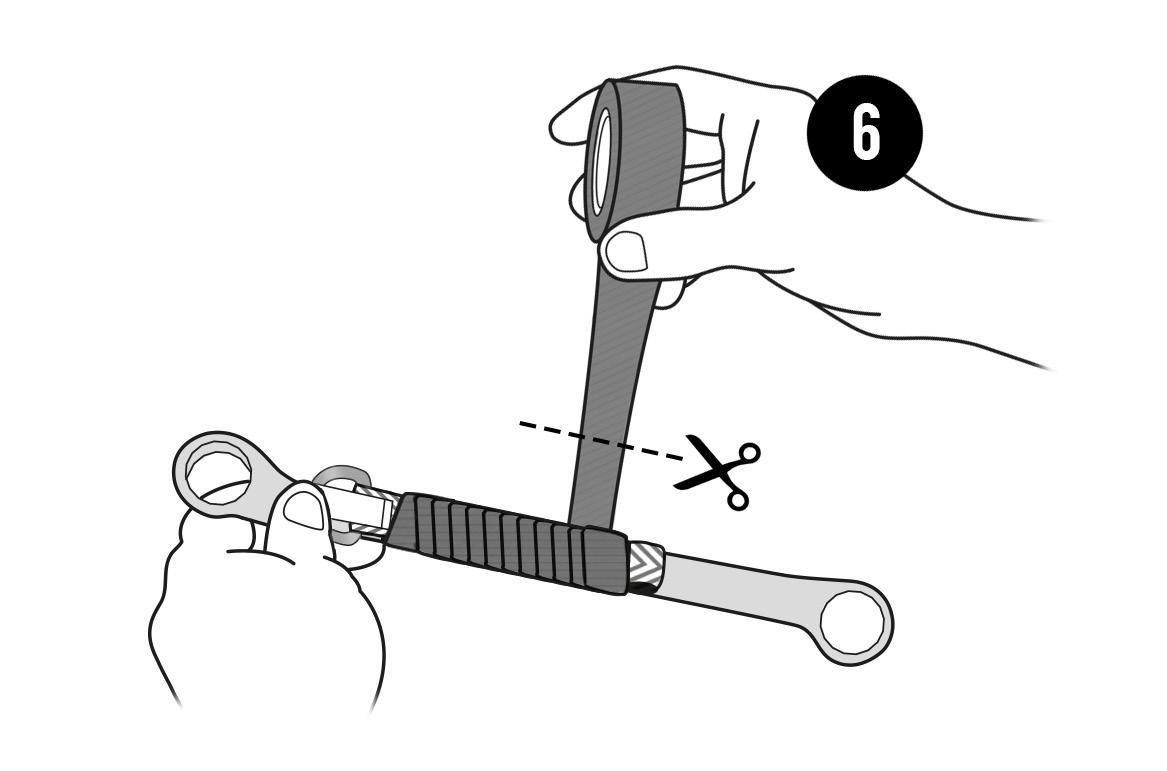
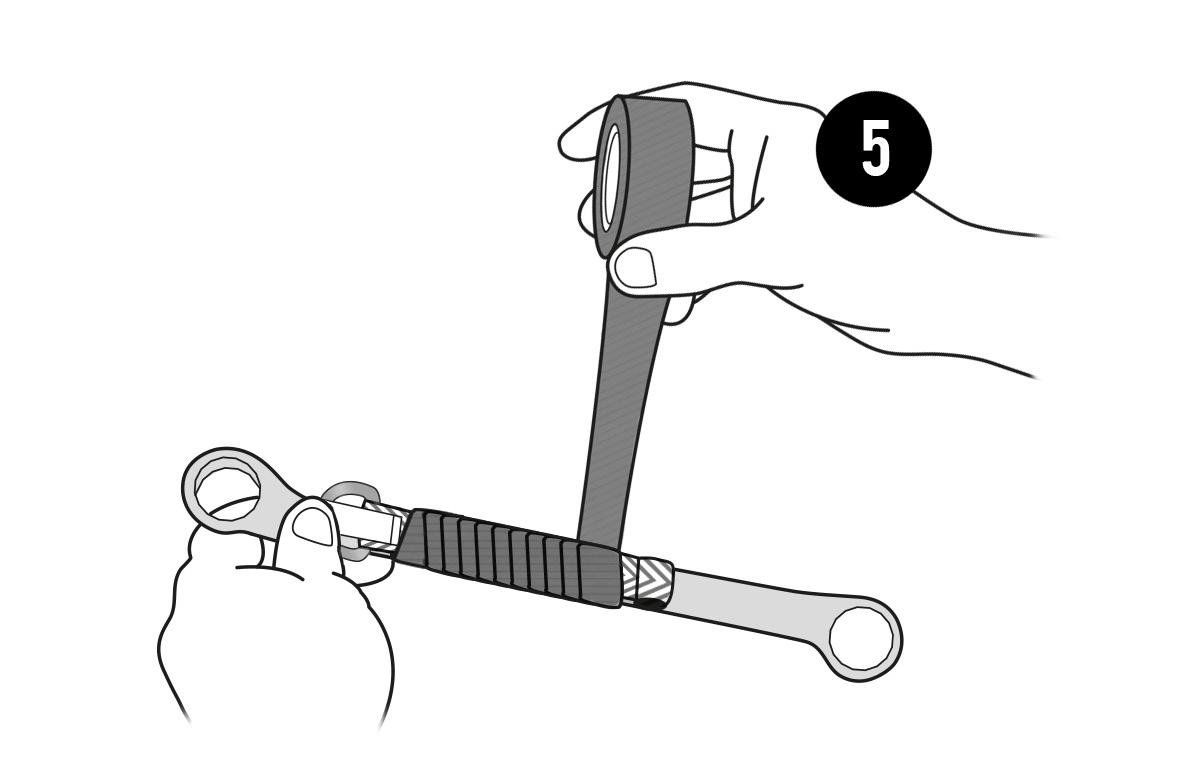

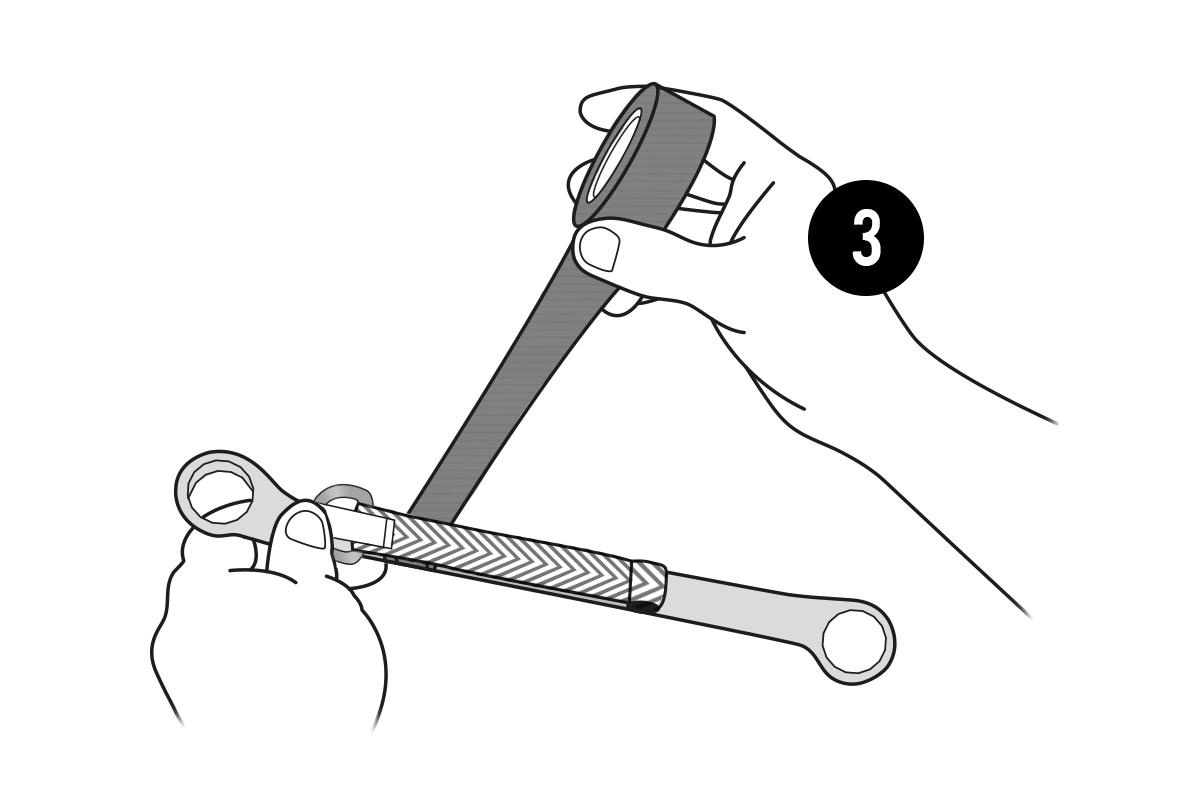
4. Wrap 5 turns around the red line whilst keeping the tape firmly stretched
5. Continue to wrap along the length of the tether to the second red line. Maintain a 50% overlap on each rotation
6. Finish with a further 5 turns, cut the tape and press firmly on the tether and wrap to ensure a tight fit.
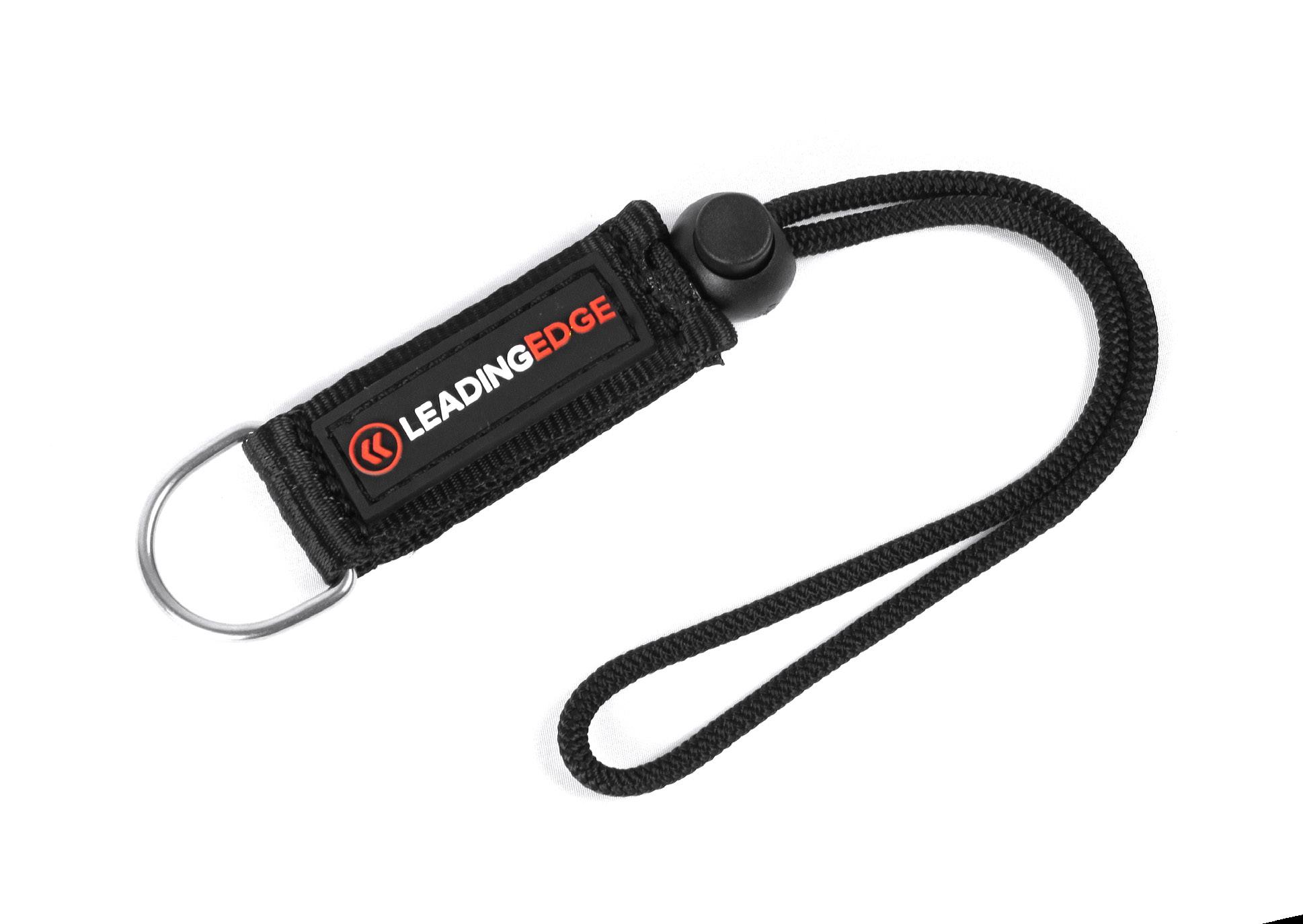

The mini omni anchor creates a rated anchorage point by passing the tether through a captive hole within a tool handle. If suitable, a captive hole may be drilled to accommodate the omni when no hole exists. This makes the omni one of the easiest ways to tether your existing tooling. The omni is also suitable in harsh environments where exposure to heat, sharp edges or chemical contaminates exists.
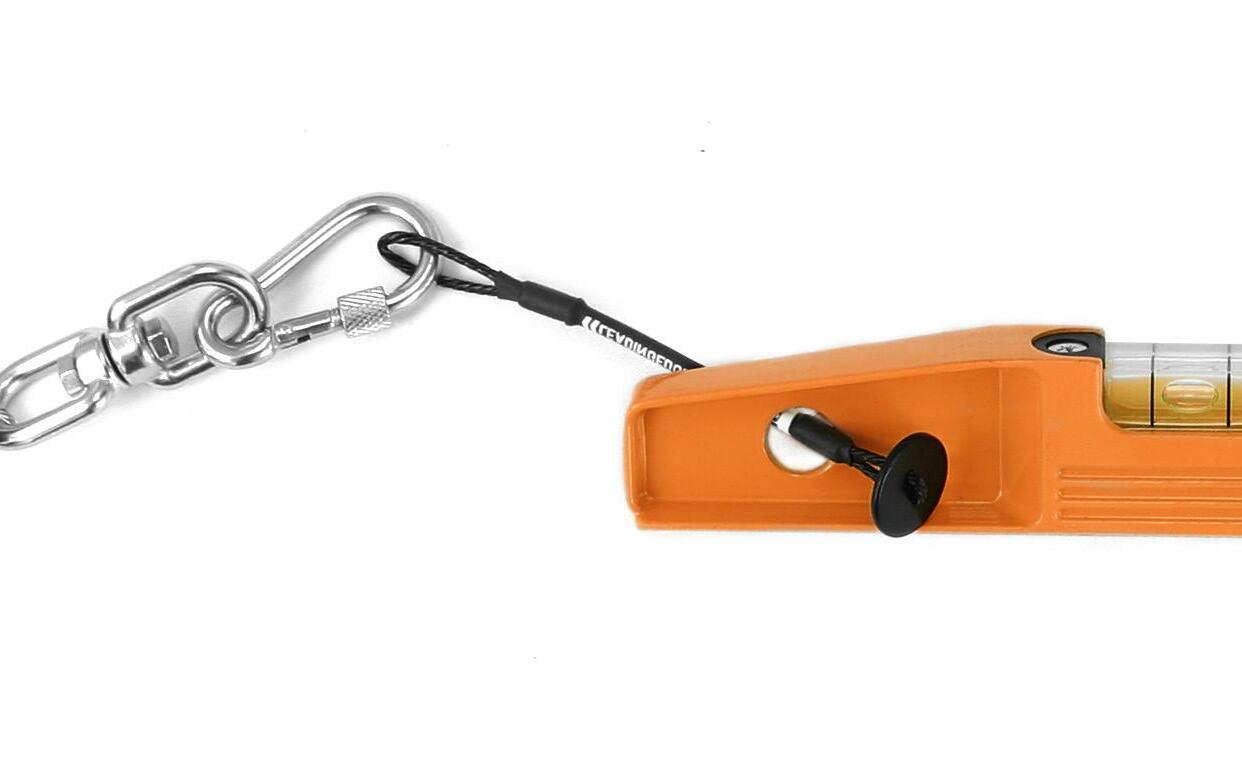


» Provides omni-directional anchorage
» Passes through captive holes sized Ø 7-16mm
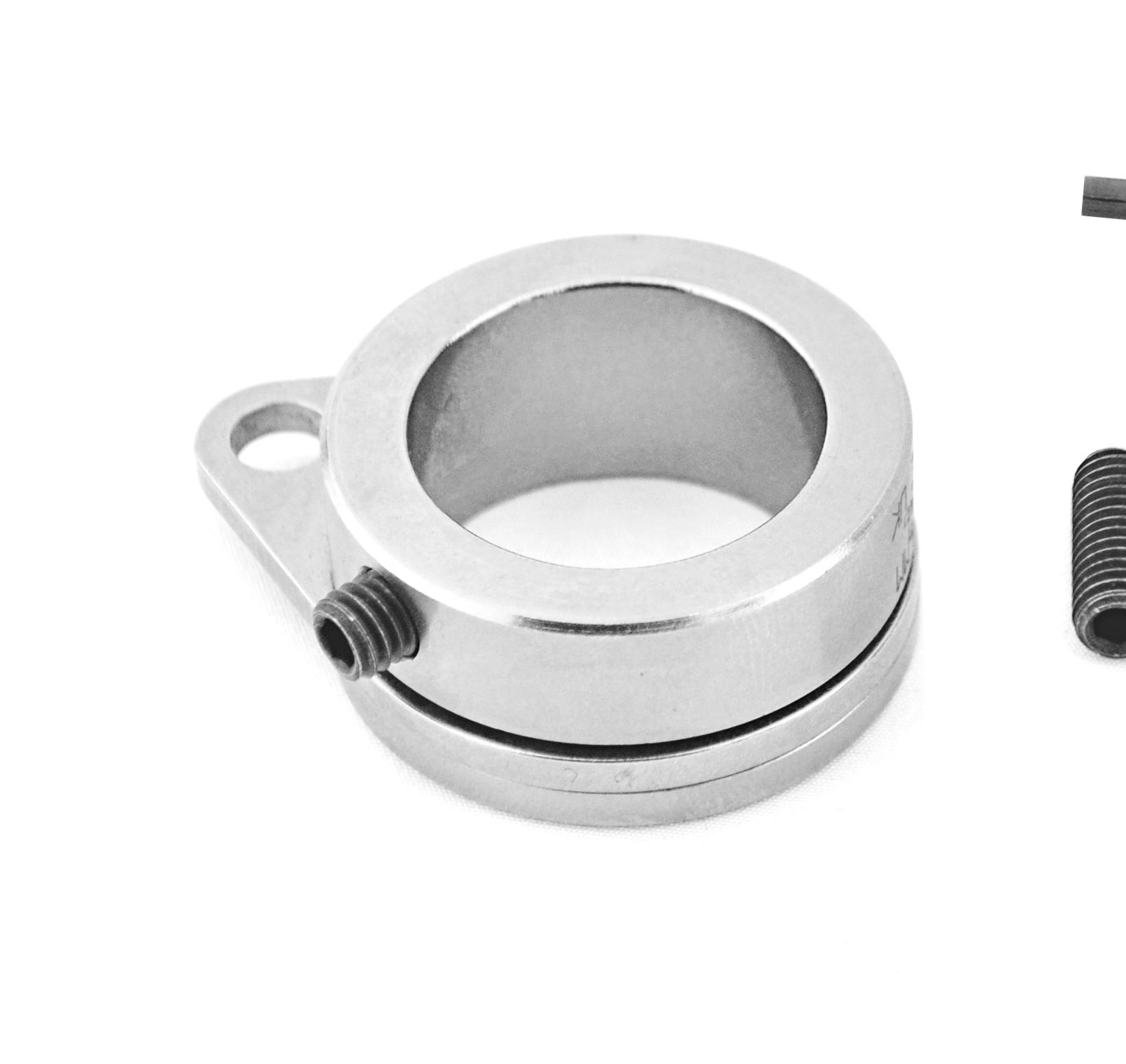
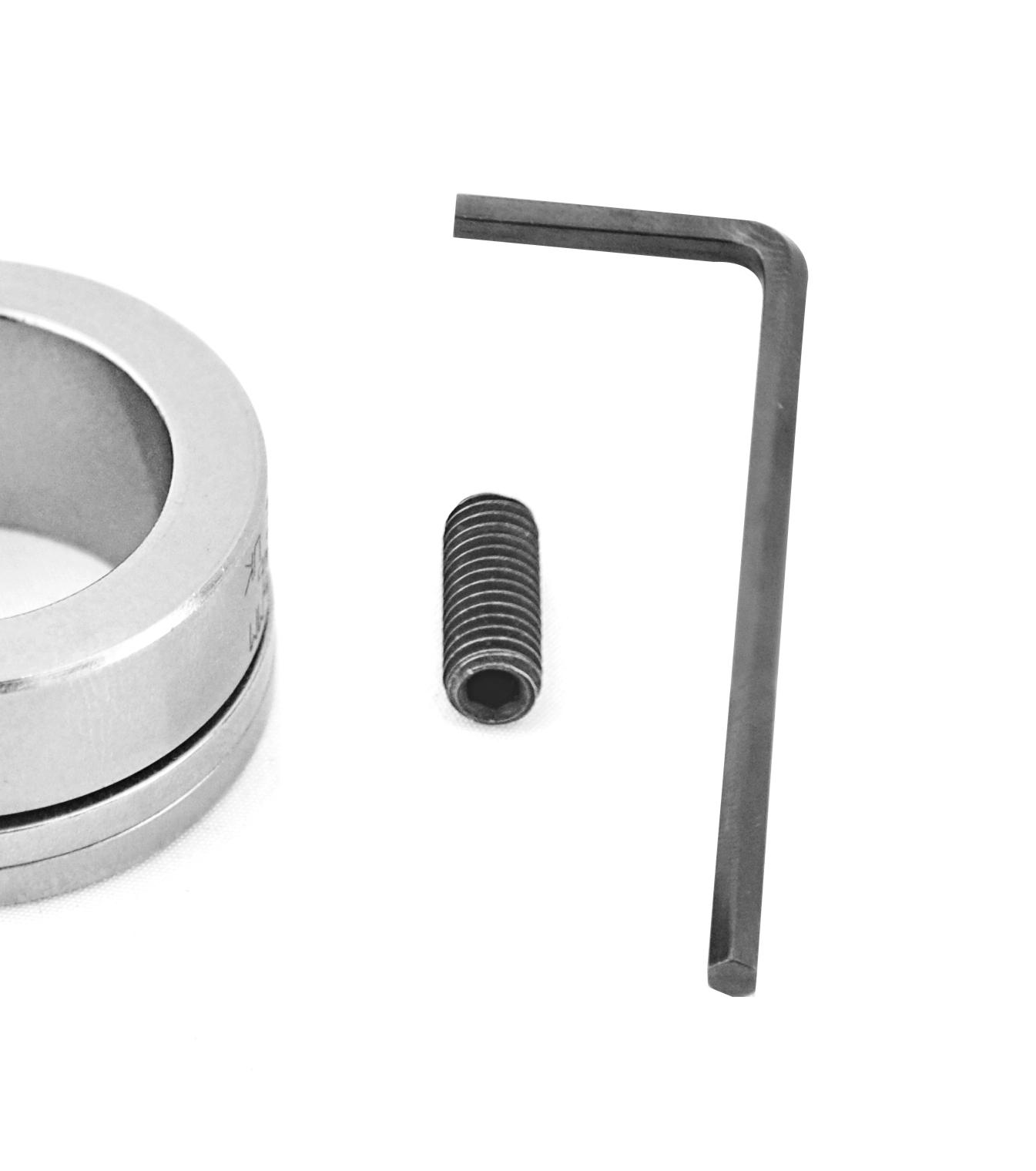
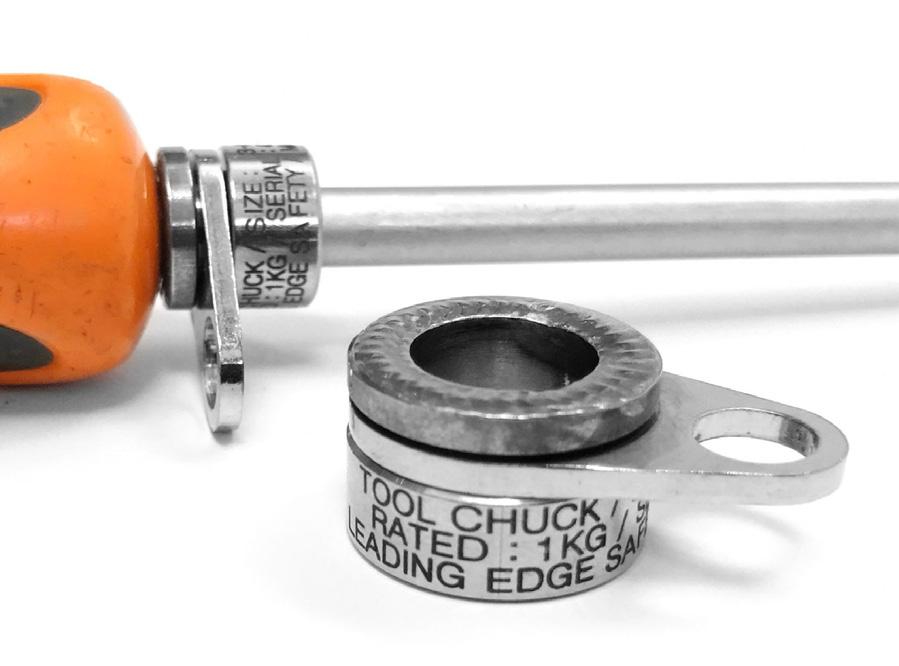

Tether designed for shaped tools (spanners, podgers etc.), flush bolt design prevents snagging and provides extra security, moves freely up and down the tool shaft to facilitate holstering and prevent obstruction during operation, can be made permanent using Loctite.

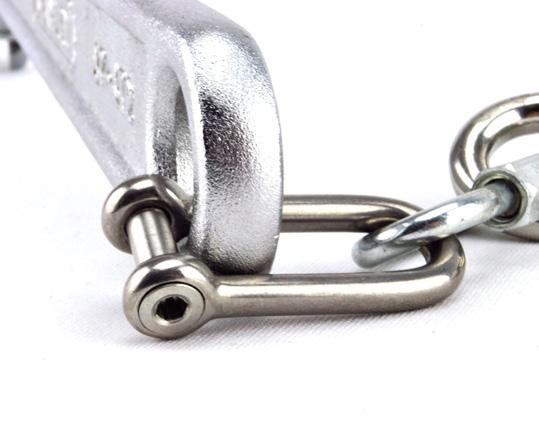

The Dyneema Triple-Lock anchor is a versatile tethering device for waisted and captive tool handles. Its unique Velcro fastening system features 3 straps that overlap in opposing directions to massively increase their tensile strength. This means it is not only incredibly secure but also easy to attach, reposition and remove. At only 14mm in height, the anchor occupies minimal space—especially important when your tool handle has limited surface area. It may also be used as anchorage for scaffolding and handrails etc.
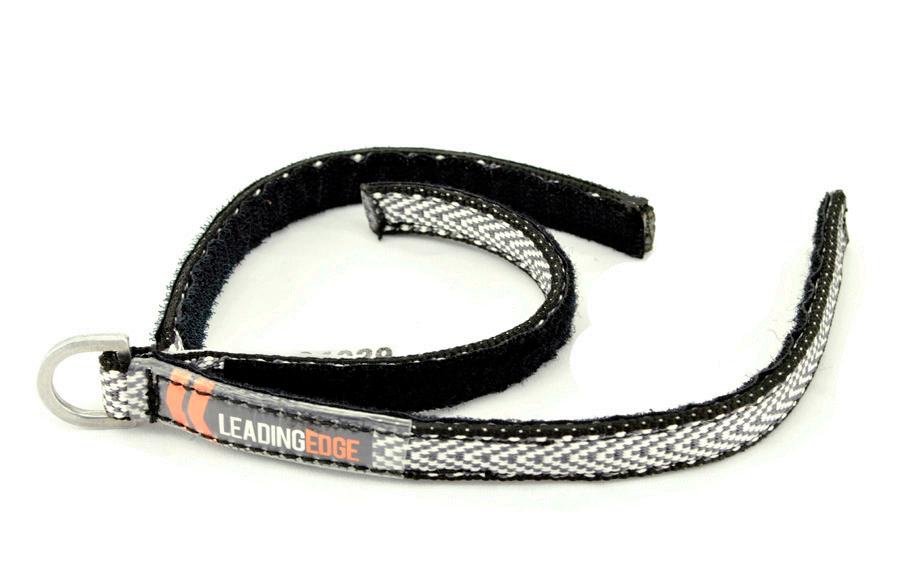

» Triple-Lock for extra safety
» Easily positioning
» Use as both a tether and an anchor point
Small Max Ø 50mm TT-TL-0.05
Large Max Ø 80mm TT-TL-0.08
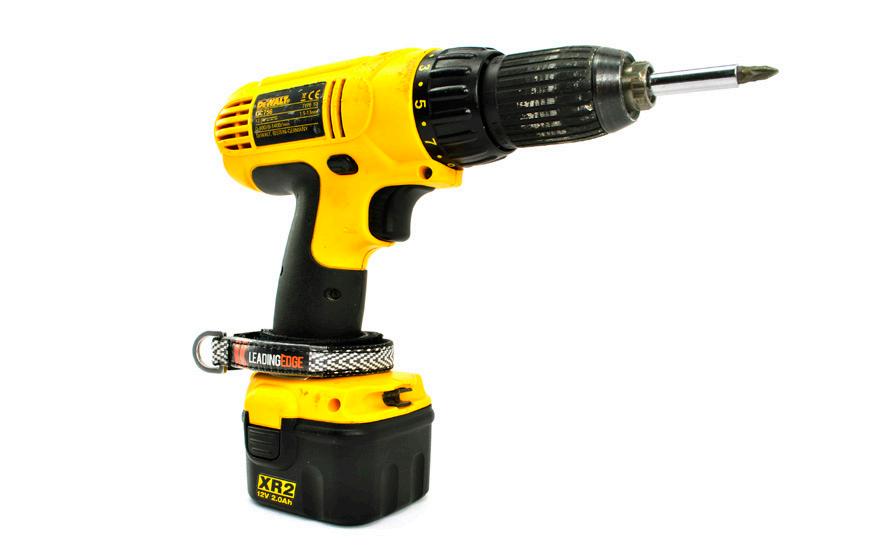
The pro Velcro anchor is a versatile tethering device which can be used as a tool anchor or tether. Its unique Velcro fastening system features 3 straps that overlap in opposing directions to massively increase their tensile strength. This means it is not only incredibly secure but also easy to attach, reposition and remove. Can be used as a tool anchor or tether.

Ø 80mm TT-PVA-0.08 7.5kg
Ø 120mm TT-PVA-0.12 7.5kg
Ø 160mm TT-PVA-0.16 7.5kg
Designed to provide a secure anchorage point by wrapping or choking. One end has a reinforced soft loop. The other end has a strong stainless steel ring which can accommodate a tool safety or height safety karabiner. Can be used as a tool anchor or tether.
300mm TT-PDA-0.3 30kg
600mm TT-PDA-0.6 30kg
900mm TT-PDA-0.9 30kg
Extremely rugged 3mm stainless steel wire lanyard in a structurally reinforced PU sleeve. Ideal for construction environments. Can be used as a tool anchor or tether.


500mm
TT-PWA-0.5 30kg
750mm TT-PWA-0.75 30kg
1000mm TT-PWA-1 30kg
7.5-30kg
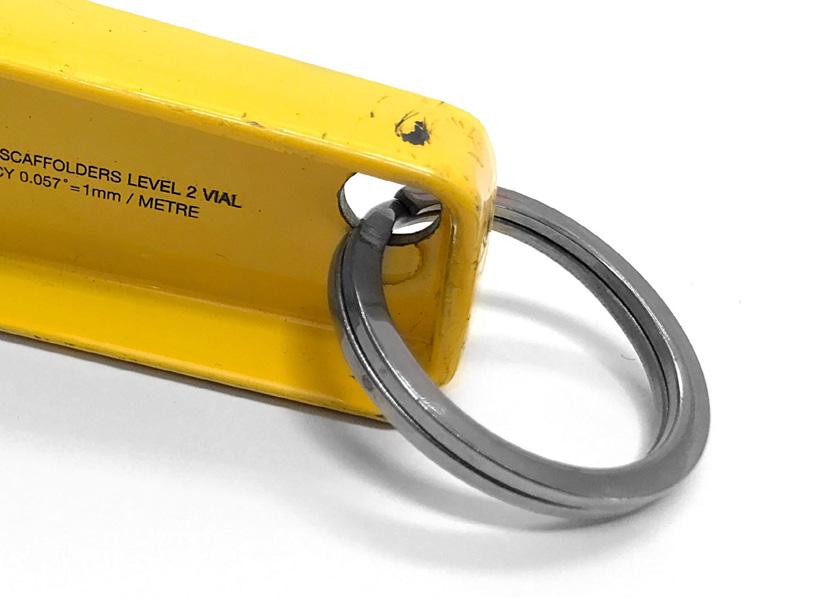



Bar: Ø 4mm / Opening: 6.5mm / Length: 4.2cm
TT-MAI-Z Zinc Plated 5kg
TT-MAI-SS Stainless Steel 5kg
Bar: Ø 5mm / Opening: 7mm / Length: 5cm
TT-KAR-SG-SS Stainless Steel 5kg



Bar: Ø 6mm / Opening: 8mm / Length: 6cm
TT-KAR-SG-PRO Stainless Steel 30kg


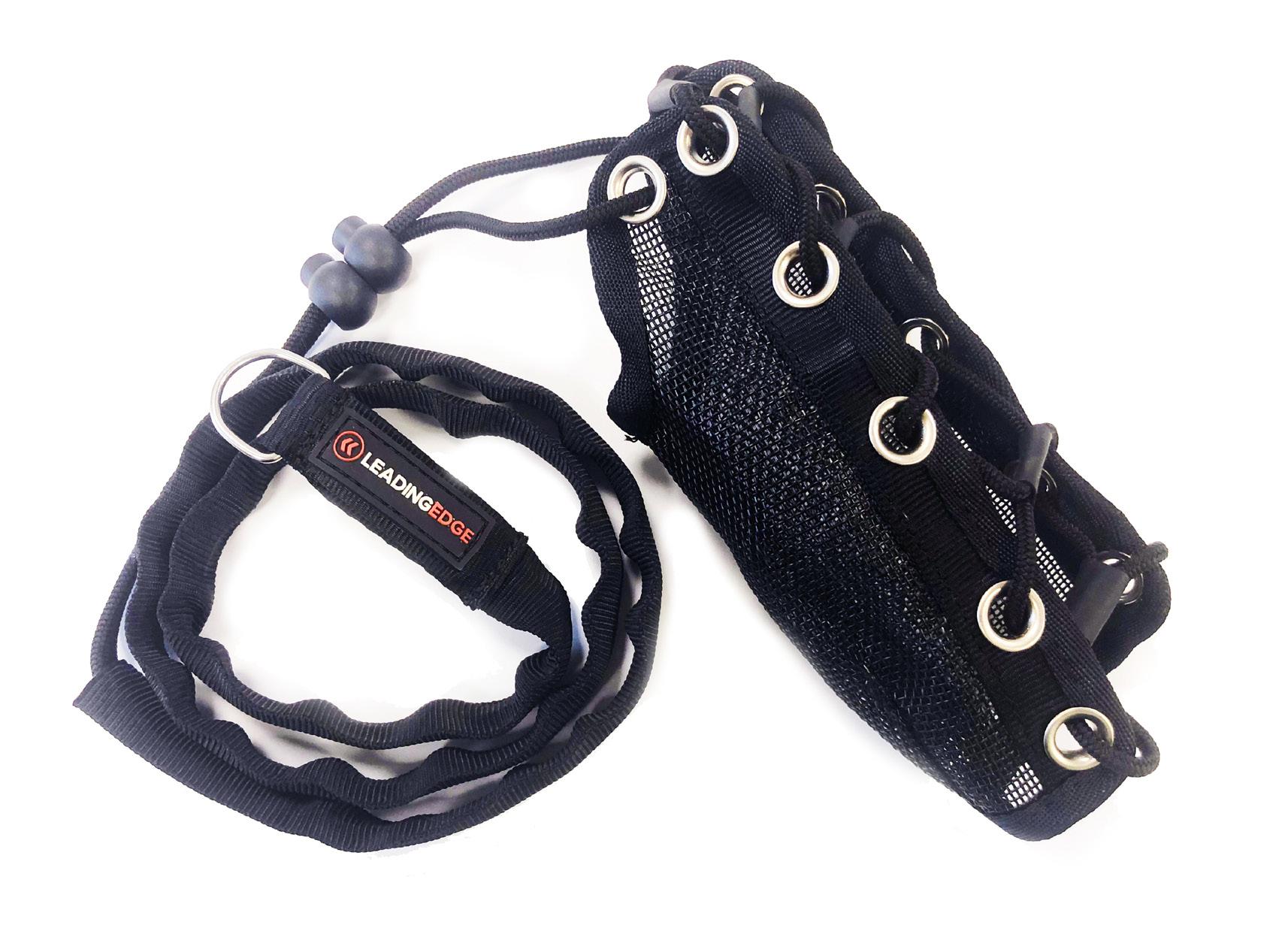


The Grinder Tether screws into your grinder head and loops over the handle to create a secure obstruction-free tethering point. The tether is encapsulated in a heatproof covering, ensuring it cannot be damaged by sparks and hot works during operation. The universal design fits all makes of grinders for right or left handed use.
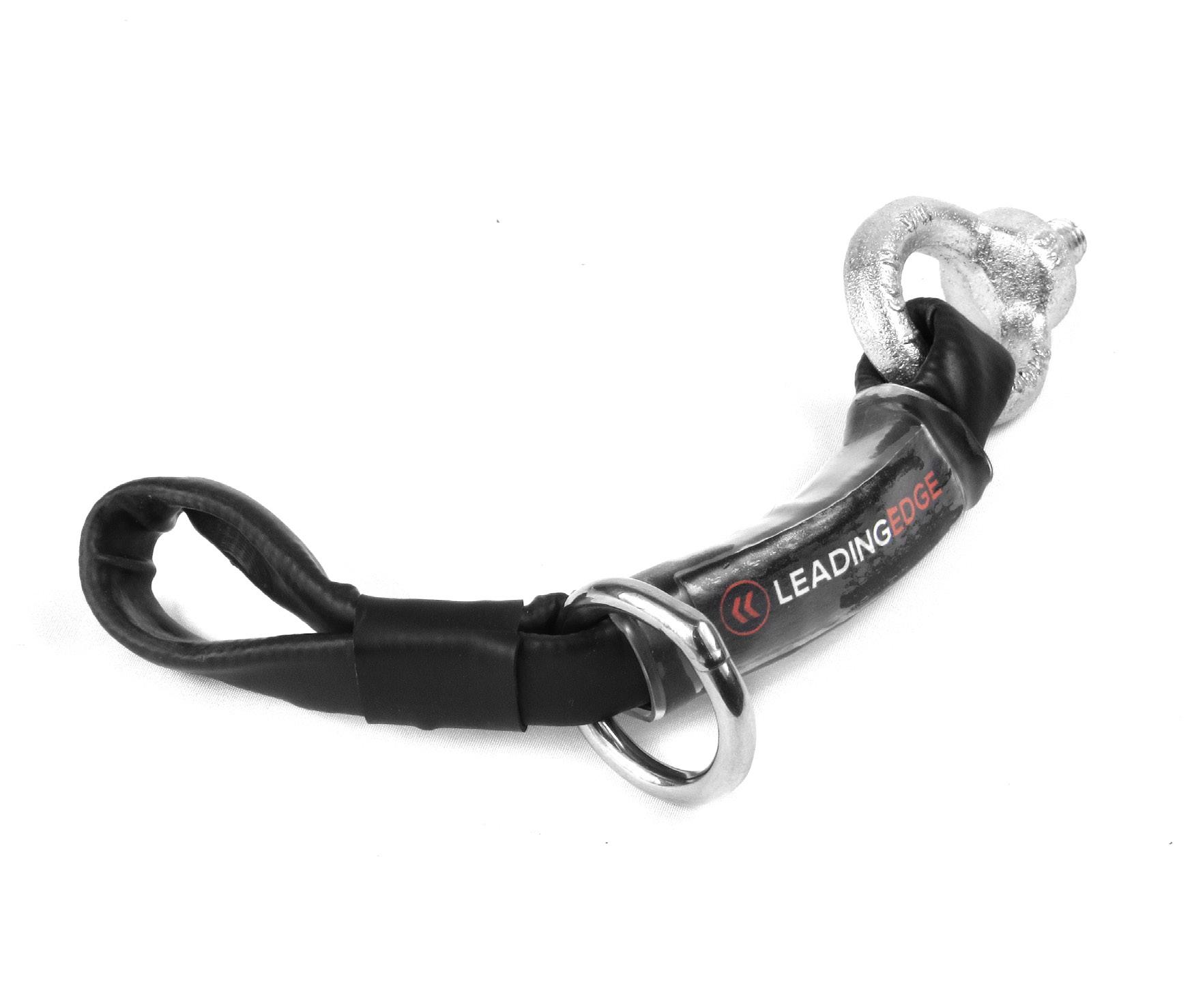

M8 Spindle TT-GRIND-S
M10 Spindle TT-GRIND-M
M12 Spindle TT-GRIND-L
M14 Spindle TT-GRIND-XL

Carry small components and assemble them at height by placing the sock directly over the assembly point to prevent dropped objects, the sock can be used to transport any small items, which can be easily manipulation from within the bag, the perforated white mesh provides semitransparency to see what you are doing, the bag material has been carefully selected to provide maximum flexibility, feel and resilience.

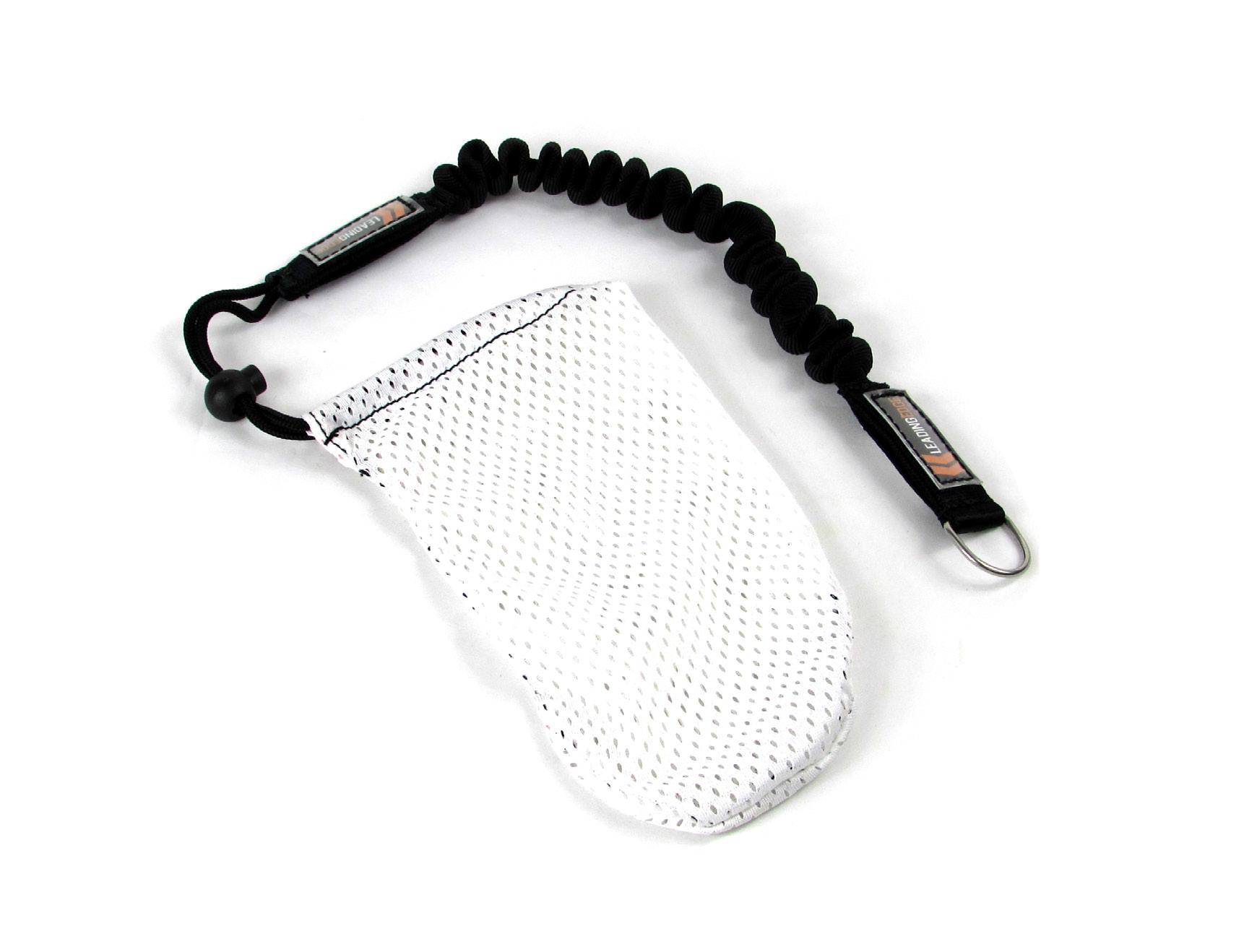
The universal radio holster is a convenient one-size-fits-all tethering solutions for commercial VHF radios. The design has a built-in swivel lanyard which securely fastens the radio while retaining to ability to easily remove it for charging. It also completely avoids interfering with the radios operation.


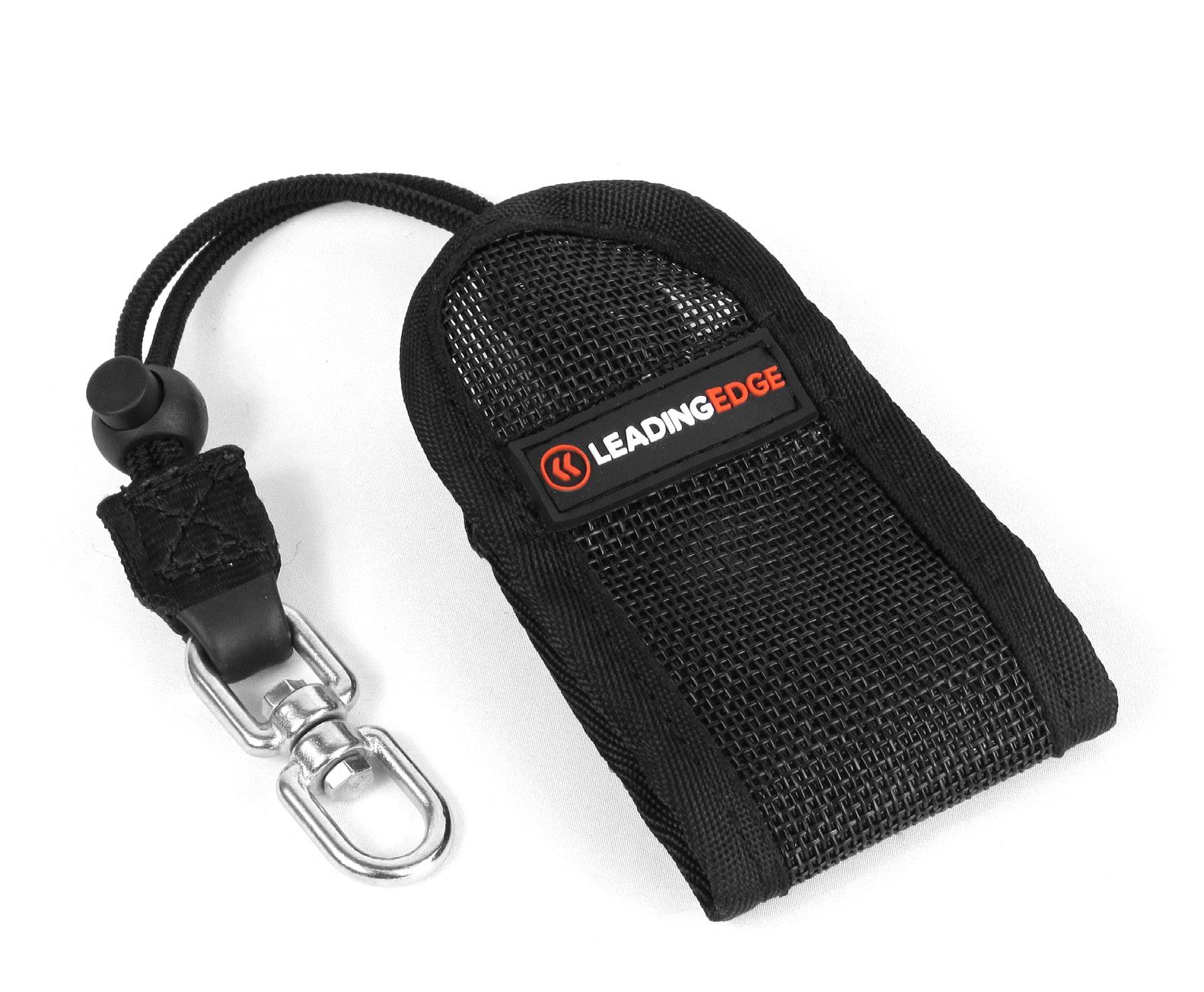
The pro holster has all the features of the standard holster but comes with an additional Velcro docking system, which easily attaches to your harness strap. The system features a small ledge on the bottom to support the weight of the radio. This ensures the radio is secure when docked, freeing your hands. When you want to use it simply pull it from the dock and press it back onto the dock when you’re finished. It also comes with a built-in elasticated lanyard, which tethers the holster to the cradle, meaning the whole system is connected cannot be dropped.

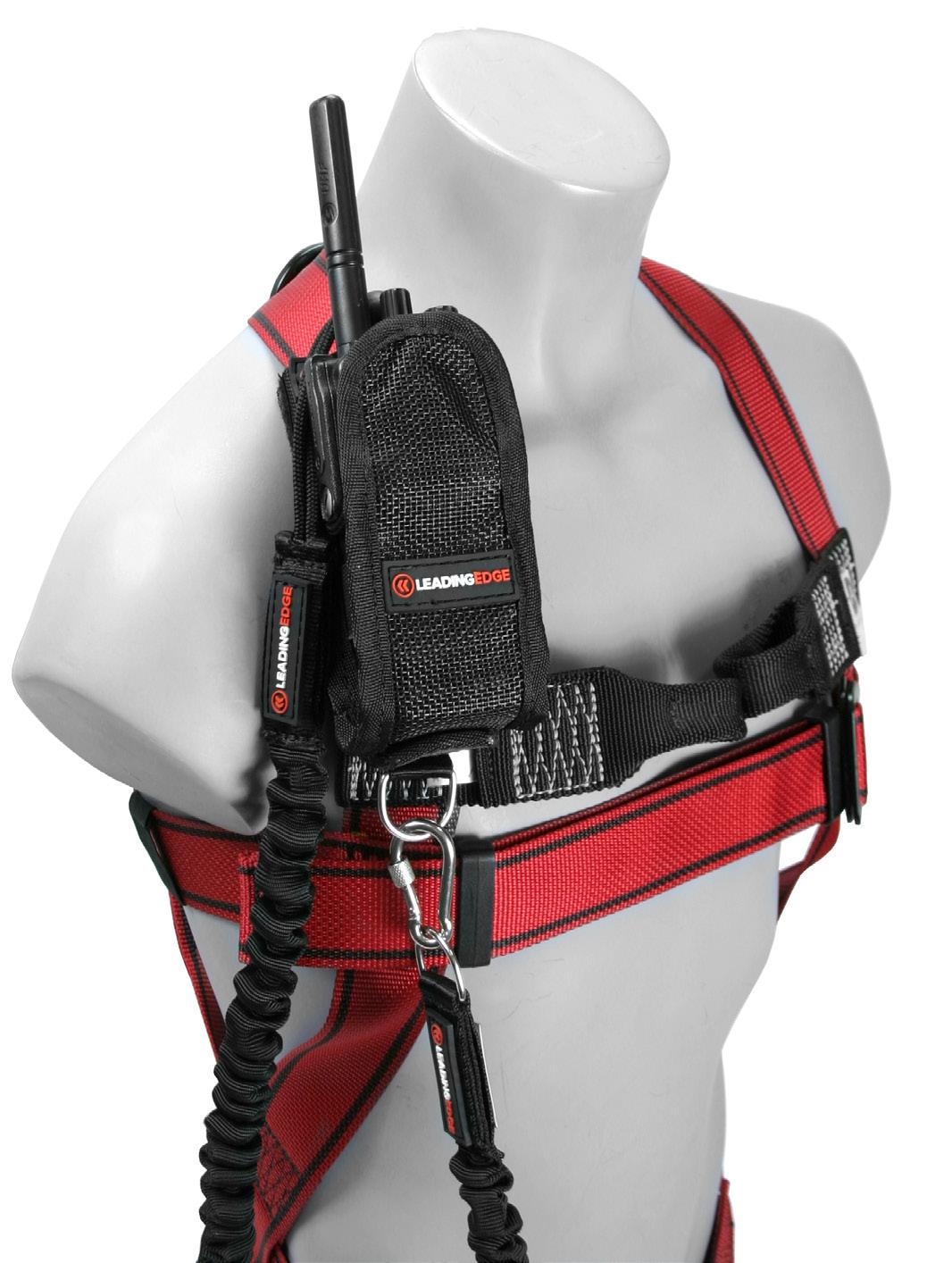

The mobile phone holster provides a secure tethering point for your mobile phone, enabling you to use it safely at height. The front side features a transparent touch-response surface that retains full functionality, while a window on the reverse allows you to use the camera. The phone can be easily fitted or removed by sliding it in and out of the pocket.

» Max phone size: H 15 x W 8cm
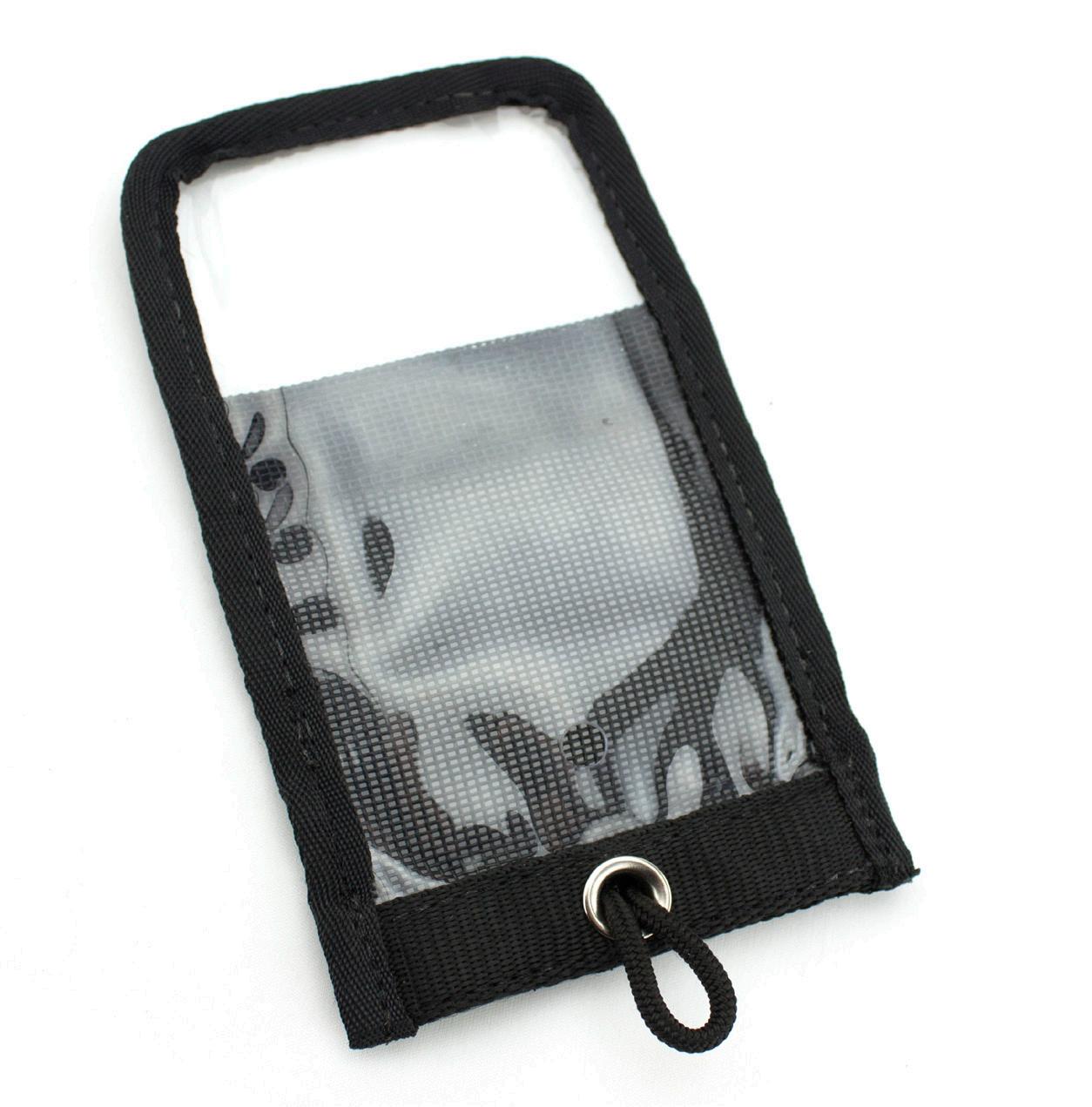
The tablet holster provides a secure tethering point for your tablet device, enabling you to use it safely at height. The front side features a transparent touchresponse surface that retains full functionality, while a window on the reverse allows you to use the camera. The tablet can be easily fitted or removed by sliding it in and out of the pocket

» Max tablet size: H 25 x W 19cm TH-MD-T
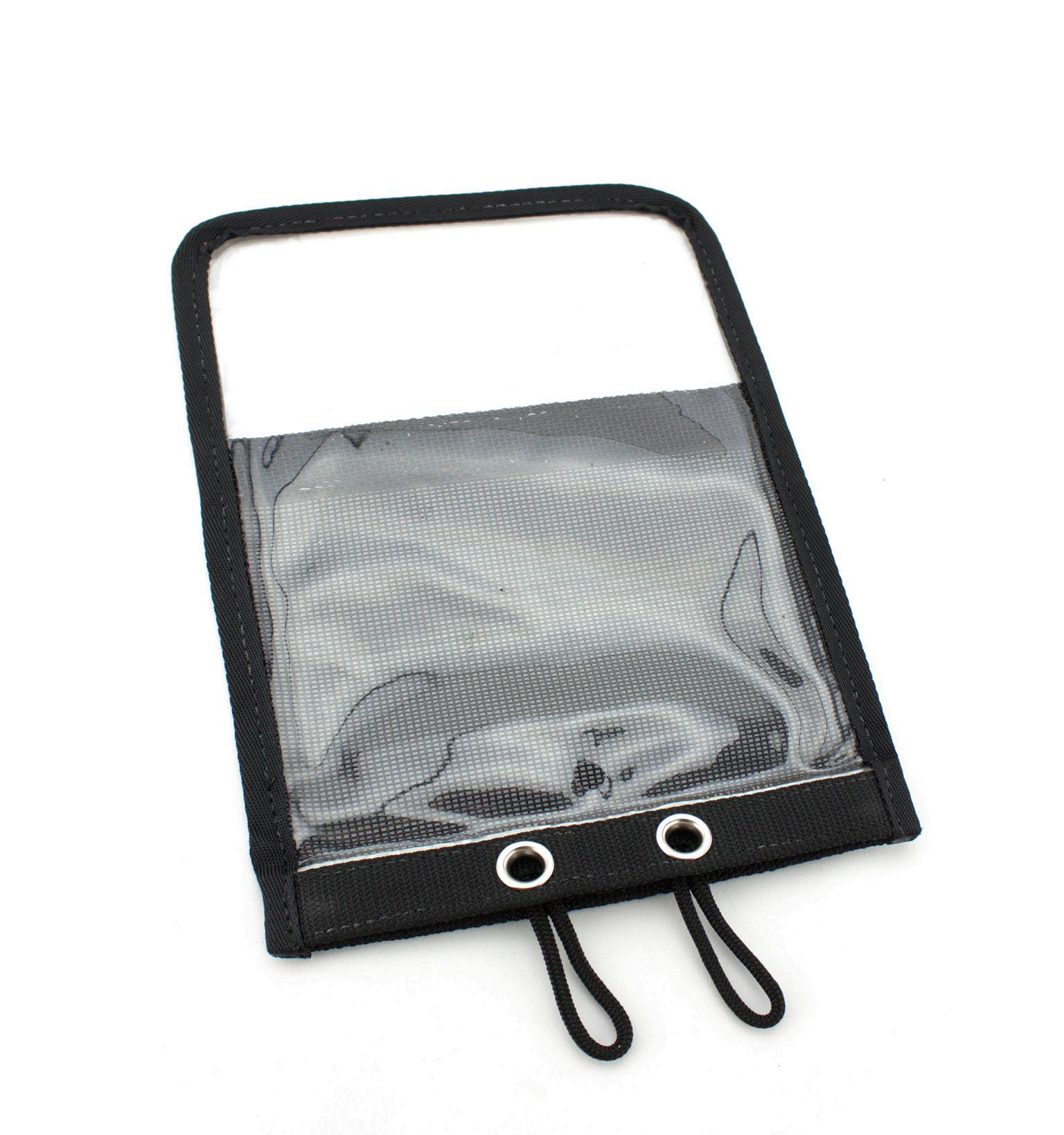
The Smart Phone Case allows you to take a mobile phone and notepad at height. The location of the D-ring forces the case to self-close when dropped, preventing accidental release. Inside is a transparent touch-responsive Velcro pocket with a rear window for full phone and camera operation. An external securing strap also keeps the case closed when not in use.


» Max phone size: H 14 x W 7cm
» Pad, pencil and phone not included
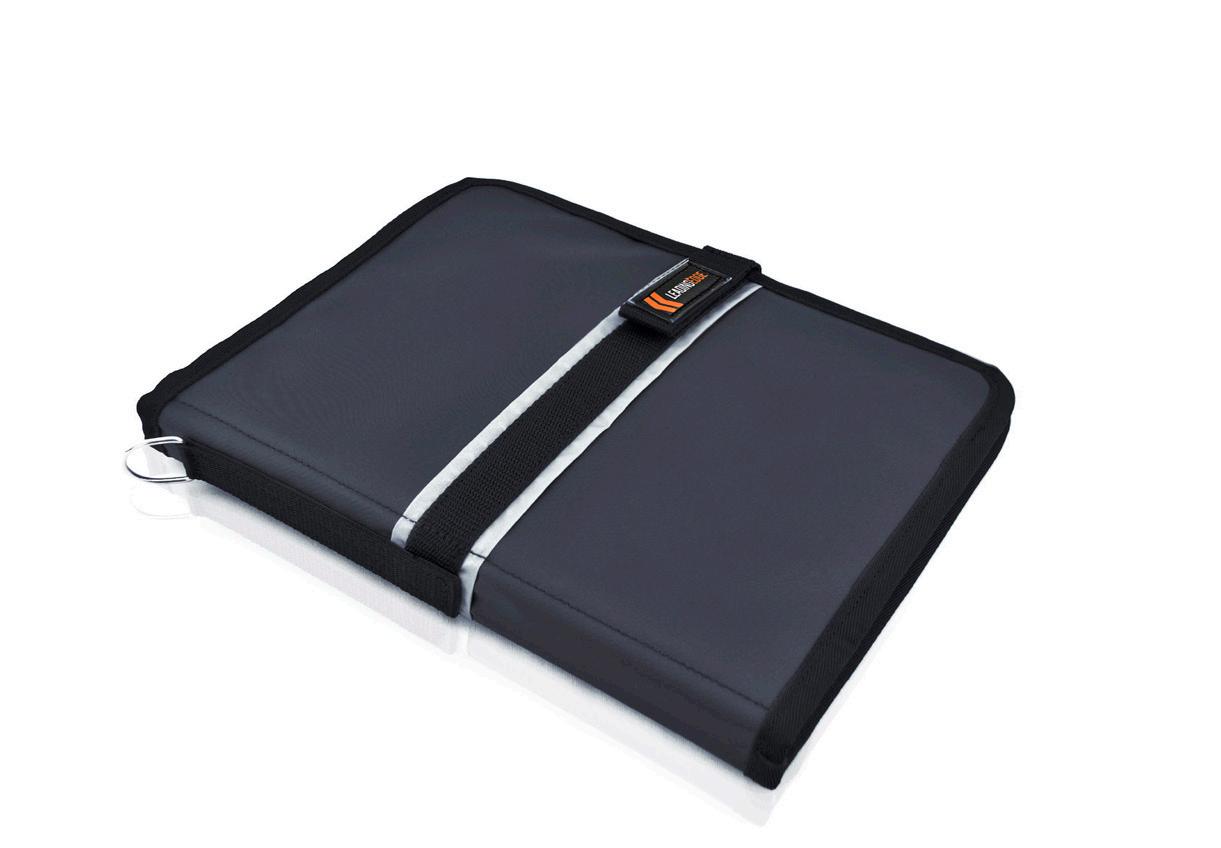
Description
The Tablet Portfolio Case has all the same features as the Smart Phone Case but comes in larger size designed to fit most mobile tablet devices.
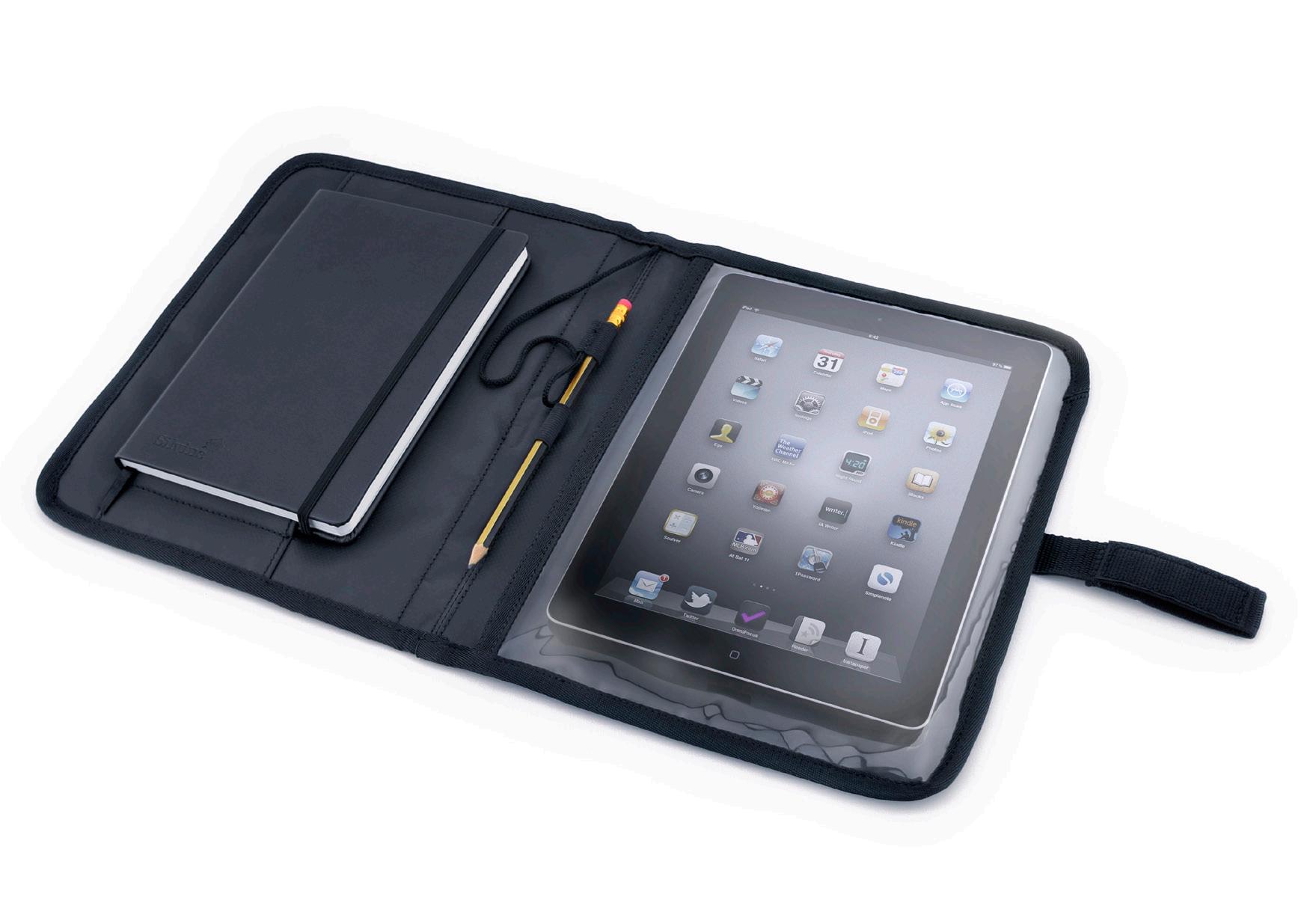
» Max tablet size: H 25 x W 19cm
» Pad, pencil and tablet not included
TH-TPC 1.5kg
The universal bottle holster provides a secure tethering point for a variety of 500ml to 1L water bottles, which allows you to take them safely at height. The holster features a mesh body that allows you to see internal contents and an expanding fastening system to accommodate many different diameters.


» Accommodates bottles/cans: 500ml up to 1L
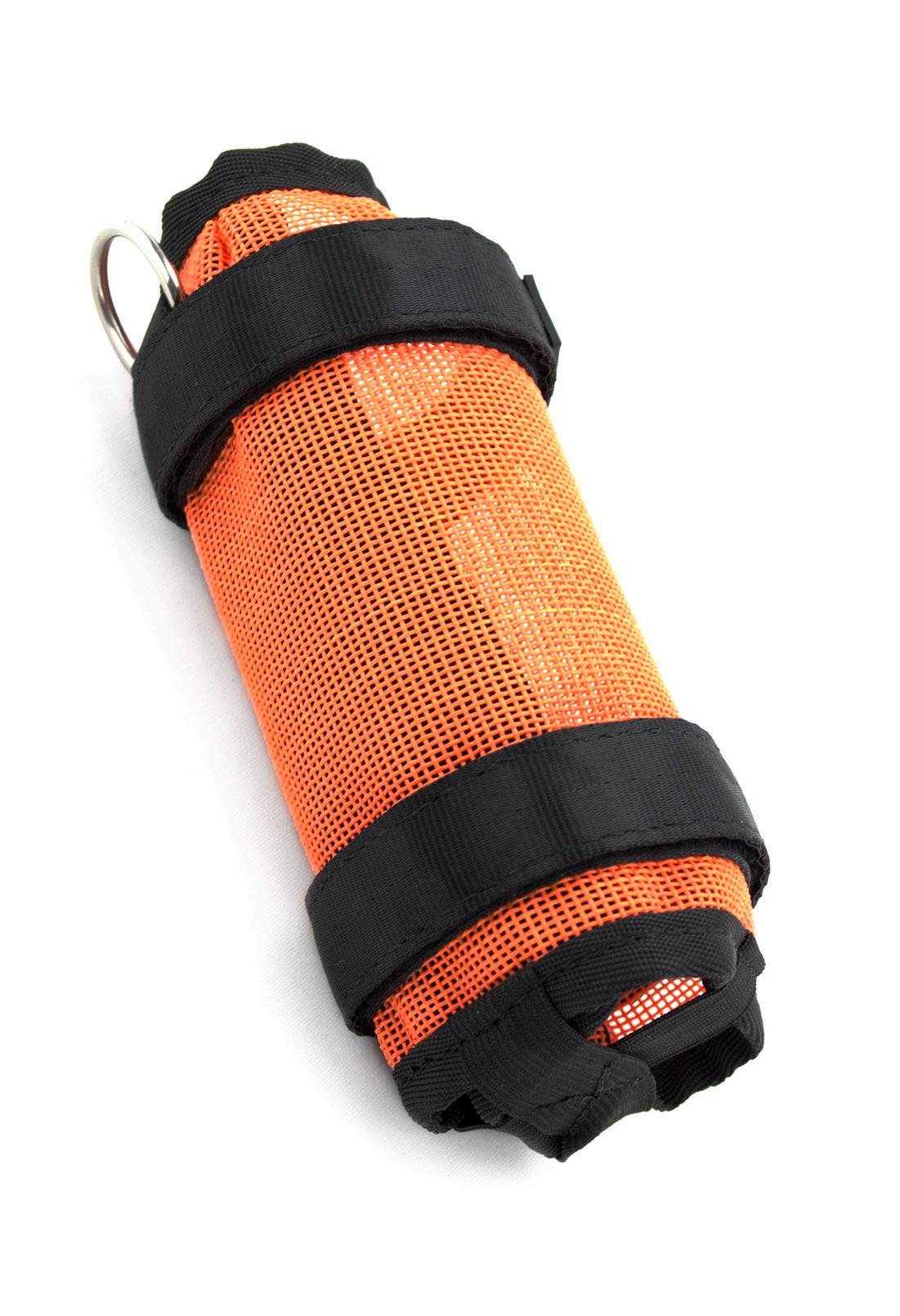
The spray can holster provides a secure tethering point for 500ml and 750ml spray cans, so they can be used safely at height. It is made from a mesh body that allows you to see internal contents and has two access points: a lid opening and a vertical zip along the body.
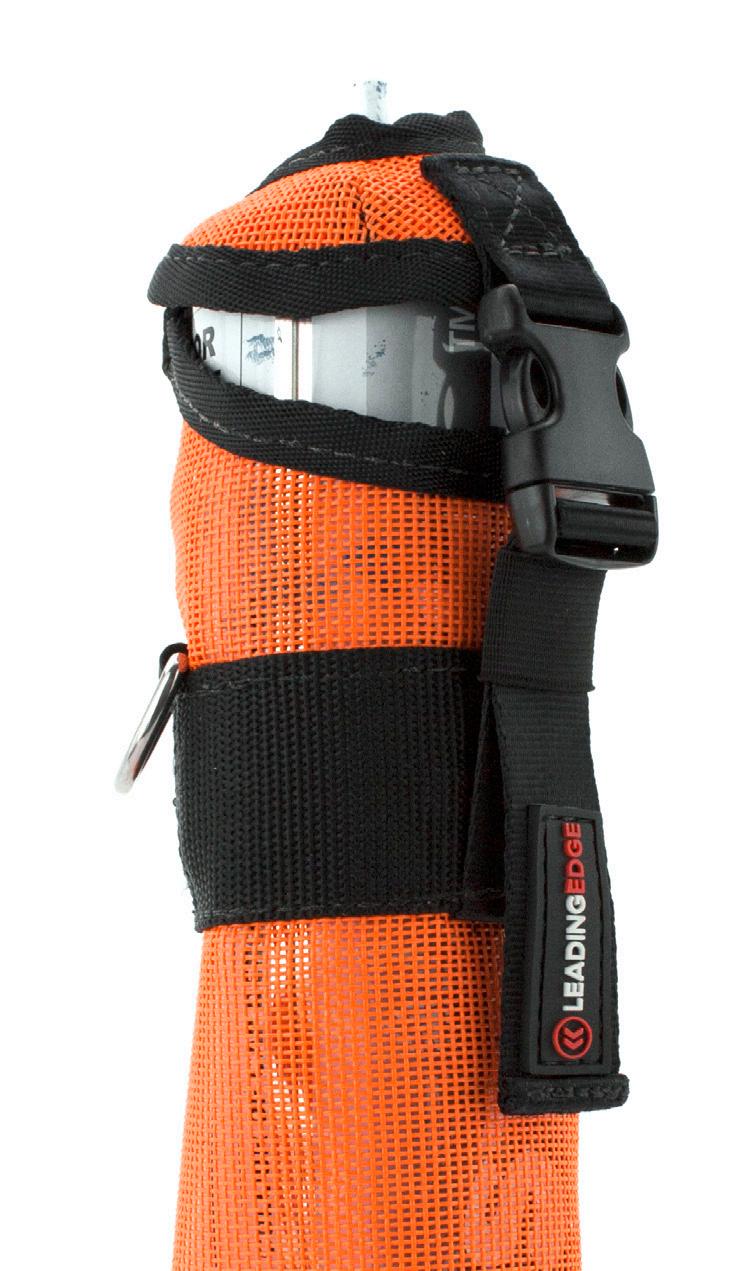


A simple but effective universal holster for tethering tape measures. The design ensures unimpeded retraction and locking whilst allowing flexibility in the depth and width of the fastening to accommodate a range of differently sized tape measures.
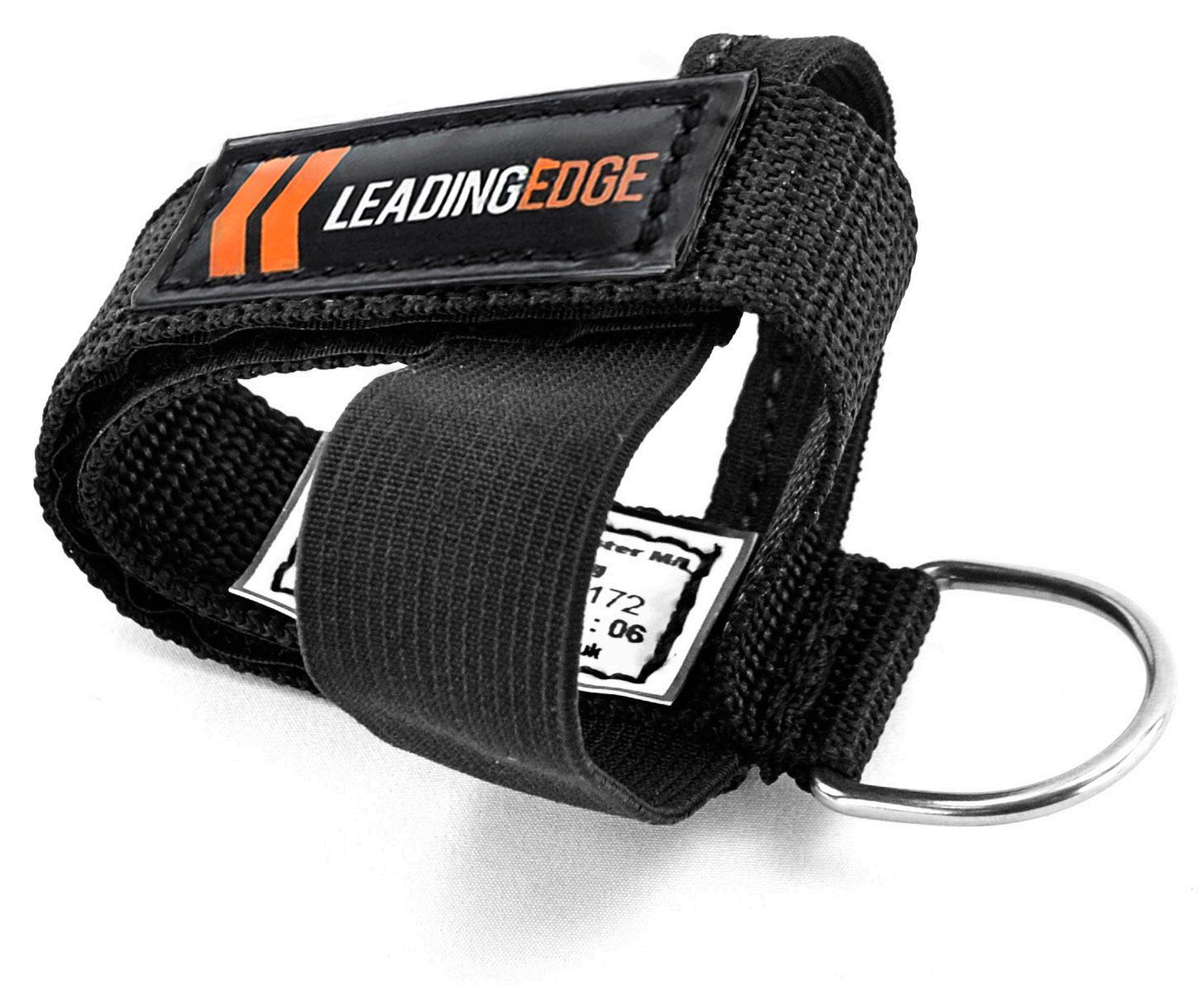

Small Tape Length: 3-5m
Tape Width: 15m
Medium Tape Length: 5-12m Tape Width: 25mm
Large Tape Length: 12-20m Tape Width: 35m
The surveyors tape measure holster zips around the outside of the tape, creating a secure tethering point. It incorporates a hand strap, which allows you to hold the tape while winding. The other side of the holster has an opening for the winding mechanism.

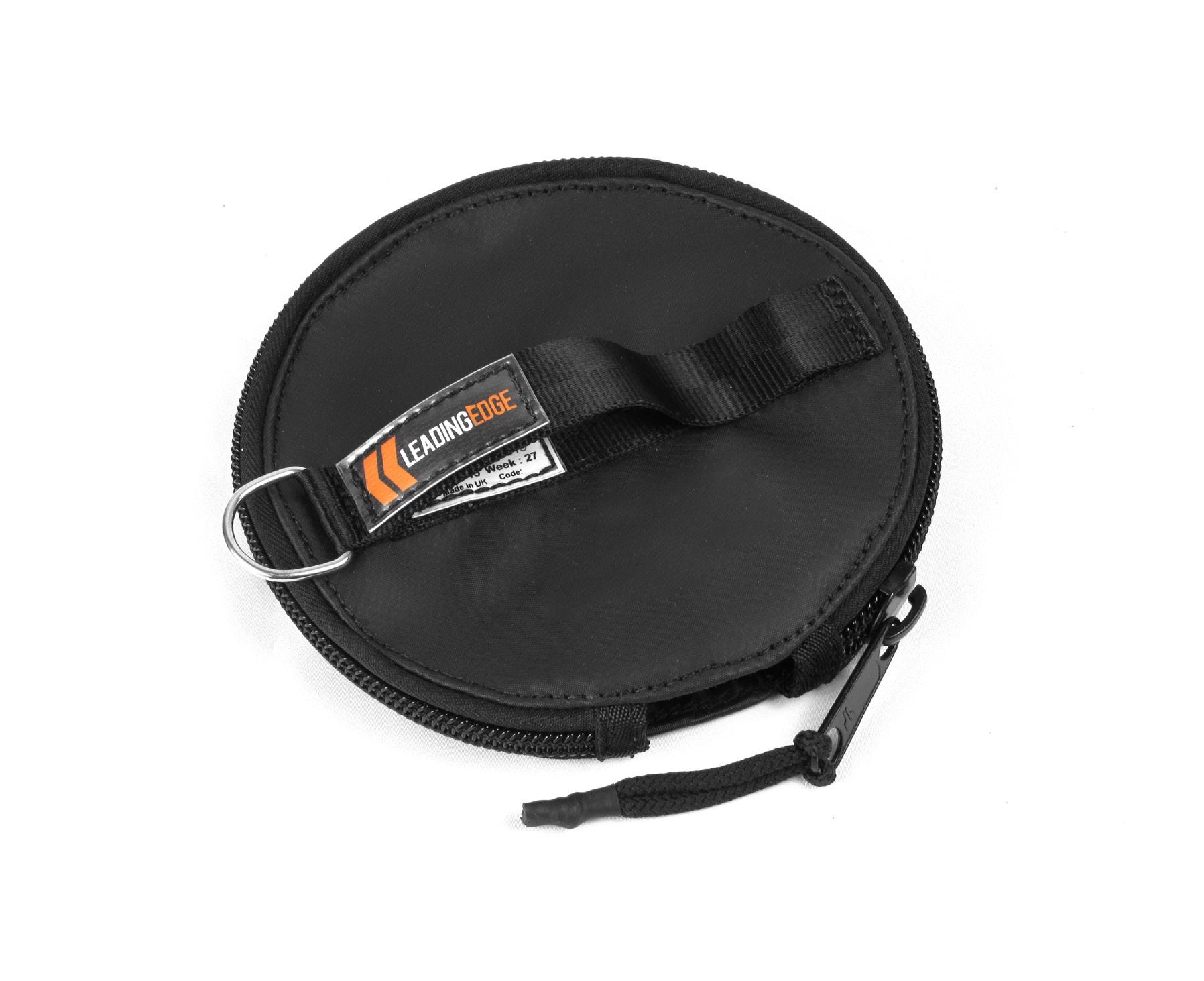
easily threaded onto an ear defender slot or rear harness strap and clipped onto your garment at the other end. The whole system is lightweight and discreet with enough length in the lanyard to easily remove the hard hat from your head.
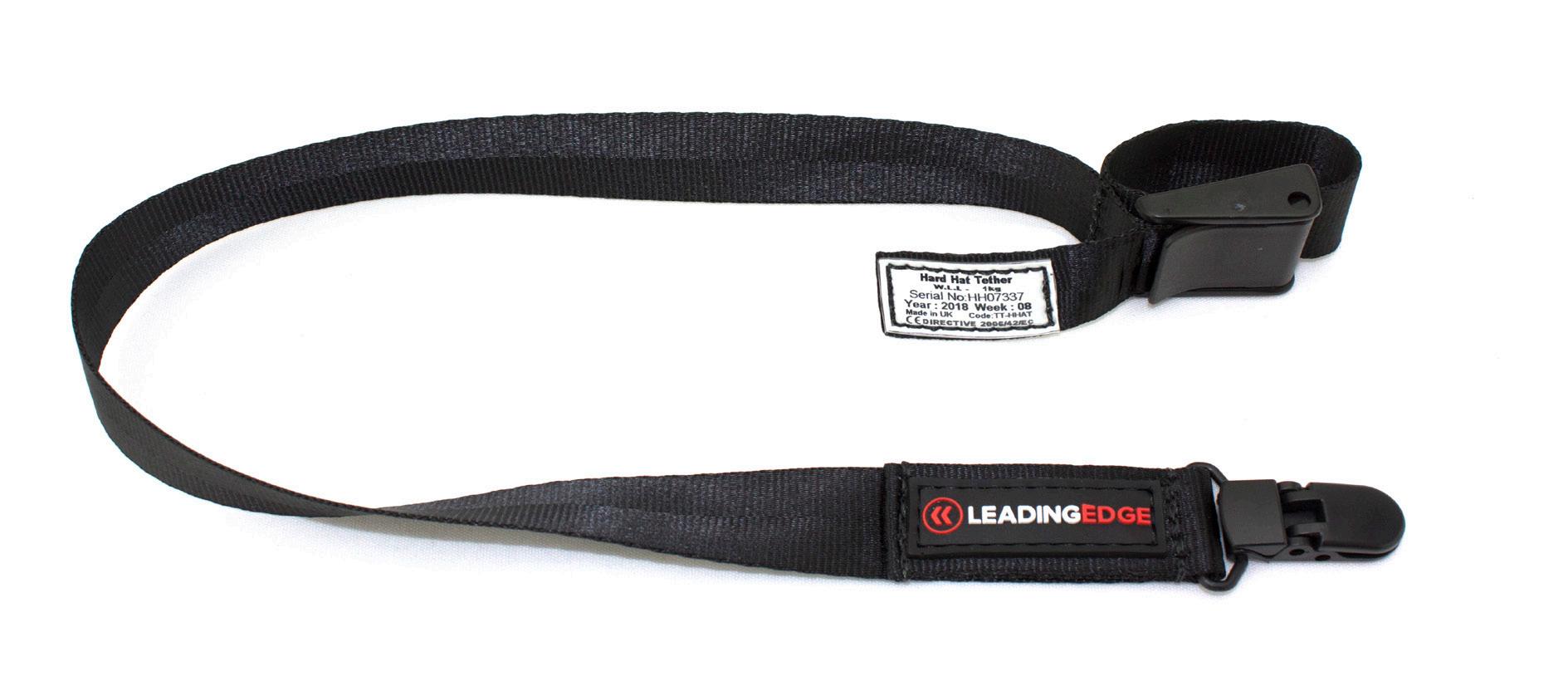
» Attaches to rear harness or ear defender slot

The Pro Hard Hat Tether has the same functionality as the standard version but includes a quick release buckle system, making it much faster and easier to attach and detach your hard hat on the fly. It also features a stronger semi-permanent garment clip, giving it a greater working load capacity needed to secure advanced helmets used by access professionals.
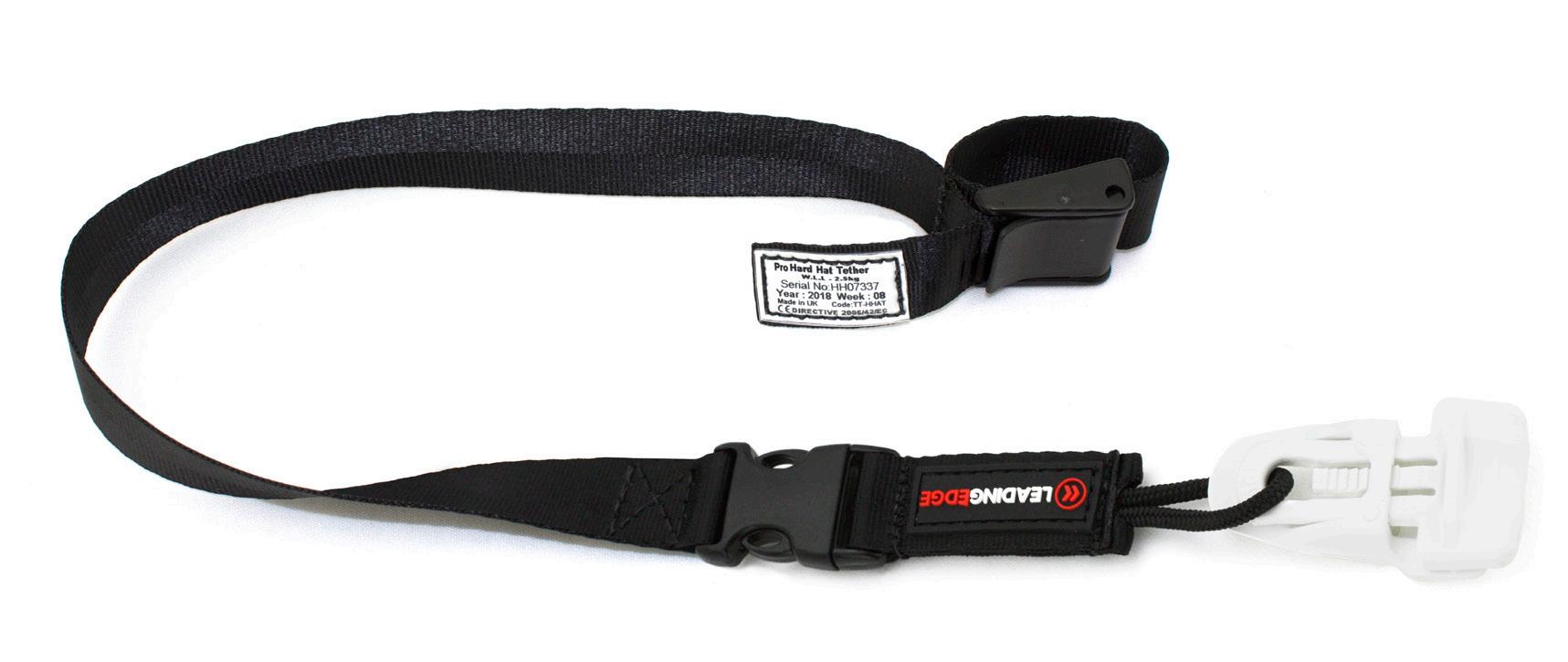
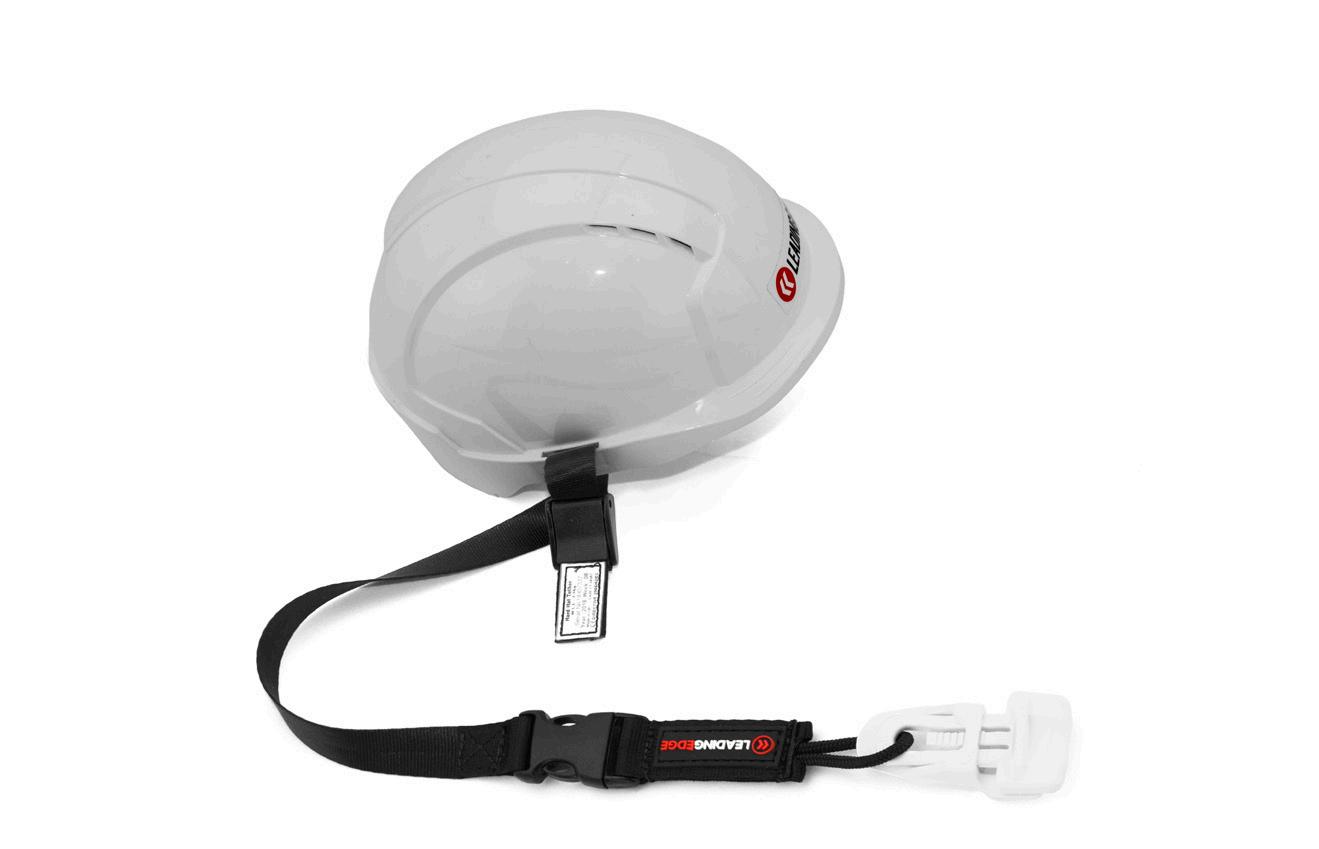
» Attaches to rear harness or ear defender slot
» High capacity garment clip
» Quick release buckle system

Flat webbing, elasticated, spiral, retractable and wire lanyards, ready to quick-connect with your tools.


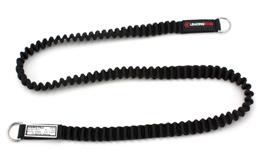



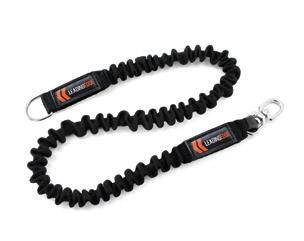

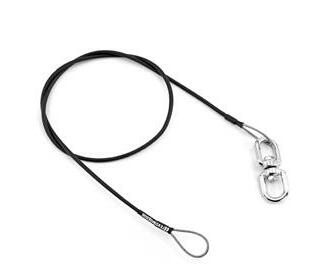
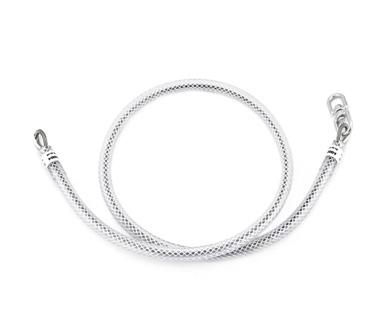
The elasticated lanyard is the ultimate trade professionals tool lanyard, over-engineered for daily use with years of service life. It features a 5mm industrial-grade elastic core, encased in the highest quality tight-weave polyester teflonized jacket. Additional 1-tonne high-grade flat webbing reinforces the terminations. Overall this means it has stronger elasticity, better retraction, higher resistence to abrasion and ingression of contaminants.
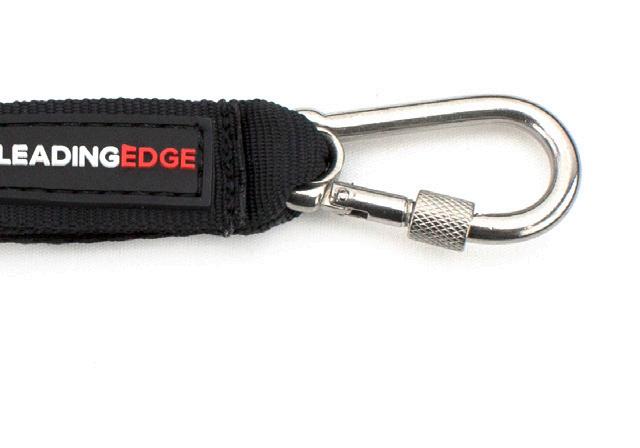

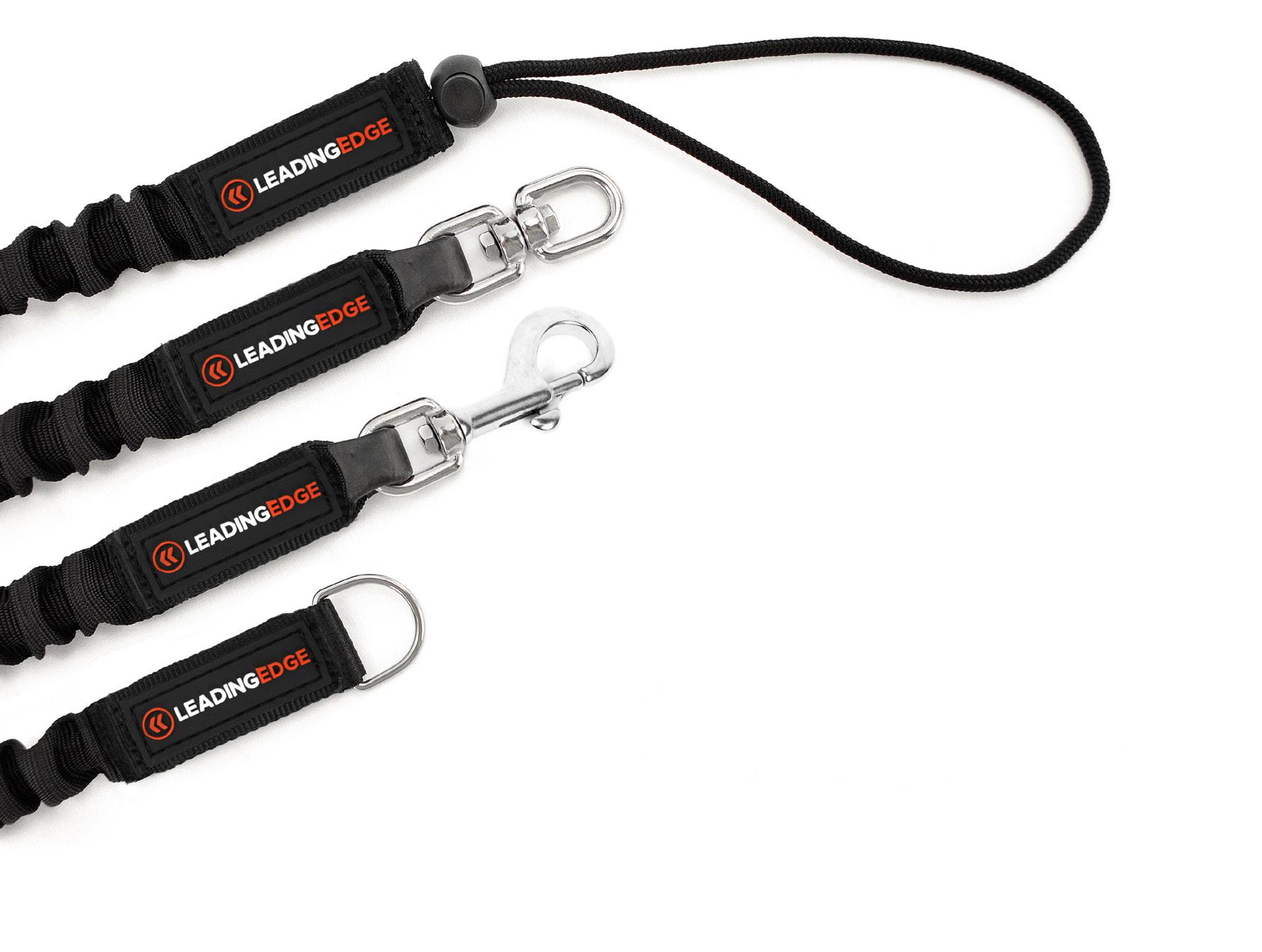
» 60cm (1m stretched)
» 1m (1.5m stretched)
Screwgate karabiner included as standard.
1m
Screwgate karabiners included as standard.

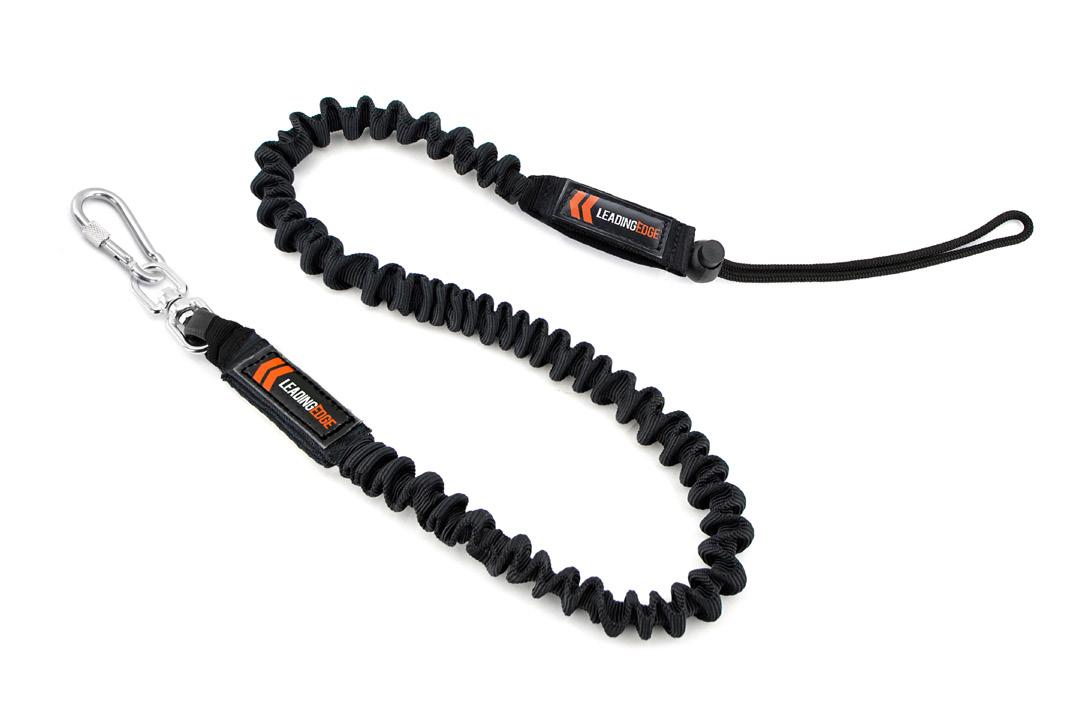

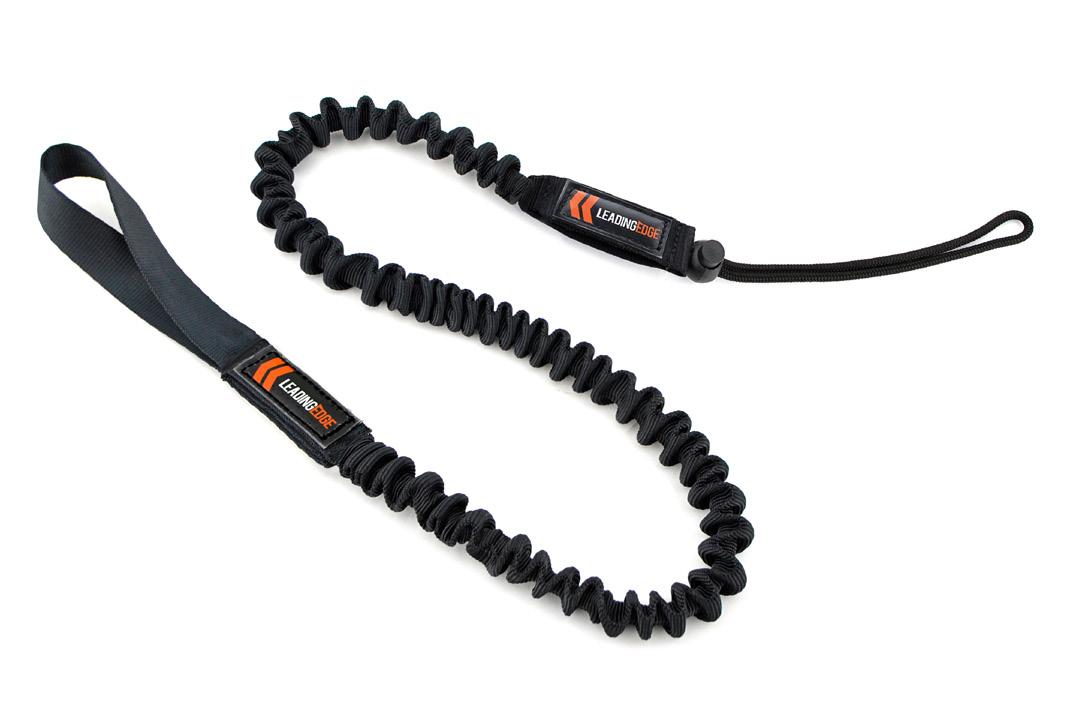
TL-E-CB-1 1m TL-E-SB-1 1m
Screwgate karabiner included as standard.
TL-E-DS-1 1m TL-E-DSC-1
Tool wrist lanyards are a great option for repeat use of a single tool. Anchoring to your wrist means you can release your tool to free up your hand for other activities. And pickup it again whenever you need. All our wrist lanyards have ergonomic Velcro fittings that can be easily adjusted with one hand, but unlike other wrist lanyards they have three unique features: expansion joints, over-locks and retainer loops.
Besides providing extra comfort, the expansion joint stretches to 9cm with extreme force. This allows emergency release of the hand should the wristband become caught in a hazard. The Velcro over-lock and retainer loop add further protection by preventing accidental unfastening and securing strap overhang.

hoose connectors from p.277



The Mini Spiral tool lanyard is suited for small hand tools. It provides the same reach and functionality of a standard lanyard but is much lighter and less bulky. Being synthetic means it is also better for external applications. The slender coiled design prevents snagging/tripping hazards and dampens the impact force of a dropped tool.

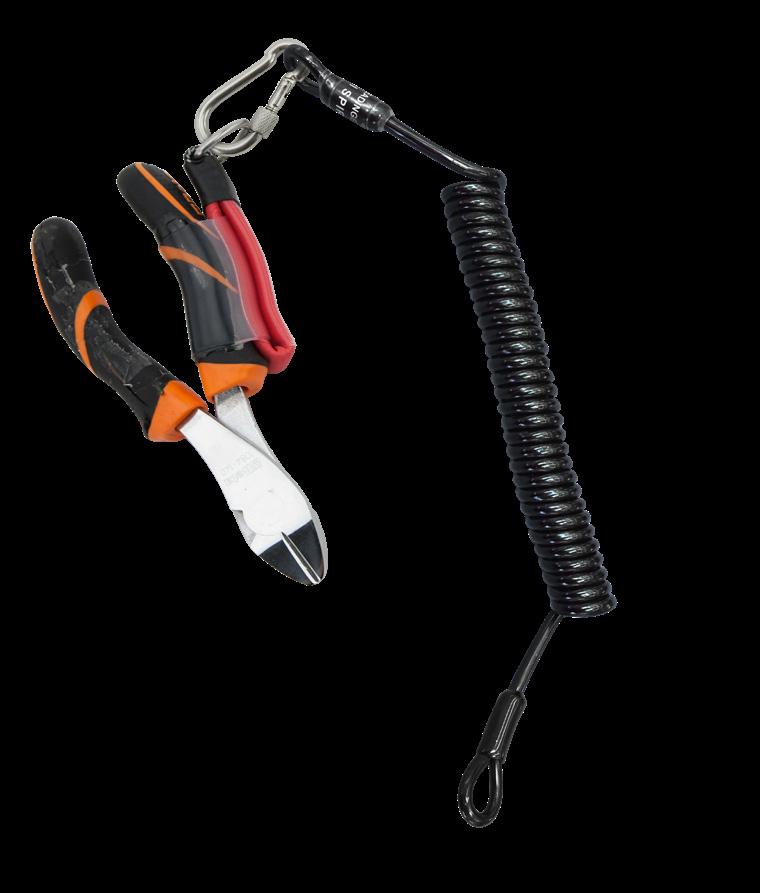
for daily use in harsh environments. Its robust design prevents snagging and tripping hazards and dampens the impact force of a dropped tool. Both ends of the lanyard feature stainless steel swivel rings, which prevent twisting and connector roll-out.

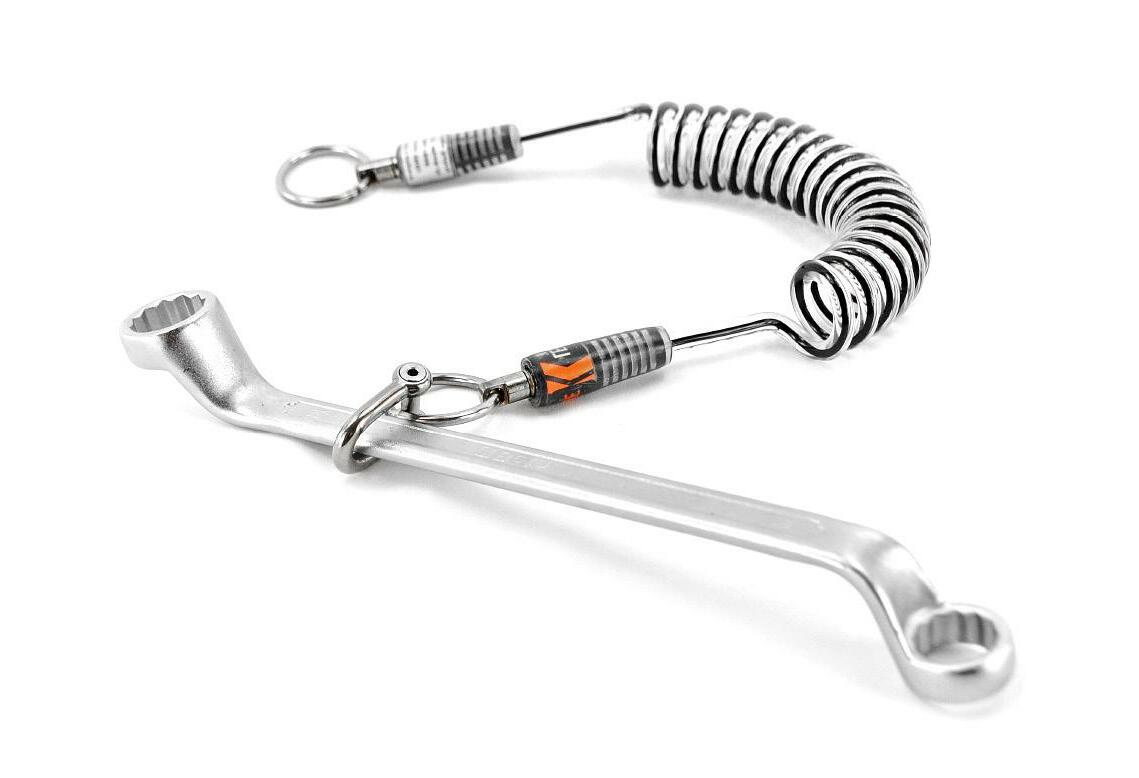
» Ø 7mm synthetic cable
» 2x stainless steel swivel rings
» Rugged design for harsh environments
» 44cm (1.95m stretched)
44cm TL-SPIR
Choose connectors from p.277

Engineered for intense daily use, the Cobra is a heavy duty retractable tool lanyard featuring an ABS rubberised housing, internal moulded supports and high quality stainless steel components. It retrofits onto all belts and harness straps via a removable back bridge and houses a flexible PU coated stainless steel wire (Ø 1.9mm, 1.25m extended length). A swivel also prevents line-twist and connector roll-out.

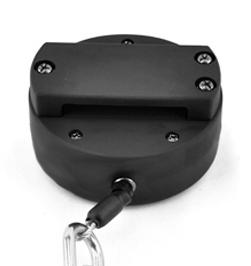
C hoose connectors from p.277

Triple-Lock Velcro fastening strap, allows attachment to scaffolding, MEWPS, scissor lifts, handrails and plant. max tube Ø 50 mm, straps overlap in opposite directions increasing strength of fastening.
Easy-Reel Cobra comes with an omni-directional swivel system that increases range of motion. Two in-line swivels maintain alignment between the reel and tool to provide smooth action and reduced cable friction. Allows attachment to tool bags etc.



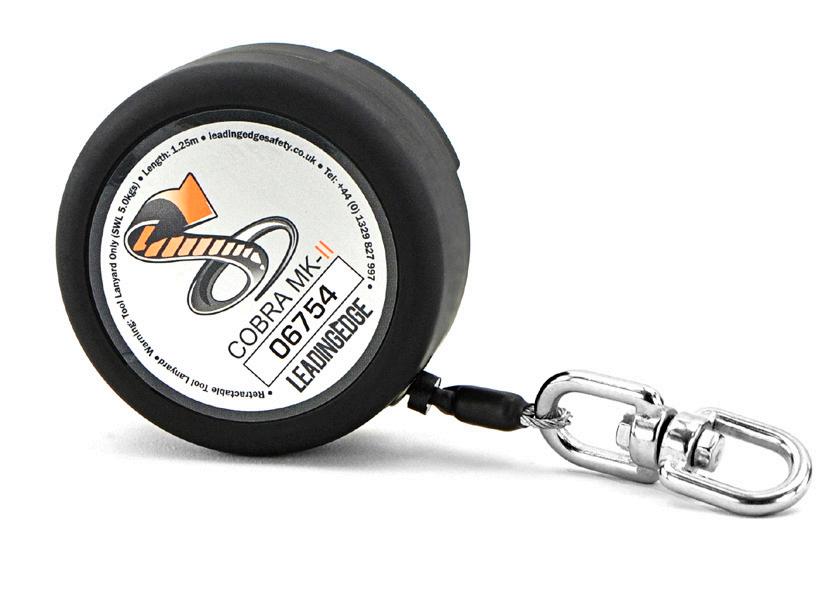
A 30cm wire extension adds extra fixed length to your fully retracted Cobra, allowing comfortable and resistance free holstering and pick-up of tool
The Stainless steel wire lanyard is suited to harsh applications as it is not affected by environmental conditions such as heat or moisture. The flexible 7x7 stainless steel cable is extremely lightweight and ideal for small hand tools.

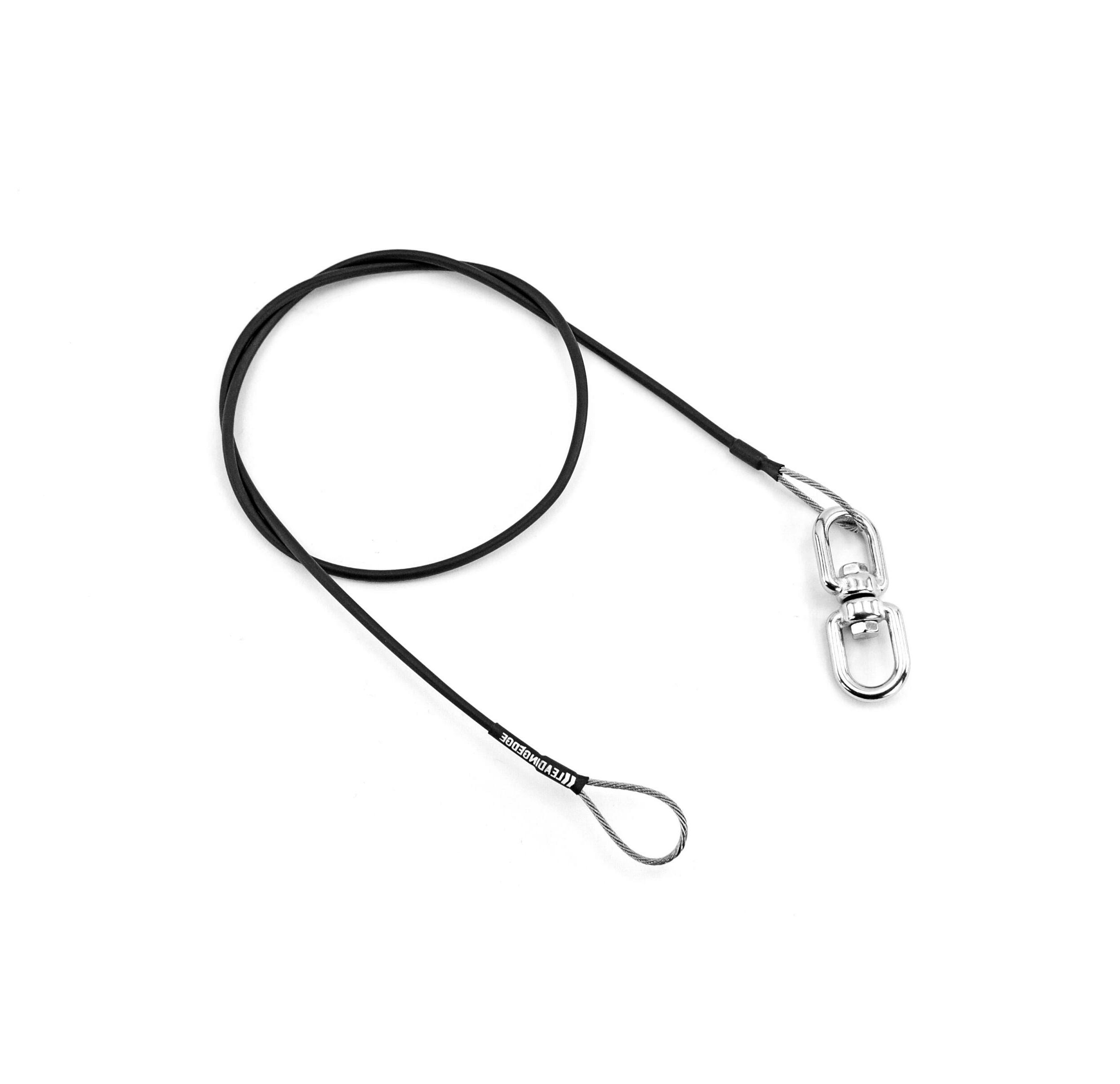
The Pro Wire lanyard is our toughest extreme tool lanyard. It is specifically engineered for use in the harshest environments where it may be exposed to heat or moisture on a daily basis. A stronger stainless steel cable, larger swages, thimble eyes and a reinforced clear resin jacket provides crush and impact resistance. These lanyards come in lengths up to 2m. This gives you extra length to tether larger tools requiring a fixed anchorage. Specs
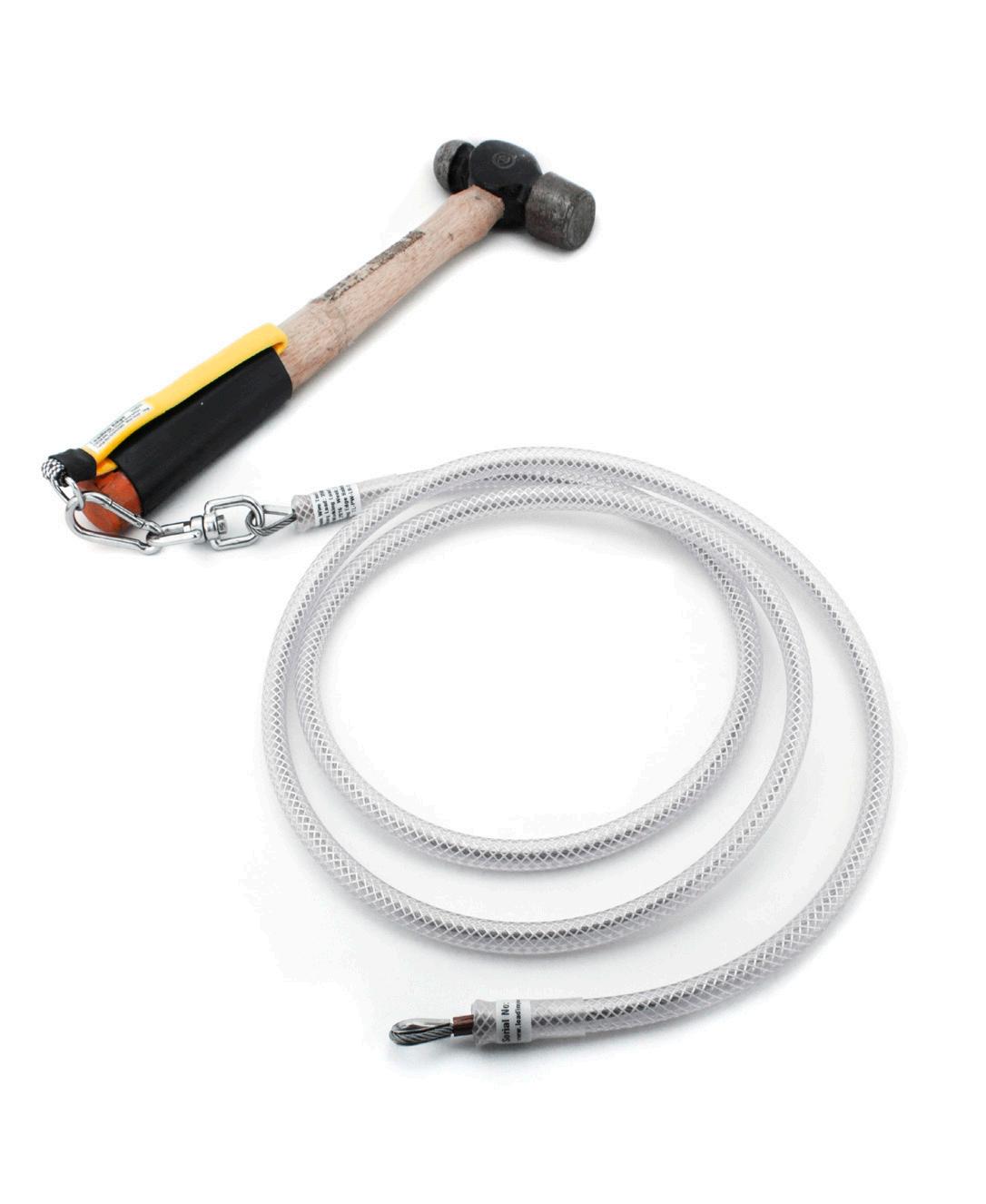

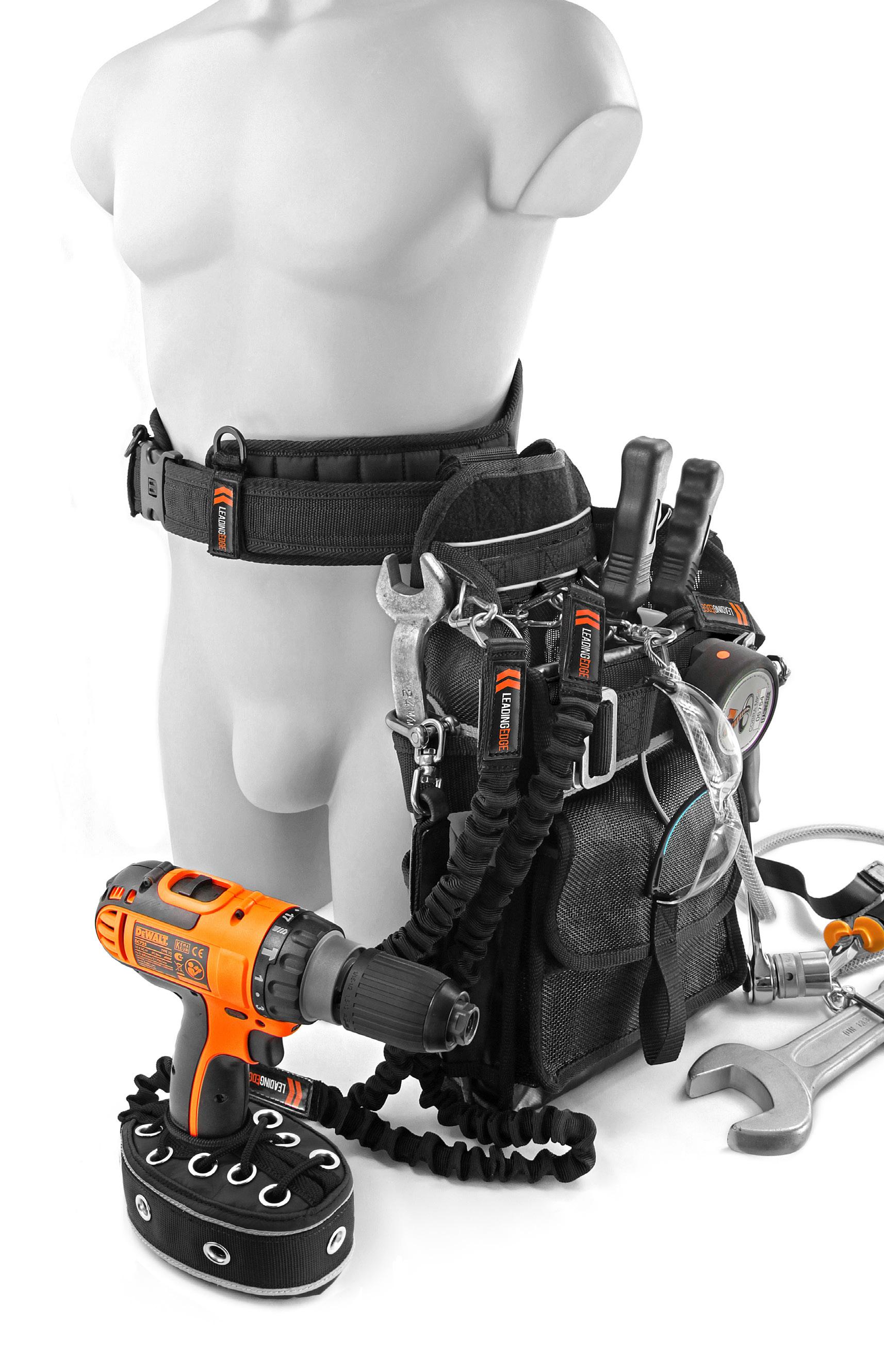
The simplest way to secure your bags, holsters and lanyards with a structurally rated and certified fixing.


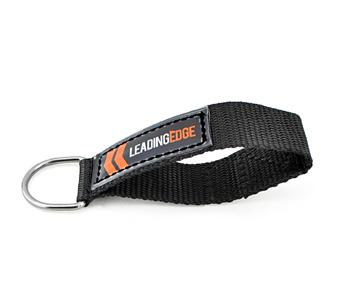



The tether jacket is a secure and convenient way to carry hand tools at height on your body. It is made from a comfortable, breathable structural mesh with multiple front pockets for easy tool holstering. The one-size-fits-all design features front, side and shoulder adjustments, shoulder padding and a back flap that allows your harness dorsal D-ring to pass through. It can be worn on its own or both under and over a harness. Additional belt loops also allow the jacket to be used in conjunction with Blade belts to carry lanyards or tools bags.
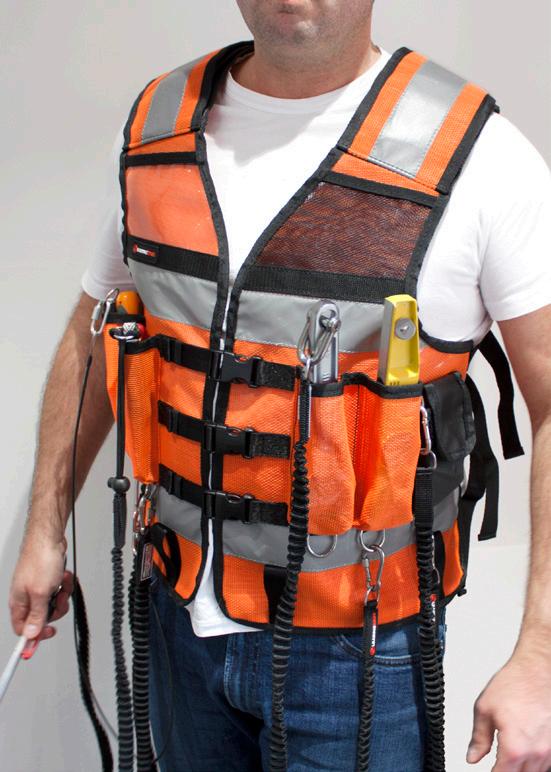

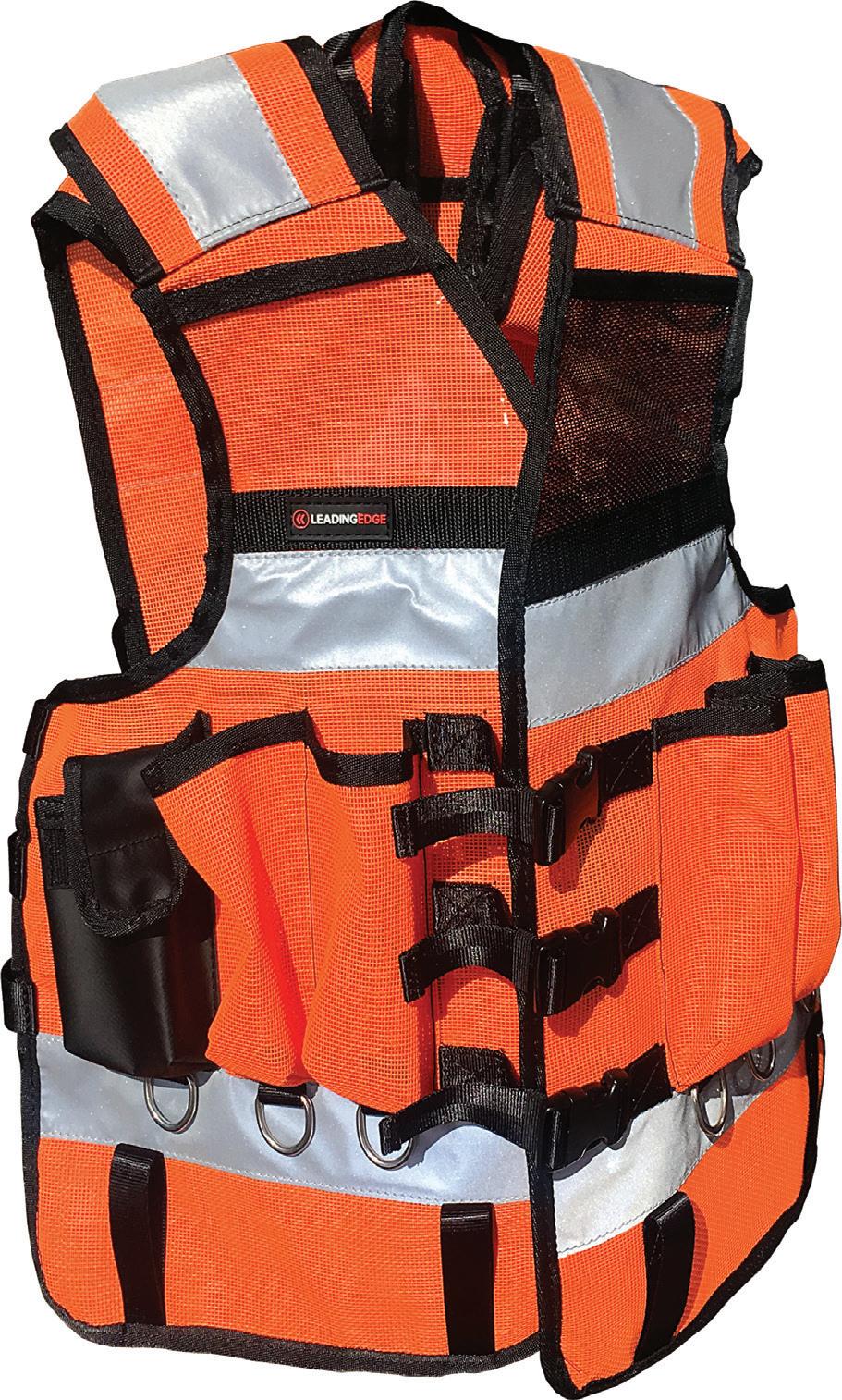
» Side, shoulder and front adjustment straps
» Multiple pockets and tool holsters
» Belt loops » Anchorage D-rings
» High-vis elements
» Padded Shoulders
Blade safety belts are structurally designed, certified and rated for tools at height. They give you an incredibly convenient way to attach your bags, holsters and lanyards. Blade belts feature a unique inside size adjustment system that maintains a smooth snag-free outer surface that locks securely with a defence grade triple action buckle. For an extra measure they’re also reinforced with dual layered foam. That makes them super comfortable to wear all day long.
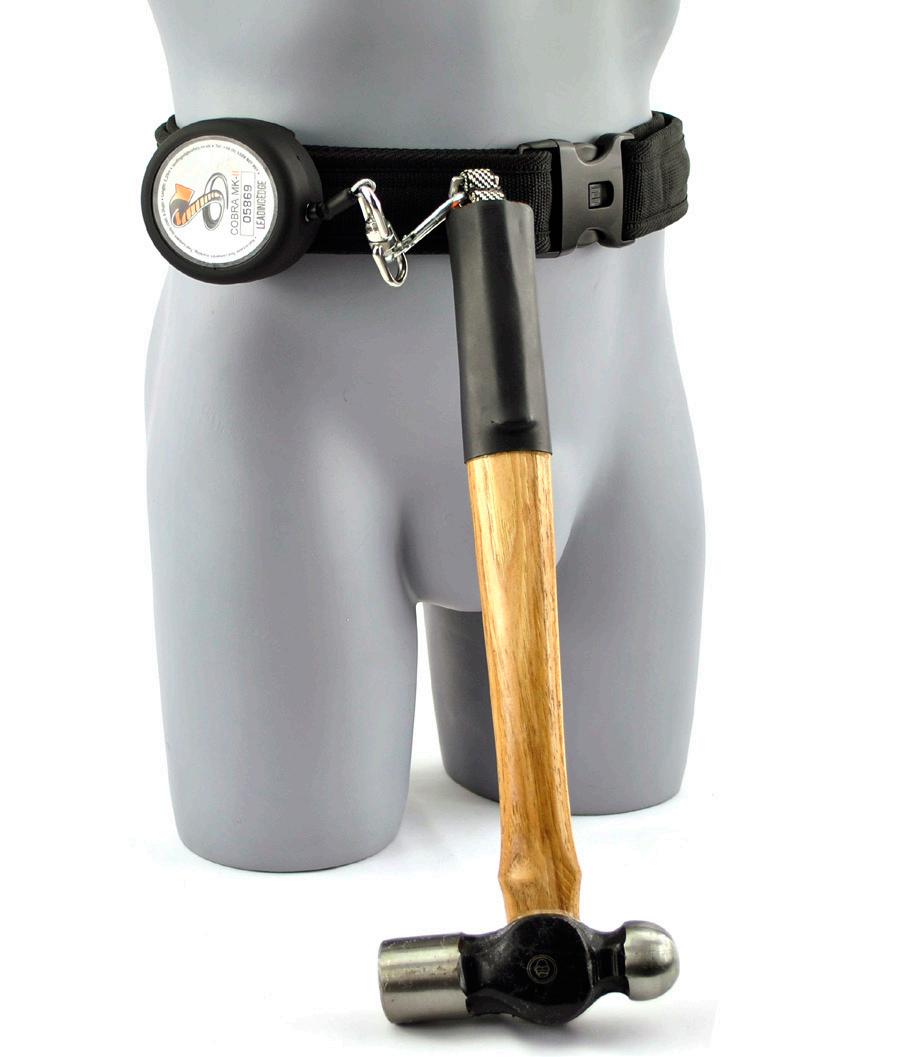
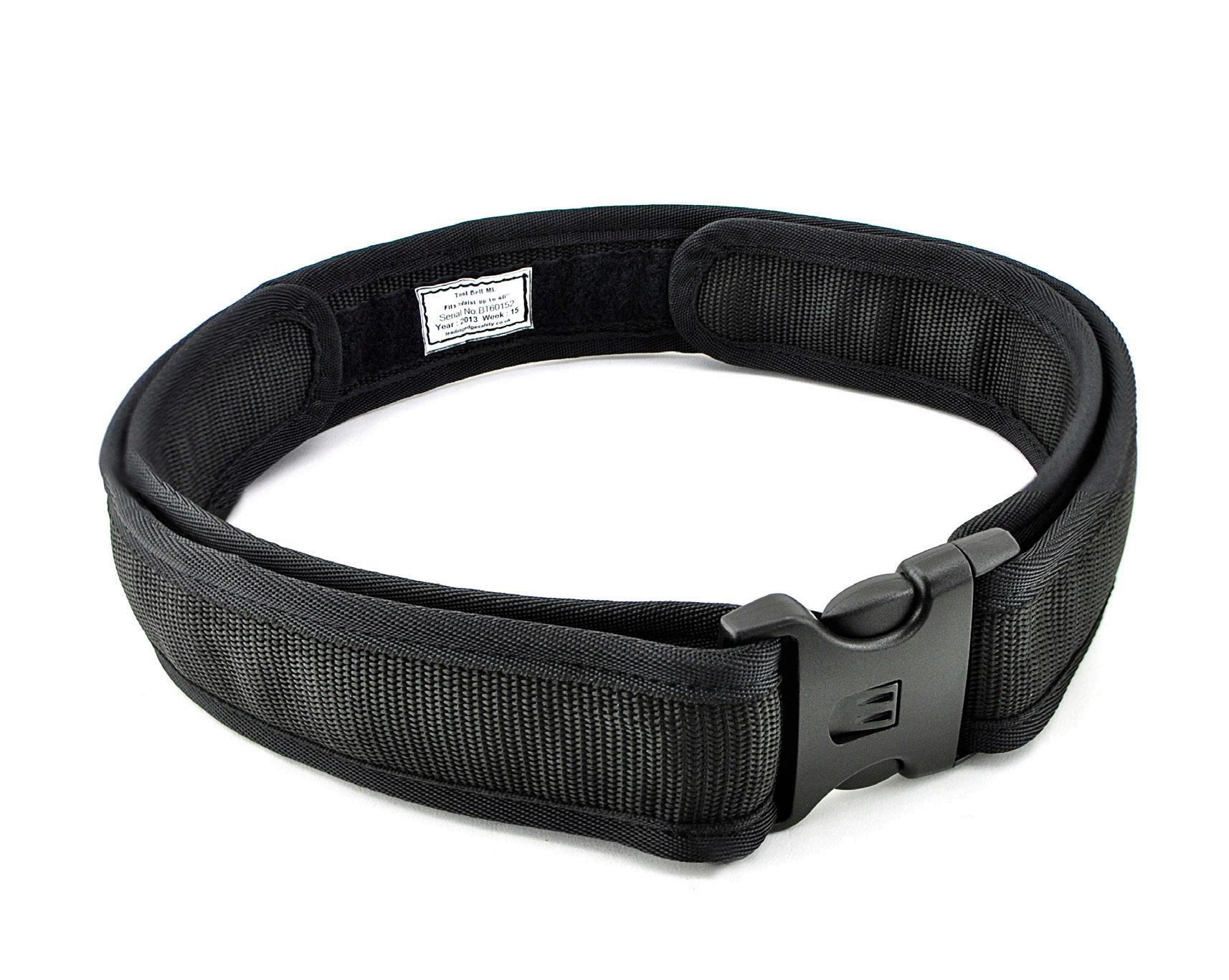
Structurally reinforced webbed backing, reinforced eyelets, 2x dual-function keepers with built-in structural D-ring tethering points.
Standard 114cm (45”) BLT-LEA-S
Large 140cm (55”) BLT-LEA-L
Attach loops onto your tool belt or harness straps to create structural anchorage points.
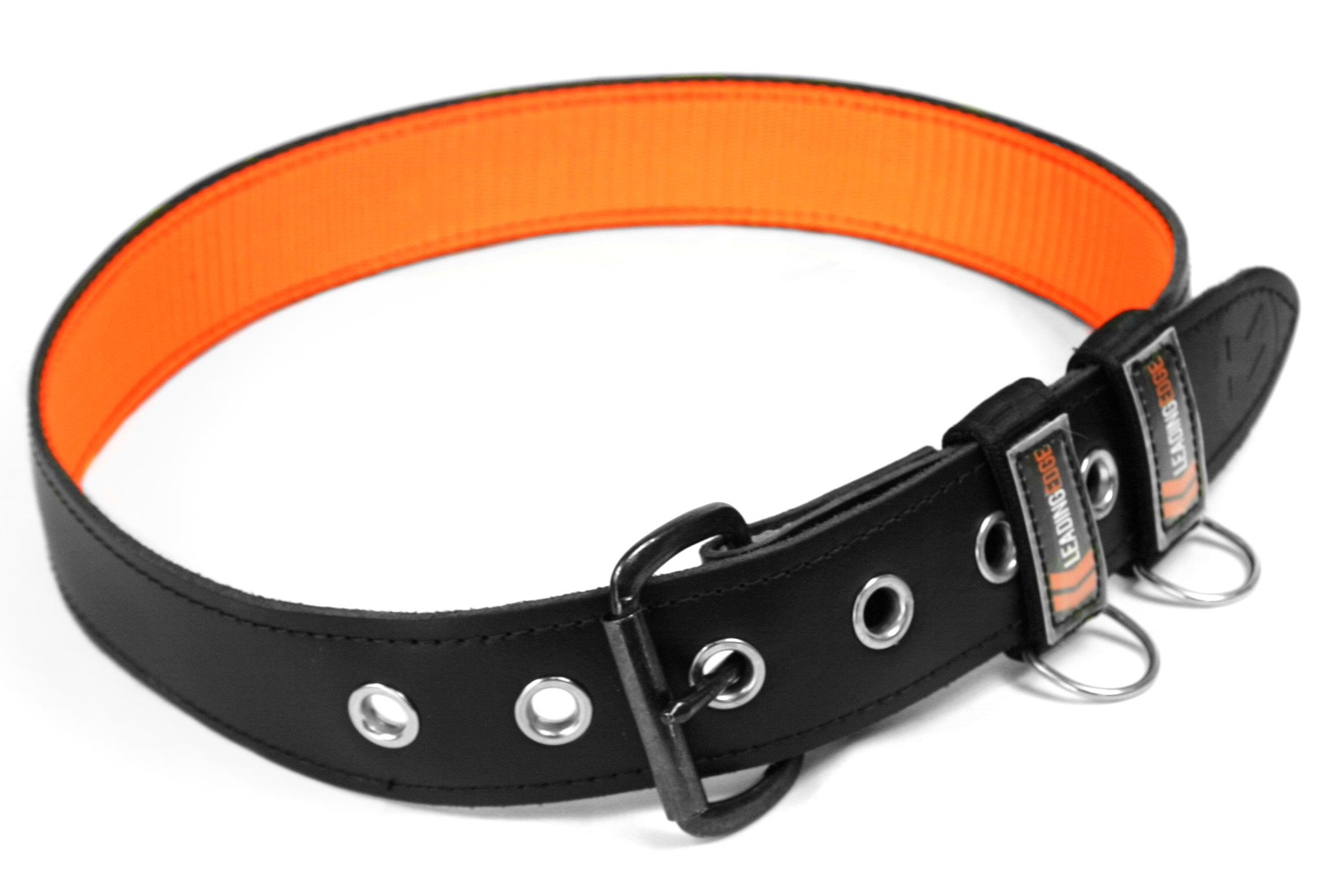
Fits belts straps up to 5cm wide. Stainless steel D-ring.
BLT-LOOP-F 5kg
BLT-LOOP-V 5kg
5kg MULTI-PURPOSE TOOL SPECIFIC PERSONAL MEWP DEBRIS
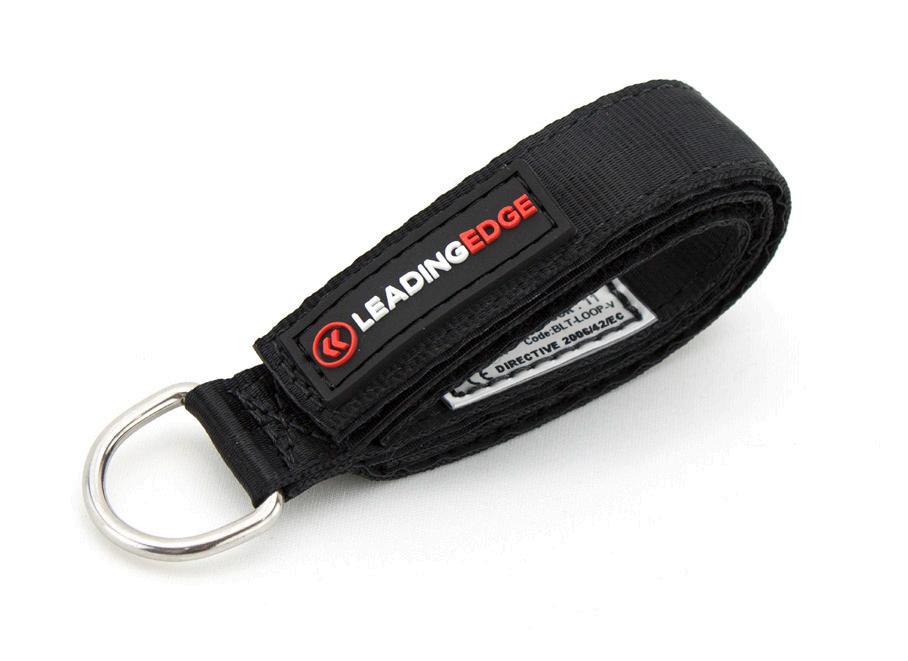
Fixing BUCKETS 313

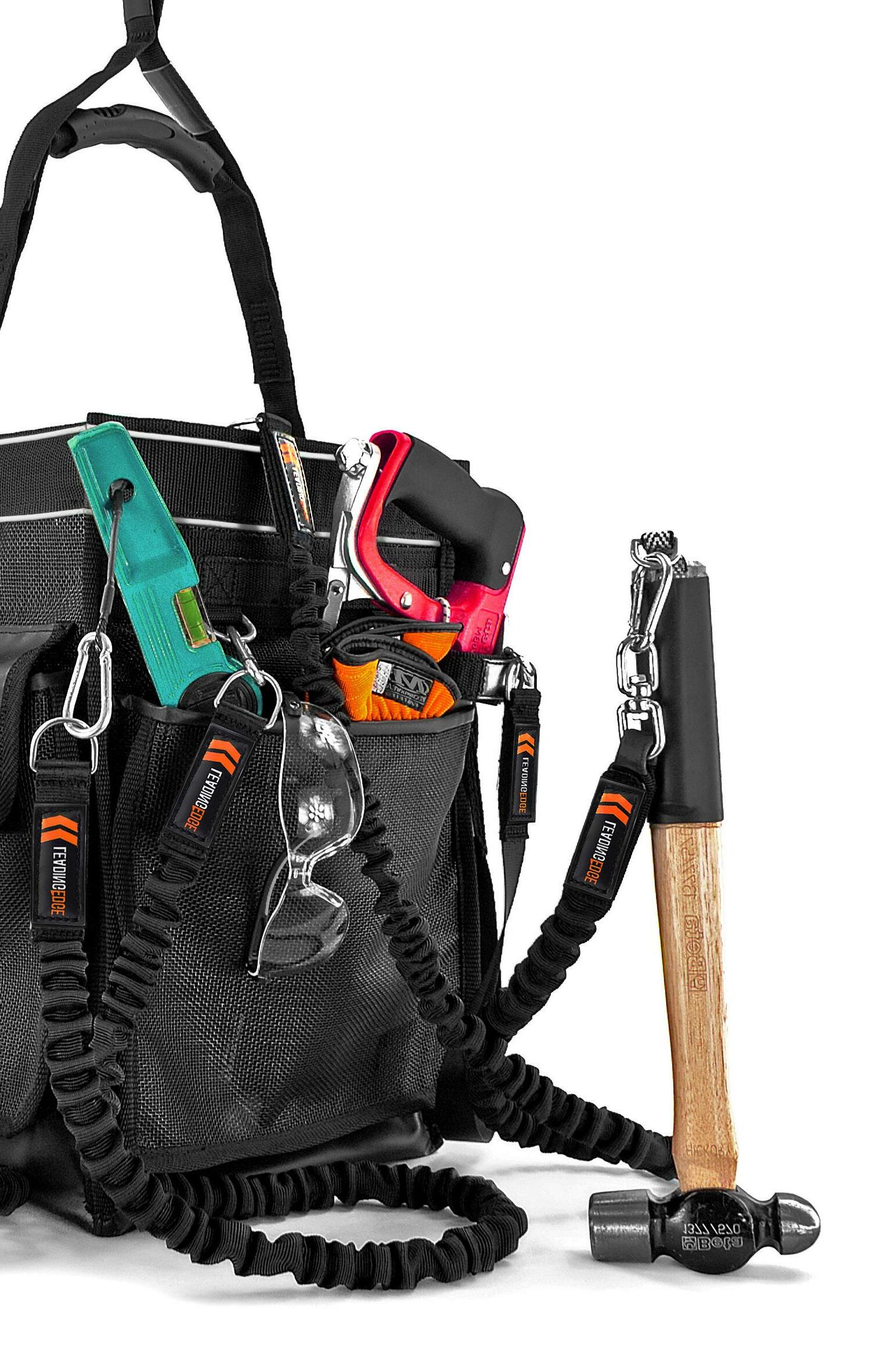
The world’s most advanced PPE tool bags for work at height.

You might not see it from looking at them, but these are no ordinary bags. Through 5 generations of field tests and customer interactions, they have evolved into the worlds most advanced range of professional PPE bags. Every design decision has been painstakingly scrutinised for extreme durability and performance. Here are some of the technologies we employ to give you maximum safety and service life.
Every single bag has been optimised with 2 to 6 layers of structural mesh and high-grade PVC, achieving the perfect balance of raw internal strength and surface resilience. PVC is a mildew resistant, UV stabilized protective layer, while the mesh forms a lightweight and breathable structure. It allows natural light, ventilation and vastly increases working load capacity. Combined, it is virtually impossible to puncture.

We don’t just stick D-rings on a bag. Structural tethering points are combined with high-strength webbing and sewn onto areas with internal reinforcements in the multi-layer fabrics. This means forces are dissipated through the structure of the bag. Each D-ring is repeatedly tested to achieve a 57x safety factor.

The weakest point of any bag is the seams. And 99% of all tool bags today have their seams in the weakest areas. We re-engineered the entire range to reduce and optimise every seam on every bag. Where possible the bags are now made from 1 panel of material that is folded into shape, completely removing any unnecessary seams.



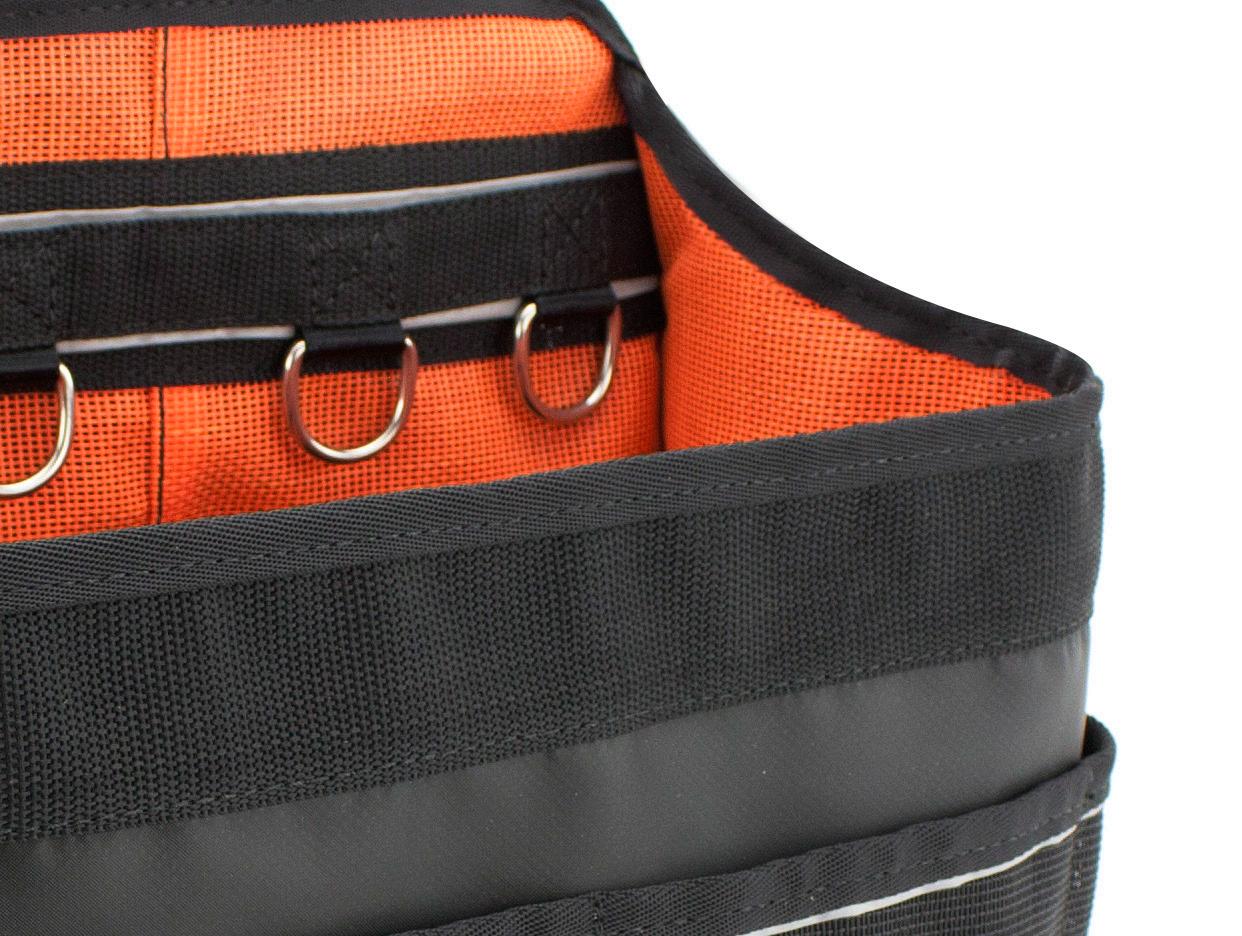
The multi-layer fabrics and binding are stitched with 3 to 5 rows of sewing that are properly spaced to prevent overlap and kept within 5mm of the edge. This creates incredibly strong joins and prevents them being pulled out under heavy loads.
Traditionally, bags are made with right angle joins. These can become a point of failure due to localised focused loading, especially where the front meets the back. To avoid this we now create curved joins. They transfer load more evenly over a greater area and support the front of the bags, giving them more durability for a hard service life.
Wherever we identify areas susceptible to point-loading, we add structural reinforcements. This commonly occurs on main openings. Placing structural webbing straps around the circumference helps transfer the load. Higher capacity bags go one step further with a continuous rigid loop, which prevents them from collapsing under heavy stress. Overall these reinforcements count towards a much longer service life.
Edges are where bags experience the most wear and tear. To protect them we cover every edge with an advanced tight-weave coated binding material, providing maximum resilience to the rigours of daily use.

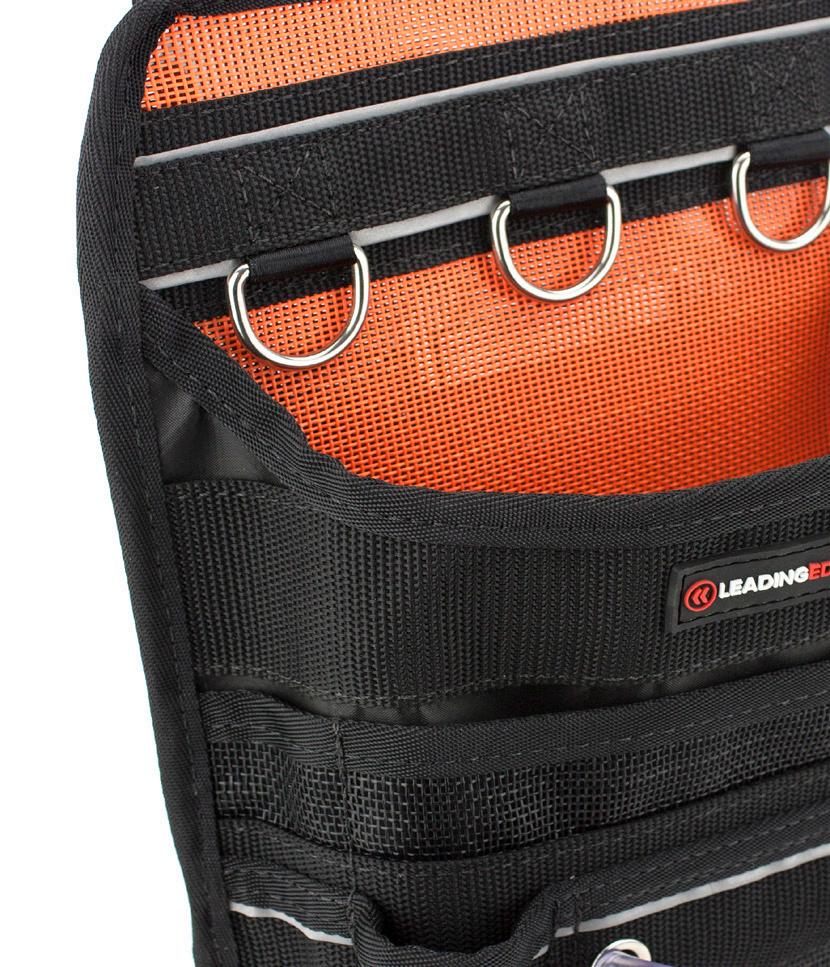
All bags come with a ‘Certificate of Conformity’ CE label, in-line with European Council Machine Directive 2016/42/EC subject to REGULATION (EU) 2016/425. Our labels are printed onto firbreless PVC and encased in a heat-shrink plastic pocket. This guarantees they will never degrade, keeping them readable beyond the products full service life.
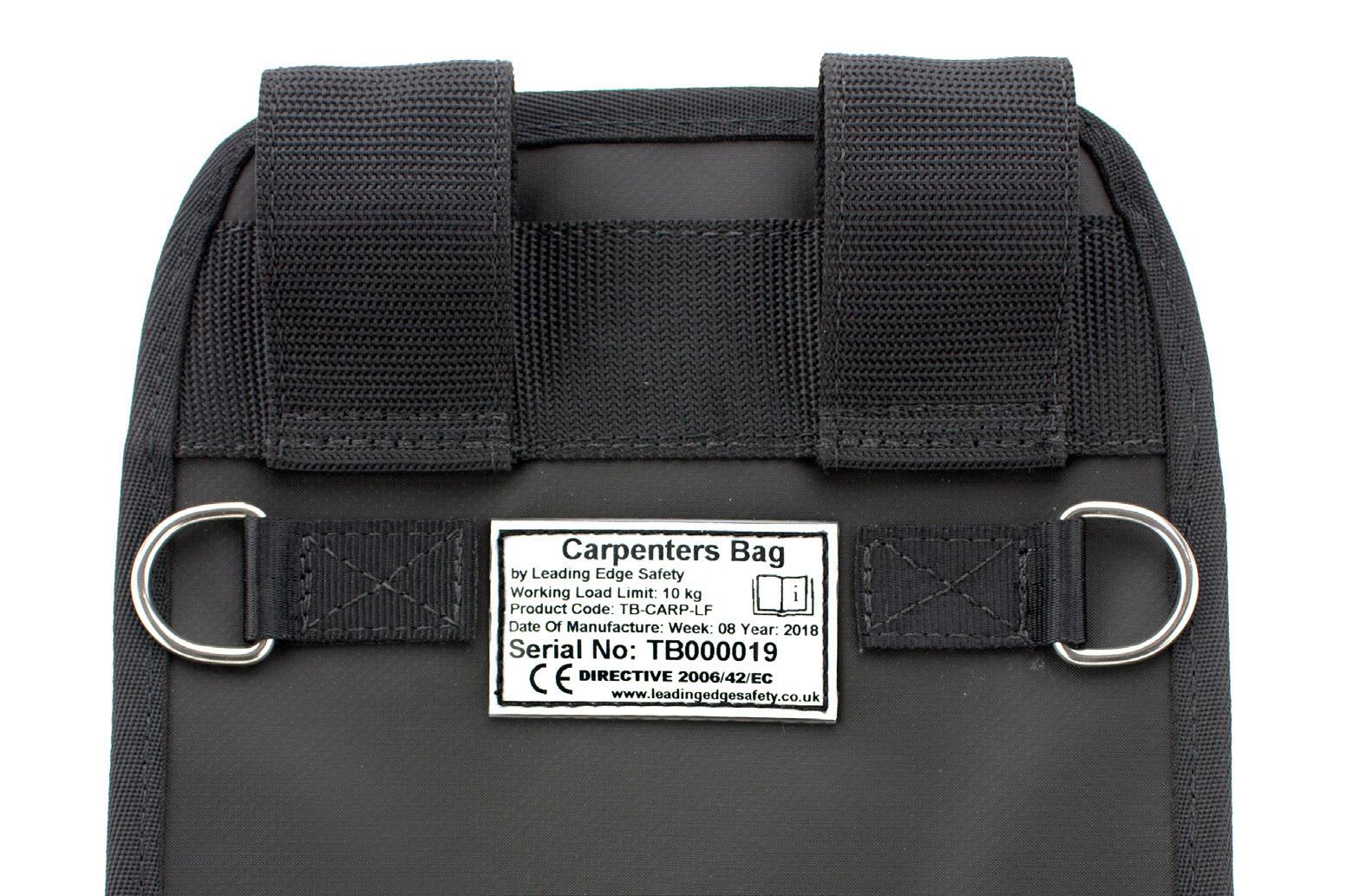
We’ve come a long way since we started developing PPE tool bags. We had no shoulders to stand on, nowhere to draw inspiration from. But from the very beginning we listened to our users needs and began closely monitoring how our first attempts performed in the field. With each generation we continue to make improvements as we learn and gain experience. The bags you see today are the culmination of years of customer feedback, testing and design refinement.


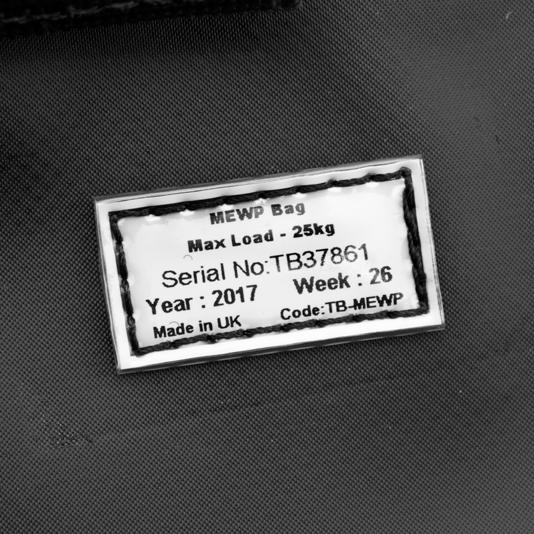
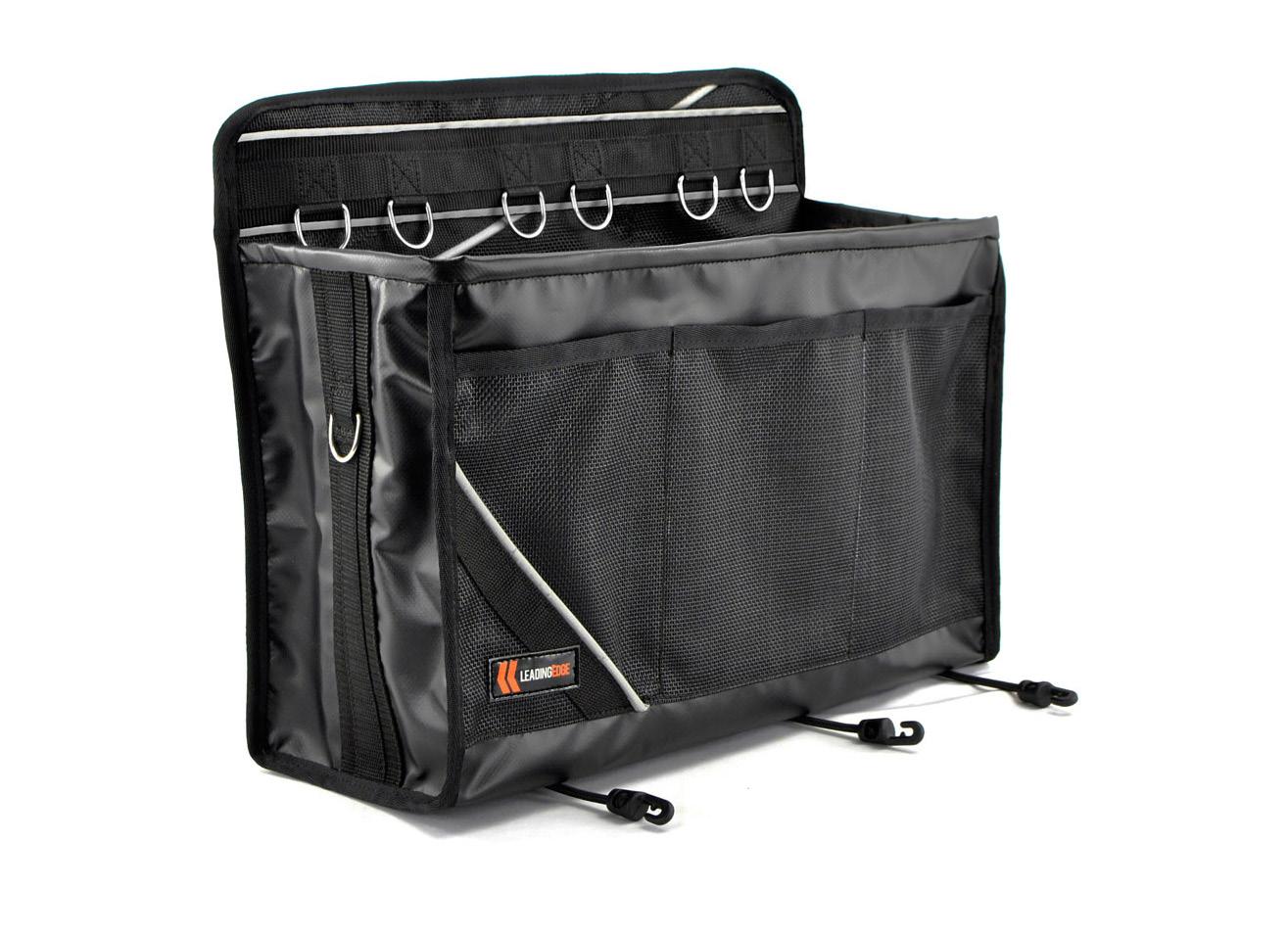
All bags are available in the following fixing options
PPE Tool Bags are available three fixing options: Loop Fixing, Linesman System or Triple Lock Velcro. Loop Fixing allows the bags to be threaded directly over a fixing point such as a tool belt. Where threading is not possible (as is often the case with captive belts or harness straps) the Linesman System or TripleLock Velcro Fixing allow secure wrapping over the fixing point.

When using tool belts the Belt Loop fixing configuration is the ideal option. Simply thread your belt through the structurally secure loops and gain a secure anchor point between your belt and your tool bag or holster. Each belt loop is individually rated to the meet working load requirements for storage and active usage at height.

The Linesman’s System is designed for people who need to attach their bags to a belted full body harness. The straps are specifically designed to work in conjunction with work positioning side D-rings.
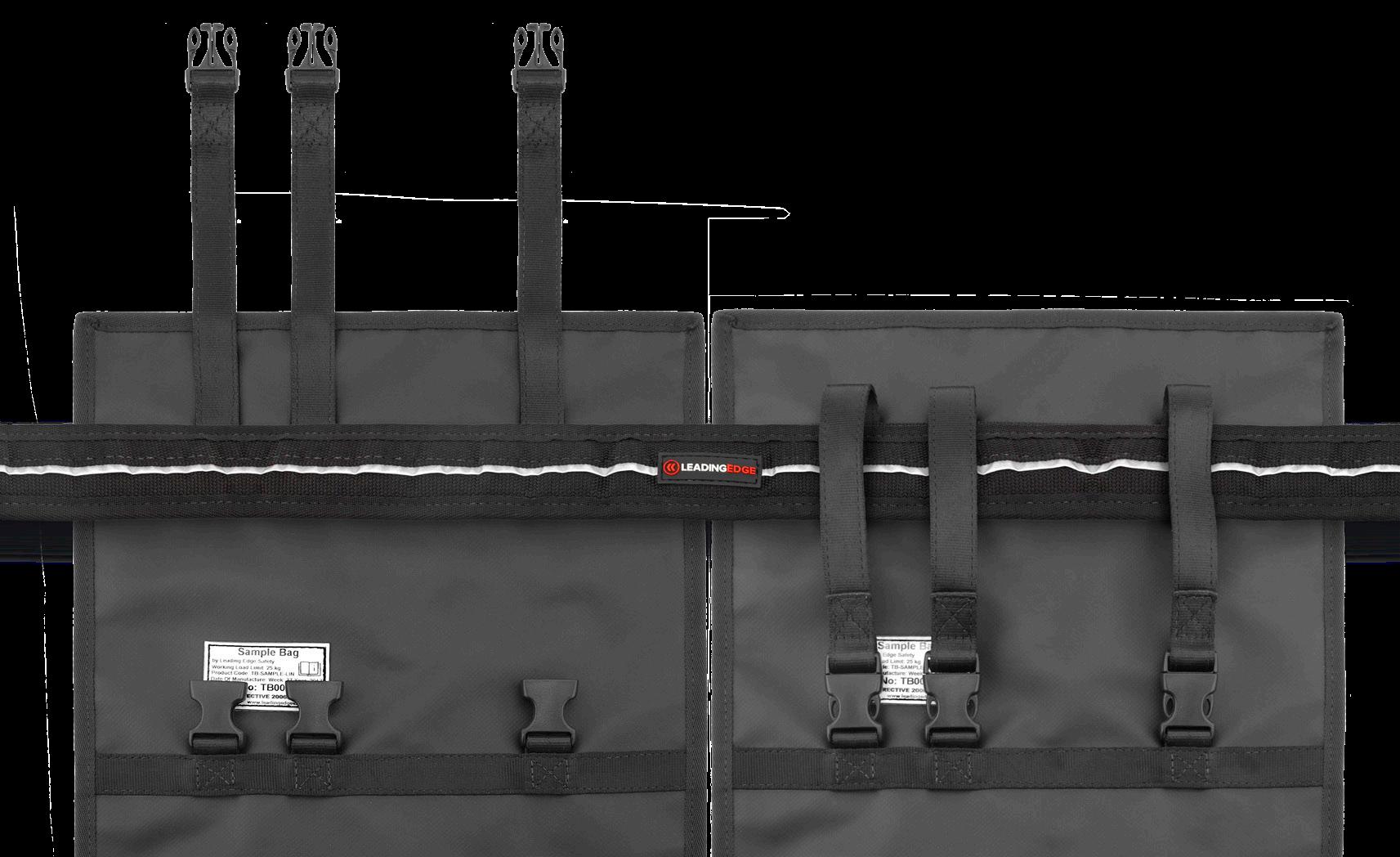
Triple-Lock lets you safely and easily fix onto belts, harness straps, handrails or tubing. Each lock has three structurally rated Velcro straps which overlap in opposing directions, massively increasing their tensile strength.

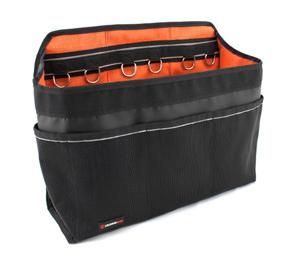
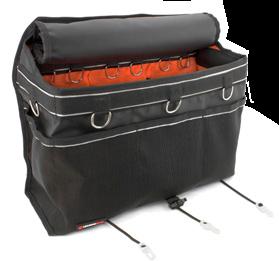
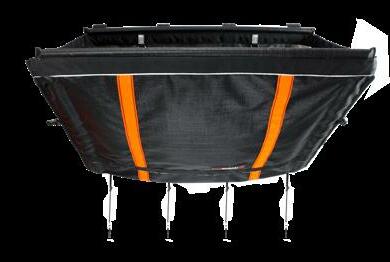

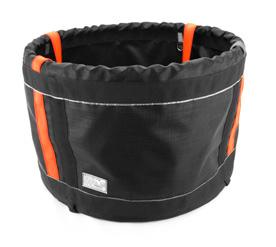






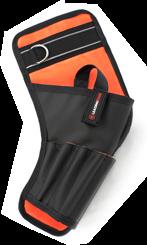
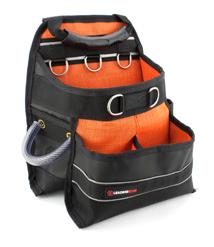





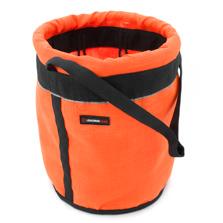


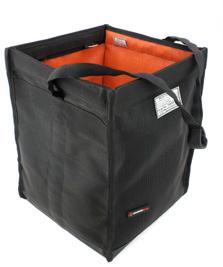


The Single Tool Holster is a simple option for carrying an individual long handled tool at height. It is deep enough to support the tools load from the bottom while leaving enough exposed at the top for quick pick-up.

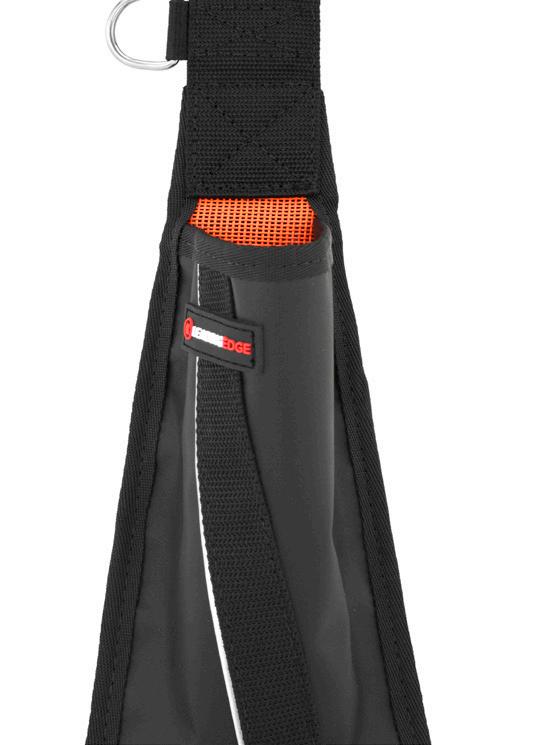
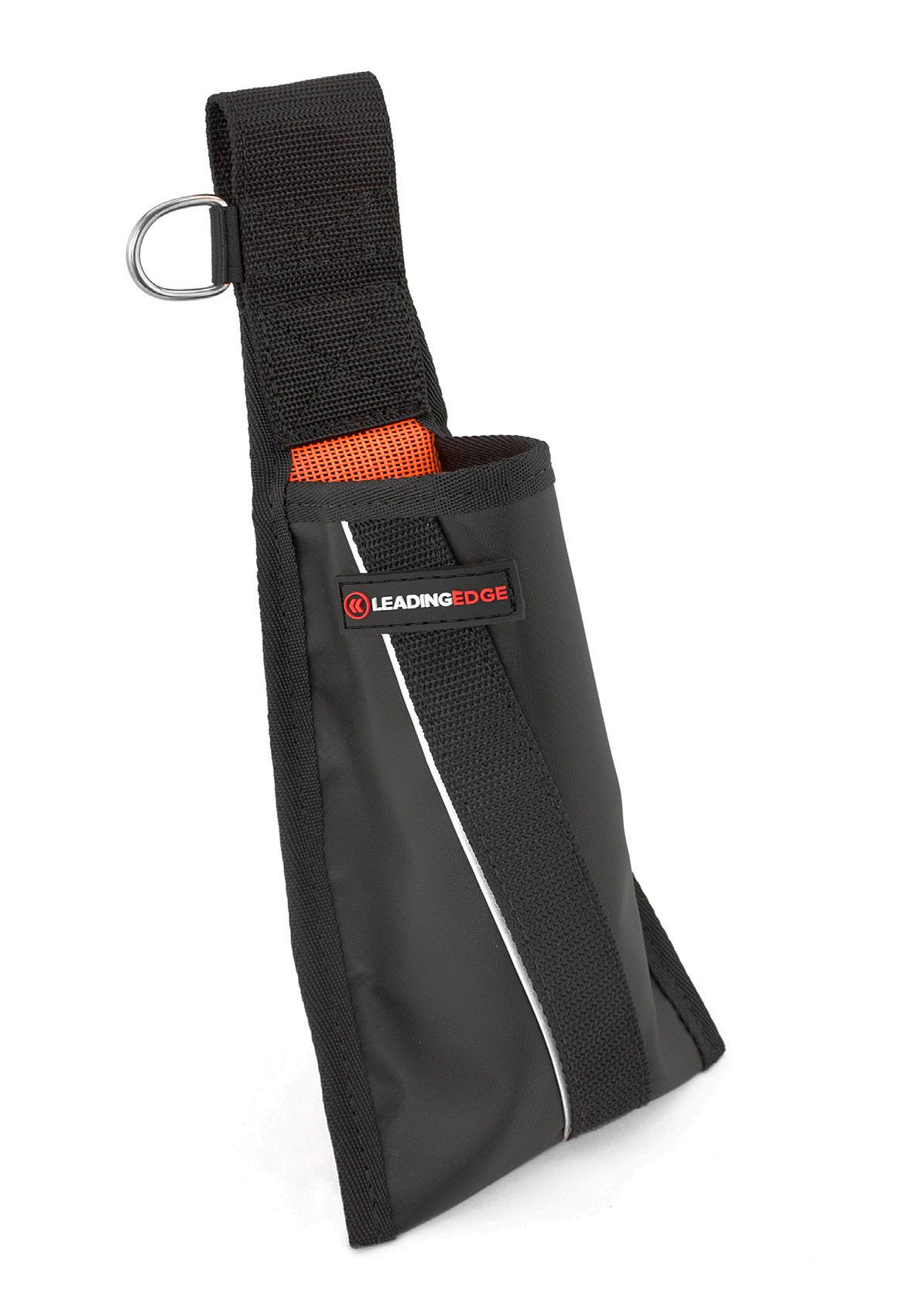
Where an ordinary single tool holster might split at the bottom after heavy use, this seamless design makes it impossible for the holster to fail from localised point-loading.
Loop Fastening TH-ST-LF
Velcro Fastening TH-ST-VF


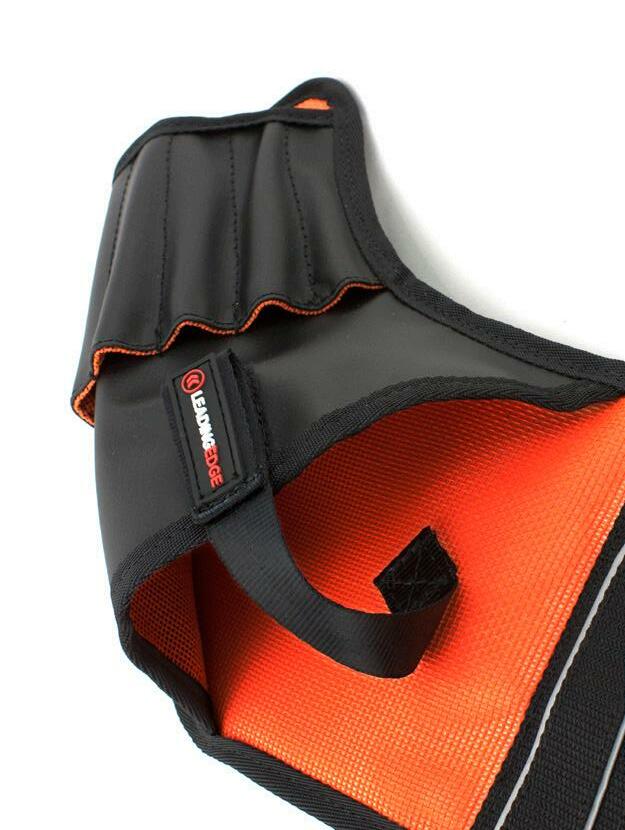
The Bolt Bag is a convenient way to carry small items and tools securely at height. It can be hung from a harness or belt and features a drawstring closure to protect contents when moving or climbing. The bags height and tapered elliptical rim are optimised to reduce spillage. A large opening makes it easy for gloved hands to access the contents. Made from multiple layers of industrial-grade PVC and structural mesh.
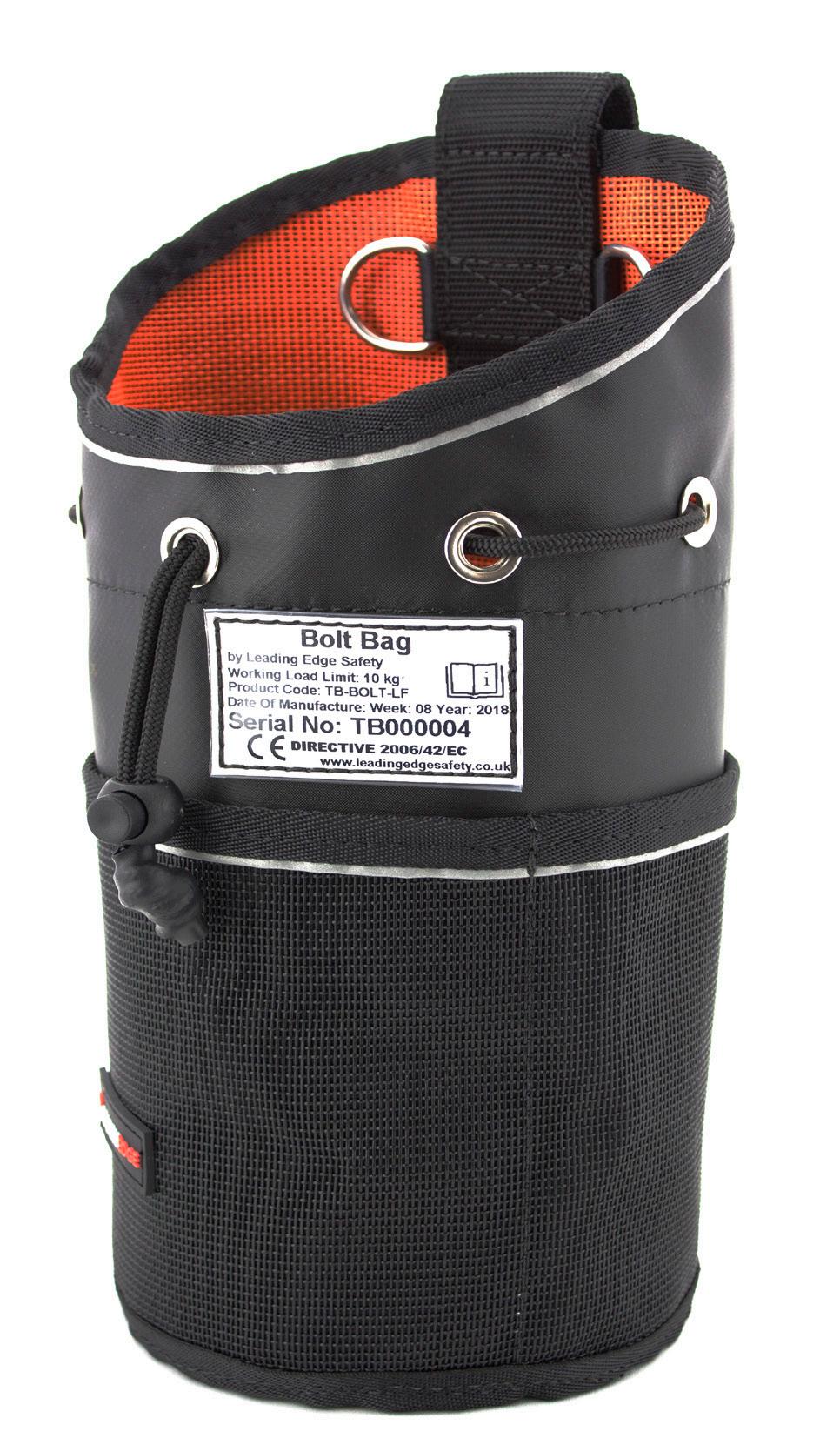
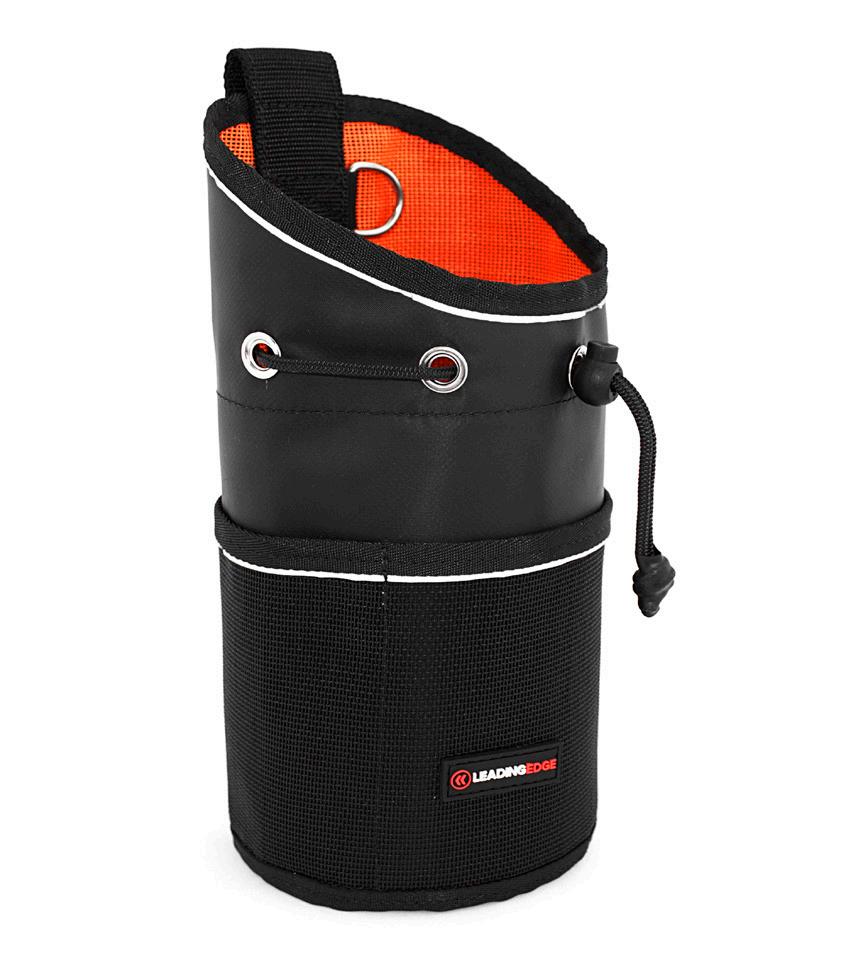
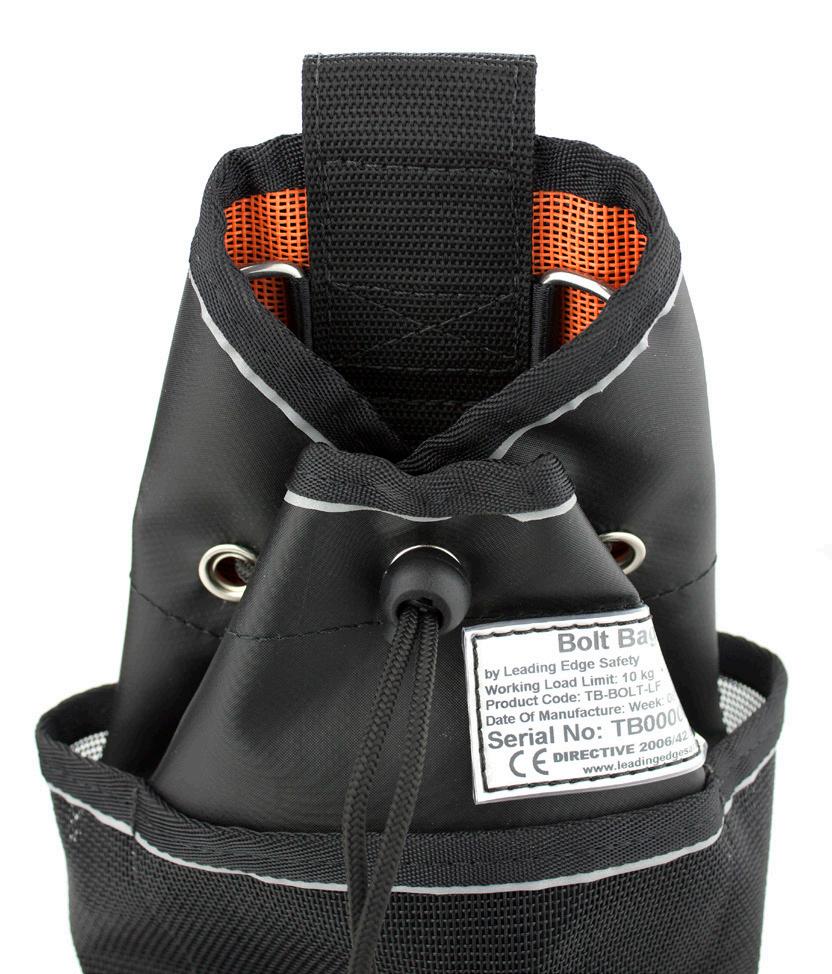

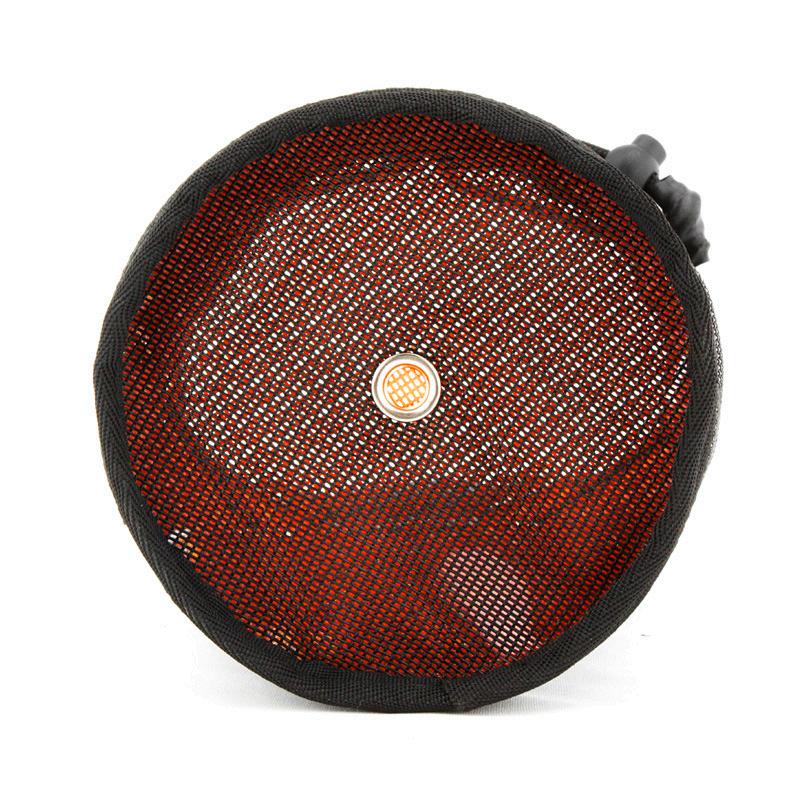




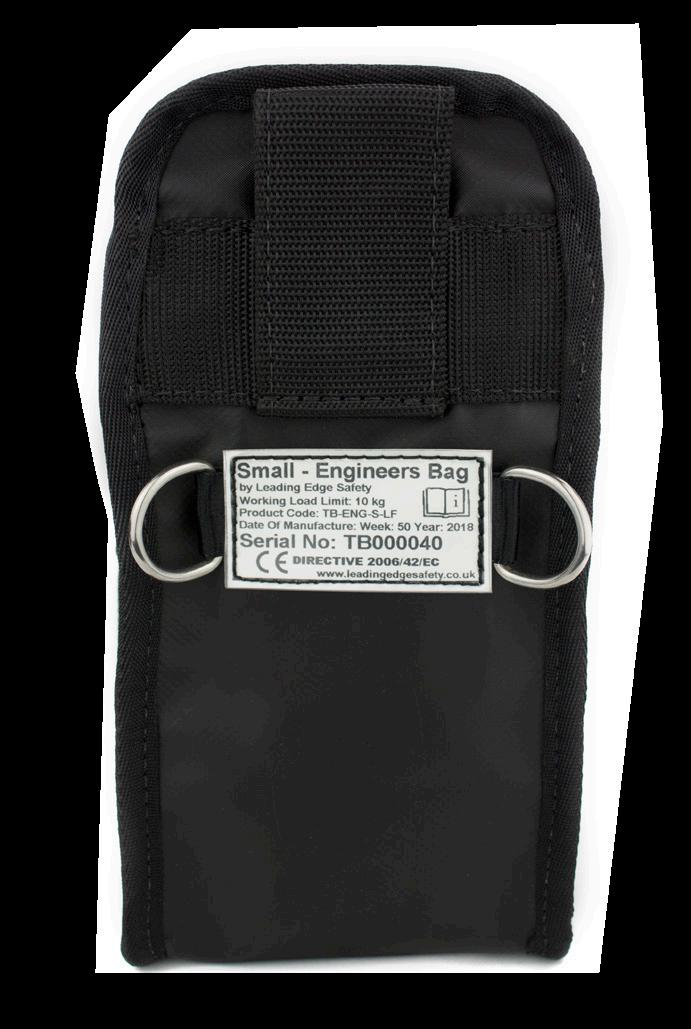
The Medium Engineers Bag is double the size of the small bag, giving you much more space to carry a wider variety of tools. It features an additional strengthening layer in the base of the bag and introduces an internal divider. This increases load capacity while helping separate your contents. Overall it is an ideal size and shape to wear on your harness or tool belt.
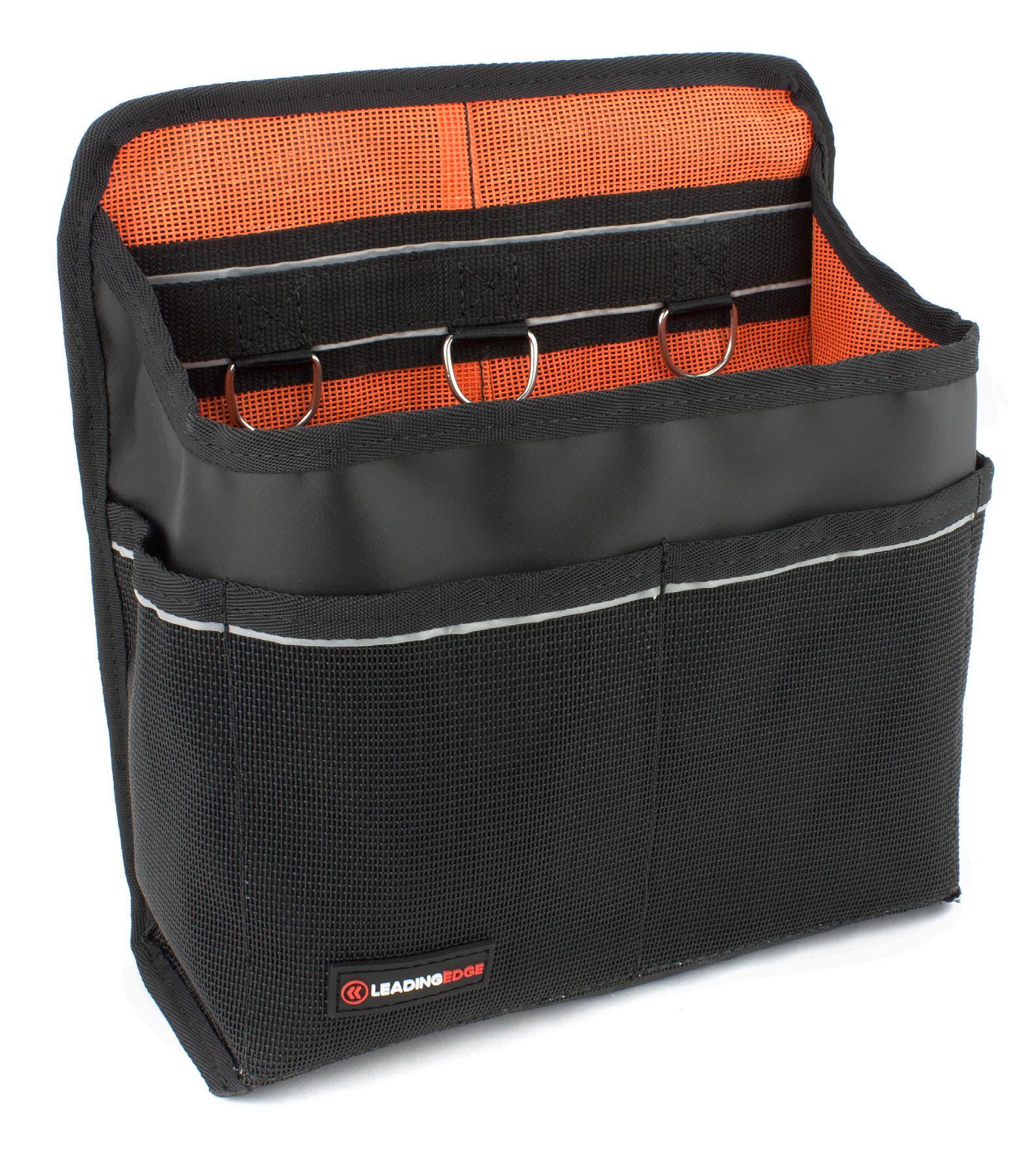
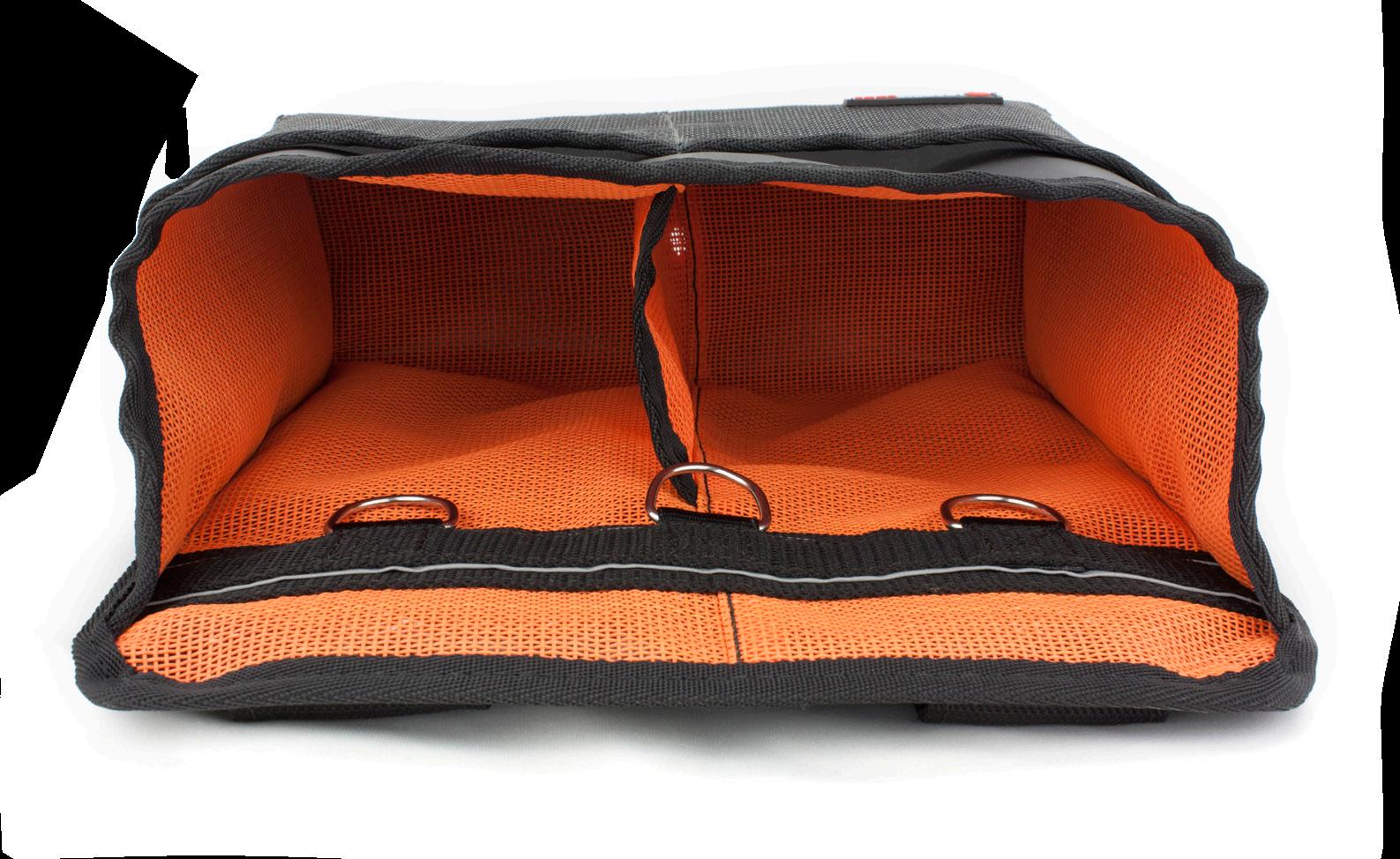
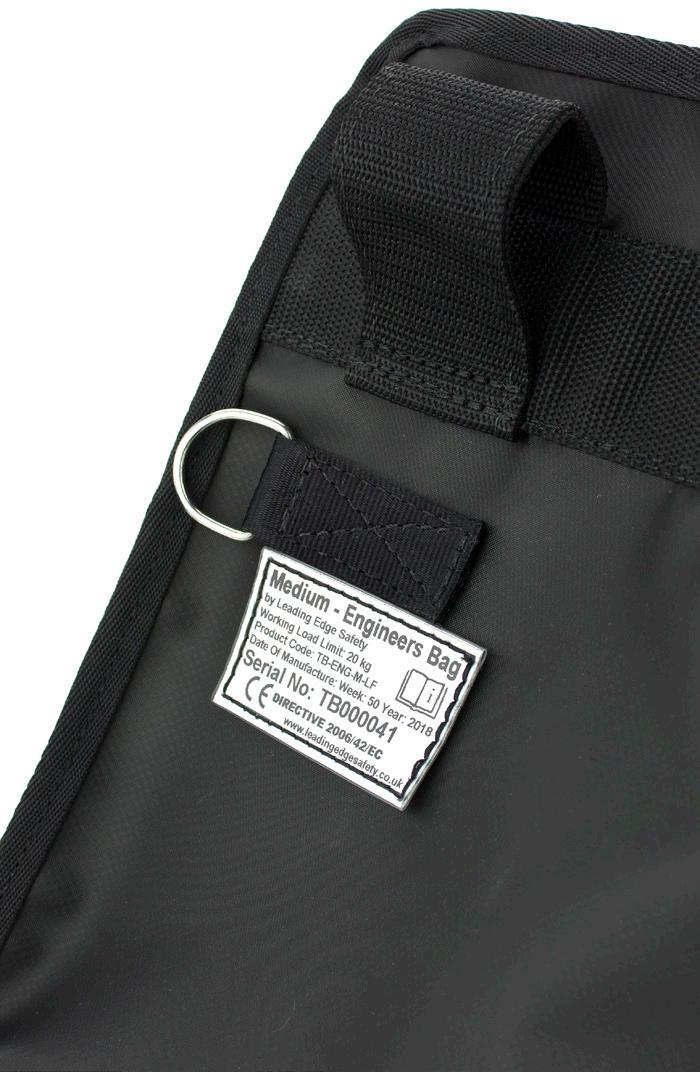





The ideal choice for carpenters, electricians and general maintenance. This bag features a wide tapered large main compartment that allows quick and easy access to small items such as nails and bolts. The reinforced external loop is perfect for holstering larger tools like hammers, while two adjacent frogs accommodate screw drivers and podgers etc. There is also a small front pocket for additional items.


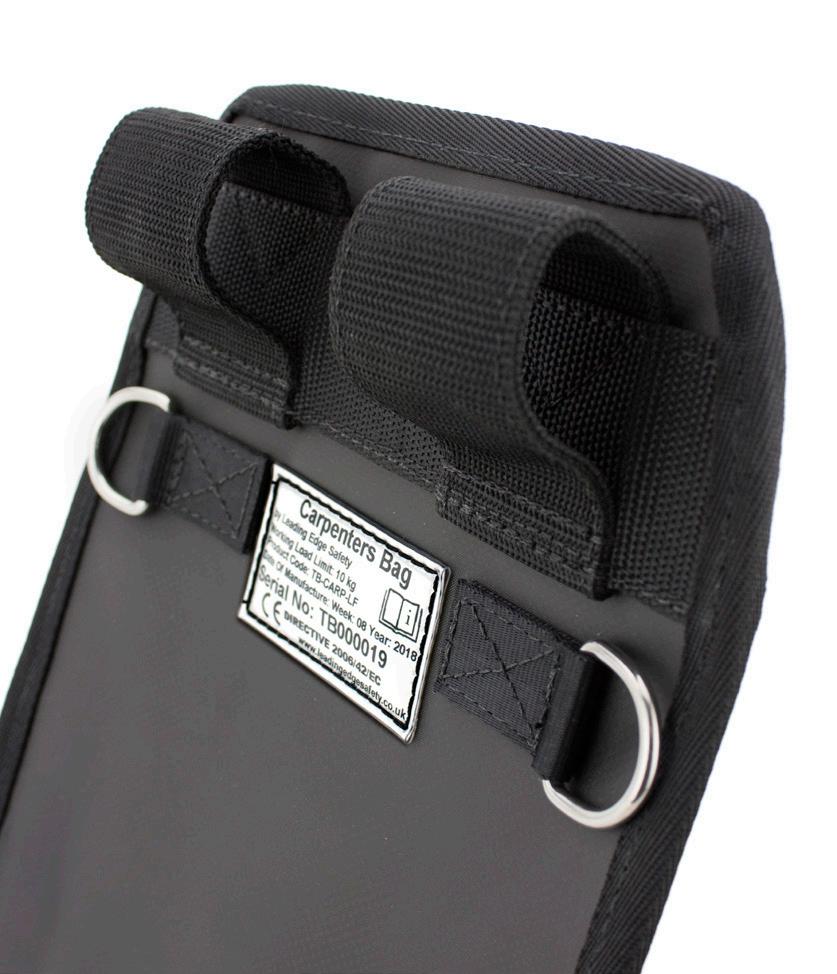

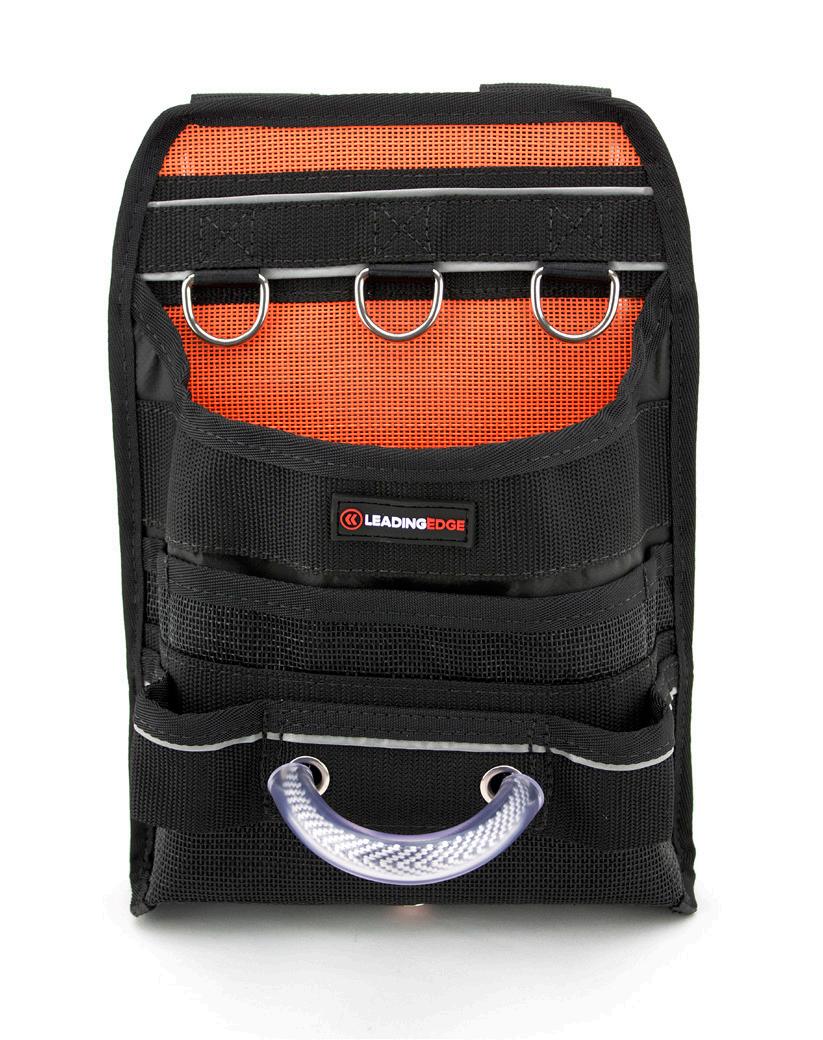


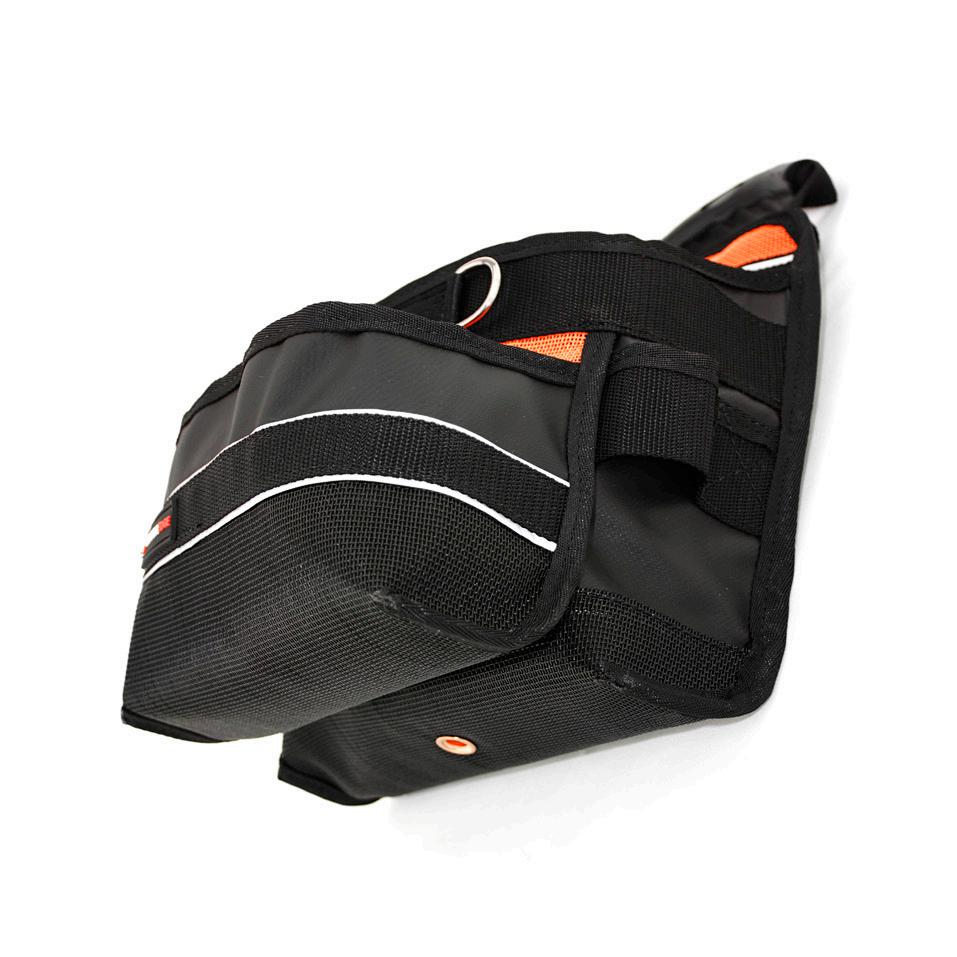
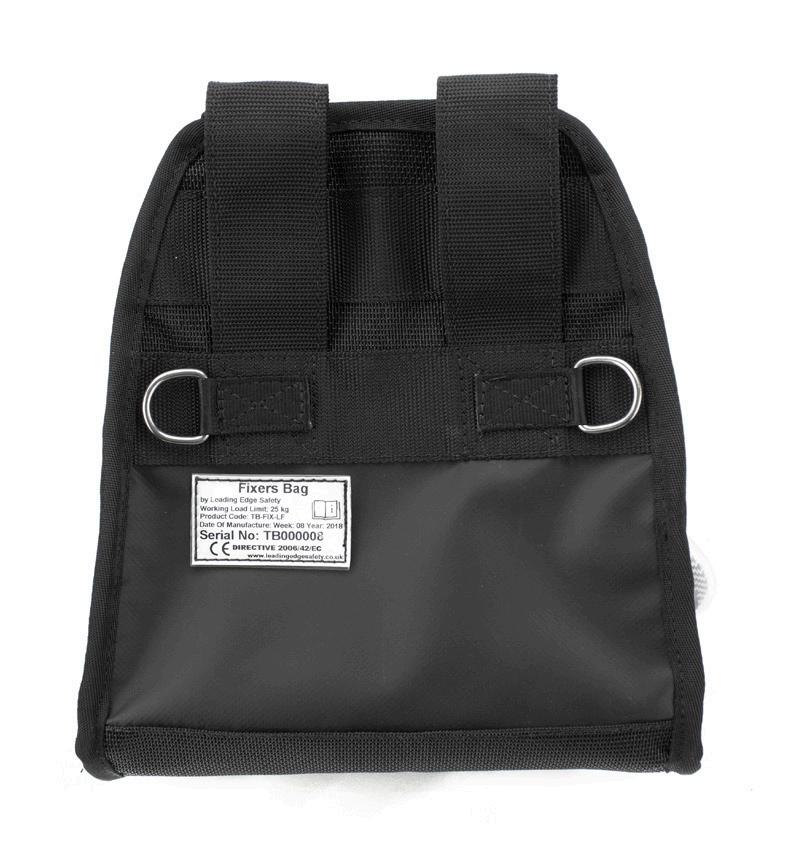

The Universal Bag has a satchel style design, making it the perfect general purpose bag for safely carrying tools and materials at height. It gives you optimal storage space and ease of access while remaining comfortable to holster onto your harness or belt. It also features a removable shoulder strap for easy transportation to and from your work area. On top of this, a concealed lid system protects contents and rolls up neatly in such a way that it never obstructs the main pocket.

» Large external pocket
» Removable shoulder strap
» Lid closure system
» Transparent base
» 5x D-Ring Tethering points

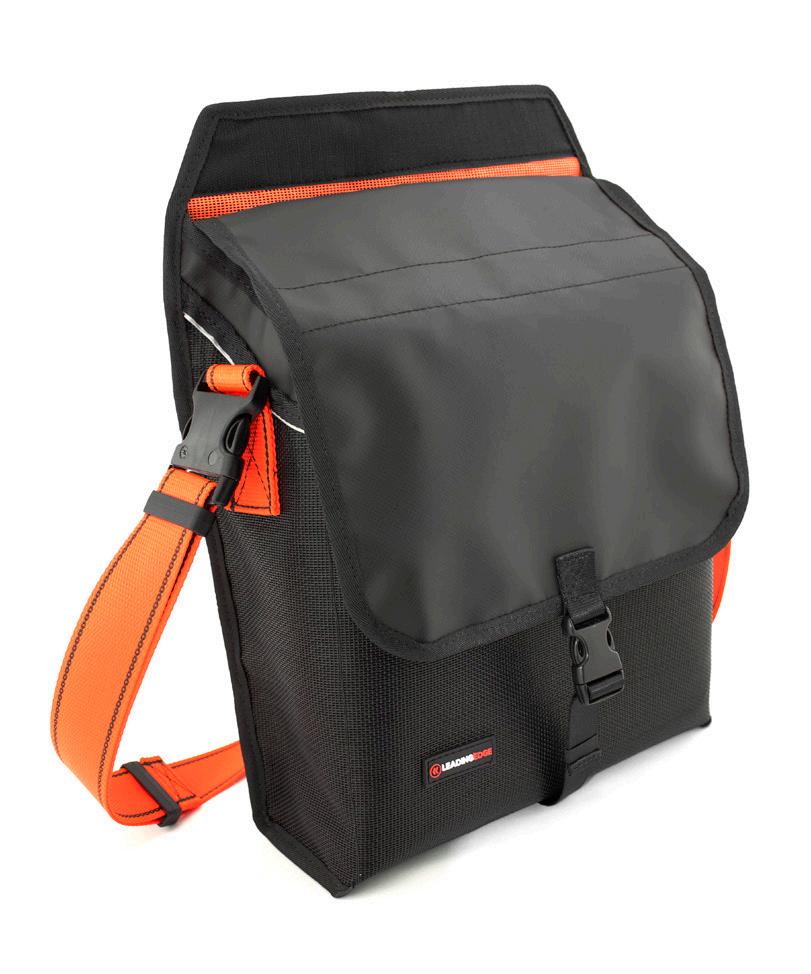

The Technicians Bag was originally developed to meet the needs of overhead lines engineers. Its premium design is robust enough to endure years of daily use and features fully securing pockets and lid. This lets you manoeuvre freely at height without fear of loss. The depth and dimensions of the main pocket keeps the opening from collapsing and the Velcro lids fold neatly back on themselves to reduce obstruction. » 2x Large external pocket »


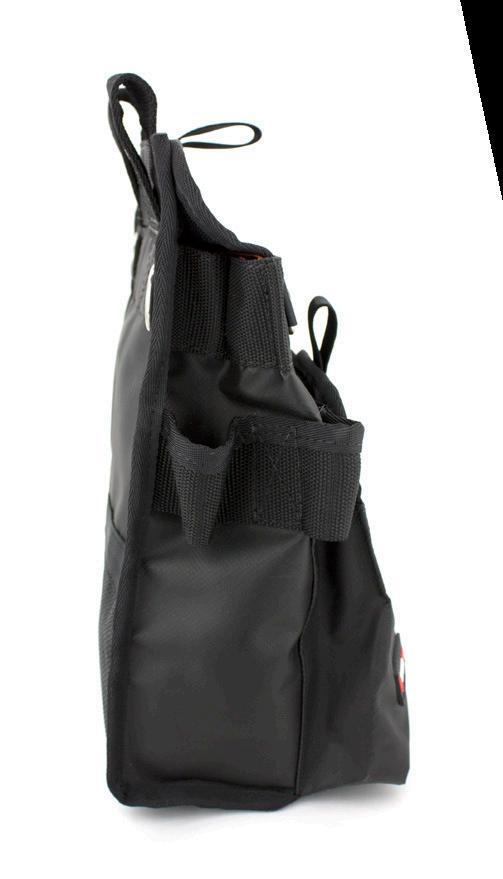

The Industrial Climbers bag is the natural evolution of the Technicians Bag, providing a more advanced roll-back lid closure system. It folds backwards onto the outside of the bag, completely eliminating any access and view obstruction. All sides of the opening seal securely and maintain a boxed shape, which, unlike a wedge shaped closure, does not reduce the bags capacity when the lid is closed. »

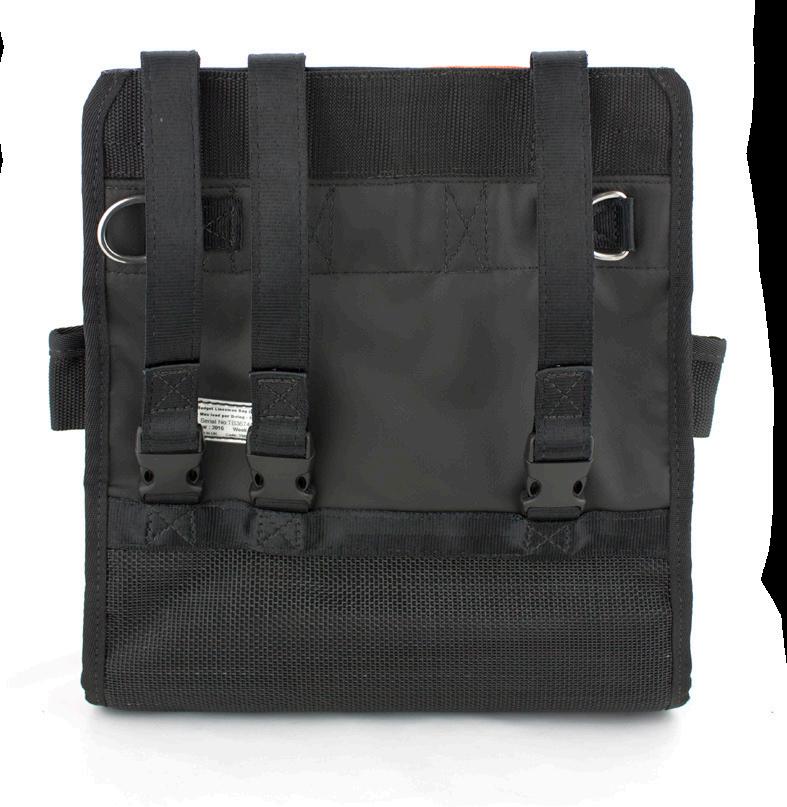

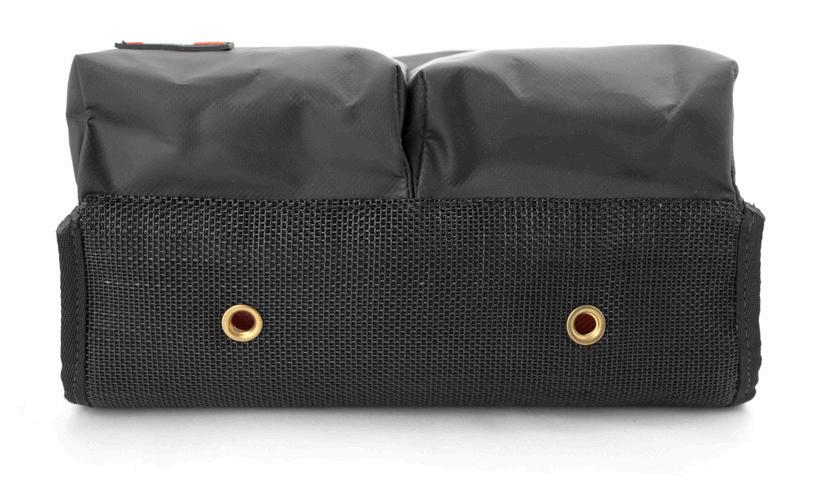


Volume: 37L / Height: 45cm / Width: 38cm / Depth: 17cm / Weight: 1.6kg
The Aerial Rucksack packs a lot of technology into a simple design. It allows you to tether your tools to the internal tethering points, climb to your work area and secure the bag to a fixing point/structure via the large external structural D-ring. The clam style opening then gives you a maximum access, allowing you to safely use your tethered tools directly from the bag. It is heavily reinforced for intense daily usage in commercial applications and features an advanced AirMat back panel made from a silver coated anti-bacterial marine cushioning material that holds shape, improves air flow and breathability and greatly reduces moisture built up.
» Breathable AirMat back panel
» Padded shoulder straps
» Top carry handle
» External anchorage D-ring
» Internal and external pockets
» Clam style opening
» 6x D-Ring Tethering points



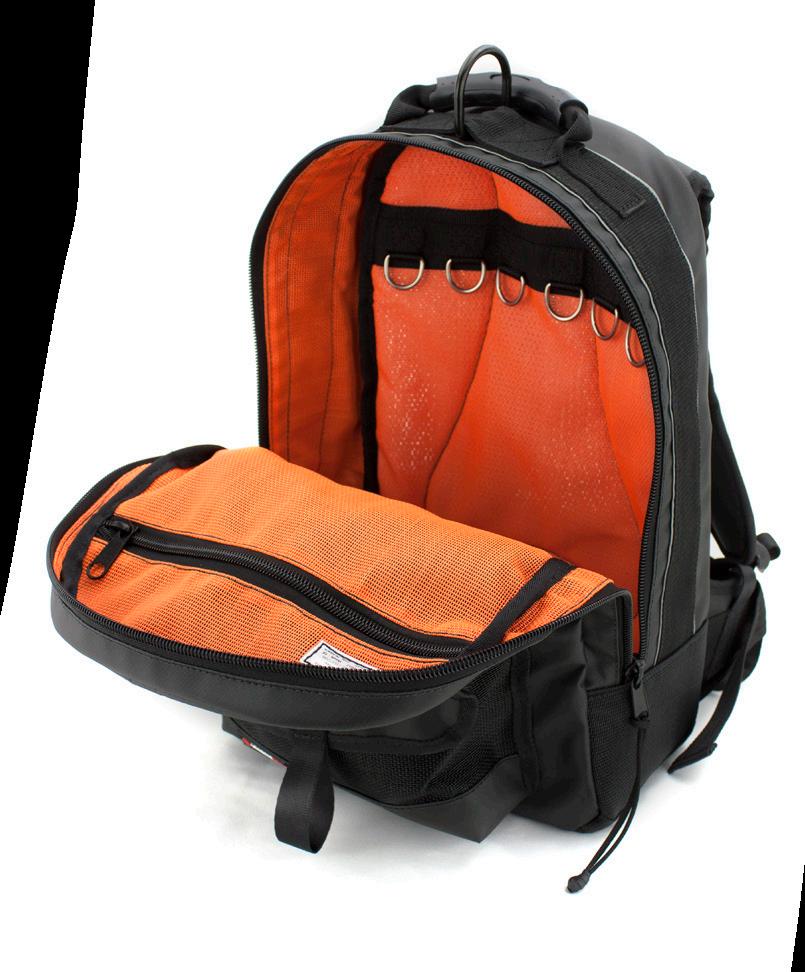
Favoured by rope access technicians, the Barrel Bag is essentially a scaled up bolt bag. It has huge capacity to carry more materials and tethered tools on longer duration suspension work. A drawstring closure prevents objects falling out and protects contents in bad weather conditions. When not in use the closure folds easily over the outside of the bag so that it does not obstruct access to the opening.

» Drawstring closure
» 5x D-Ring Tethering points


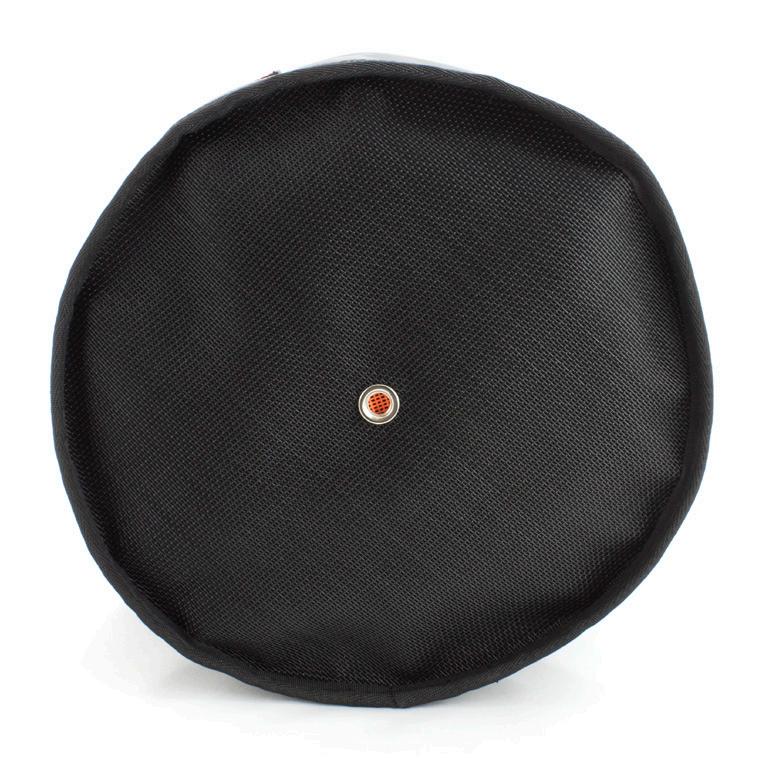
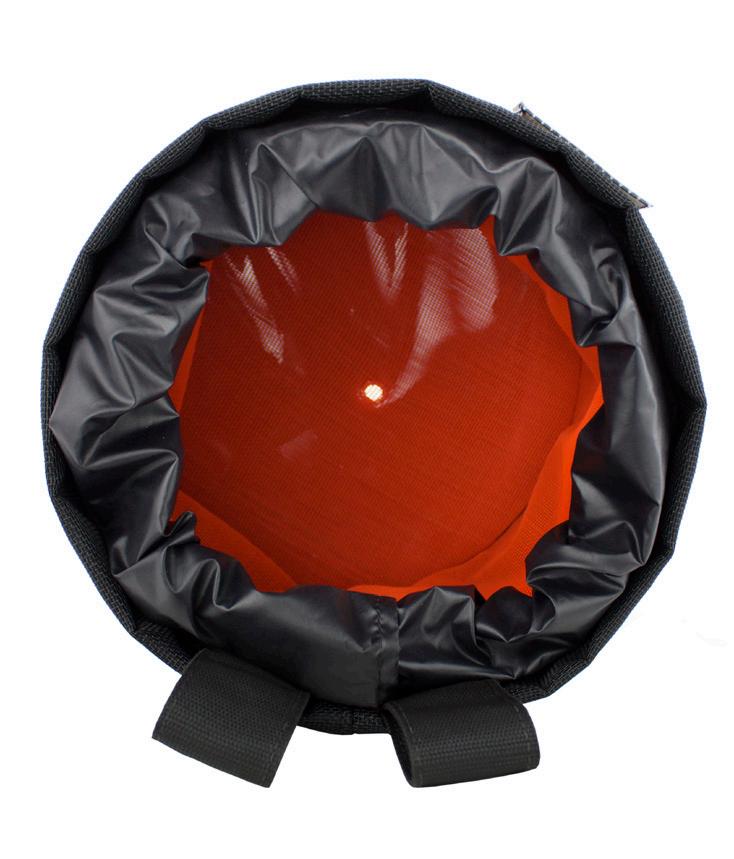
Pigs are a fantastic option for anyone who takes tools and materials at height. The cylindrical shape has a generous amount of storage and makes it easier to hoist or haul up a vertical structure. It can then be suspended, giving you a secure way to access and use the contents. A reinforced rim also prevents collapse, allowing continuous pain-free movement of items in and out of the bag. An optional drawstring closure system protects your contents from bad weather and spillage.
» Drawstring closure
» Lifting/Carry strap
» 8x D-Ring Tethering points





The Big Pig gives you a greater capacity to take more tools and materials at height. It is useful for situations where you have lots of items, as it is more convenient to put everything in one bucket and hoist it into a suitable elevated work position. You can then work directly from the bucket. An optional drawstring closure system protects your contents from bad weather and spillage.

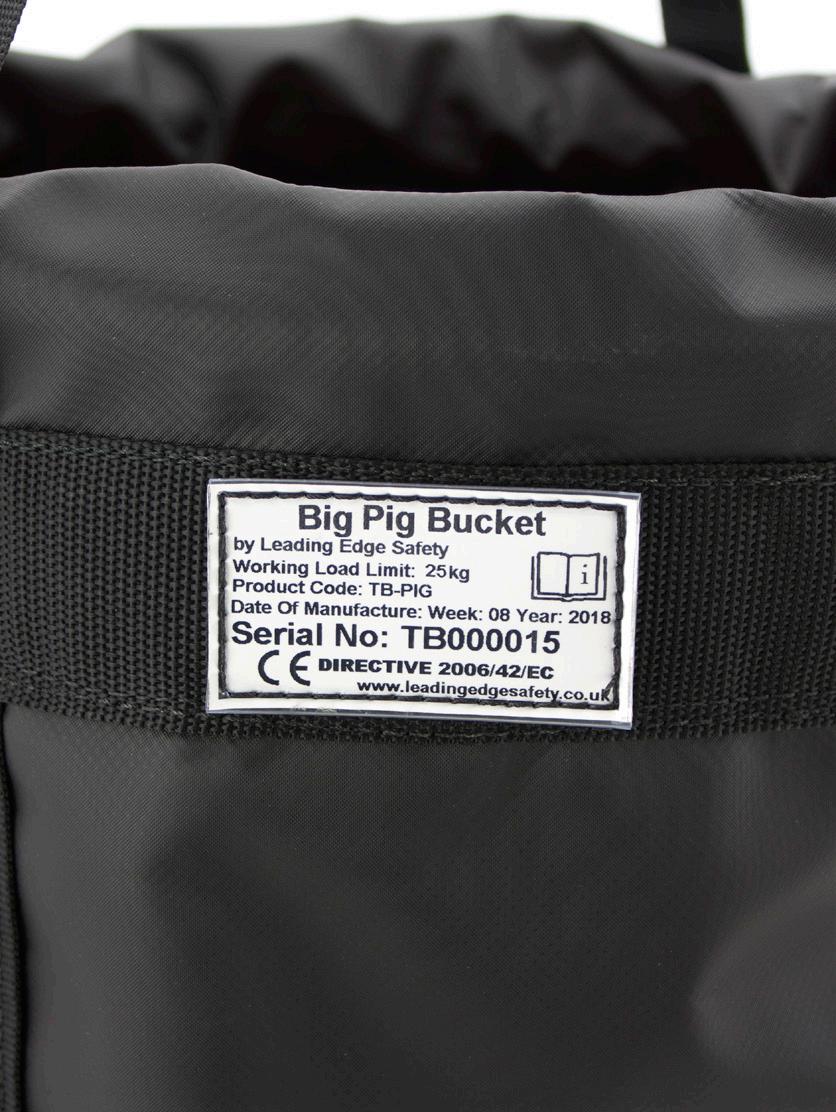


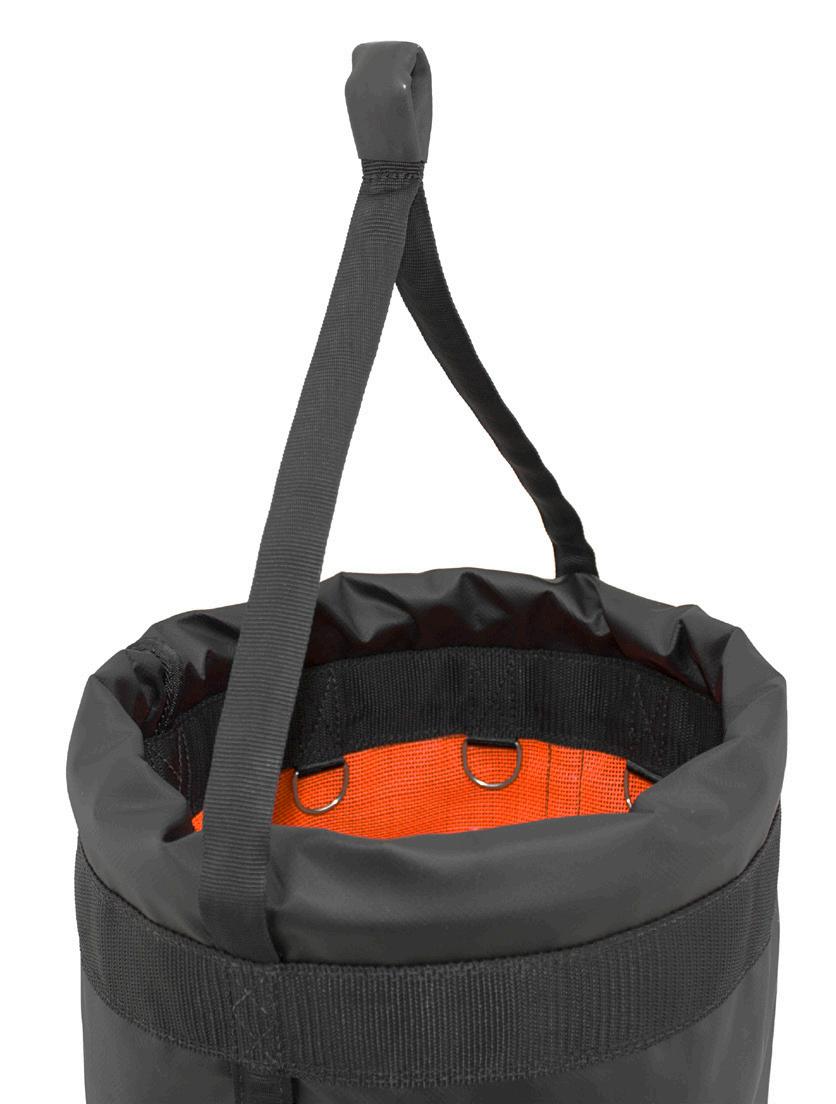
Volume:
The Pro Pig is an advanced dual-purpose lifting bucket. Not only does the cylindrical design make it perfect for hauling items to your place of work, the shoulder strap and multiple external pockets with dedicated tethering points make it a great personal tool tethering bag too. It has a reinforced rim to prevent collapse and provides greater internal capacity for a combination of both tools and materials. An optional drawstring closure system protects your contents from bad weather and spillage.
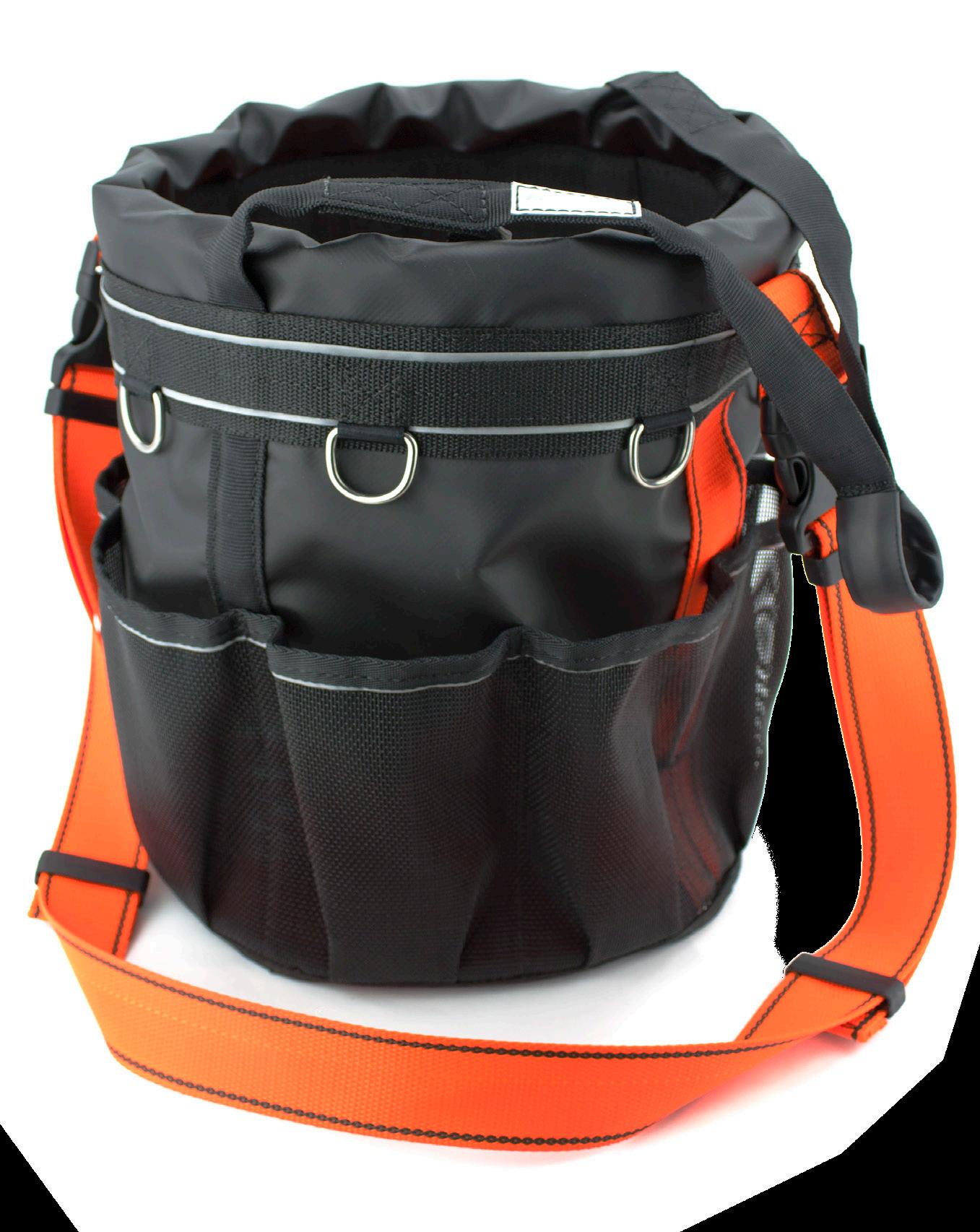
» Lifting/Carry strap
» Multiple external pockets
» Detachable shoulder strap
» 12x D-Ring Tethering points
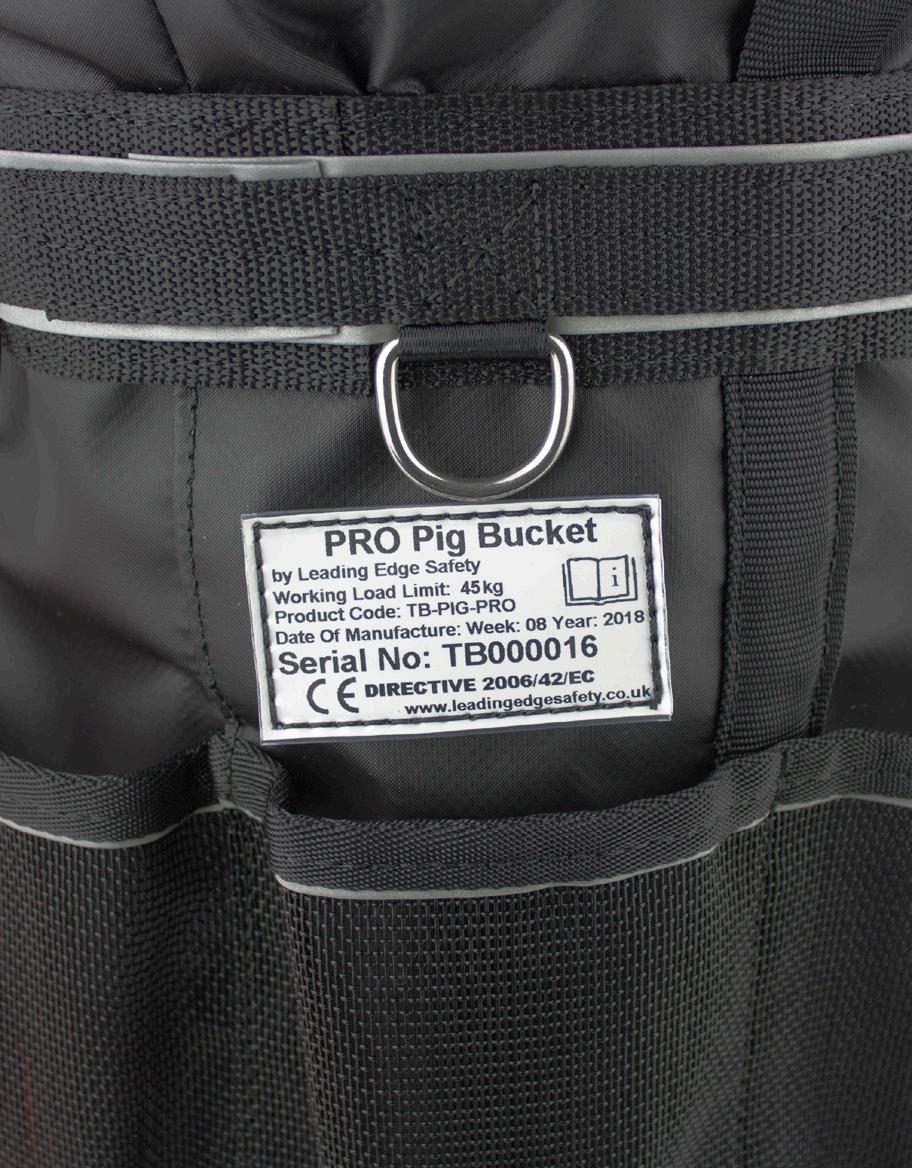

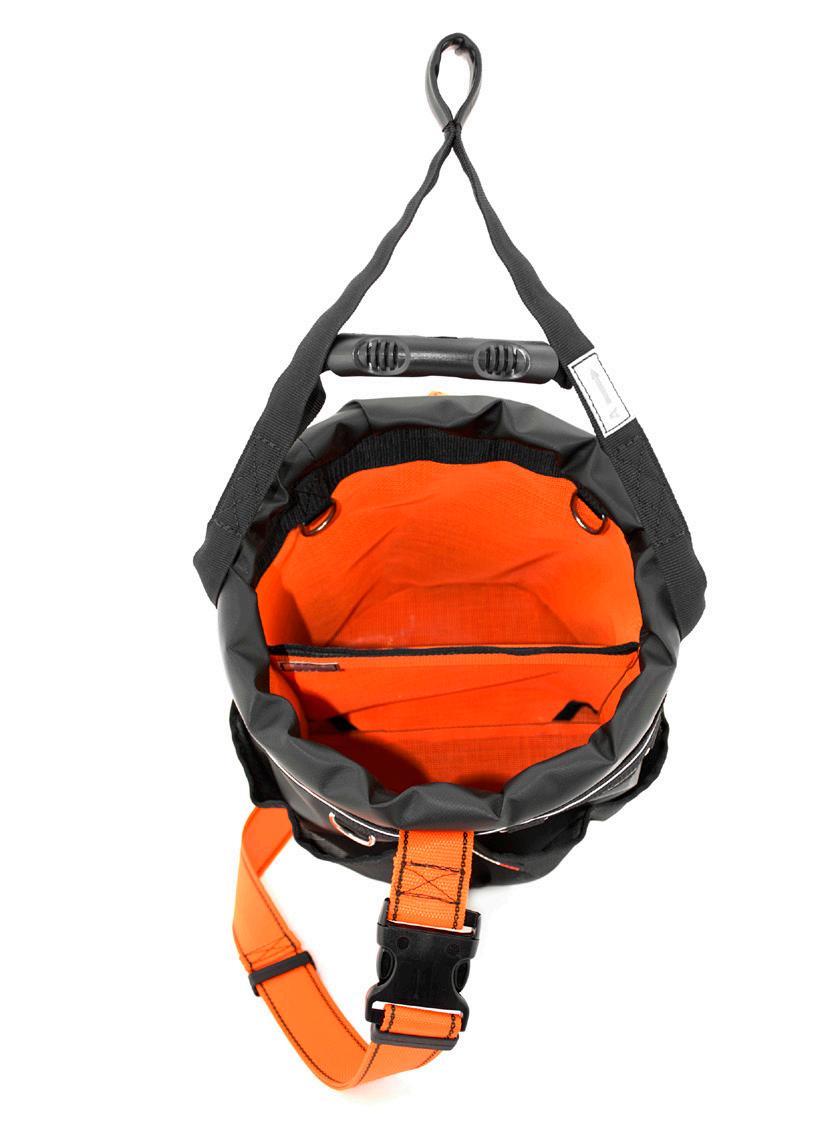
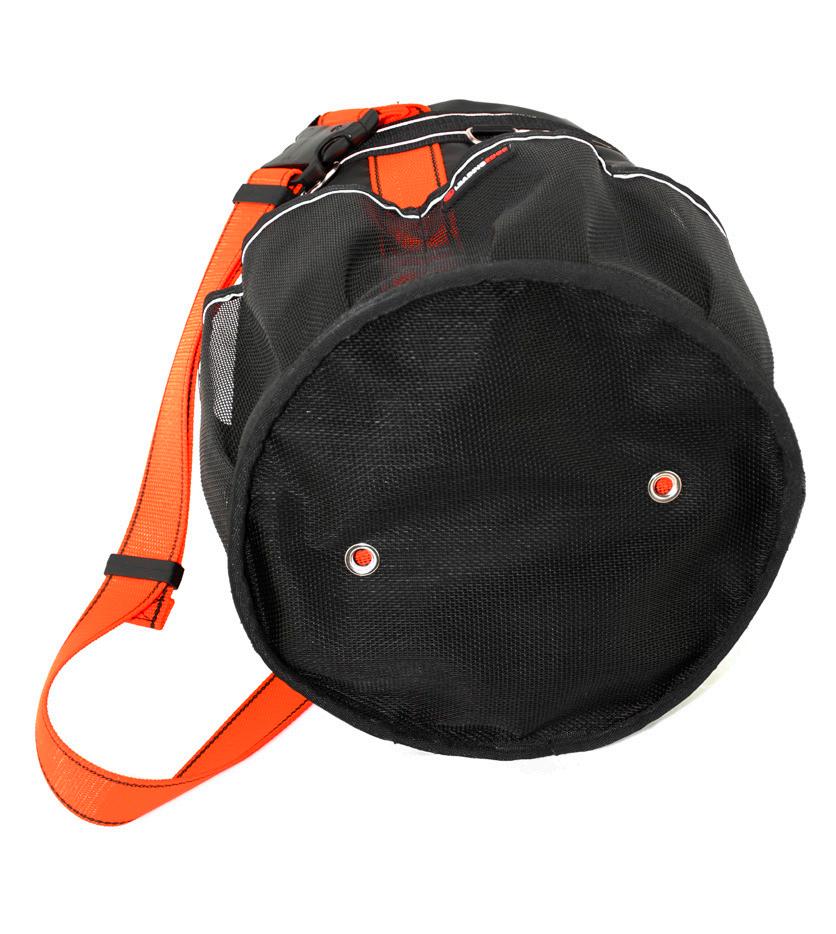
Volume: 19L / Height: 36cm / Diameter: Ø 26cm / Weight: 725g

The LV Pig is a tool and materials bucket specially developed for live voltage applications. It is intrinsically safe, meaning there are no metal components. Instead, it is made from incredibly robust multi-layer mesh with pro-static multi-braid rope tethering points that are encapsulated in synthetic sleeving. The additional benefits are increased internal visibility, better drainage and a 25% reduction in overall weight when compared to a standard Pig Bucket. An optional drawstring closure system protects your contents from bad weather and spillage. » Intrinsically safe » High visibility
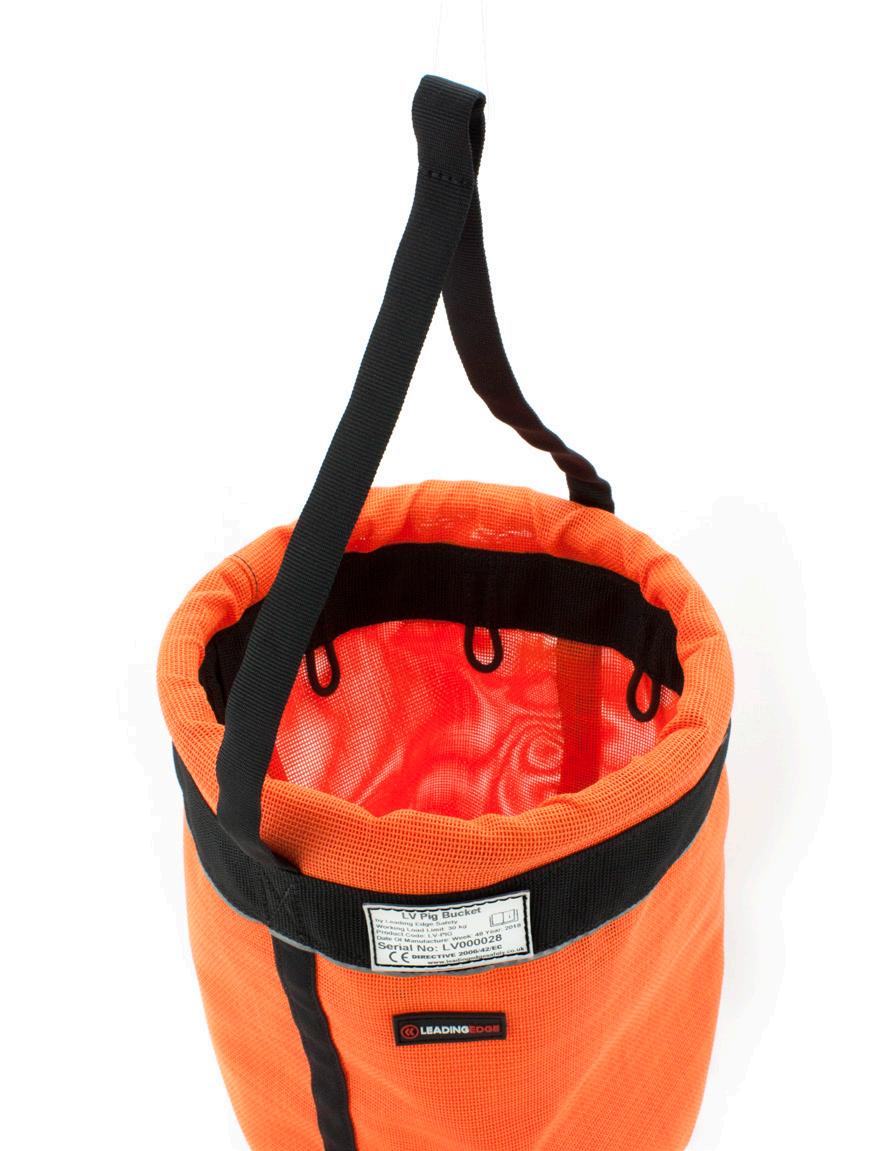


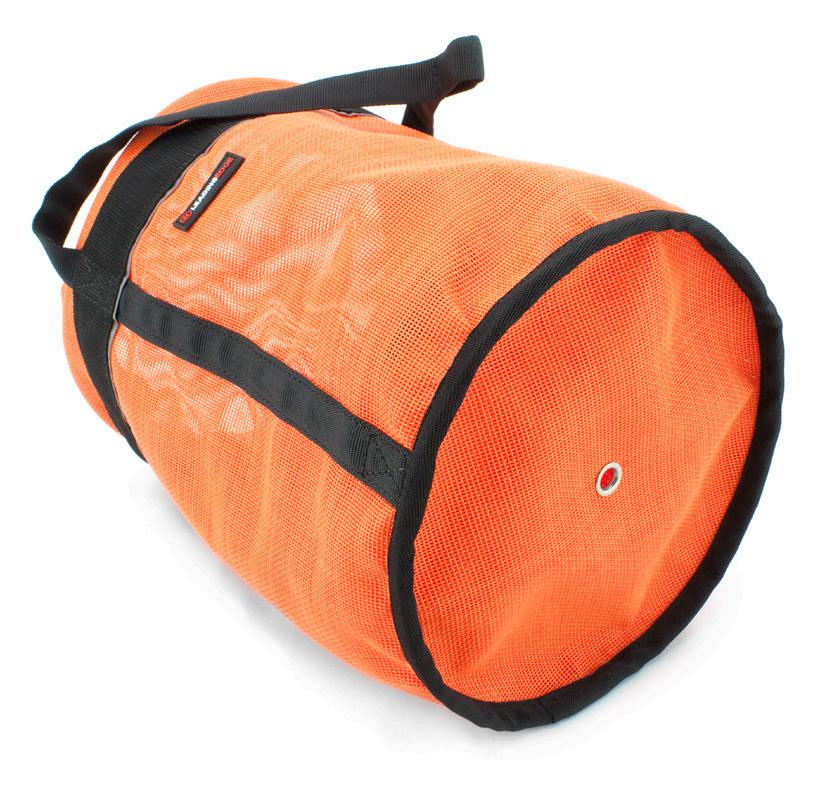
The LV Pro Pig is the ultimate tool and materials bucket, with a number of advancements over the standard LV Pig. Firstly, it has 8 external pockets with dedicated anchorage points, offset to keep your lanyards neatly to one side. Secondly, it has 4 large external reinforced tool frogs, which accommodate large tools of all shapes and sizes. There is also an internal tool frog divider, which structurally supports the bag, separates your contents and allows you to holster a variety of smaller hand tools too. An optional drawstring closure system protects your contents from bad weather and spillage. » Intrinsically safe


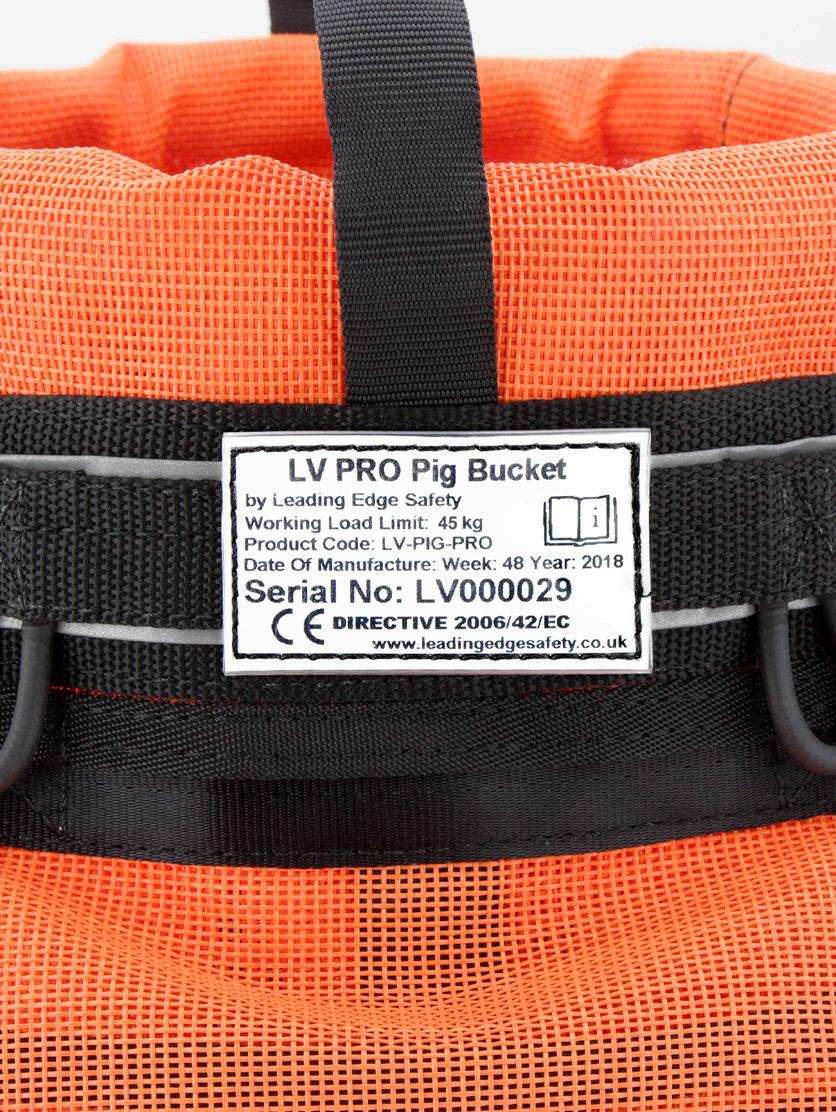


Tool Caddy’s are a familiar general purpose tool bag used in many industries. However, this version has been highly optimised for people who use tools at height. The Caddy is extremely stable with a convenient handle arrangement that makes it easy to carry and place on the ground. It can also be hoisted and suspended via 2 structural D-rings. The top of the bag is reinforced in such a way that it holds its shape and does not collapse in on itself whilst being suspended.

»
»

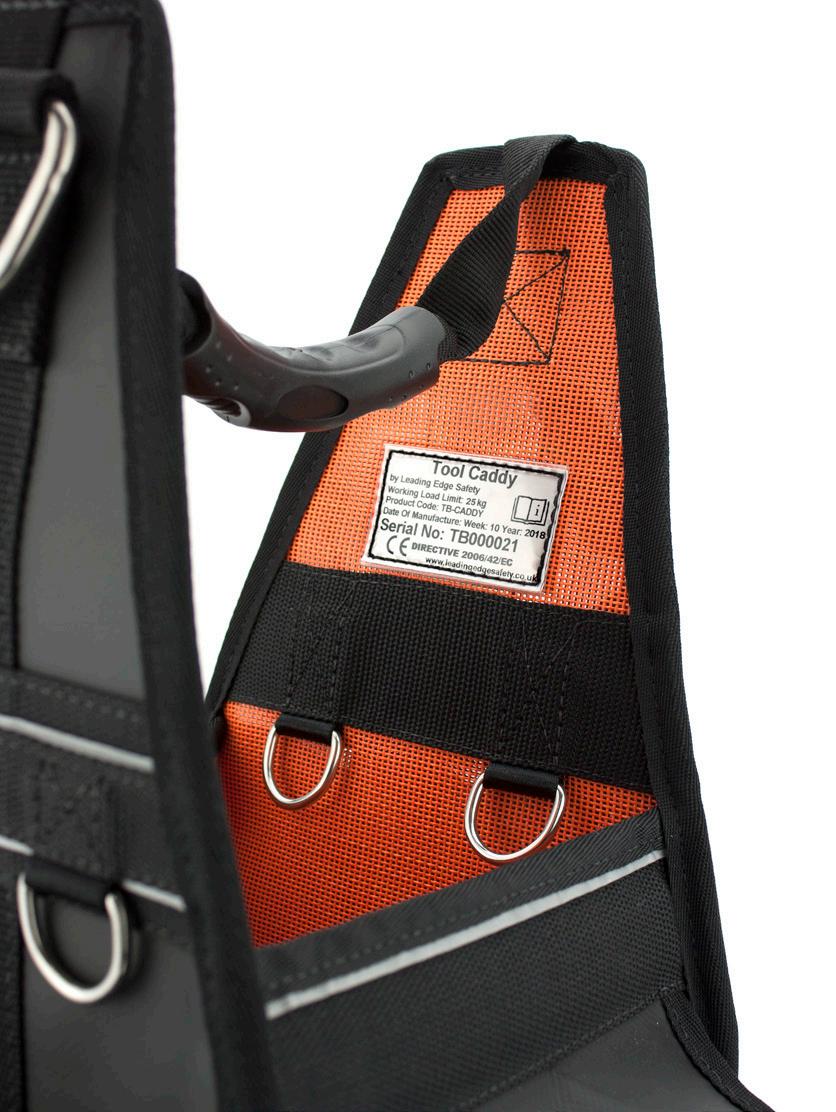

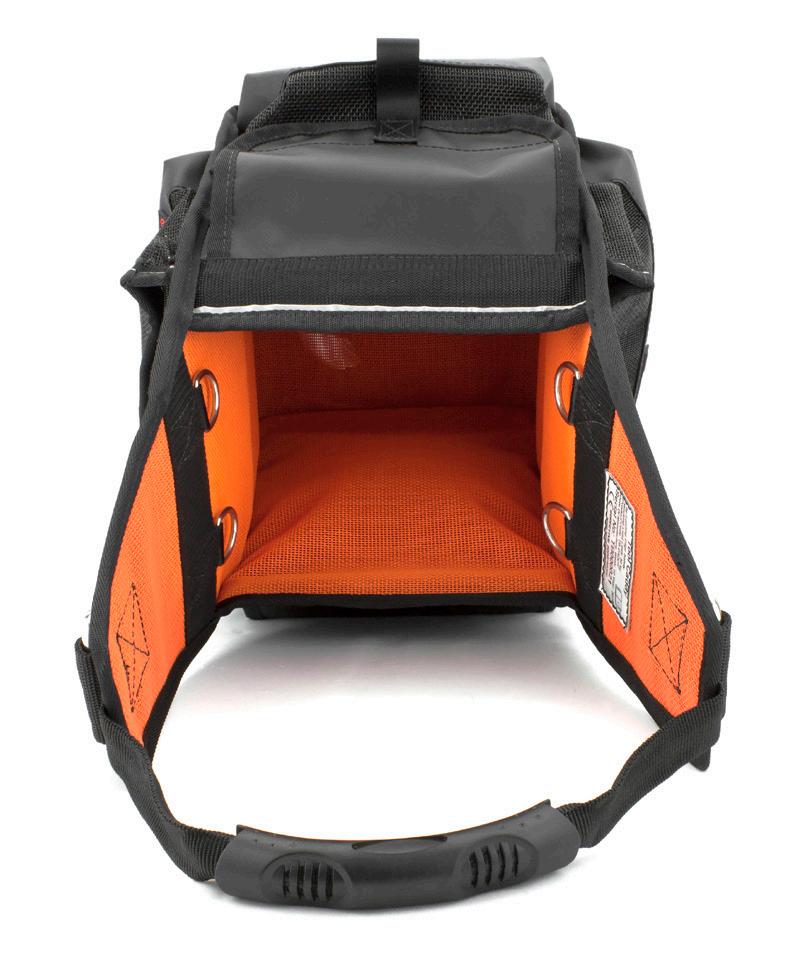
Volume: 33L / Height: 42cm / Width: 28cm / Depth: 28cm / Weight: 1.4kg
The Aerial Bucket is a maximum safety advancement to a traditional canvas bag, for people who work at height in suspension. It is designed to haul materials and tools at height and keep them hanging next to you while you work. A reinforced rim prevents the bag from collapsing in on itself and evenly distributes loading to protect side seams. The base of the bucket cannot be punctured because it is made from a single folded panel of multi-layer mesh with no joins or seams. It is also strengthened by the structural reinforced strap, forming a continuous loop around the body.

» Lifting/Anchorage strap
» 4x D-Ring Tethering points
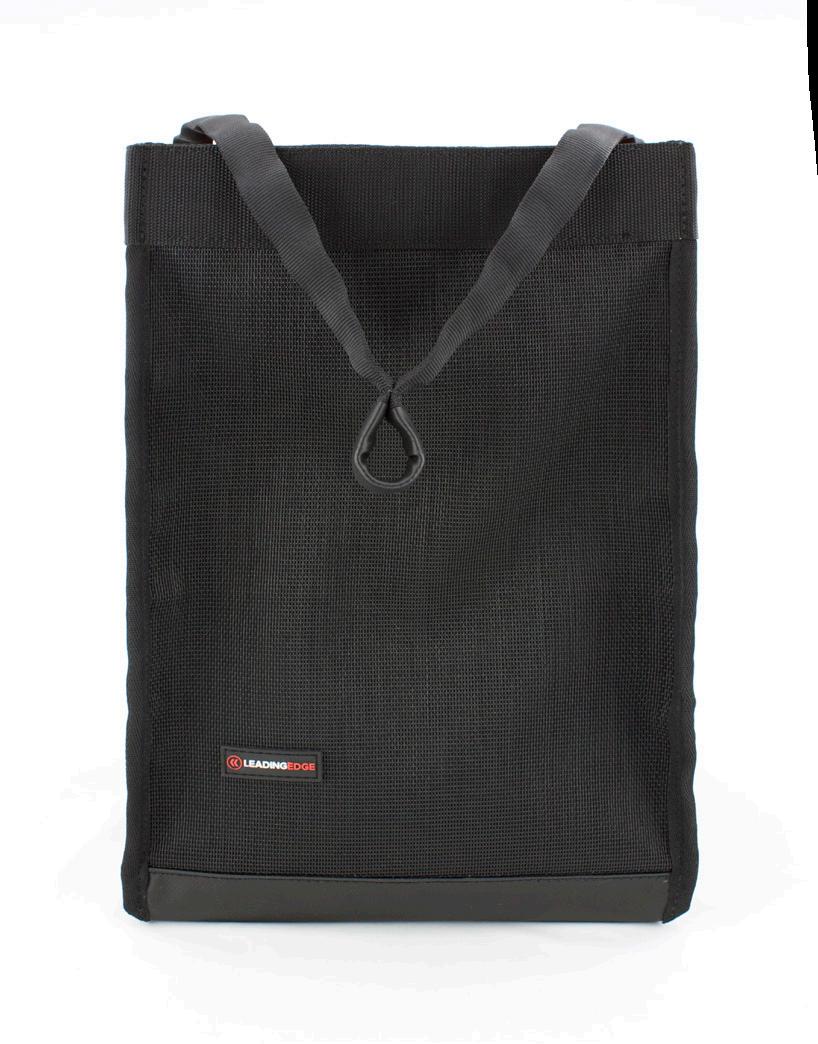

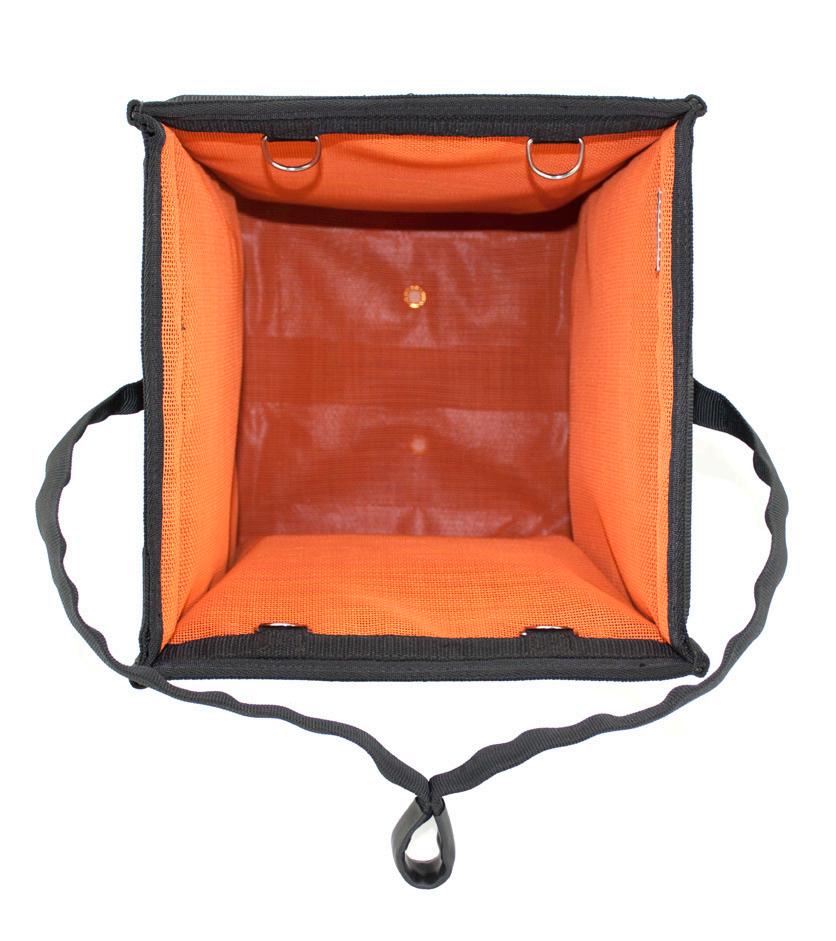

The Pro Aerial bucket has all the benefits of the standard Aerial Bucket but includes extra layers of material and stitching, which almost doubles its WLL capacity. It features a structurally sewn divider that provides further internal support and helps separate your contents. Externally, it also has 4 large pockets with tether points or securing lids.

» 4x Large external pocket
» Lifting/Anchorage strap


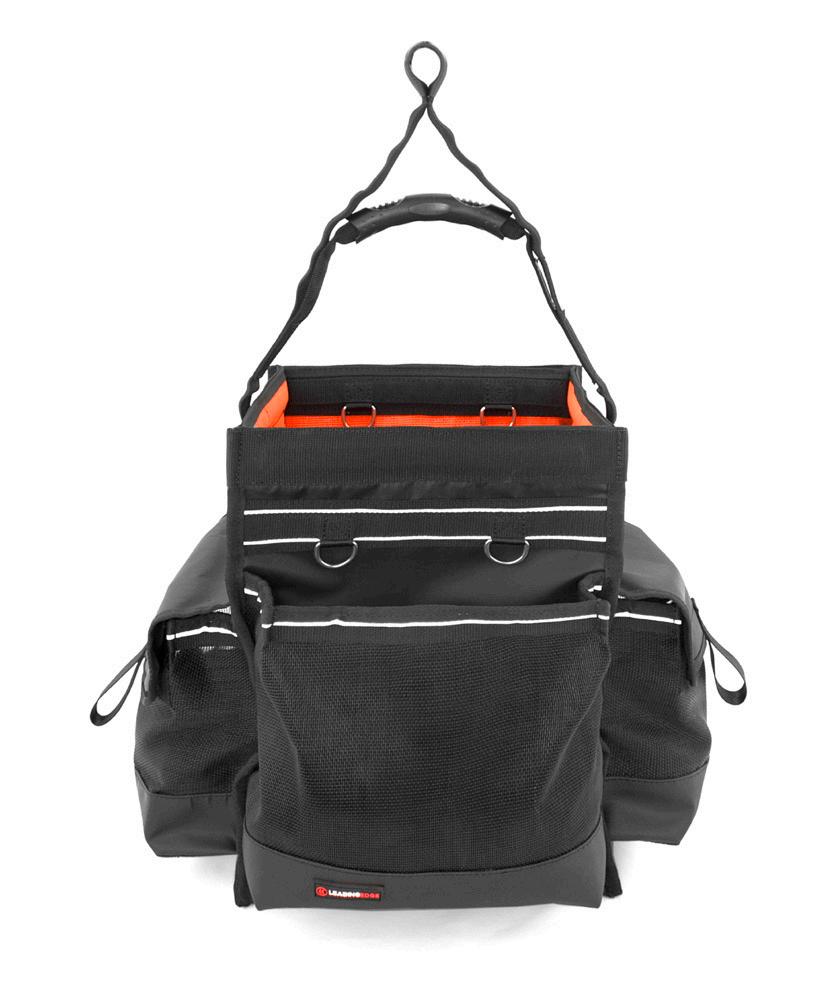
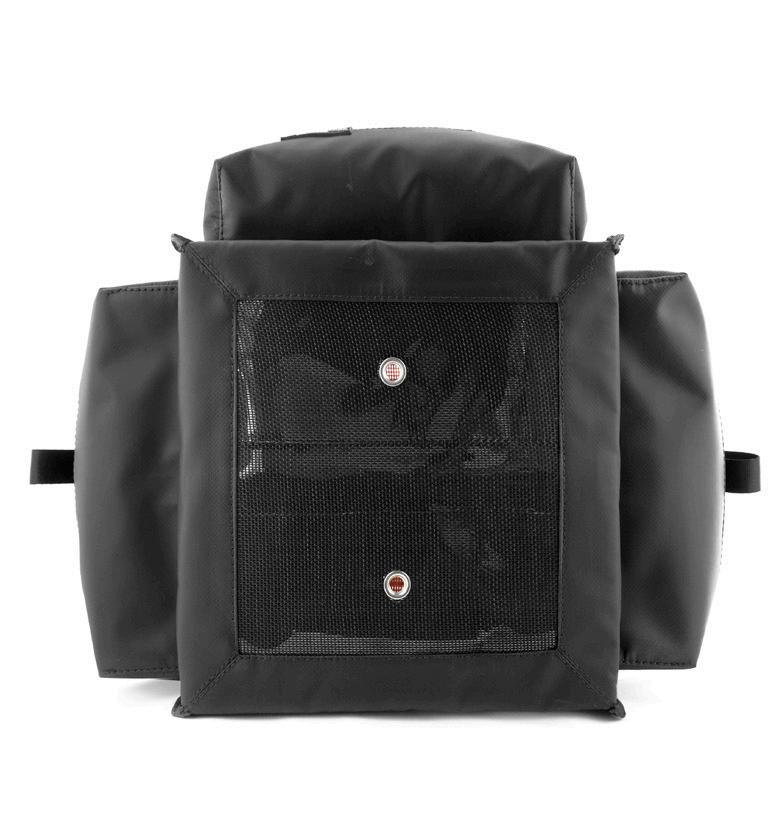
This next generation MEWP bag is designed to retrofit onto hand rails, cherry pickers, booms, scissors lifts, platform etc. providing secure storage for tethered tools. Three bottom bungee cords loop around a lower railing to lock the bag into position. The shape is ideal for carrying a wide variety of items and has two internal dividers to provide extra support and separate contents. The top of the bag has a curved joins to strengthen the seams, making it more durable than the previous generation. »




The advanced Pro MEWP is designed to used as a permanent, dedicated MEWP work bag. Compared to the standard MEWP bag, It offers greater performance, higher WLL and zero deformation under heavy load. This is thanks to a rigid structurally reinforced opening that stops the front from sagging. A full Velcro lid closure gives you additional security and protects bag contents in bad weather conditions. » Structurally reinforced opening
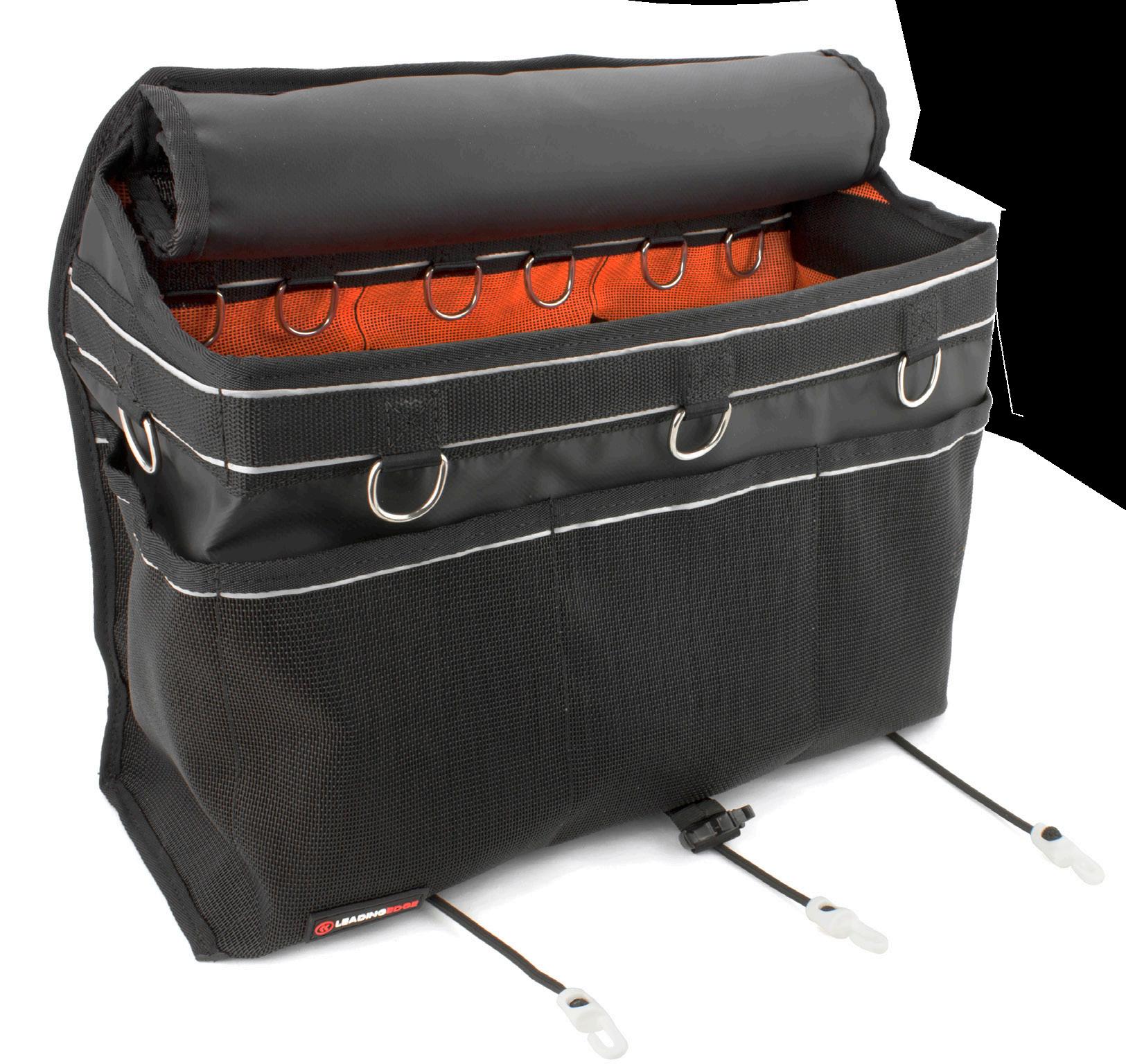




Volume: 153L / Height: 40cm / Width: 62cm / Depth: 62cm / Weight: 5.1kg
The Skybucket is a portable temporary debris and materials catch bag that can be easily carried, hoisted and deployed over an edge to create collective protection. Simply anchor the abrasion-resistant straps horizontally or vertically and lower the bucket into a flush or cantilevered position against a wall or slab. The Skybucket is made from a single folded piece of multi-layer fabric with no seams in the base. The straps are then looped around, supporting the entire body. Inside the bucket is a solid removable base panel designed to dissipate the weight from dropped items. This can be easily replaced at low cost, guaranteeing you a long service life.

» Seamless base design
» Structurally reinforced
» Replaceable base panel
» Lifting/Anchorage straps
» 4x D-Ring Tethering points


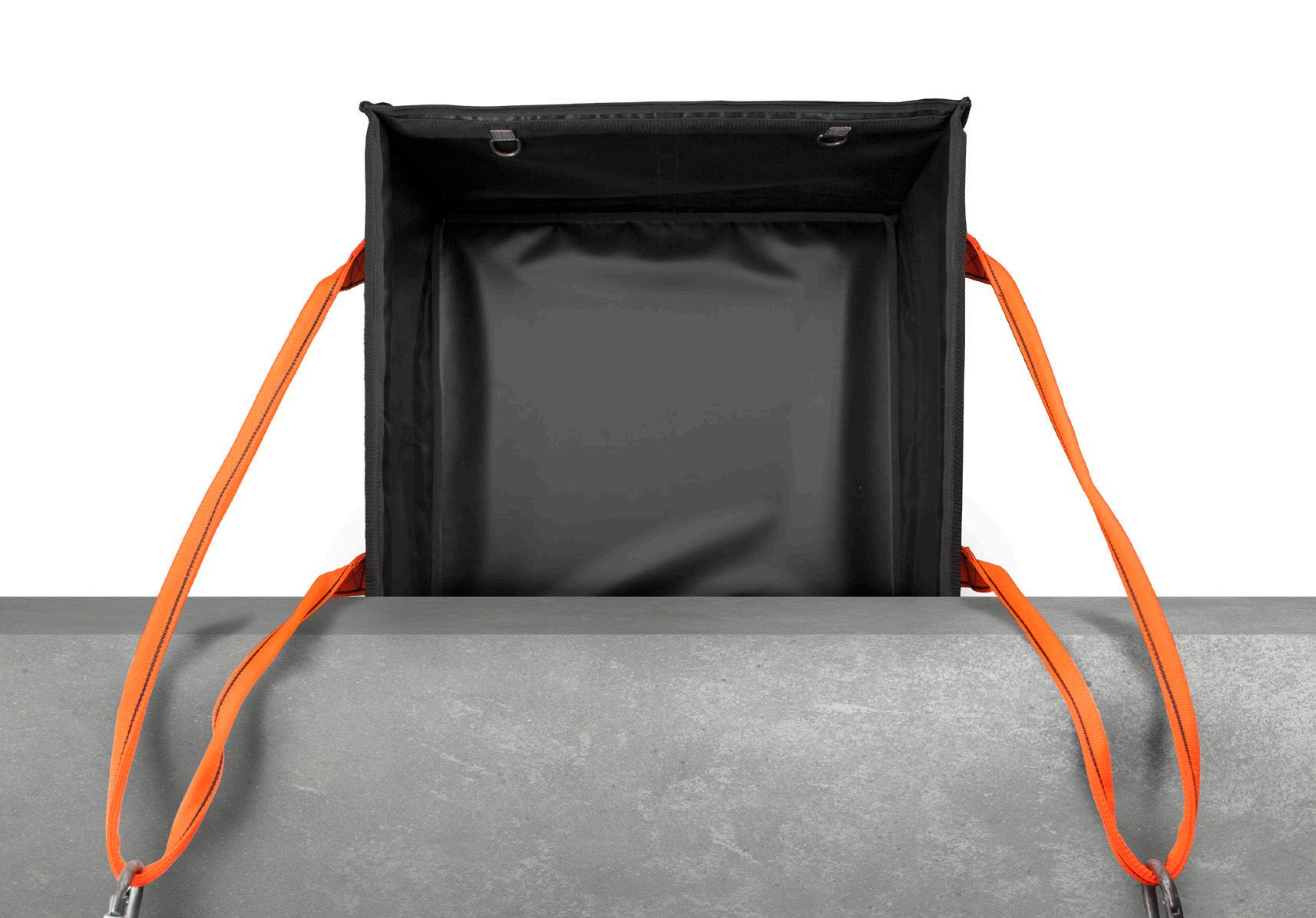
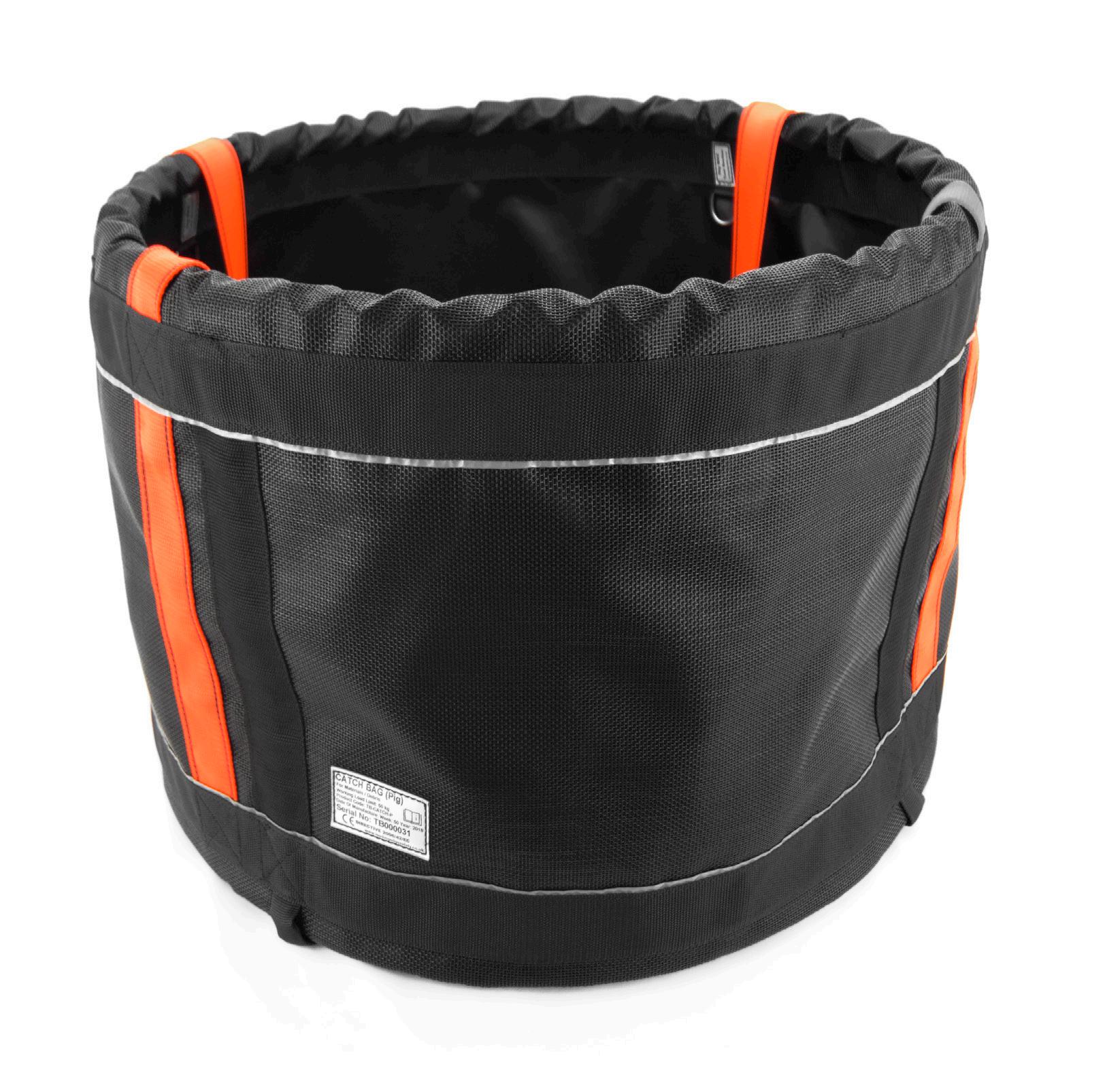
Volume: 120L / Height: 40cm / Diameter: Ø 62cm / Weight: 4.5kg
The Skypig is a portable temporary materials and debris catch bag that is essentially identical to the Skybucket, except for its shape. The cylindrical nature of the Skypig makes it much easier to haul into and manoeuvre around complex structures. This makes it more ideal for people who work suspended in a harness, where the pig can be positioned directly under the work area to create collective protection. » Structurally reinforced


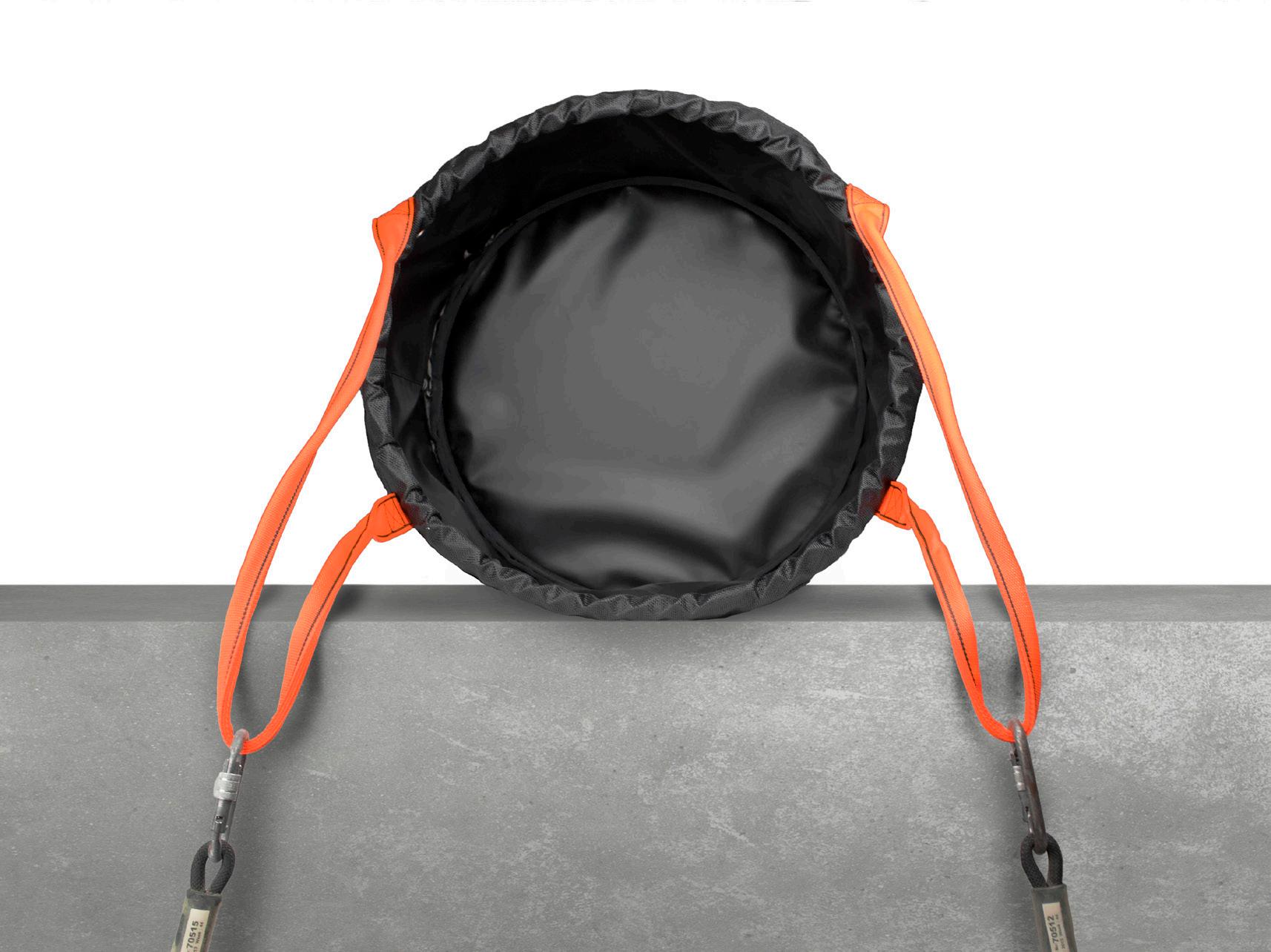

Volume: 287L / Width: 147cm / Weight: 5kg STANDARD LARGE
Volume: 192L / Width: 97cm / Weight: 3.4kg
The Skynet is a portable materials and debris collective protection net, designed to easily retro-fit onto cherry pickers, booms, scissors lifts, platforms and railings. It is made entirely from structural reinforced mesh that massively decreases weight and windage. The wedged shape also reduces surface area, which makes it more aerodynamic and enables it to be folded into a closed position. This means it can be easily transported, deployed and unobtrusively left in place when not in use. Its high capacity is achieved through a single seamless panel supported by two independent webbing straps that run through the body of the whole net.
» Retro-fit » Seamless base
» Collapsible/Portable » Reduced windage
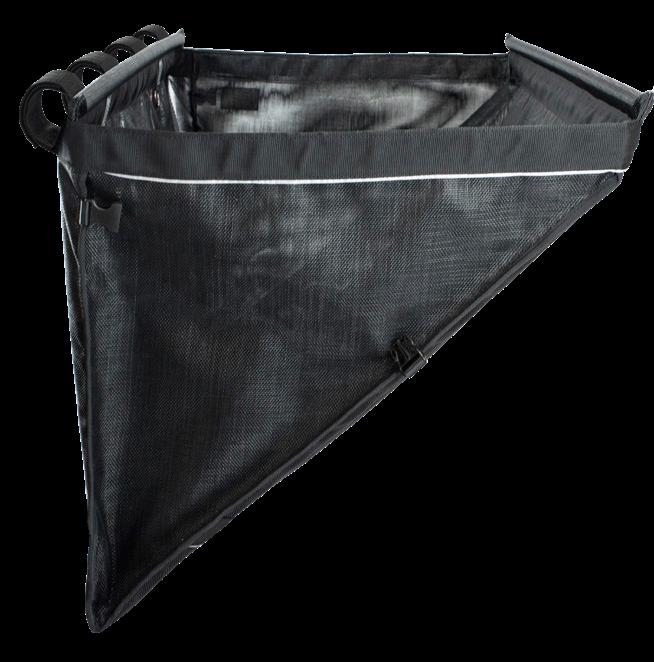


All Leading Edge tool tethering products are CE approved and manufactured under European Council Machine Directive 2006/42/EC.
Product testing follows EU typeexamination procedures set out in ANNEX VI (Module B) of REGULATION (EU) 2016/425 in accordance with BS EN 364.
All certified Leading Edge products boast a whopping 47x safety factor. We purposefully over engineer our products to have greater resilience than a real world scenario would require — this gives them superior in-service lifespan and fully guarantees your safety in daily use.
All tool safety equipment classified as CE approved must surpass two rigorous testing methods.
We attach the product to an anchor point and apply pressure by hanging a weight from it. A product only passes if it is able to withstand the load for a minimum of three minutes without signs of damage or weakening.
We attach a test weight to the product at 2x WLL, elevate it and release it into a Fall Factor 2 to simulate a dropped object event. The product must show no signs of structural failure or release after impact.
For a Working Load Limit (WLL) of 5kg at 47x safety factor a product must surpass an impact force of 235kgs. These forces are achieved with a dynamic test load of 10kg.
5kg 1.2m 2.4m
10kg test mass (2x WLL)
Fall Factor 2 (Total Drop Distance 2.4m) 235kg Impact Force (2304 N)
Three separate products must be dropped three times each for a total of nine drops. All nine drops must pass for a product to gain Dynamic Drop Testing approval.

Need a tool tethering solution but don’t know where to begin?
Kick-start your tethering knowledge, find existing solutions or develop your own bespoke safety product. Start with a free in-house one-to-one with a tethering product specialist.
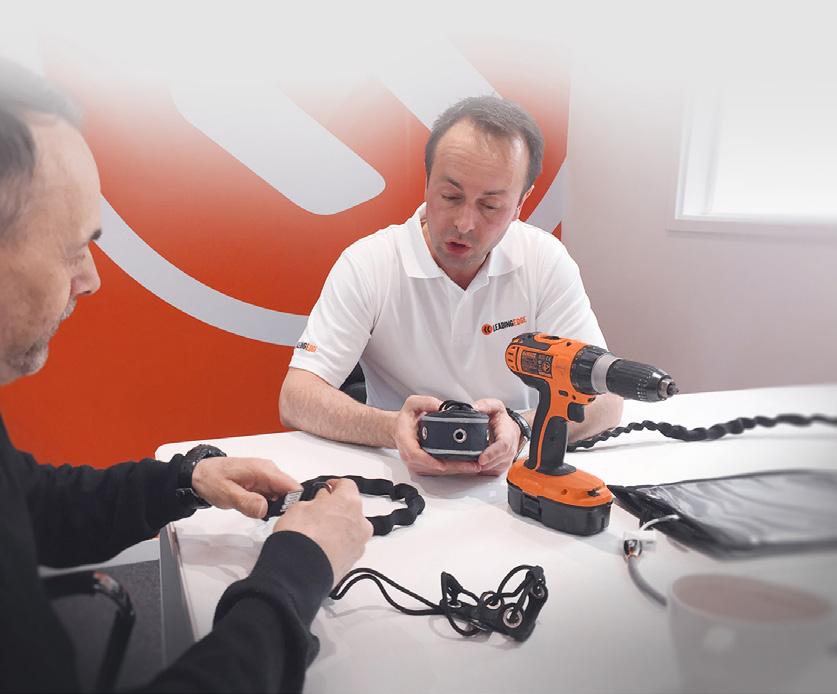


» Find the perfect tethering solution for work at height
» Test drive the latest innovations
» Develop your own custom tool tethering product
» Ask questions face-to-face

Having our own production team means we can cost effectively manufacture bespoke tool tethering products with low volumes. Whether you simply want to make modifications to an existing design or create an entirely new product from scratch, we can work together to configure, test and produce the perfect piece of tool tethering equipment for your needs.

Get started by calling to book a free consultation with a product designer. We’ll discuss your needs, look at various options and begin work on your product.
During the design process we undergo several revisions and testing to fine tune your product for optimum usability, function and safety.
When the final version is signed off it gets handed over to our production staff and can be purchased like a regular products.
Height Rescue

Now part of the Enfield Safety family
Visit www.enfieldsafety.co.uk Call now on 0333 003 5710
